Up early and off the ship for a canal cruise on the Neva River through some of the city’s waterways. We took a short drive from the port to the canal pontoons and boarded our canal boat by 8:15 am and thankfully, this morning, the weather turned out so much better than yesterday! Cool and clear, blue skies and a lap rug… what more could you want.
The canal cruise left from right near the Kunstakamera, which is the St Petersburg science museum, also known as the Cabinet of Curiosities. It was established by Peter the Great (he seems to have done a lot of establishing), in 1727 and it hosts an enormous collection of over 2 million items of anthropological and ethnographical importance.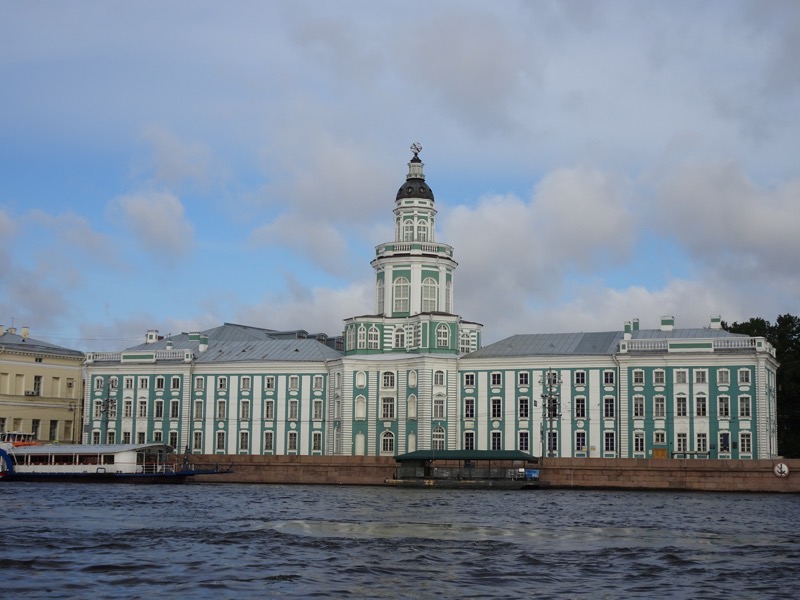 Directly opposite is the amazing Winter Palace, also known as the Hermitage Museum, which has been on my bucket list for some time now… but more on that a bit later. 🙂
Directly opposite is the amazing Winter Palace, also known as the Hermitage Museum, which has been on my bucket list for some time now… but more on that a bit later. 🙂 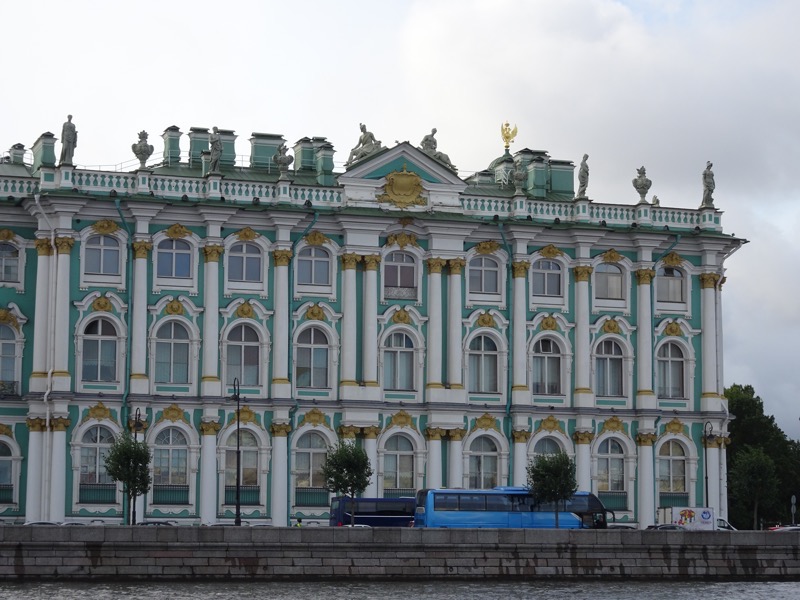 Further down the canal, we finally got a better look at the unique lighthouses that we tried to see last night in the rain – they are known as the Rostral Columns and they are placed on the square directly in front of the Stock Exchange building. At 32 meters tall, the red brick towers were used as lighthouses from 1727 until the mid 19th century, at which the Spit of Vasilyevsky was a functioning port still. They are decorated with prows of conquered ships and mythical sirens.
Further down the canal, we finally got a better look at the unique lighthouses that we tried to see last night in the rain – they are known as the Rostral Columns and they are placed on the square directly in front of the Stock Exchange building. At 32 meters tall, the red brick towers were used as lighthouses from 1727 until the mid 19th century, at which the Spit of Vasilyevsky was a functioning port still. They are decorated with prows of conquered ships and mythical sirens.
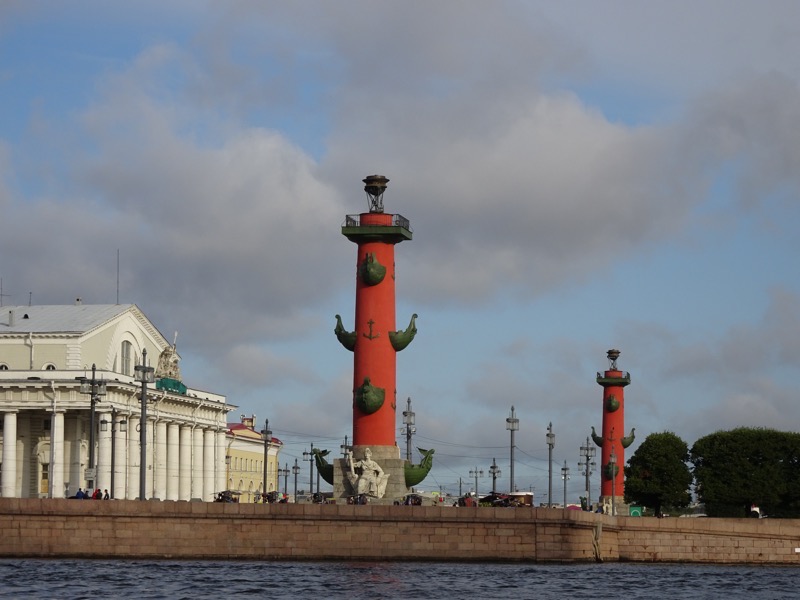
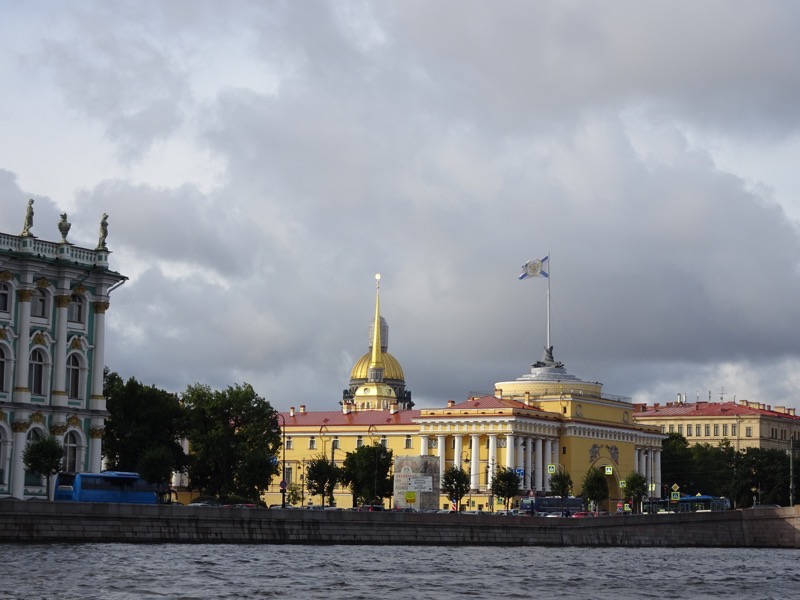 The ‘Little Mansion’ built by Catherine to entertain her private guests along side the enormous Winter Palace.
The ‘Little Mansion’ built by Catherine to entertain her private guests along side the enormous Winter Palace.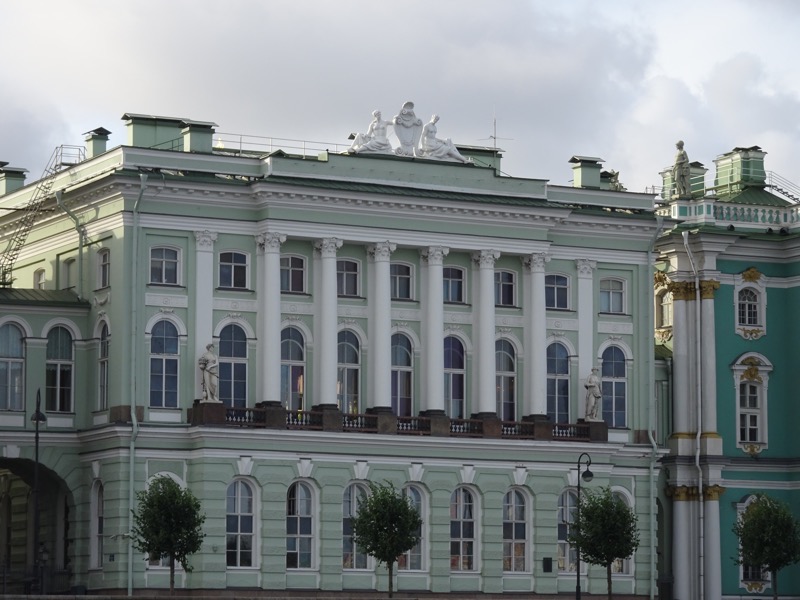 St Peter and Paul’s Fortress from the canal…
St Peter and Paul’s Fortress from the canal…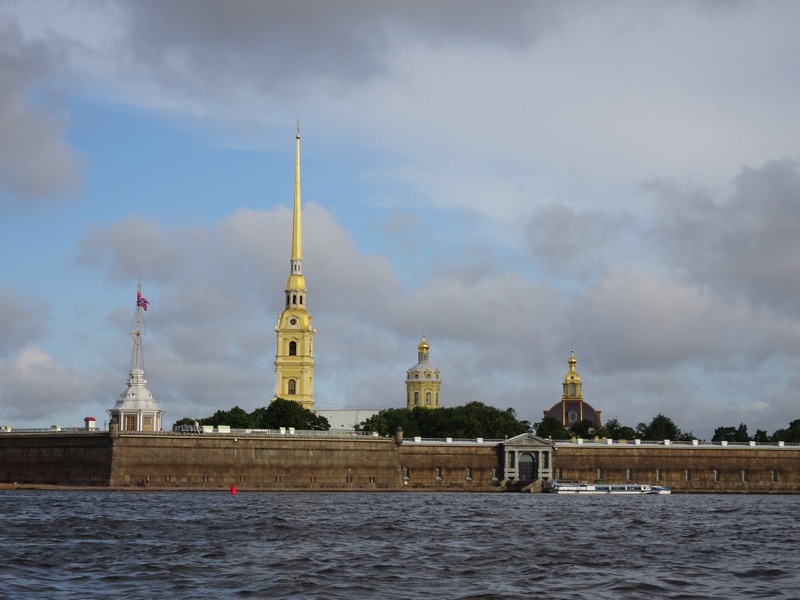 St Petersburg has many beautiful bridges – over 500, according to Maria, and the widest is a huge 99m wide. St Petersburg has so many canals and bridges, that many have dubbed the city, ‘The Venice of the North’… though we are reliably informed that Russians prefer to think of Venice, as ‘The St Petersburg of the South’, because SPB has far more bridges than Venice!
St Petersburg has many beautiful bridges – over 500, according to Maria, and the widest is a huge 99m wide. St Petersburg has so many canals and bridges, that many have dubbed the city, ‘The Venice of the North’… though we are reliably informed that Russians prefer to think of Venice, as ‘The St Petersburg of the South’, because SPB has far more bridges than Venice!
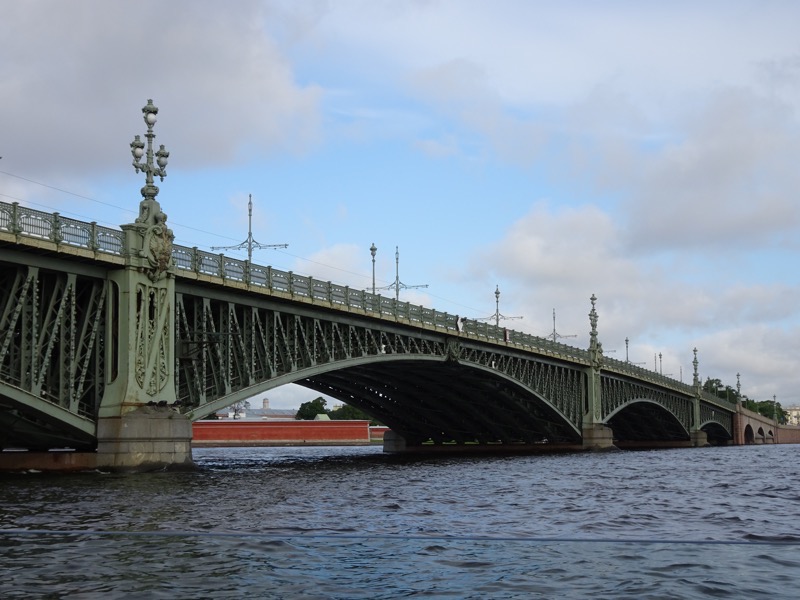
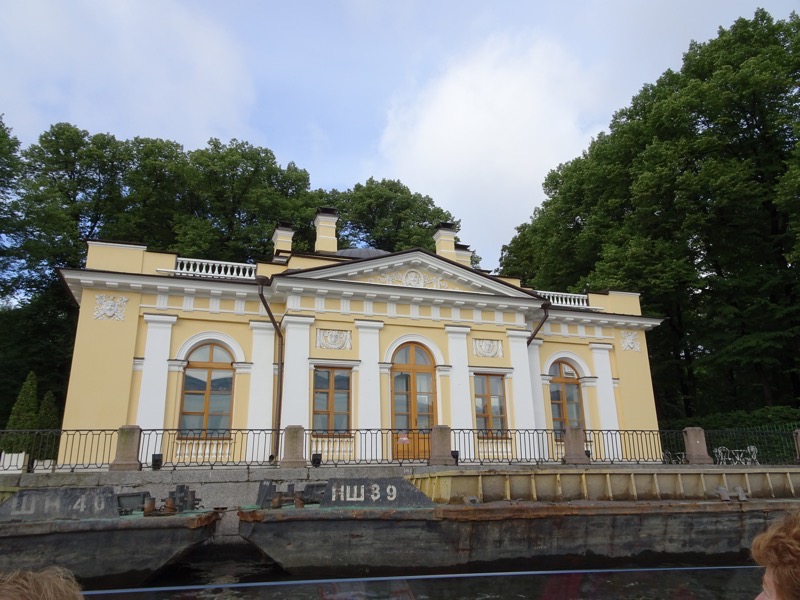 Some beautiful 18th century buildings… the names and purpose of each, now completely escape me barely 12 hours later!
Some beautiful 18th century buildings… the names and purpose of each, now completely escape me barely 12 hours later!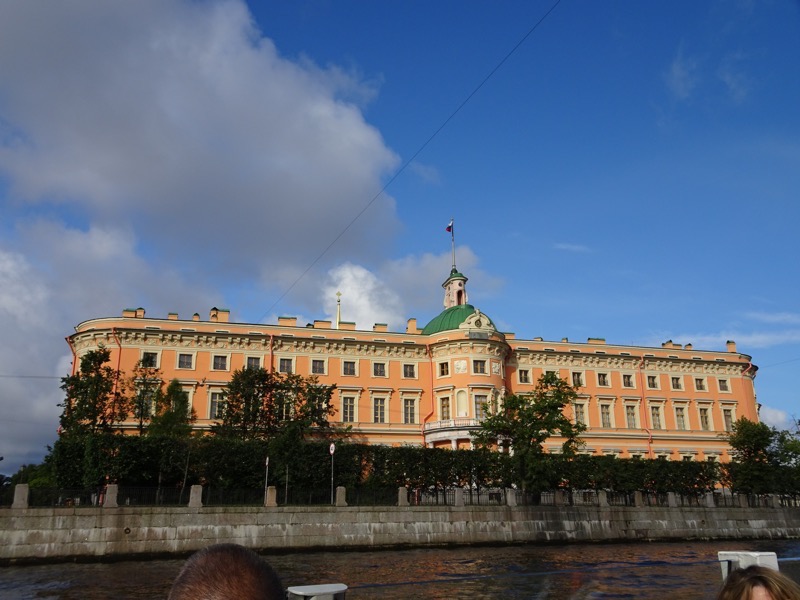 The Stock Exchange building.
The Stock Exchange building.
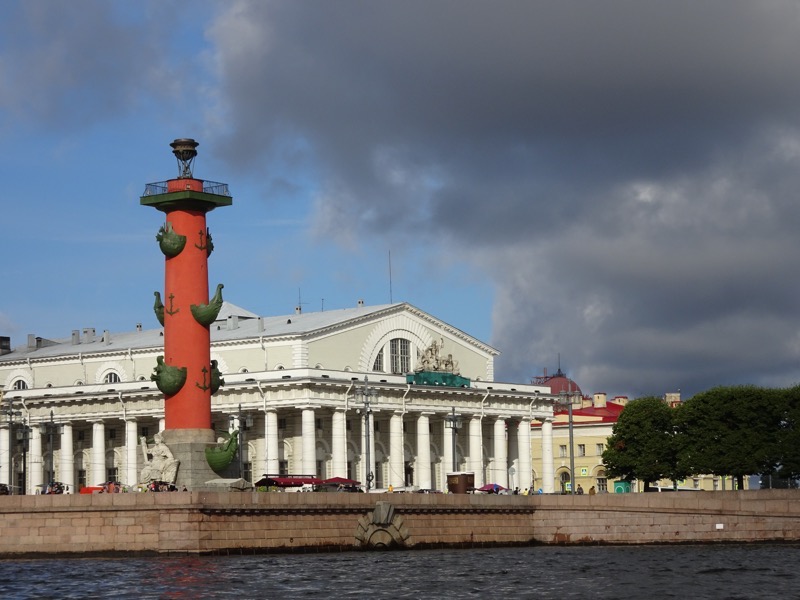 One of the many statues lining the canal.
One of the many statues lining the canal.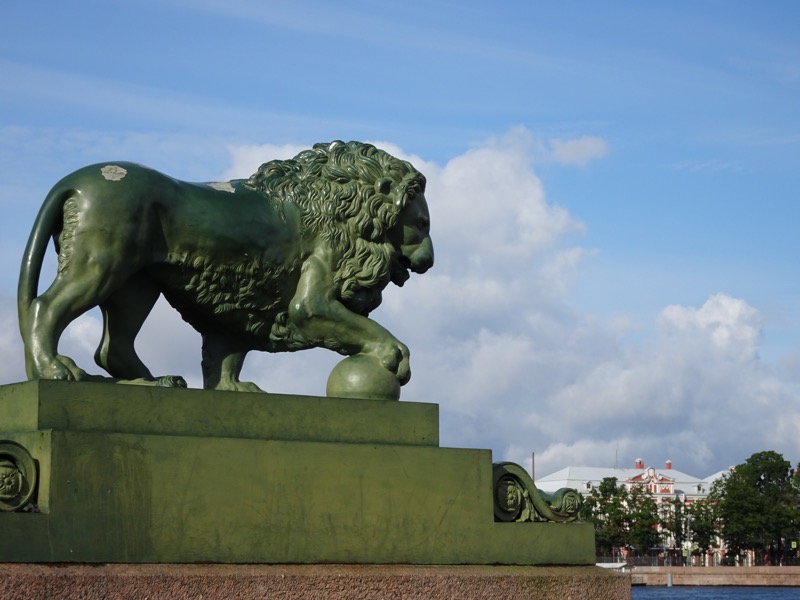
Next stop was the State Hermitage Museum, which is one of the largest and most prestigious museums of art and culture in the world, let alone just Russia. It was started in 1764 when Empress Catherine the Great acquired an impressive number of paintings and objet d’art from a Berlin art merchant by the name of Johann Gotzkowsky. The museum has been open to the public since 1852, and other than the taint from it featuring heavily in an unfortunate and completely traumatizing piece of cinematic ‘art’, “The Russian Ark”, the Hermitage has been somewhere I have been wanting to visit since studying visual arts in the mid-90s.
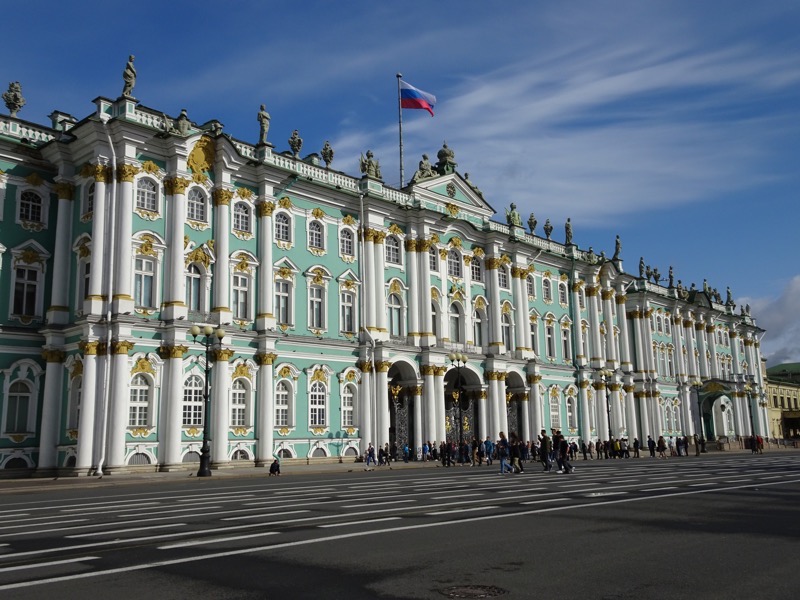
The Hermitage gets its name from, a ‘dwelling of a hermit or recluse’… Because naturally, this elaborate palace is the type of place you build when you want to withdraw from society and spend some time on your own! The building was originally given this name because of its exclusivity – Catherine only allowed her family, and her favourite grand duke courtiers to visit.
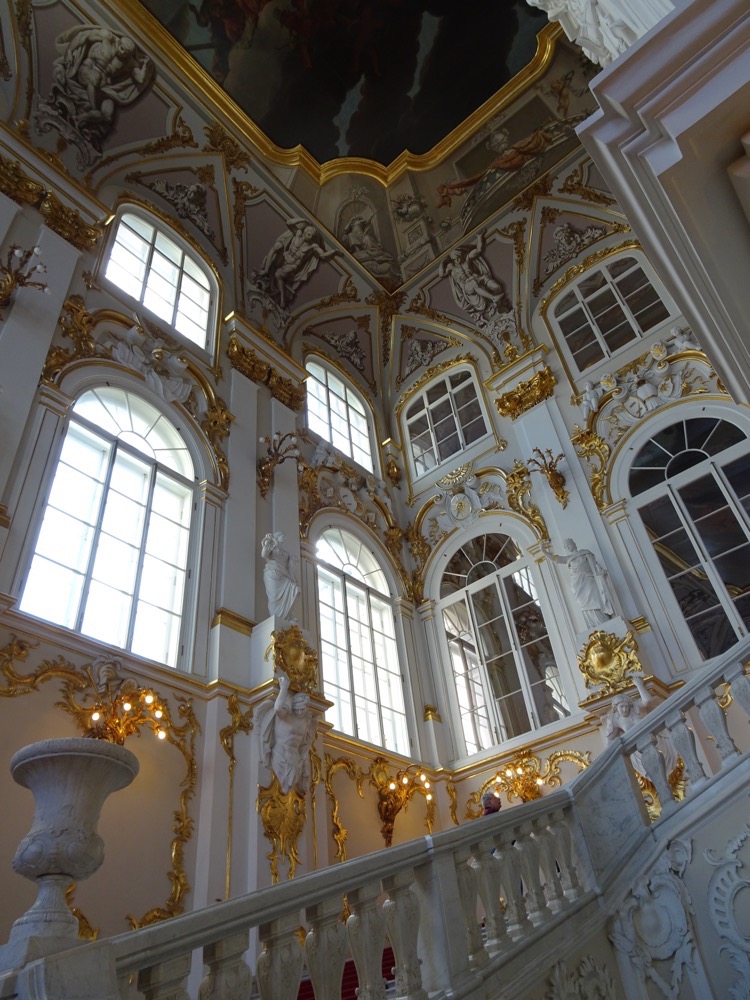
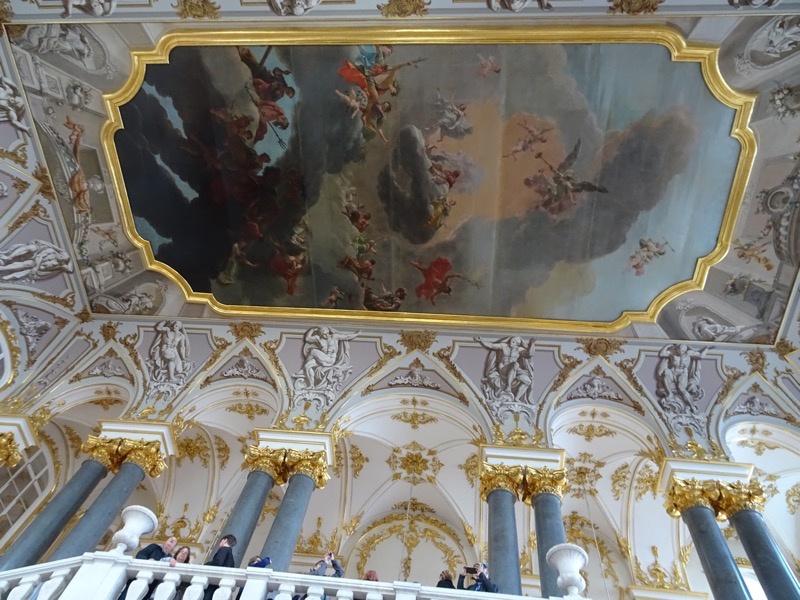 Of its extensive collections (Egyptians antiquities, classical antiquities, pre historic artworks, jewellery and decorative arts, Italian Renaissance paintings, Spanish fine art, Dutch Golden Age works, Flemish masters, Russian Art, French Neoclassical art, Impressionists, Modernists, German Romantics, and Lord knows what else!), only a very small portion is on permanent display. The collection, which contains the largest collection of paintings in the world, is comprised of over three million items, of which one-third of that is made up of coins, historical documents, and medals. The palace itself is spectacular…
Of its extensive collections (Egyptians antiquities, classical antiquities, pre historic artworks, jewellery and decorative arts, Italian Renaissance paintings, Spanish fine art, Dutch Golden Age works, Flemish masters, Russian Art, French Neoclassical art, Impressionists, Modernists, German Romantics, and Lord knows what else!), only a very small portion is on permanent display. The collection, which contains the largest collection of paintings in the world, is comprised of over three million items, of which one-third of that is made up of coins, historical documents, and medals. The palace itself is spectacular…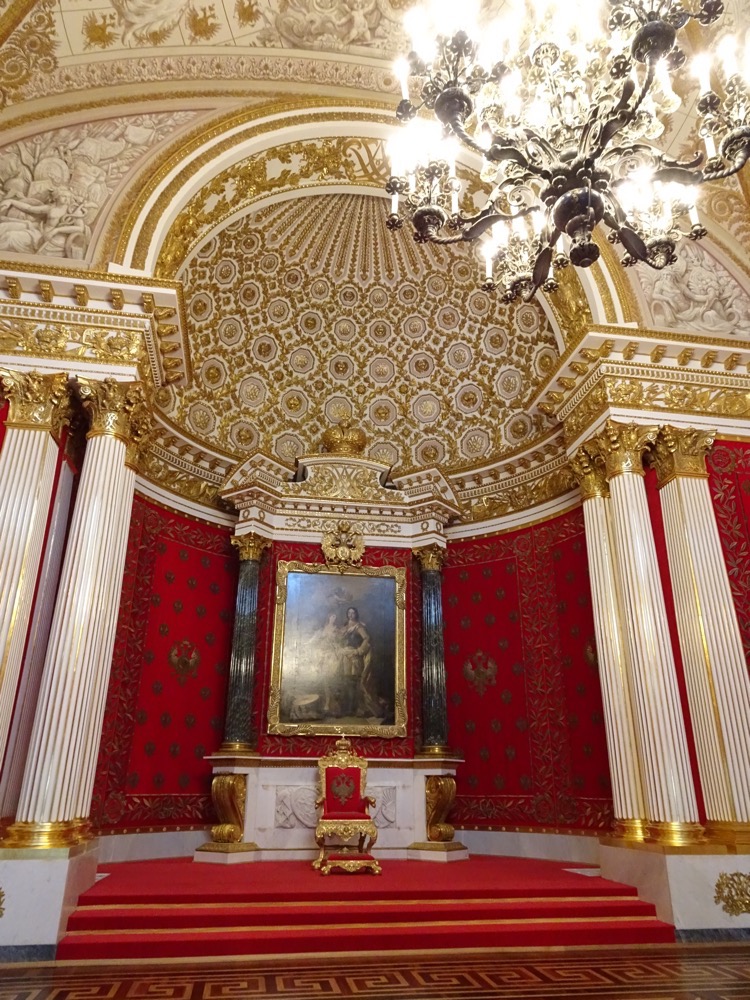
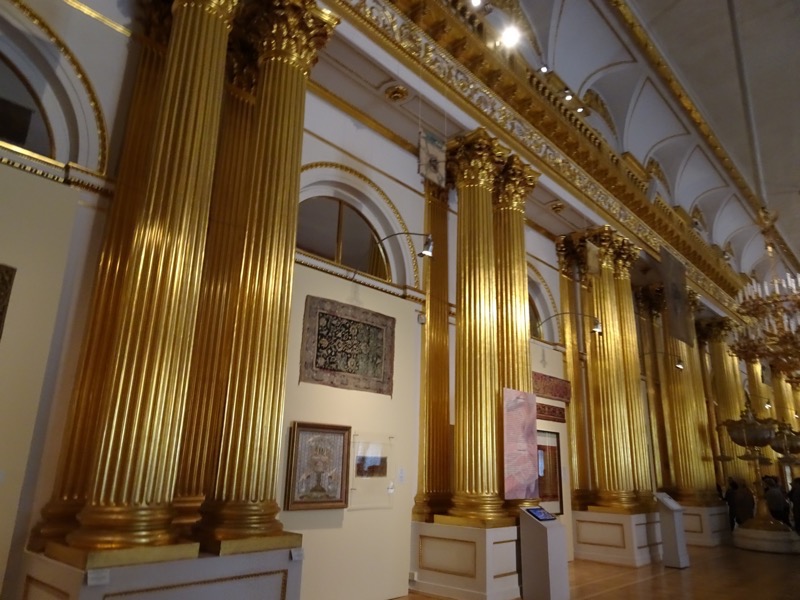 The Military Gallery – contains 330 portraits of generals who took part in the Patriotic War of 1812, all were painted by English artist, George Dawe and his assistants.
The Military Gallery – contains 330 portraits of generals who took part in the Patriotic War of 1812, all were painted by English artist, George Dawe and his assistants.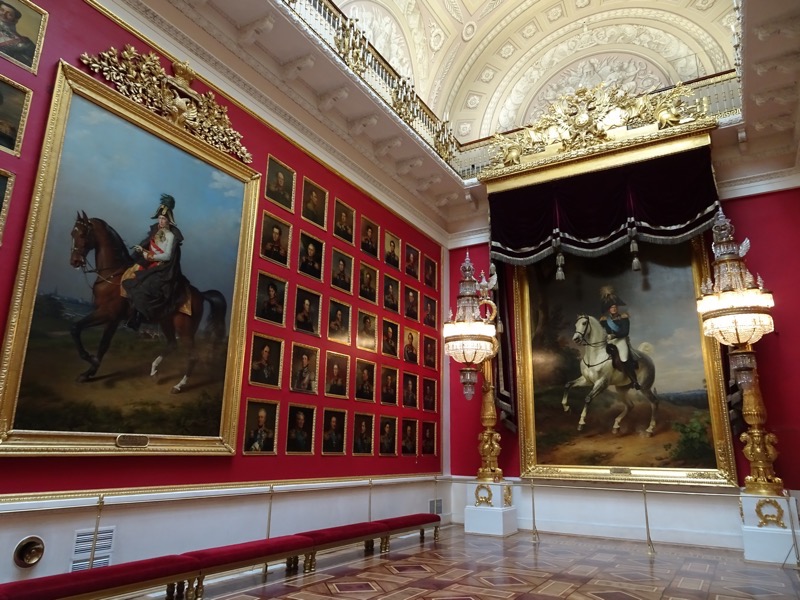 Regalia of a member of the Order of the Garter.
Regalia of a member of the Order of the Garter.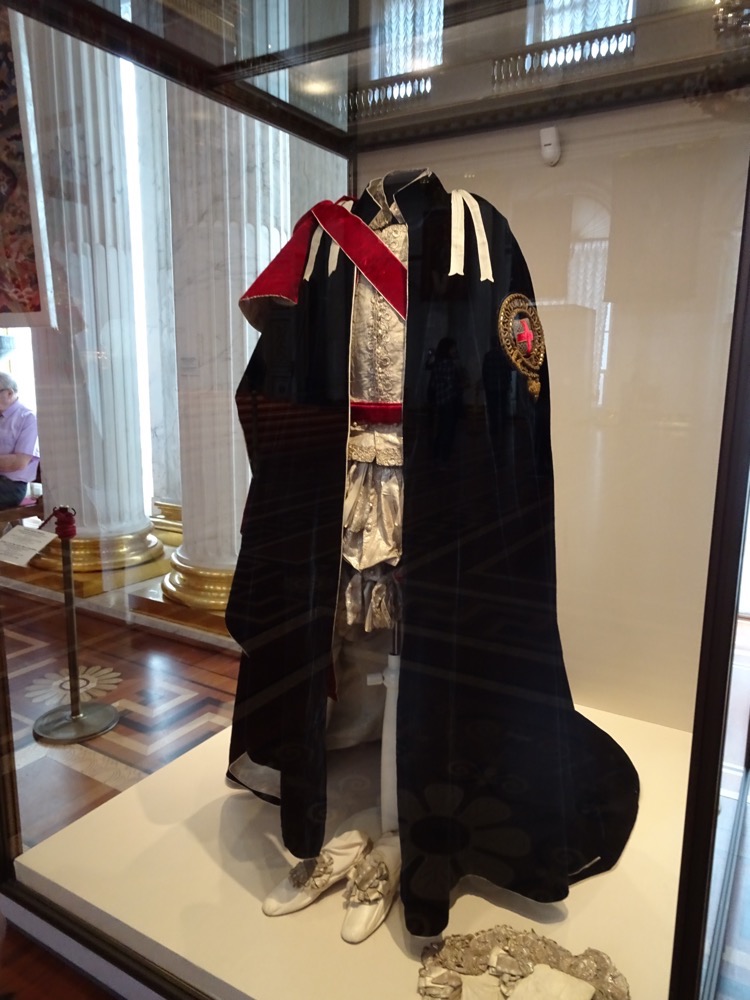
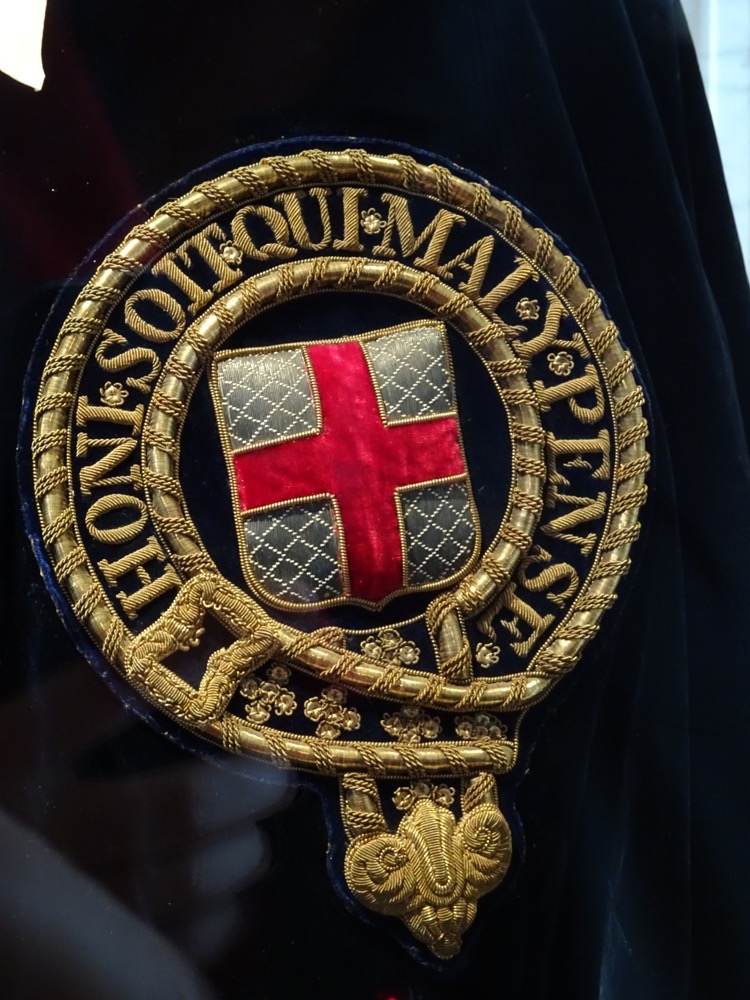 German herald’s tabard, c.1520.
German herald’s tabard, c.1520.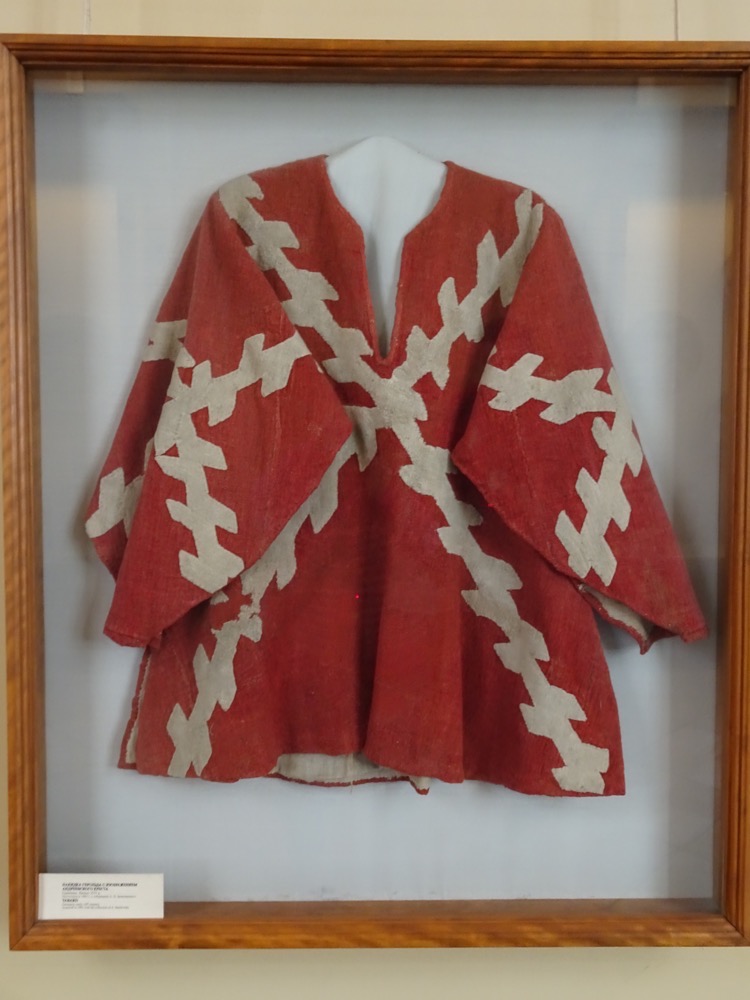 11th century ivory mirror case.
11th century ivory mirror case.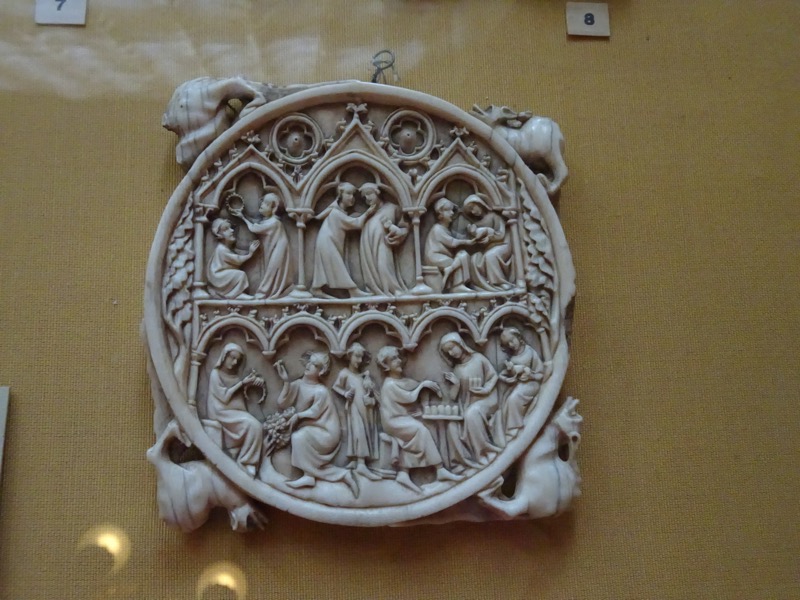 Limoge enamels.
Limoge enamels.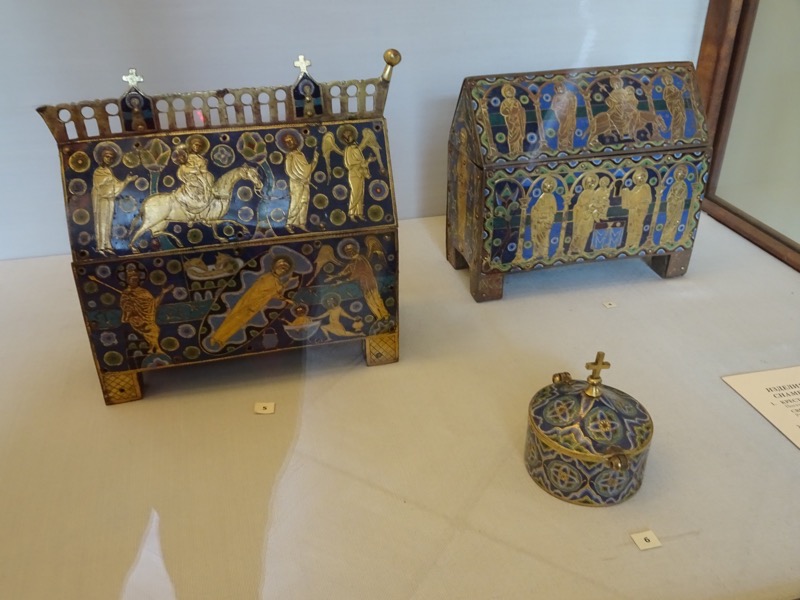
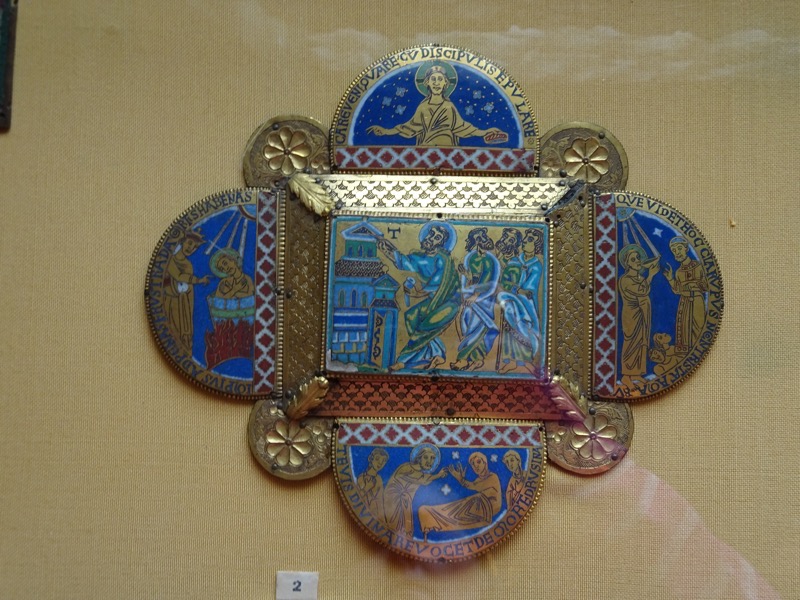 Mosaic floor panel, done in the Italian style copied from the Vatican.
Mosaic floor panel, done in the Italian style copied from the Vatican.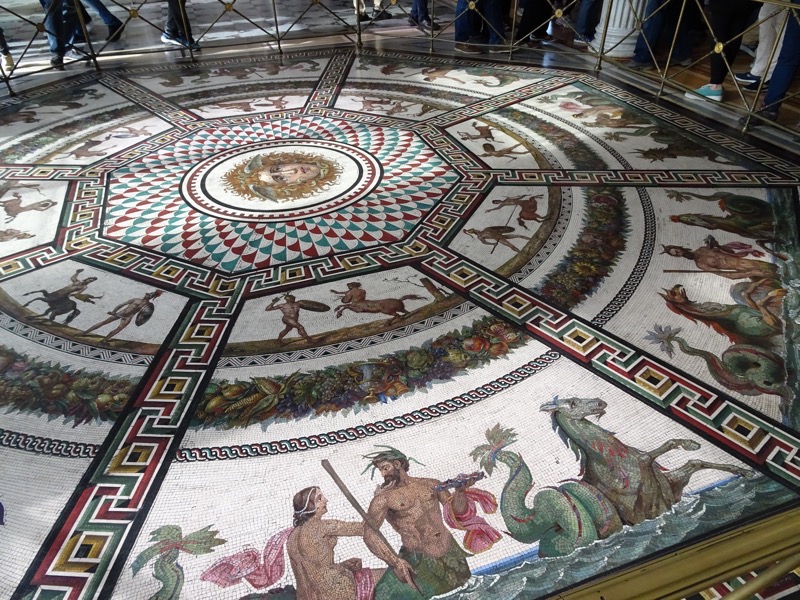
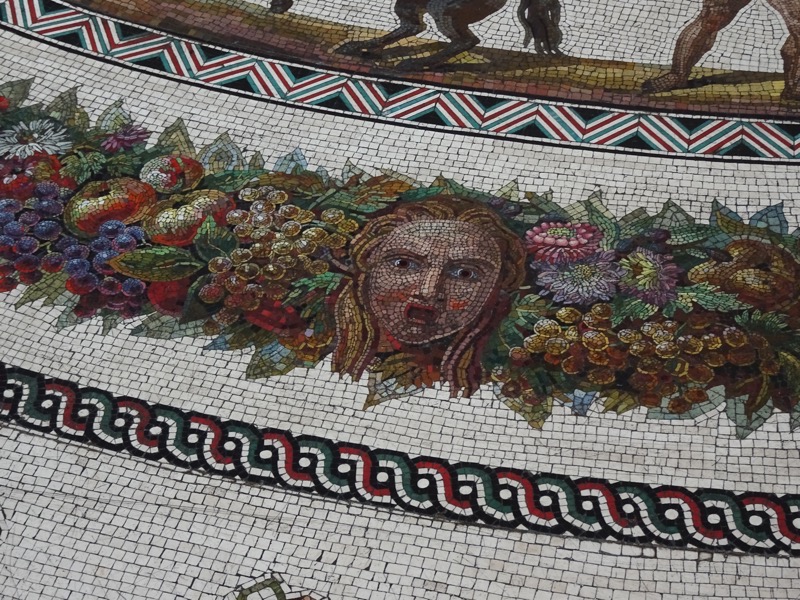 The private courtyard of Catherine the Great.
The private courtyard of Catherine the Great.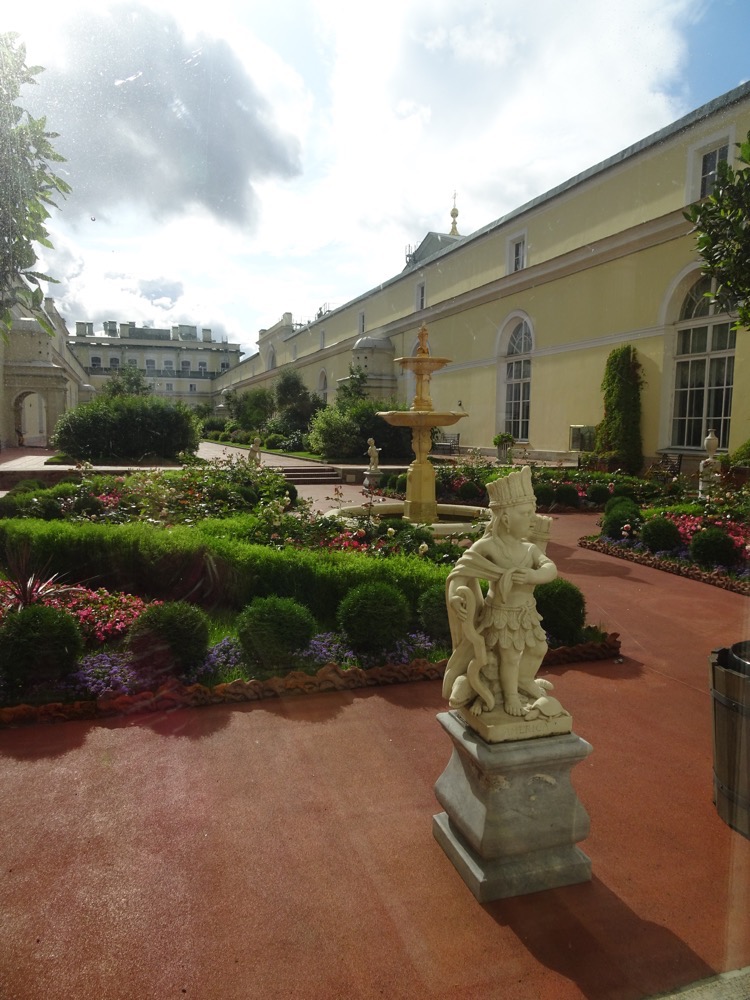 Medieval chairs, 12th-13th century.
Medieval chairs, 12th-13th century.
A Raphaelo here…
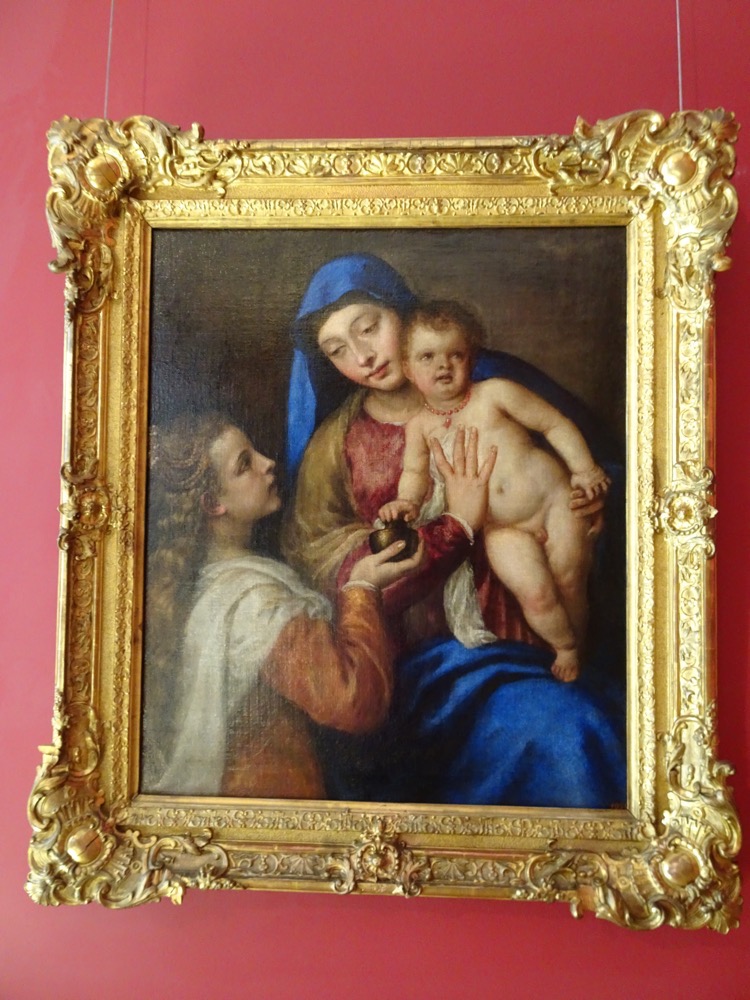 Another one there…
Another one there…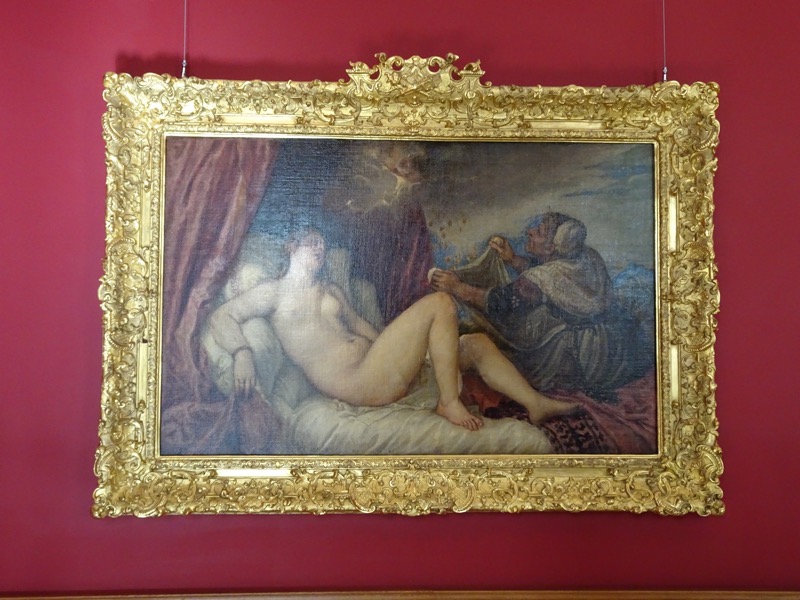 As we gallop on through the museum, Maria points out a ‘disciple-ah of zee school-a ova fine-a artses’ who ees painting-a zee copy-a of one-a of zee paintings’, but somehow she fails to mention that the lady is painting from an original van der Weyden as we skip on by! Masterpieces at every turn!
As we gallop on through the museum, Maria points out a ‘disciple-ah of zee school-a ova fine-a artses’ who ees painting-a zee copy-a of one-a of zee paintings’, but somehow she fails to mention that the lady is painting from an original van der Weyden as we skip on by! Masterpieces at every turn!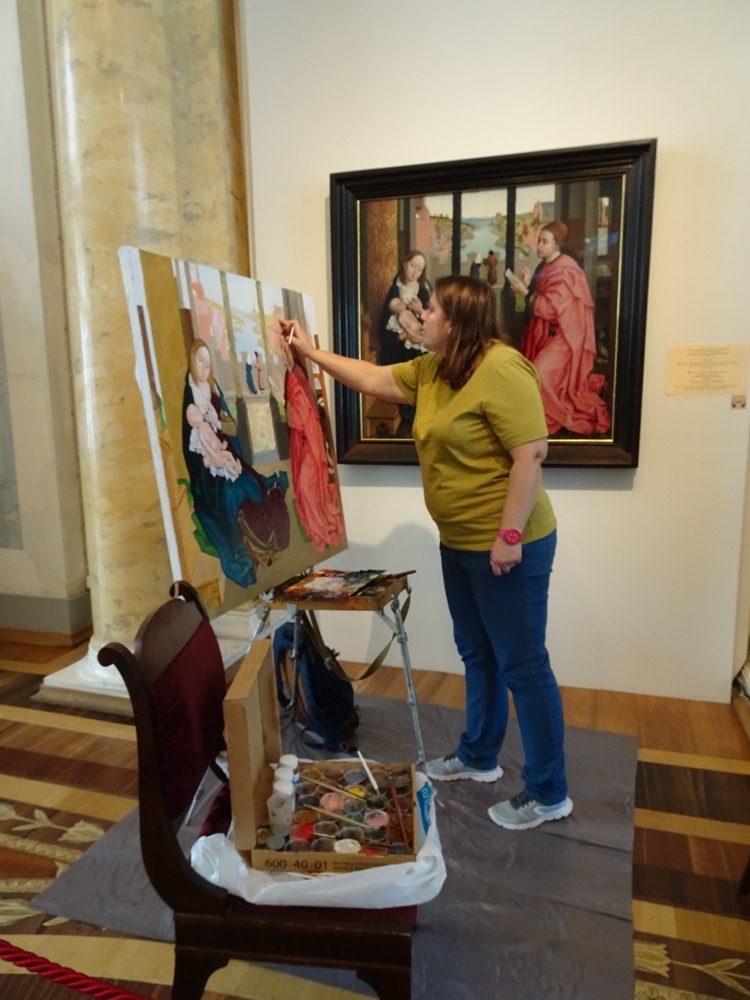 Some 16th century textiles…
Some 16th century textiles…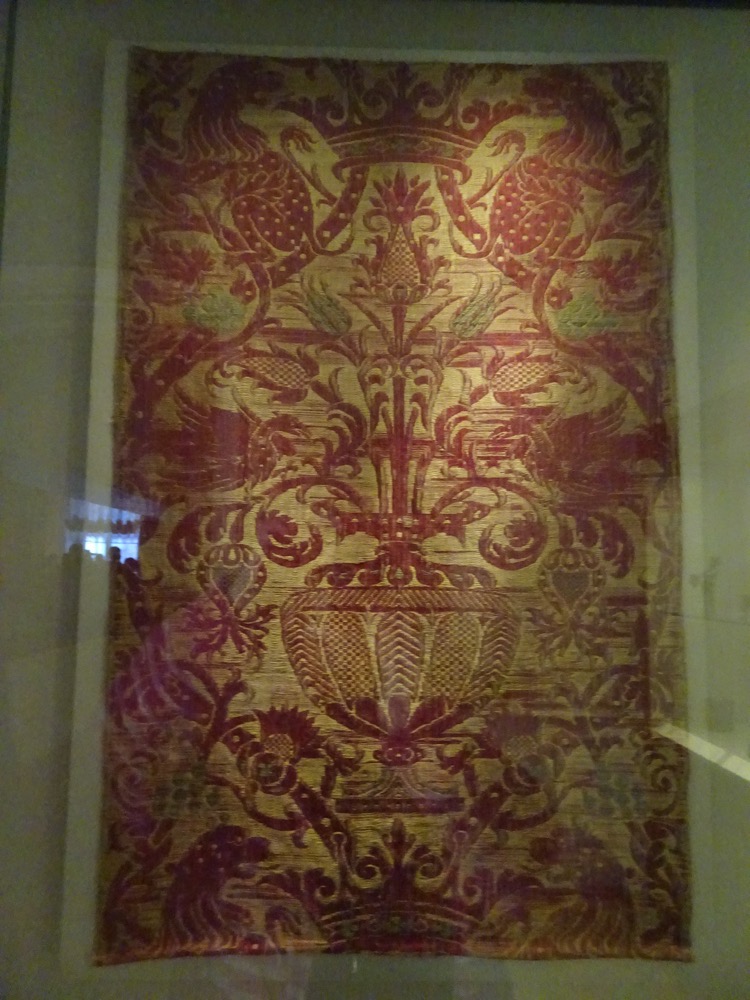 Games box. Ebony, with silver and ivory inlay. c1620.
Games box. Ebony, with silver and ivory inlay. c1620.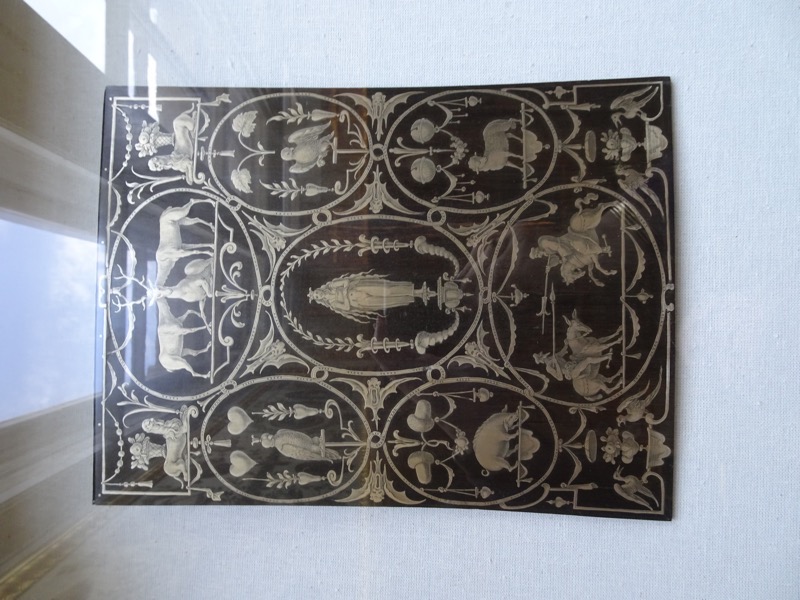
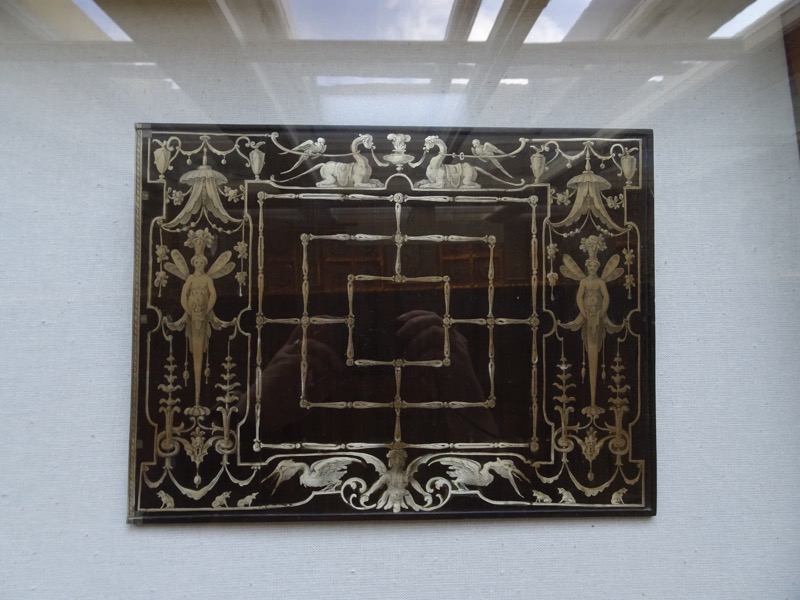 Passageway elaborately painted in the style of the Vatican’s Passeto di Borgo… seriously, this is uncanny. I was at the Vatican in July last year, and the style is very very similar.
Passageway elaborately painted in the style of the Vatican’s Passeto di Borgo… seriously, this is uncanny. I was at the Vatican in July last year, and the style is very very similar.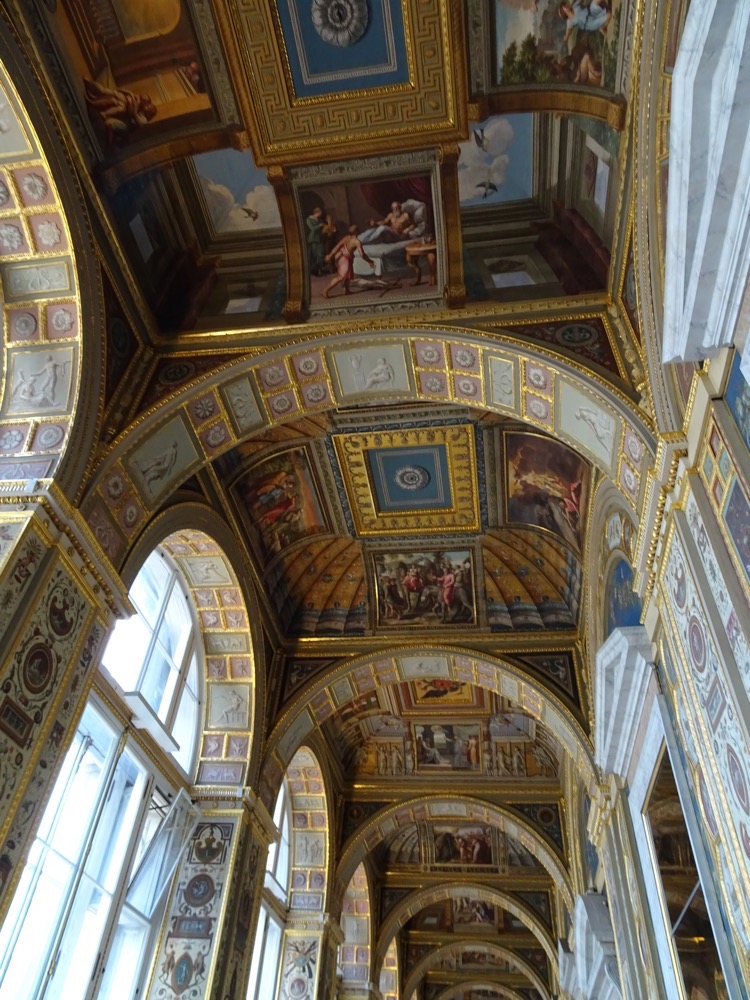 Skipped through an entire room of Majolica ware (can email more pics to anyone who is interested).
Skipped through an entire room of Majolica ware (can email more pics to anyone who is interested).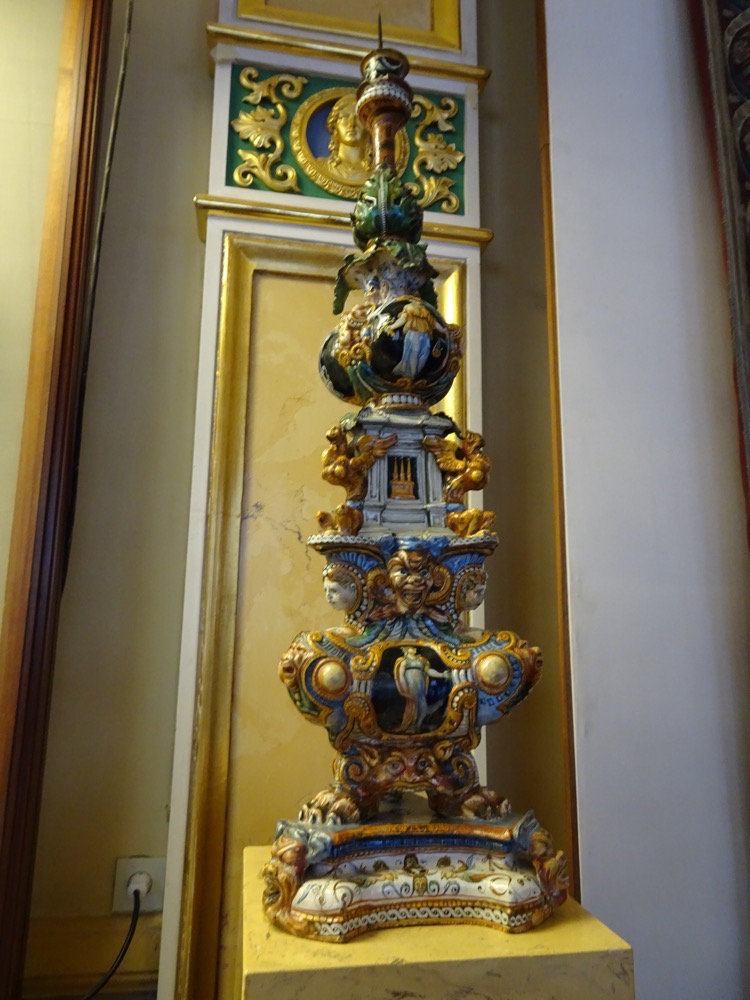
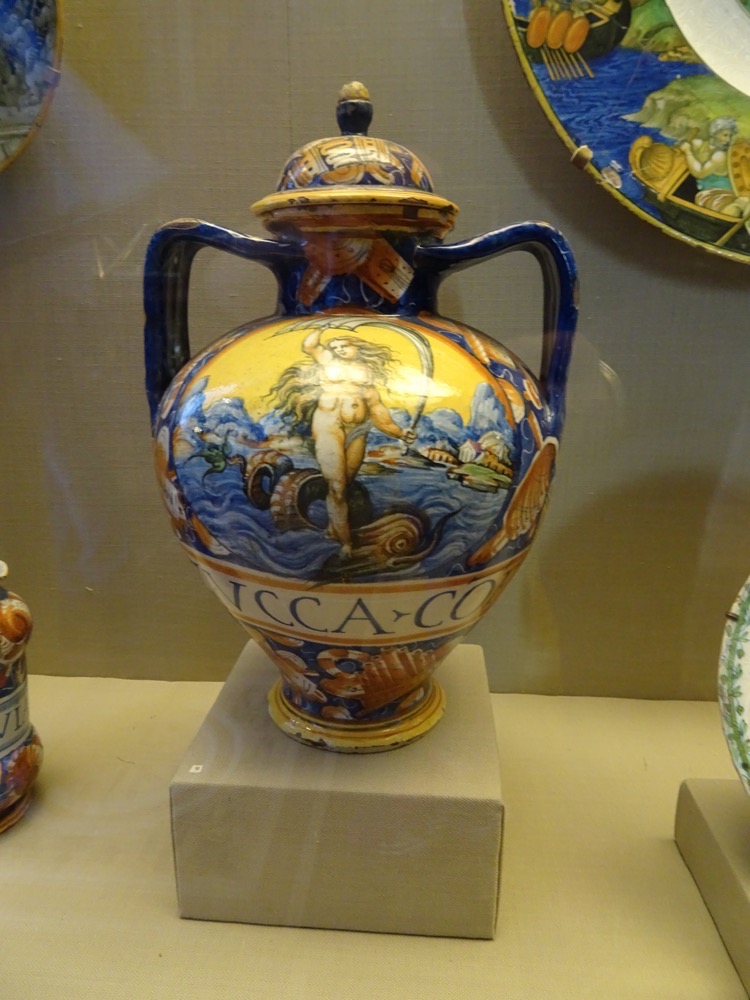
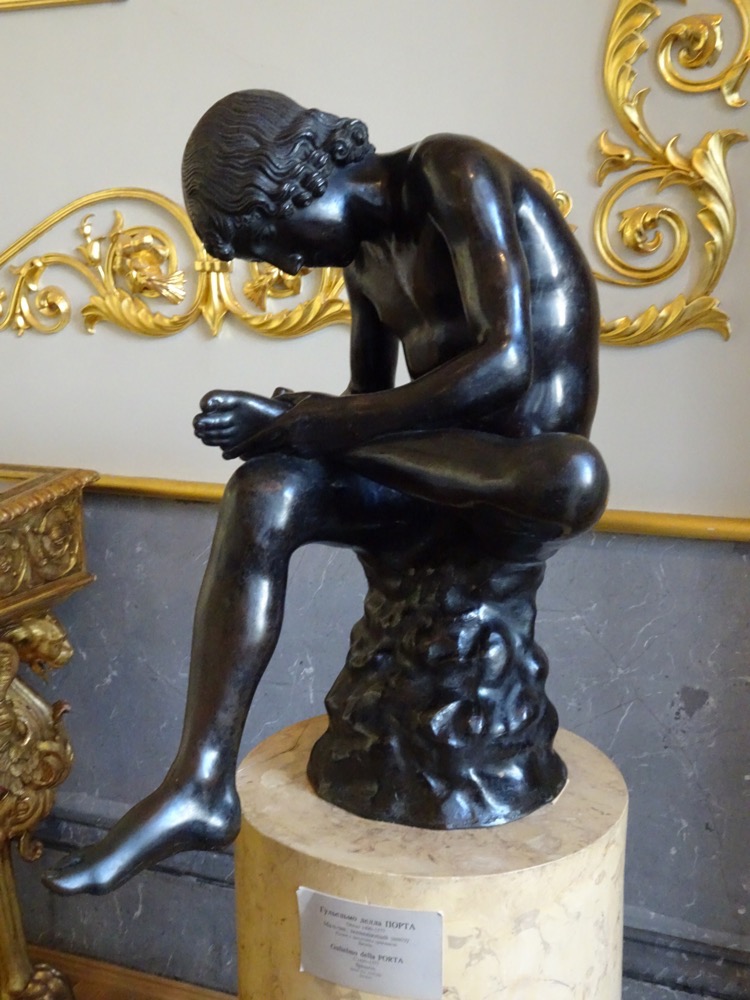 Michelangelo’s, ‘Crouching Boy’
Michelangelo’s, ‘Crouching Boy’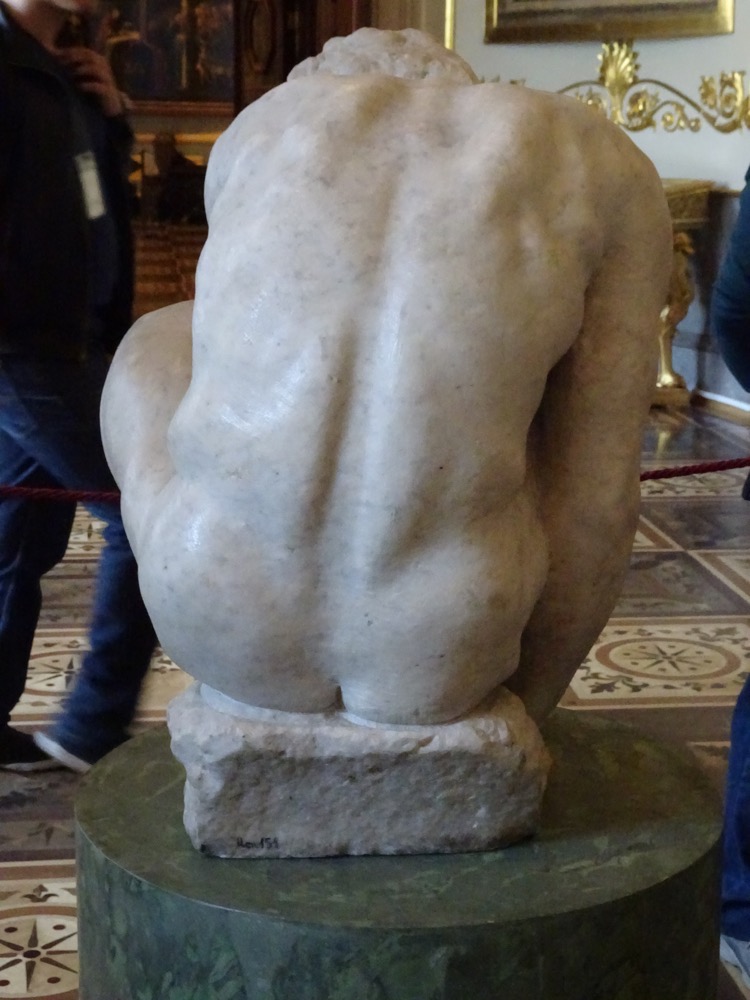
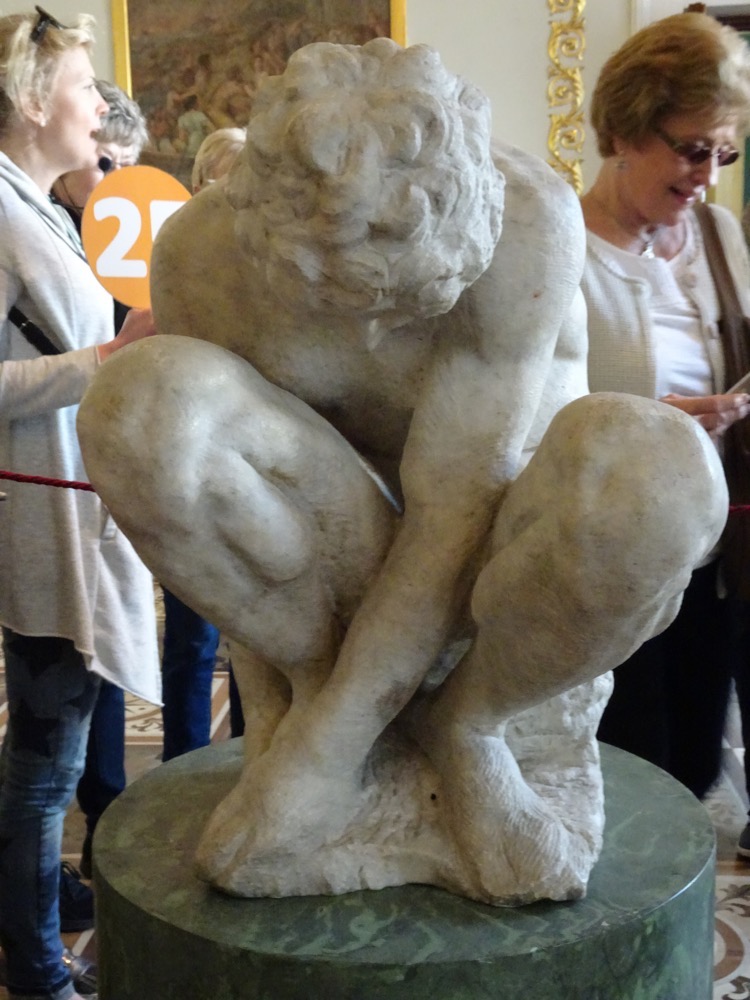 Malachite urn in the Spanish masters room.
Malachite urn in the Spanish masters room.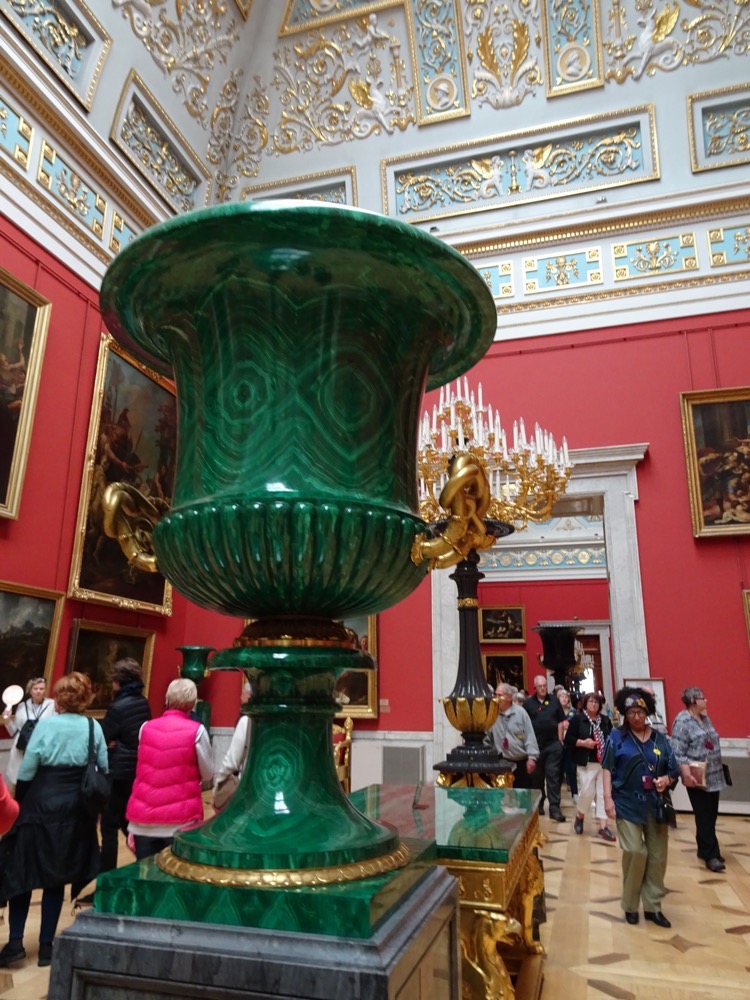
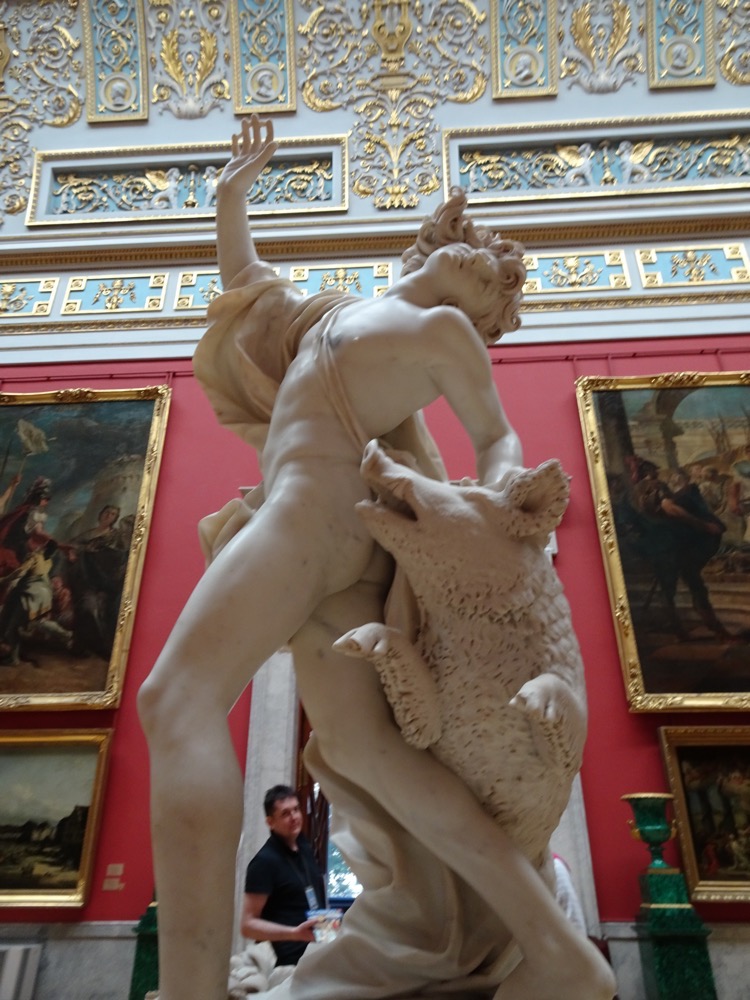
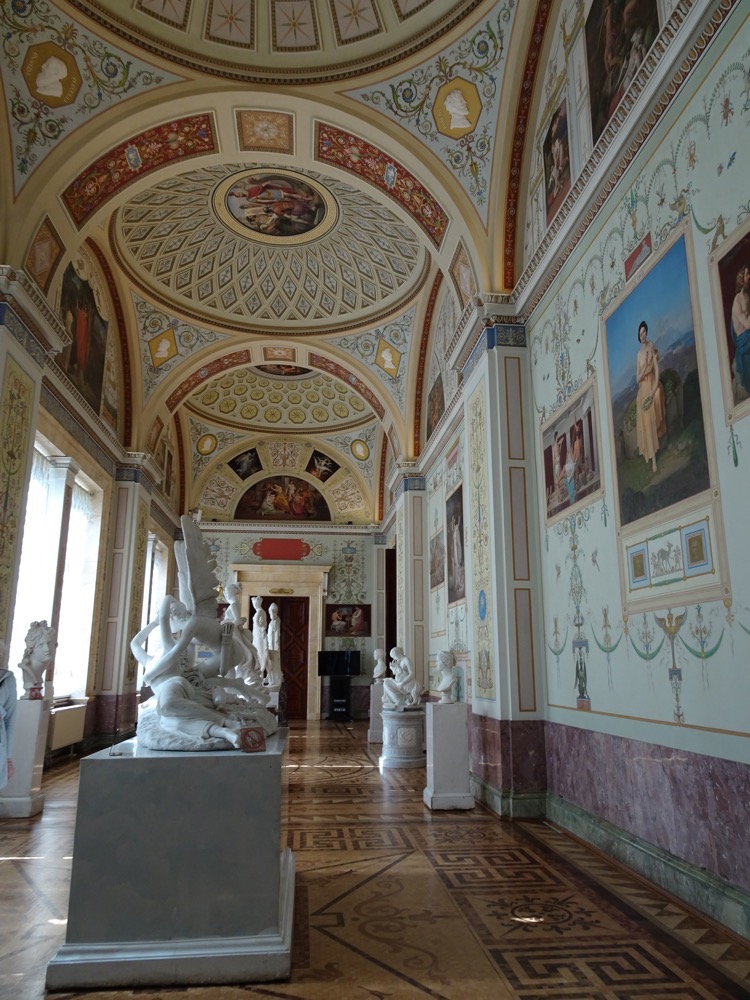
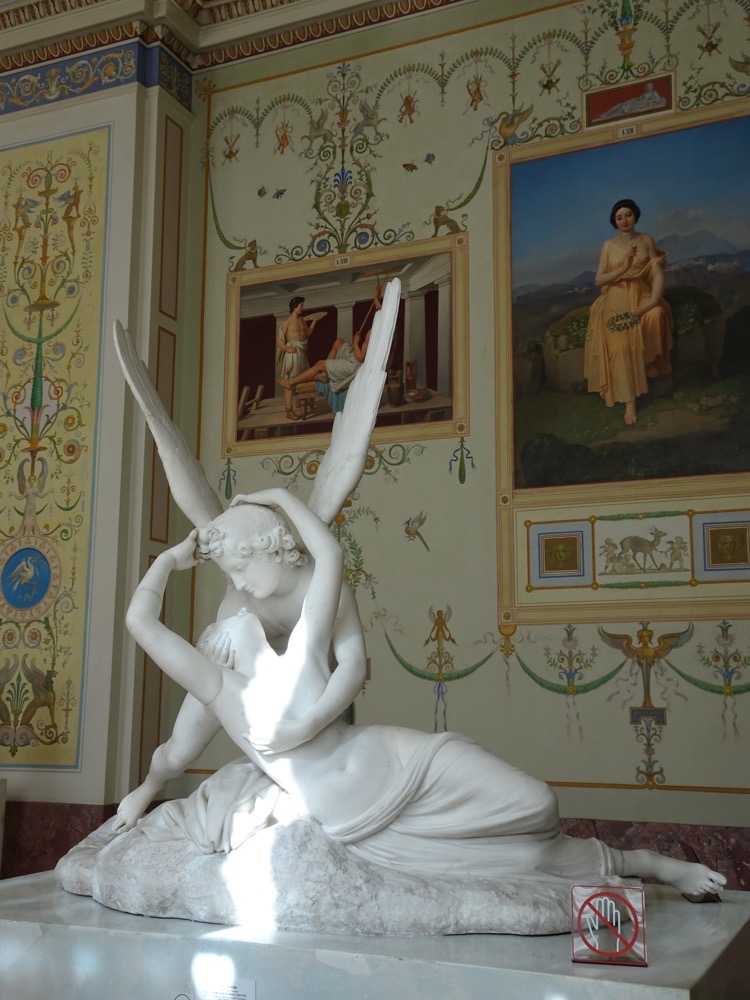 I simply include all the photographs of individual artefacts, so I have focused here on including the spaces in the Palace. I have already determined that I will have to come back to St Petersburg one day and do the Hermitage at my leisure. They say that if you stood in front of every piece on public display at the Hermitage for barely one minute, it would take you three years to see everything – and I well believe it. I imagine a week in St Petersburg is probably going to end up on the schedule at some point in the next few years.
I simply include all the photographs of individual artefacts, so I have focused here on including the spaces in the Palace. I have already determined that I will have to come back to St Petersburg one day and do the Hermitage at my leisure. They say that if you stood in front of every piece on public display at the Hermitage for barely one minute, it would take you three years to see everything – and I well believe it. I imagine a week in St Petersburg is probably going to end up on the schedule at some point in the next few years.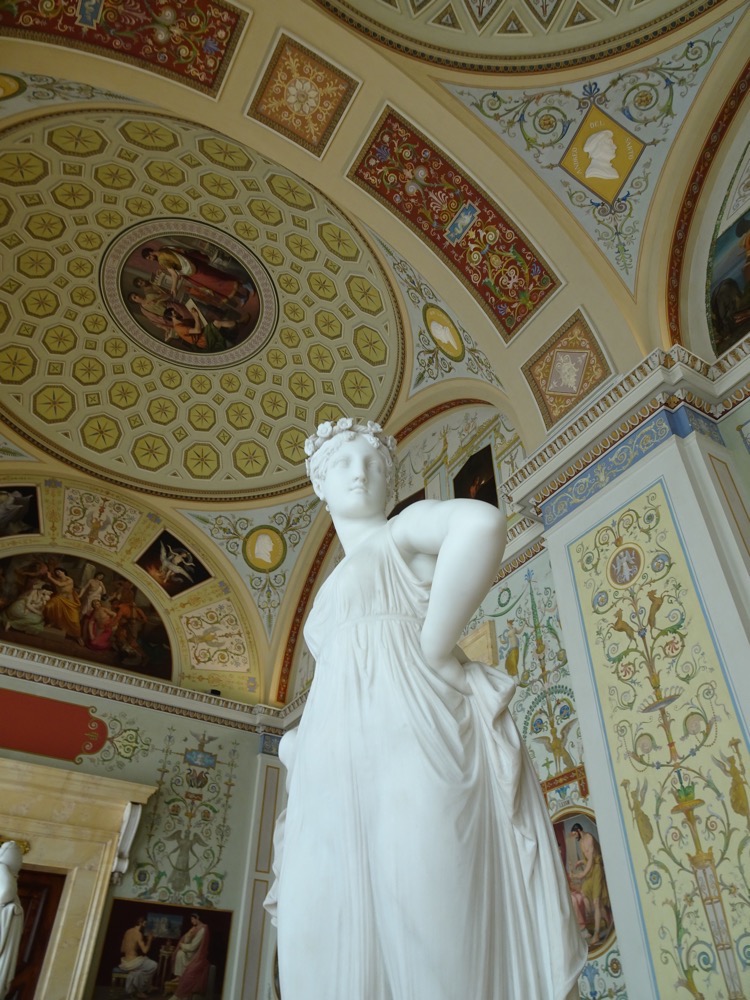
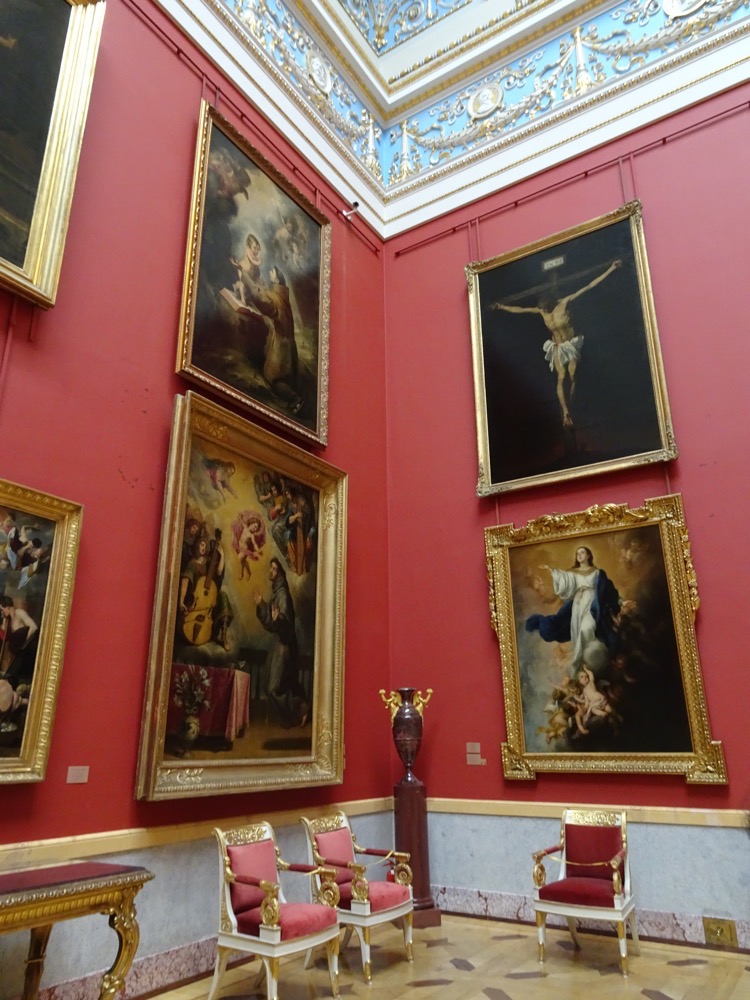
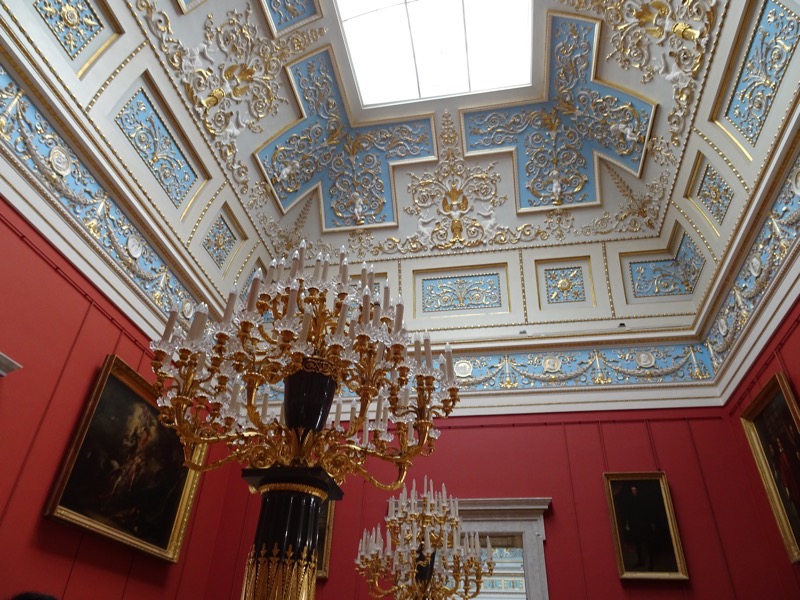 Oh and look, here is one of the twenty-four Rembrandts in the collection! If but one of them were appropriated? relocated? to an Australian museum, it would probably cause an entire wing re-named, the “Northern Renaissance Gallery”… and here? Here they have twenty-four. Greedy, if you ask me. 😉 They could share them around with the rest of the world, don’t you think?
Oh and look, here is one of the twenty-four Rembrandts in the collection! If but one of them were appropriated? relocated? to an Australian museum, it would probably cause an entire wing re-named, the “Northern Renaissance Gallery”… and here? Here they have twenty-four. Greedy, if you ask me. 😉 They could share them around with the rest of the world, don’t you think?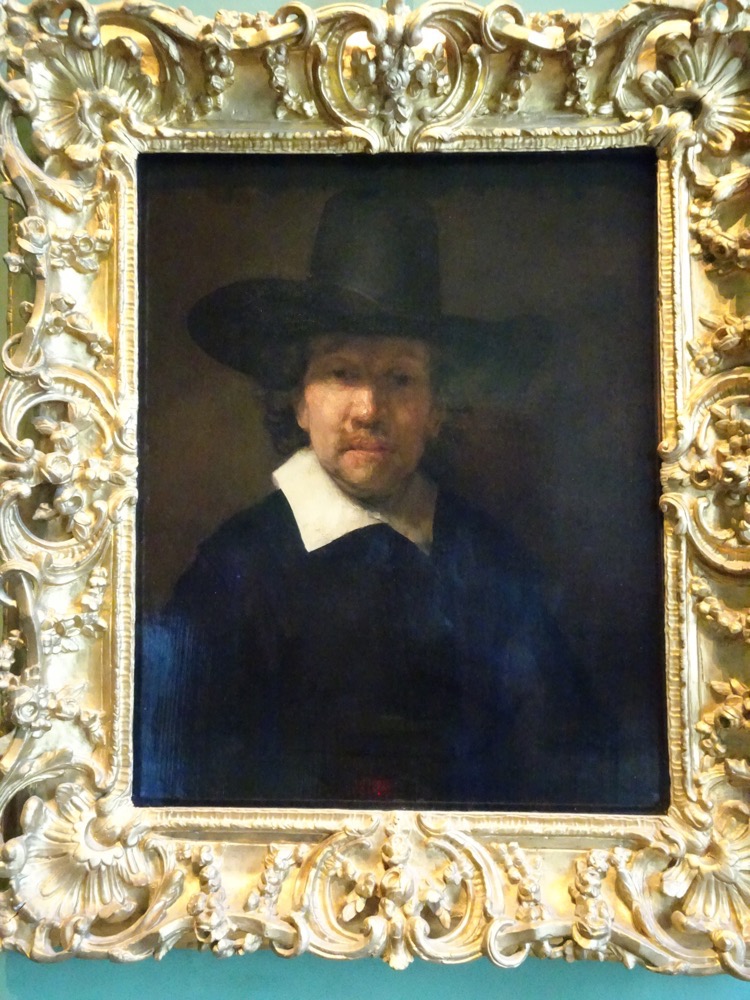 Stunning sweeping central staircases are a feature of all the palaces it would seem.
Stunning sweeping central staircases are a feature of all the palaces it would seem.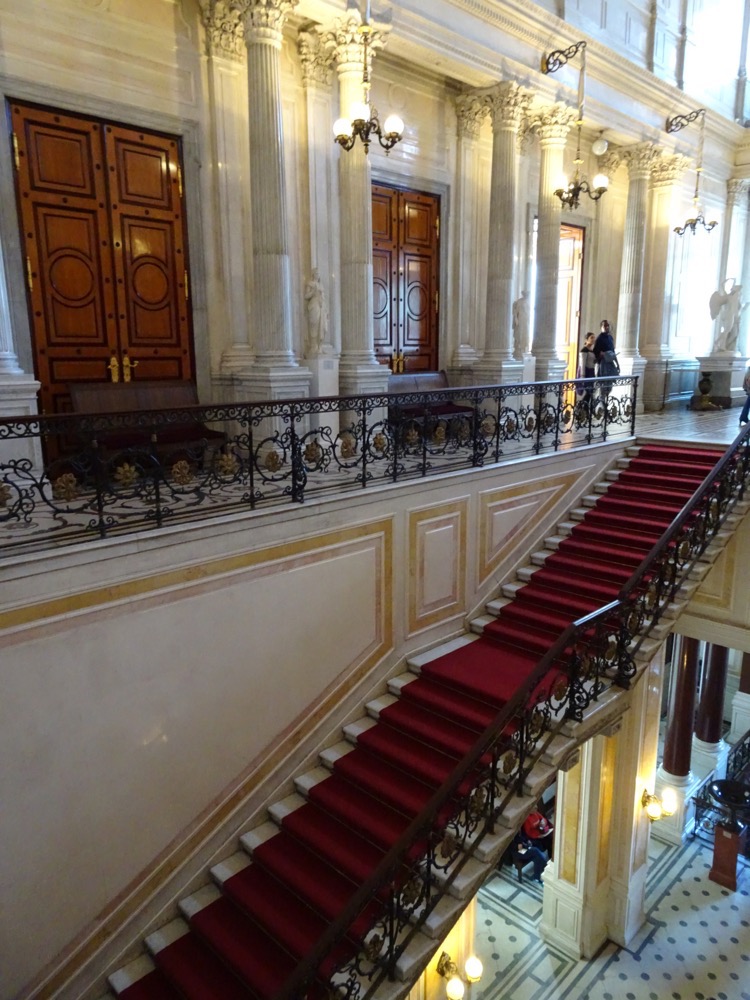
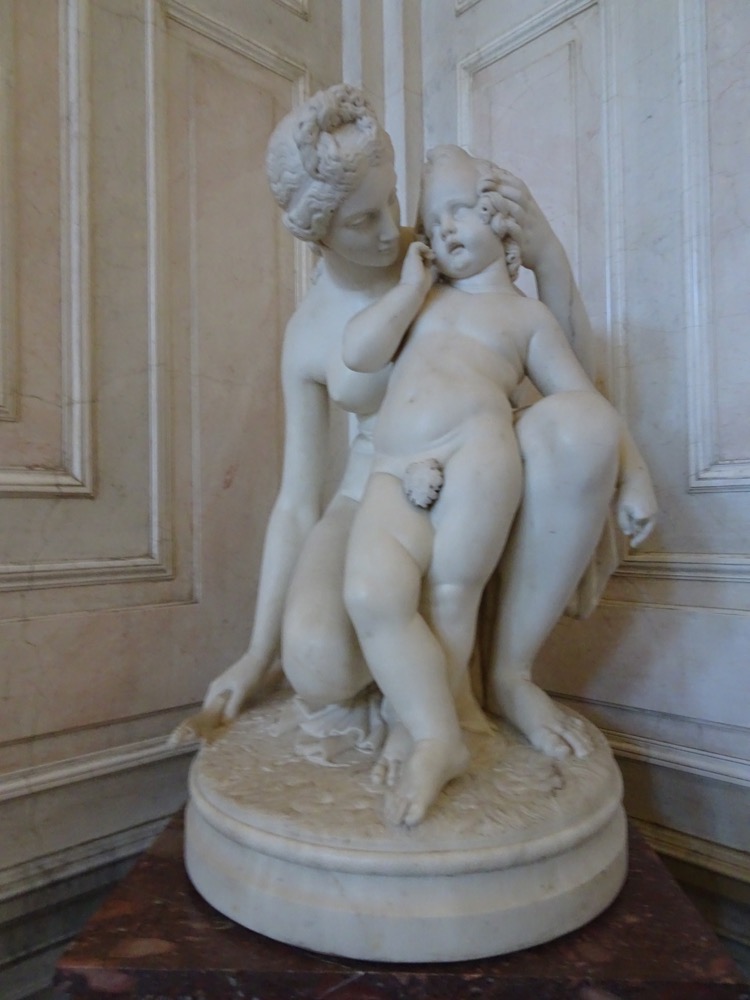
The Malachite Room.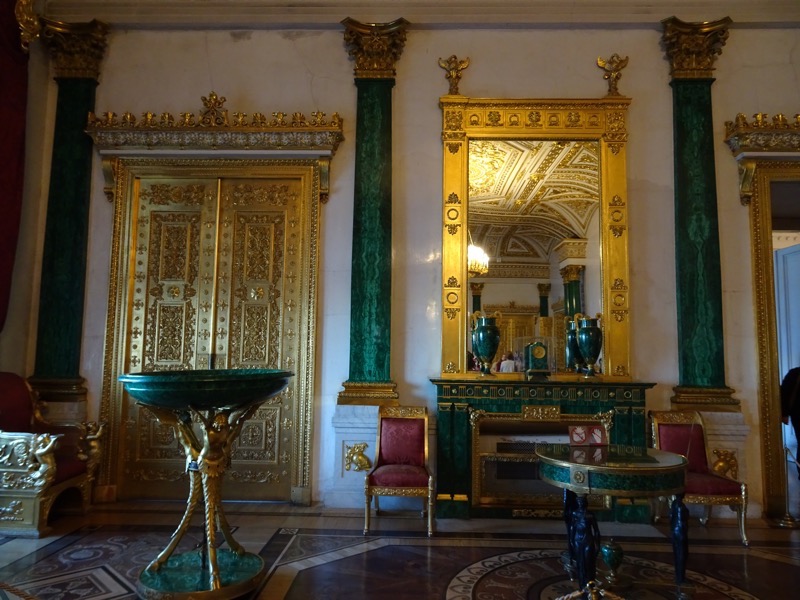
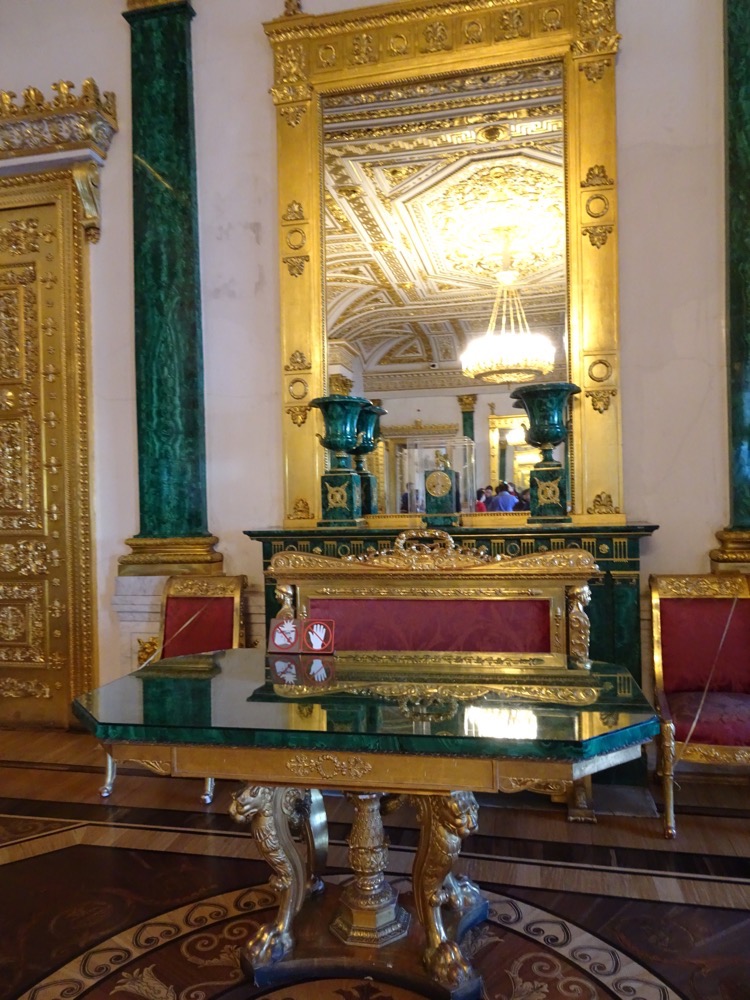
I took many, many more photographs of items in the museums, but they are too numerous to include here, I may make a separate post on the Hermitage when I get home (ship internet is dreadful for blogging… it’s dreadful full stop really, but particularly so for uploading images and blogging).
The Menshevik party, (literally meaning, ‘the Minority’, who were moderate socialists) had formed a Provisional Government after Tsar Nicholas abdicated in 1917. They maintained power for only eight months but were apparently moving too slowly for the Bolshevik party (hard-core lefty communists) with their prevaricating over the electoral processes and legislation associated with elections – so the more radical Bolsheviks decided to depose them. Below is the actual dining room in the Winter Palace where the Bolshevik party overthrew the Menshevik Provisional Government which started the Soviet era.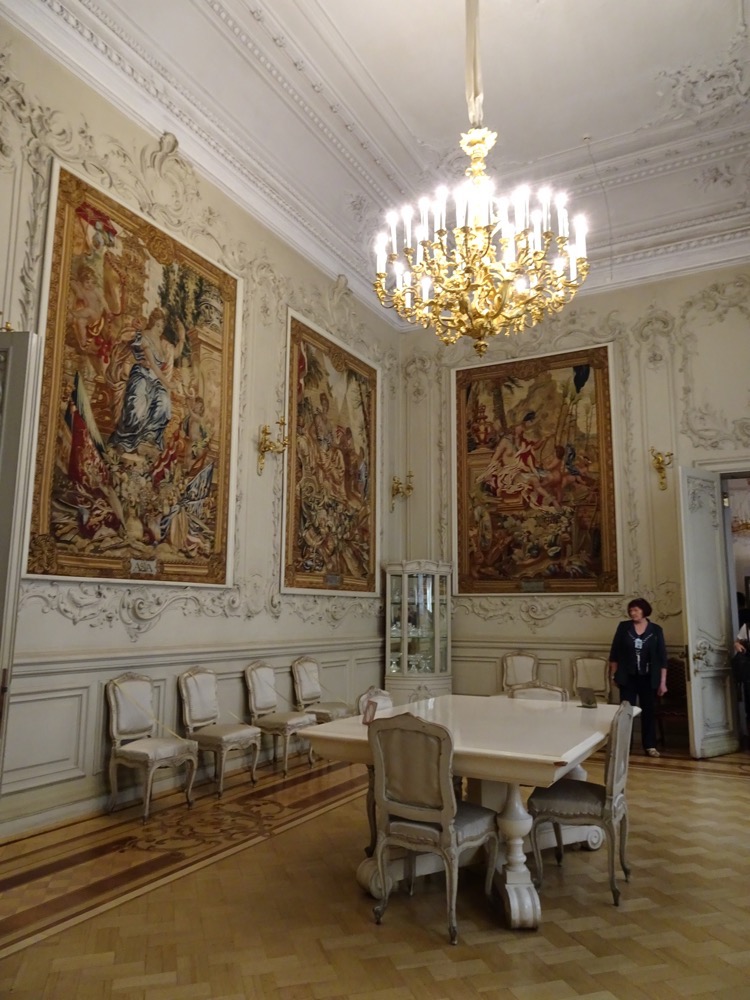 On temporary display – these ‘flowers’ are entirely ceramic.
On temporary display – these ‘flowers’ are entirely ceramic.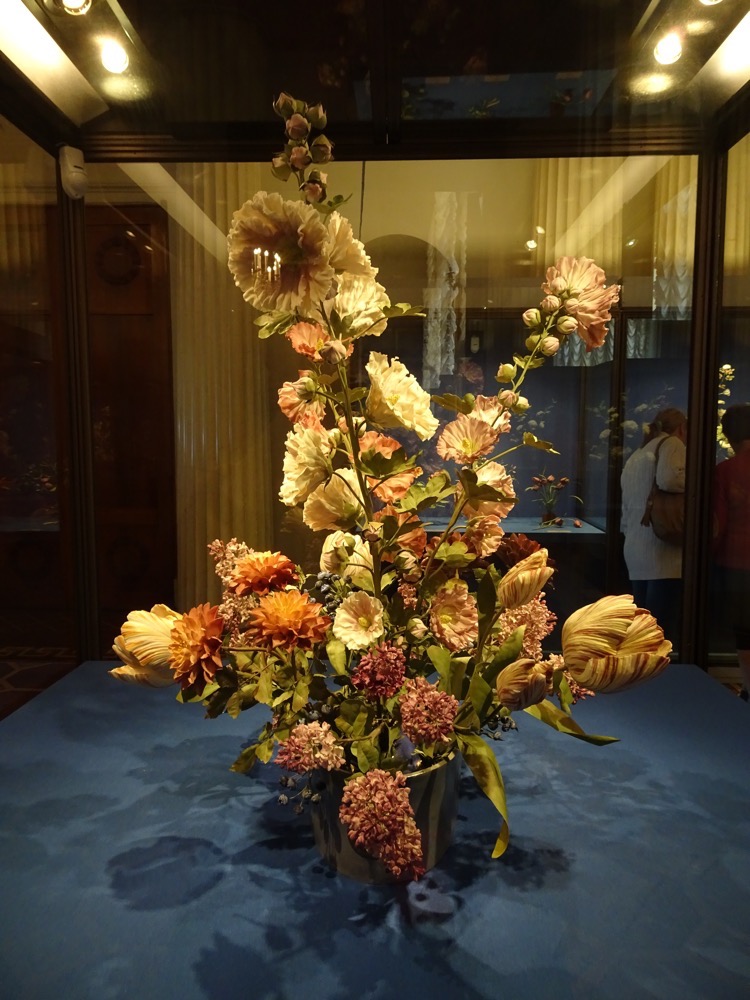
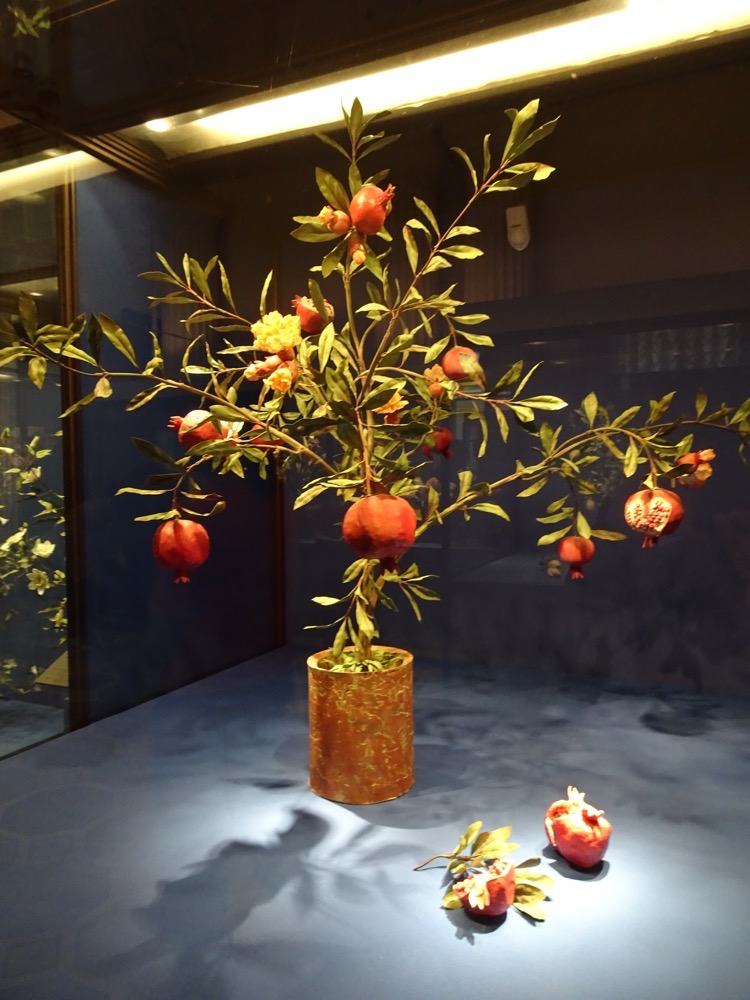
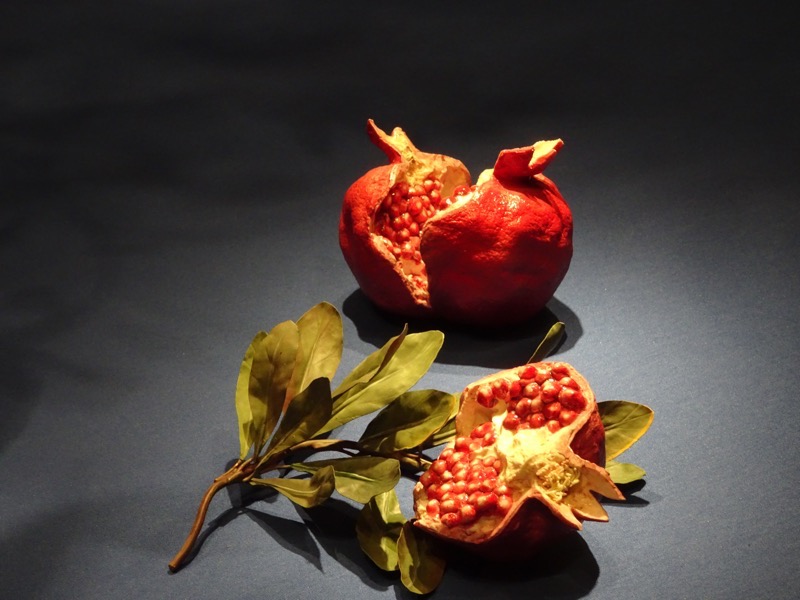
After we left the Hermitage, we bundled back into our little bus and head over to the most iconic of St Petersburg landmarks – the Church of the Savior on Spilled Blood (aka the Church of the Spilled Blood, or the Temple of the Spilled Blood or the Cathedral of the Resurrection of Christ.
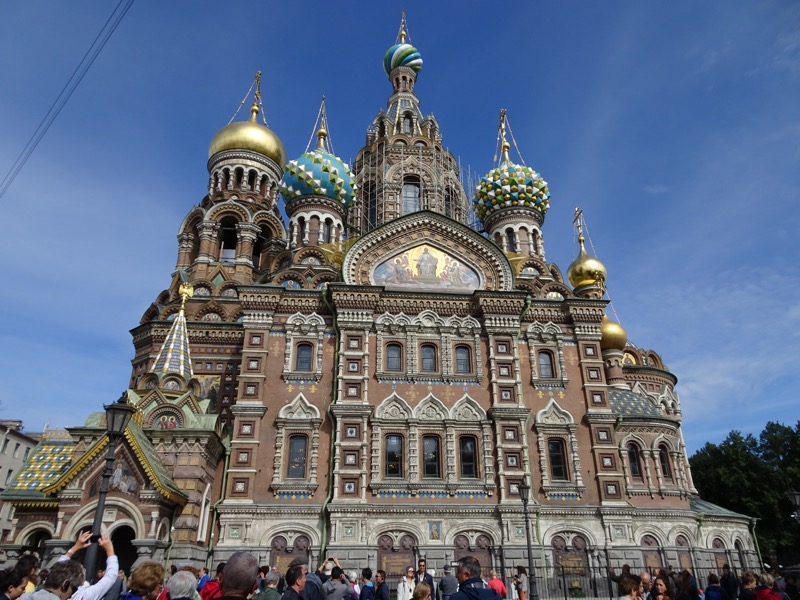
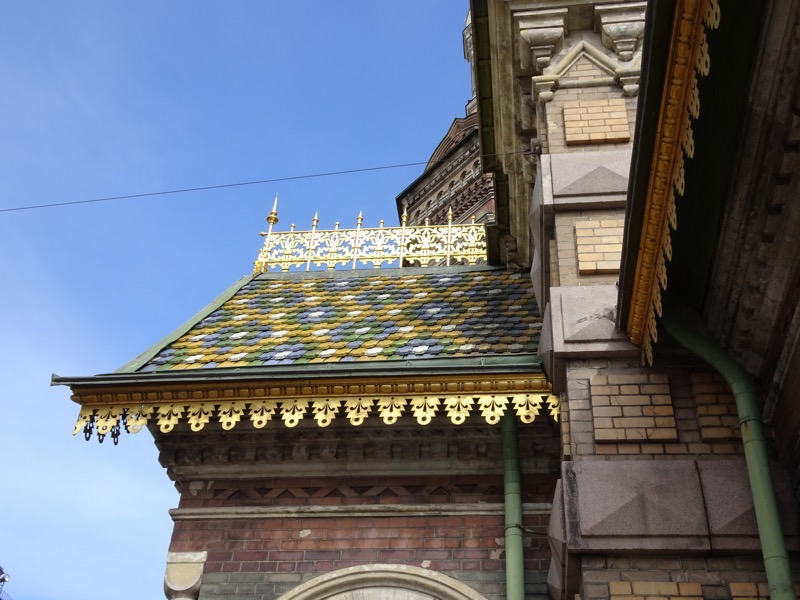
 Construction began on this church in 1883, during the reign of Tsar Alexander III, it was intended to be a memorial to his father, Alexander II – as this was the exact site where Emperor Alexander II was killed by political nihilists in March 1881. Maria claimed that the construction cost was somewhere in the realm of 4.5 million rubles, funded by the Imperial family and many wealthy donors. The Cathedral was not completed until 1907 during the reign of Nicholas II.
Construction began on this church in 1883, during the reign of Tsar Alexander III, it was intended to be a memorial to his father, Alexander II – as this was the exact site where Emperor Alexander II was killed by political nihilists in March 1881. Maria claimed that the construction cost was somewhere in the realm of 4.5 million rubles, funded by the Imperial family and many wealthy donors. The Cathedral was not completed until 1907 during the reign of Nicholas II.
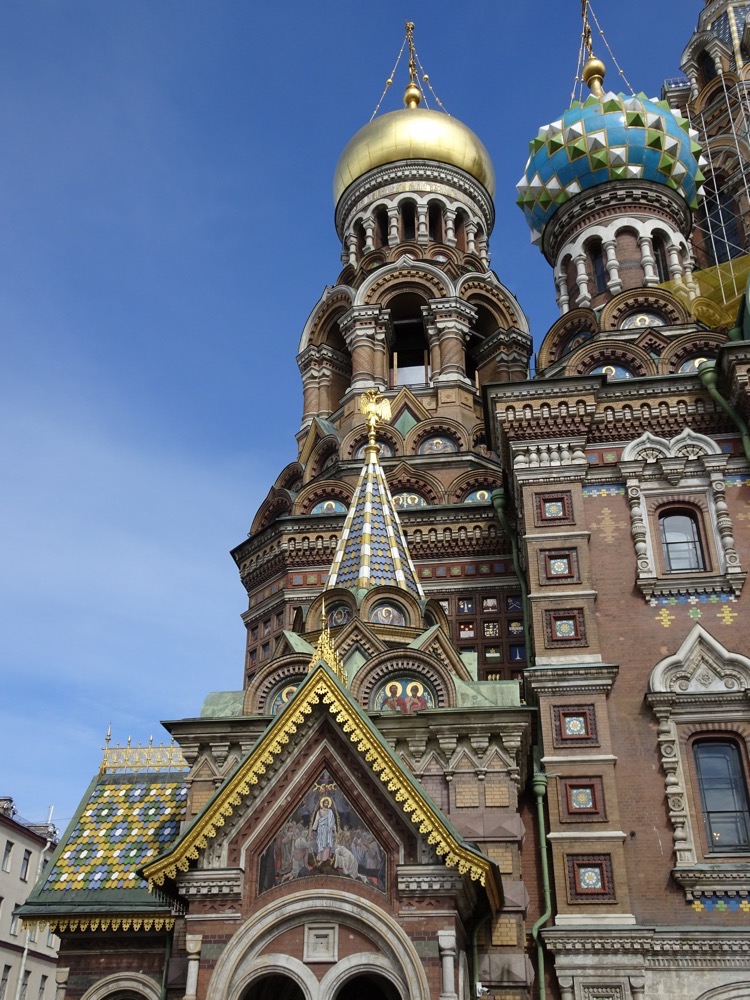
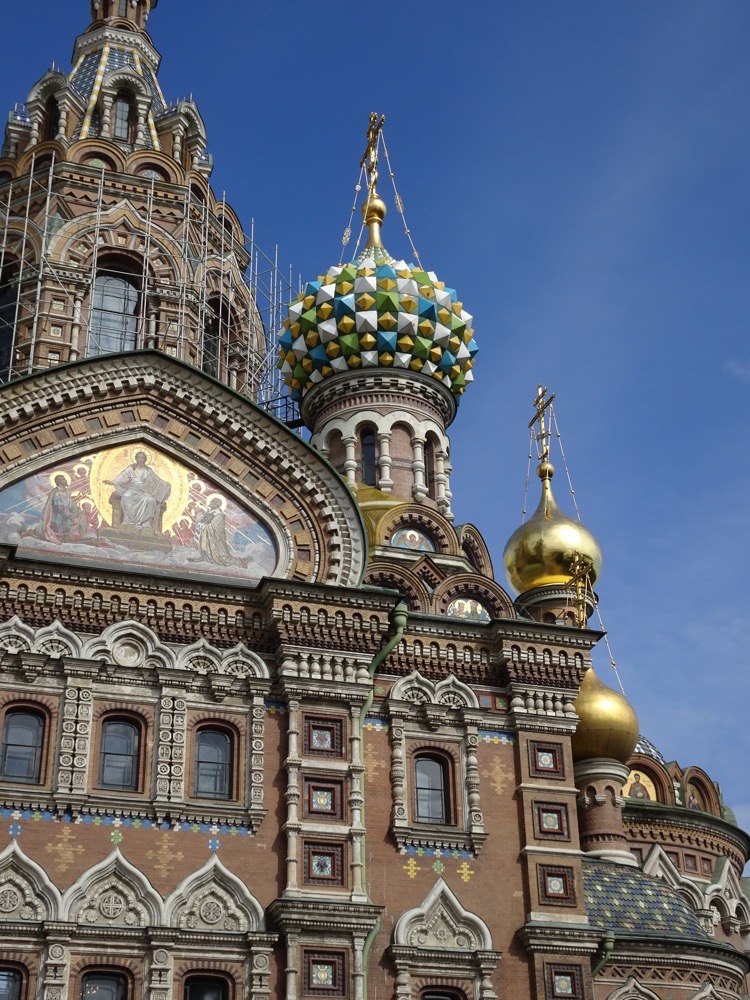
Being in a Medieval Russian style, the Cathedral is very different from the rest of St Petersburg’s other architectural wonders, which are mainly baroque and neoclassical. The Church of the Spilled Blood was created in the Russian romantic nationalism style, and with its onion domes and ceramic tiled roofs, it deliberately mimics the 17th century Yaroslavl churches and the famous St Basil’s Cathedral in Moscow (Been there!).
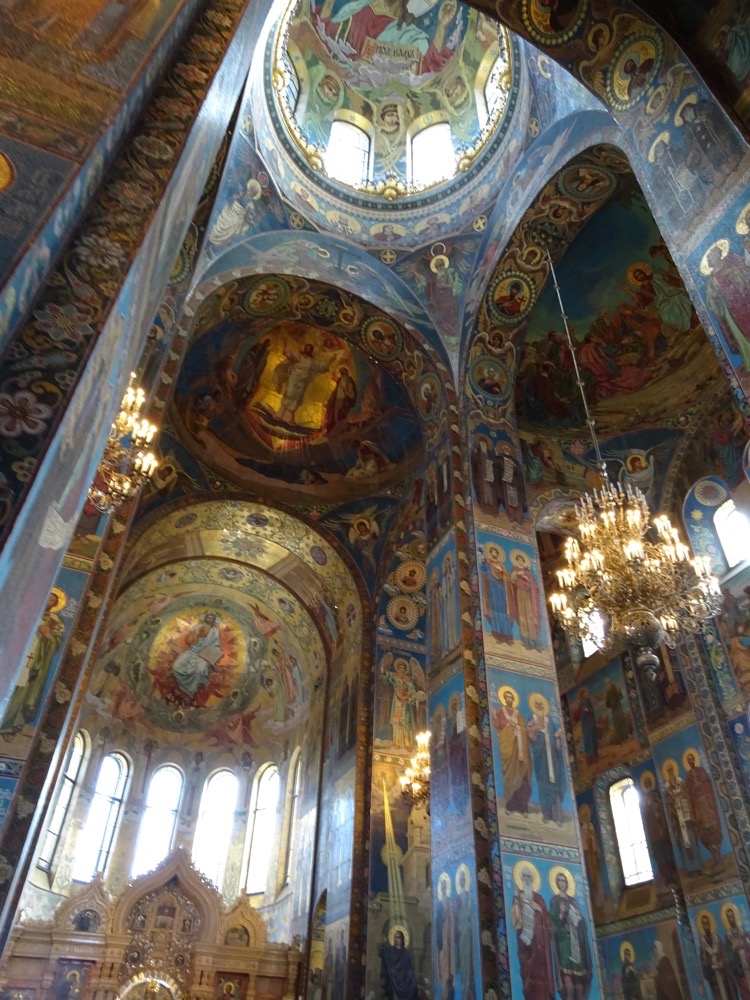 The interior is inimitable… it contains over 7500 square meters of detailed mosaics, which according to the restorers, is more than any other building in the world. The walls and ceilings are completely covered in mosaics depicting biblical scenes and figures, surrounded by decorated borders and motifs.
The interior is inimitable… it contains over 7500 square meters of detailed mosaics, which according to the restorers, is more than any other building in the world. The walls and ceilings are completely covered in mosaics depicting biblical scenes and figures, surrounded by decorated borders and motifs.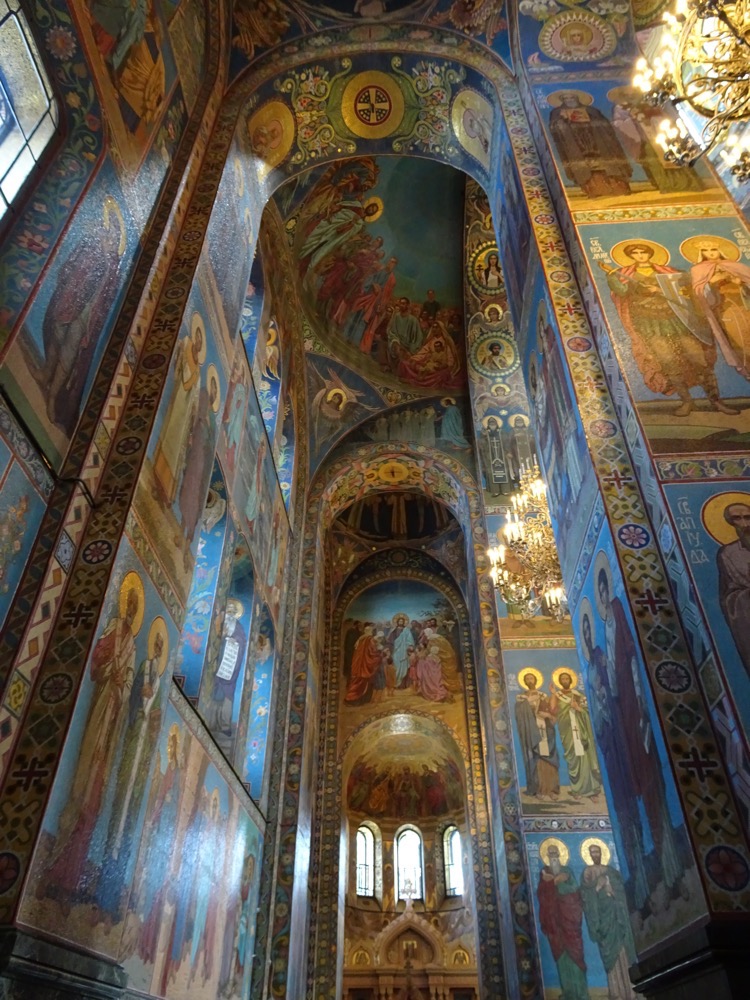
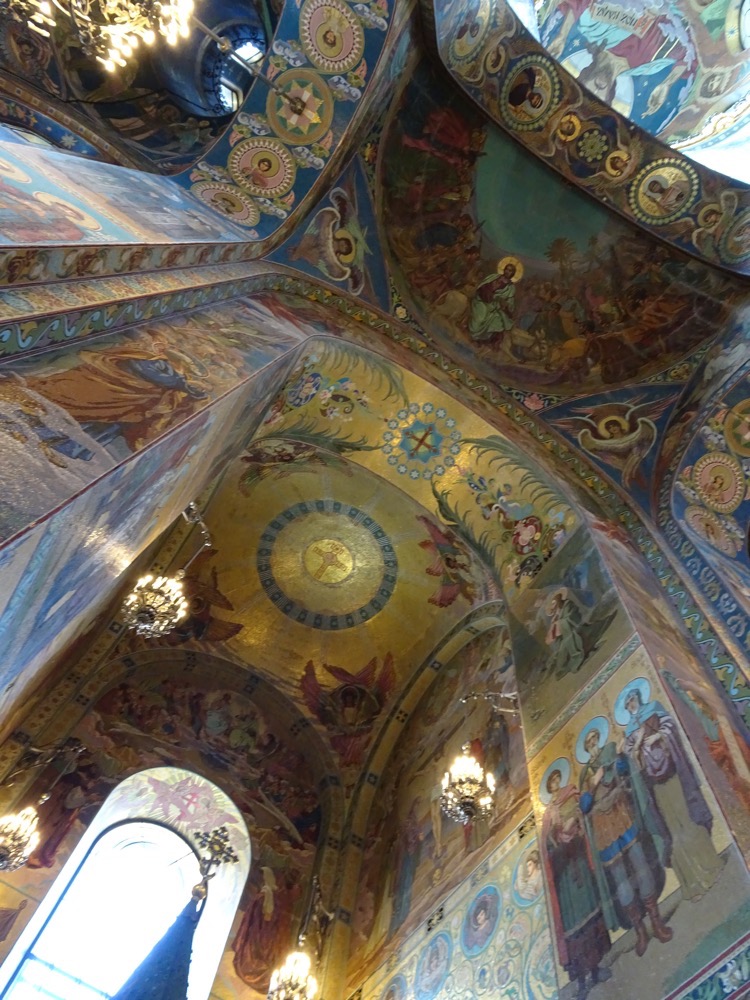
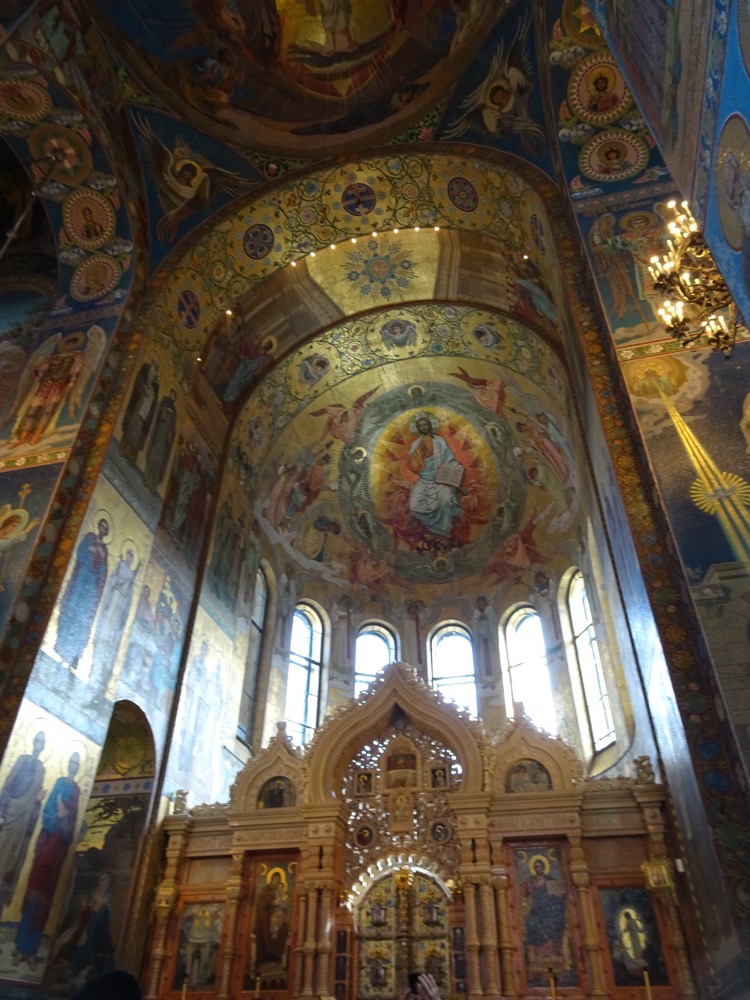 The central altar contains the Holy Gates, which were lost in the 1920s during the Soviet era, but were recreated and replaced in 2012, on the 129th anniversary of Alexander II’s assassination.
The central altar contains the Holy Gates, which were lost in the 1920s during the Soviet era, but were recreated and replaced in 2012, on the 129th anniversary of Alexander II’s assassination. 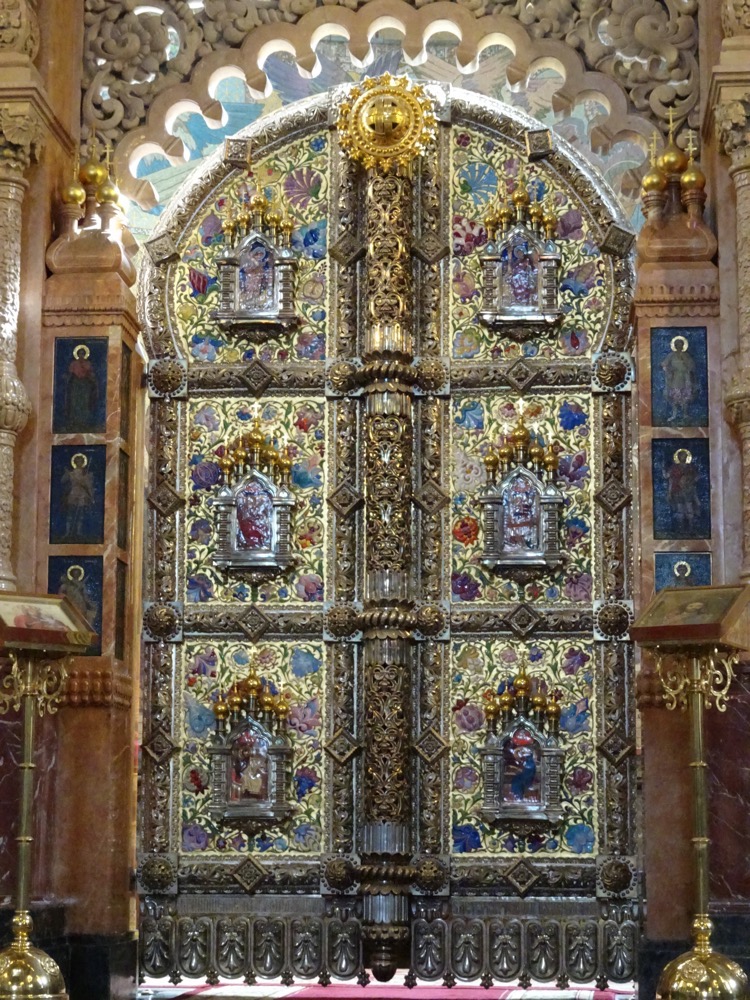
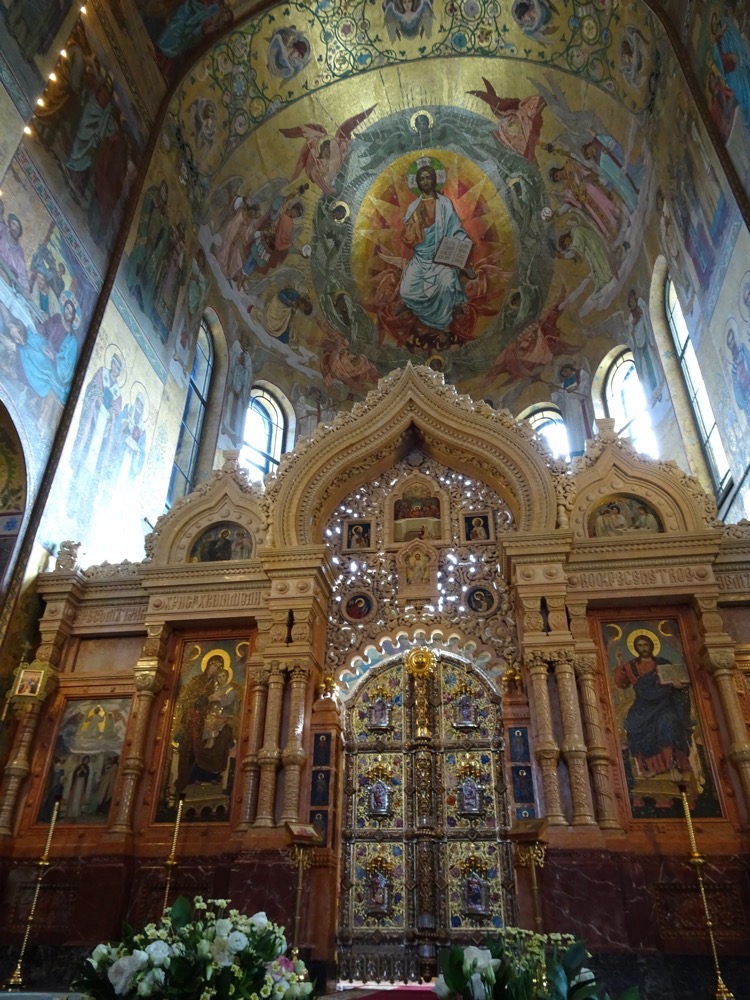
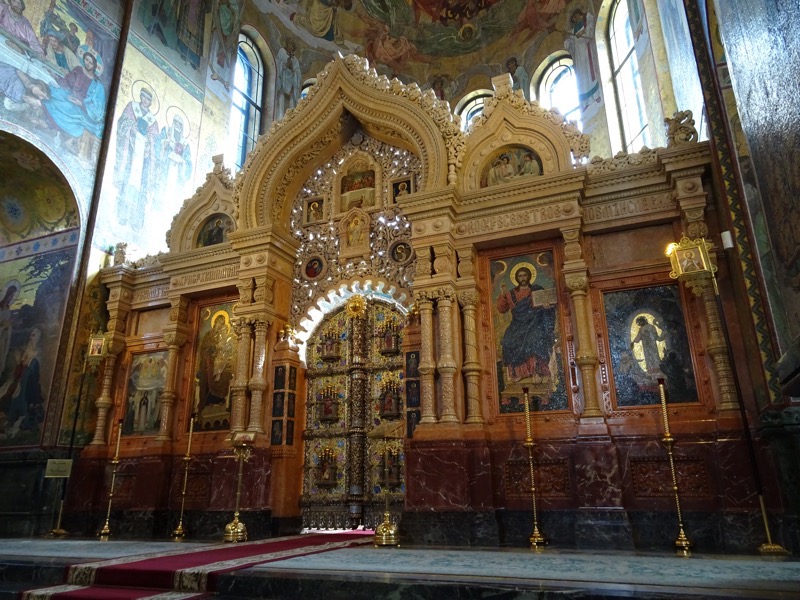
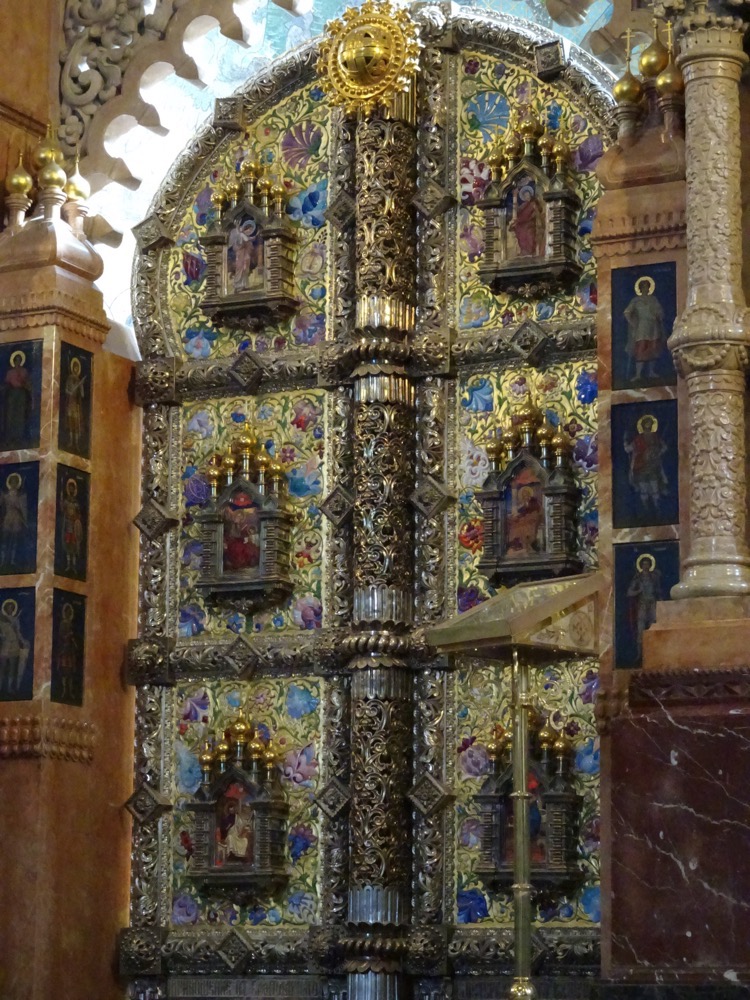 Gate detail:
Gate detail: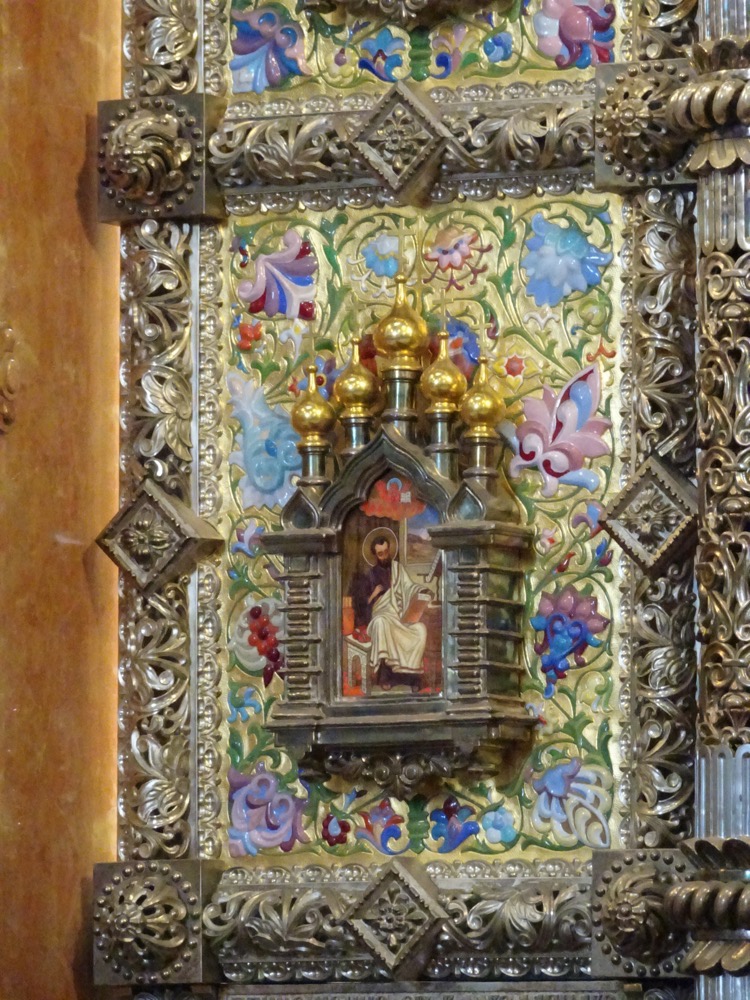
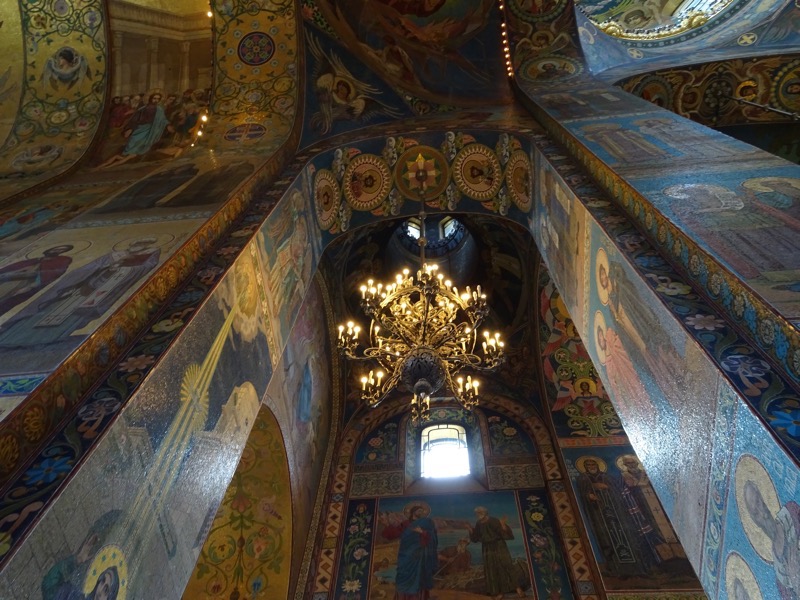 The main dome must easily be 100 feet high. Easily.
The main dome must easily be 100 feet high. Easily.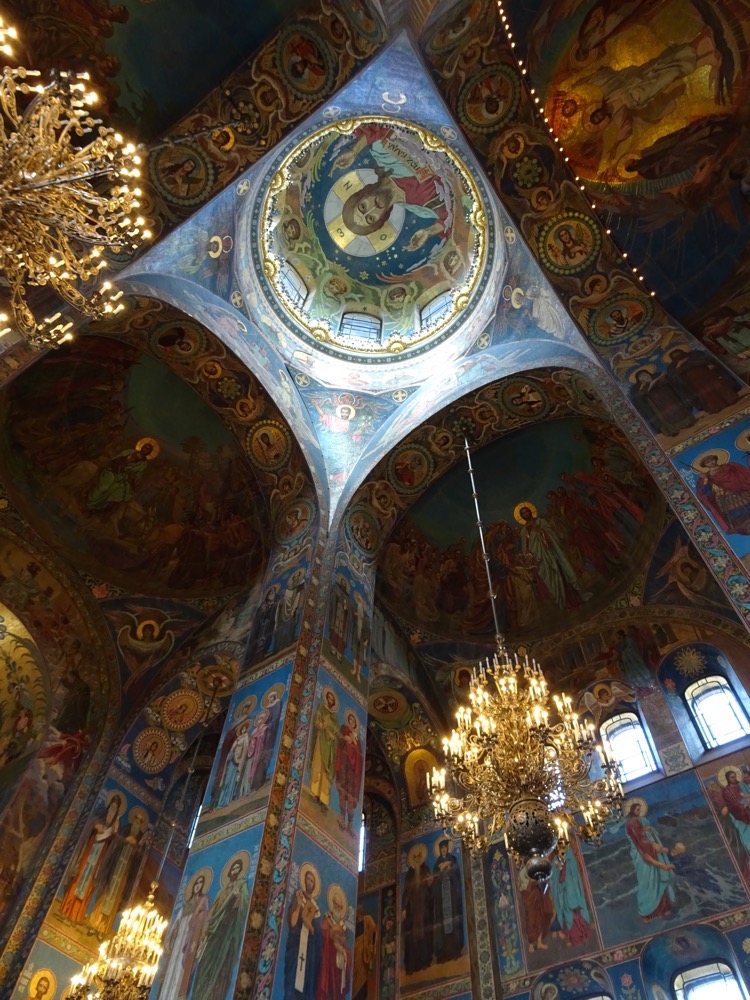
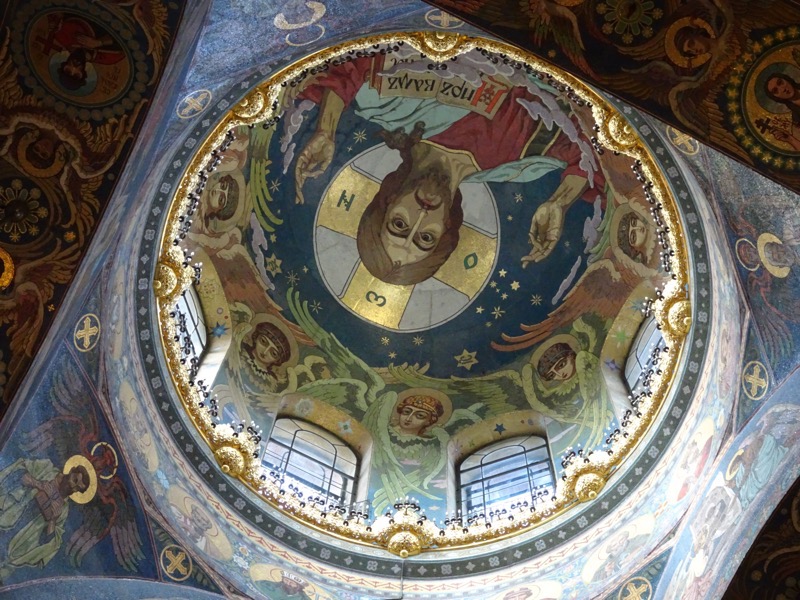
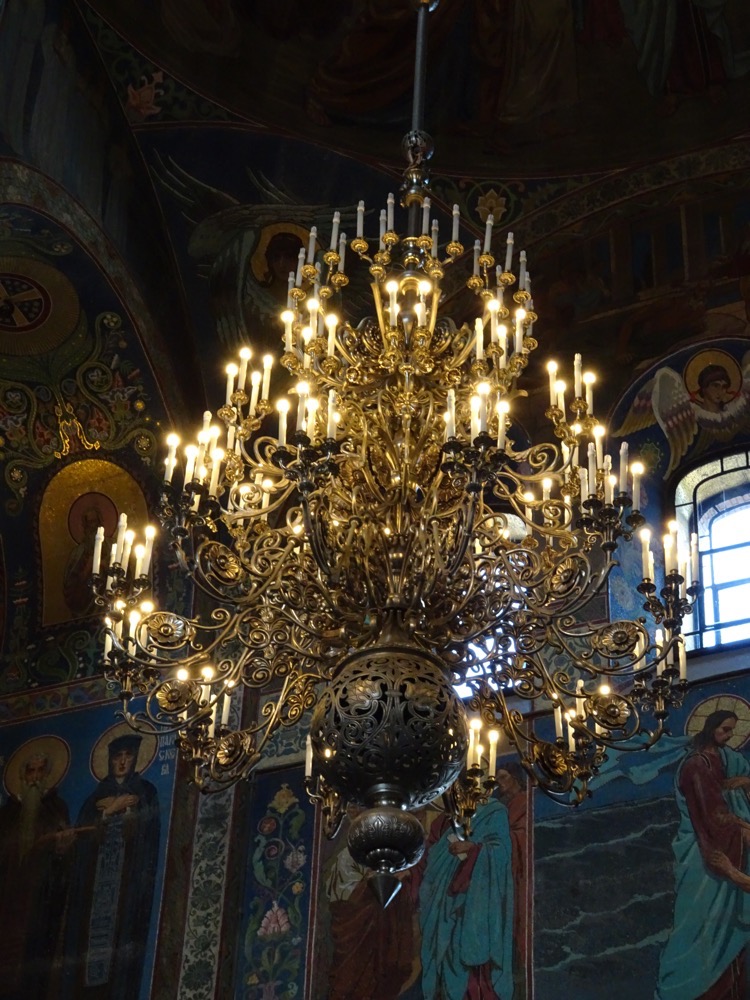 After the Russian Revolution (which saw the end of the Tsarist autocracy and the rise of the Soviet Era), the church was ransacked, looted and badly damaged – Maria described the Bolsheviks as ‘people who destroyed everything, and they build nothing’. The Soviet government actually closed the then very damaged church in 1932. During WWII, when many people were starving due to the Seige of Leningrad at the hands of Nazi Germany, the church was used as a morgue for people who died in combat, and from starvation or sickness; bit gruesome. The Church suffered, even more, damage during this period. After the war, the buildling was so little thought of, that it was used as a warehouse for vegetables, leading to the name, The Saviour of Potatoes! I just can’t imagine what led people to use a building like this to store vegetables! I guess when you are starving though, you don’t have much use for gold mosaics.
After the Russian Revolution (which saw the end of the Tsarist autocracy and the rise of the Soviet Era), the church was ransacked, looted and badly damaged – Maria described the Bolsheviks as ‘people who destroyed everything, and they build nothing’. The Soviet government actually closed the then very damaged church in 1932. During WWII, when many people were starving due to the Seige of Leningrad at the hands of Nazi Germany, the church was used as a morgue for people who died in combat, and from starvation or sickness; bit gruesome. The Church suffered, even more, damage during this period. After the war, the buildling was so little thought of, that it was used as a warehouse for vegetables, leading to the name, The Saviour of Potatoes! I just can’t imagine what led people to use a building like this to store vegetables! I guess when you are starving though, you don’t have much use for gold mosaics. 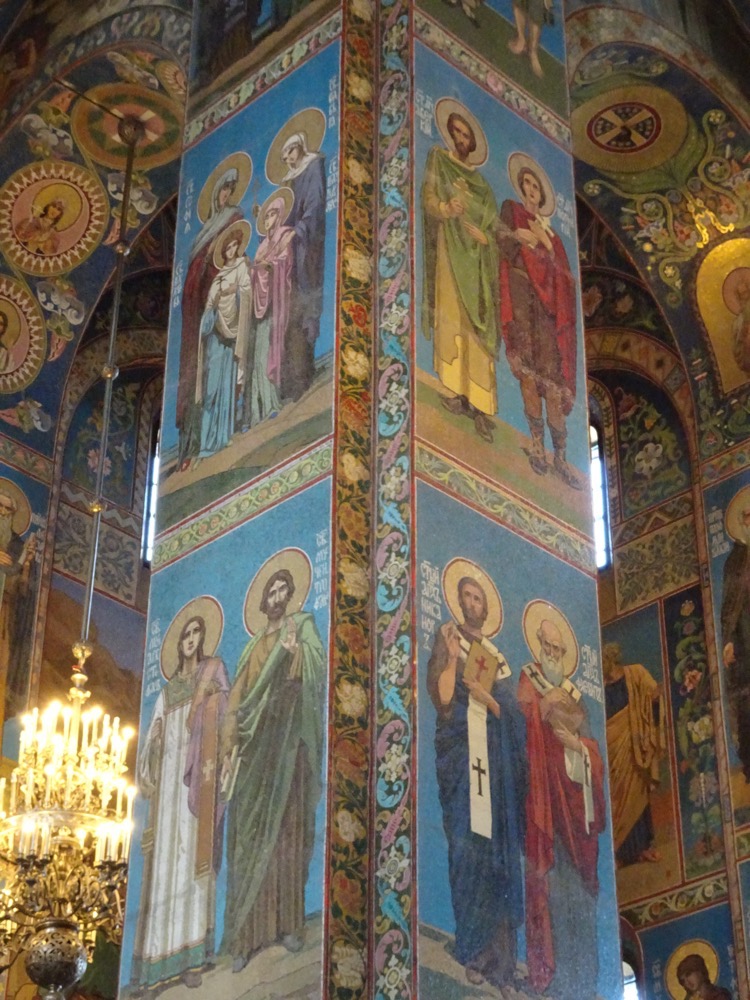
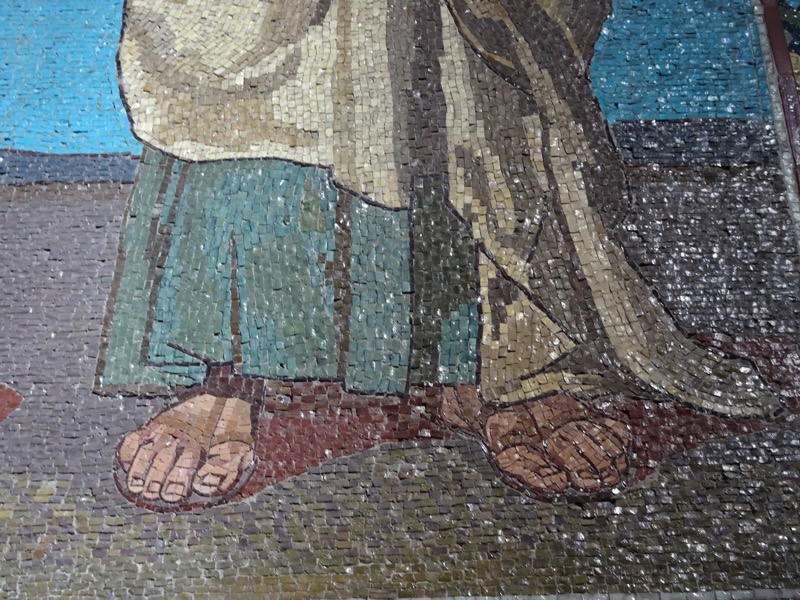
It was not until the 1970s that the management of the Church of the Spilled Blood was handed over to Saint Isaac’s Cathedral and it was turned into the mosaic museum that it is today. Proceeds from the profitable St Isaac’s Cathedral were used to fund the restoration of the church, and it was eventually reopened in 1997 after nearly 27 years of extensive restoration work. The church was never reconsecrated and is now a major tourist destination as a mosaic museum and monument to Alexander II.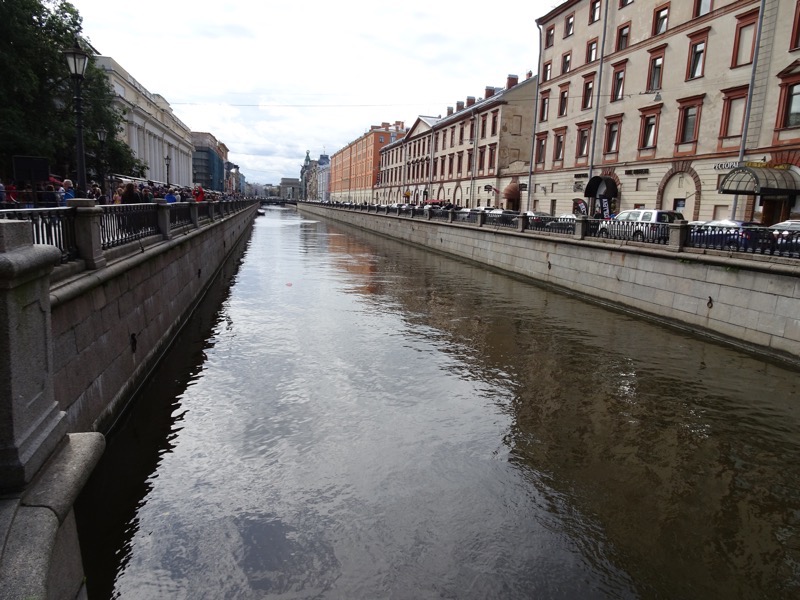 Just outside the Church of the Spilled Blood is tourist central… we were told to watch for pick pockets, but I think they are all working stalls here – souvenir prices were ridiculous!
Just outside the Church of the Spilled Blood is tourist central… we were told to watch for pick pockets, but I think they are all working stalls here – souvenir prices were ridiculous!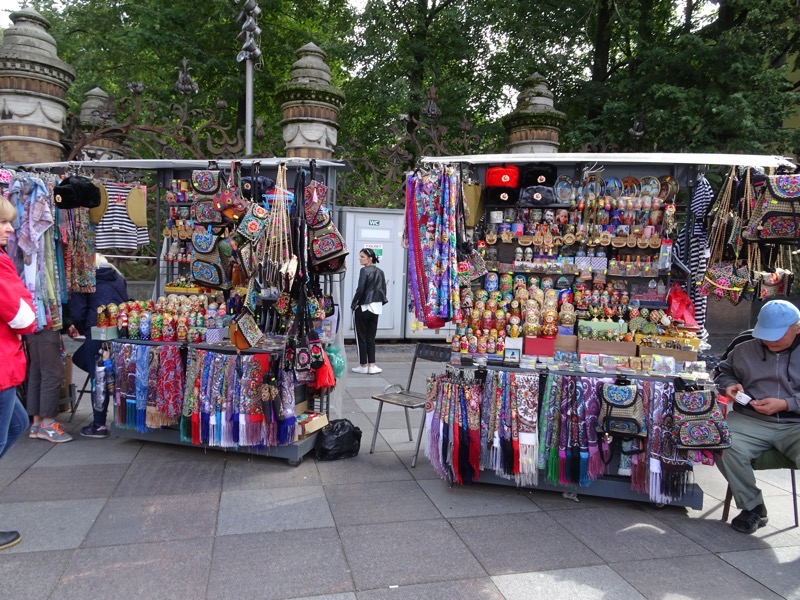
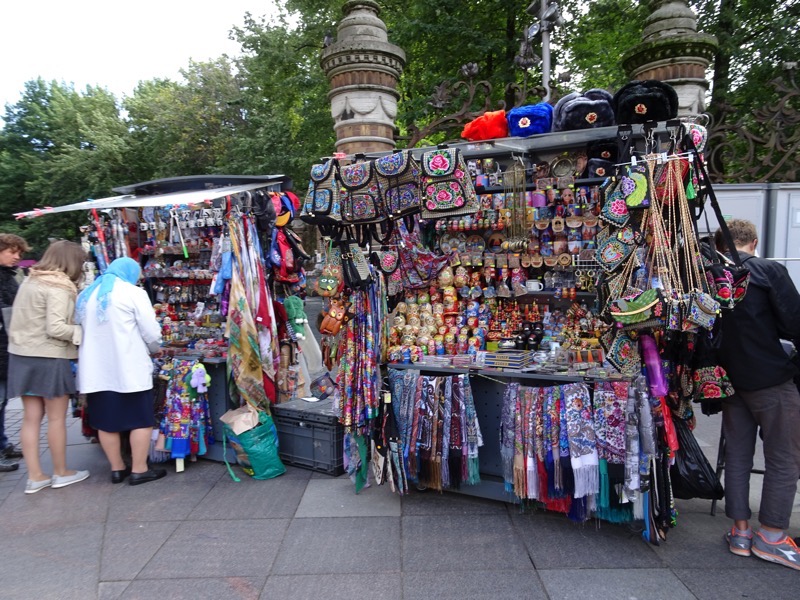
After our amazing visit to the Church of the Spilled Blood, we walked across a lovers bridge (yes another one covered in locks), to a local restaurant to have a bite for lunch. Lunch consisted of pumpkin soup, beef stroganoff (how unsual for Russia!) on mashed potatoes, and some honey cake. We had forgotten about the Russian honey cake we tried in Moscow, but I am going to have to hunt down a recipe for it, it is super sweet but quite nice.
Lunch done, we made our way to Saint Isaac’s Cathedral (aka Isaakievskiy Sobor) which is the largest Russian Orthodox cathedral in the city, and the largest Russian Orthodox Cathedral in the world, and the fourth largest cathedral of any denomination in the world (apparently – something to do with the volume of the cuppola). It is dedicated to Saint Isaac of Dalmatia, because Peter the Great (who seems to have built nearly everything in St Petersburg) was born on St Isaac’s feast day, so he adopted him as a patron saint.
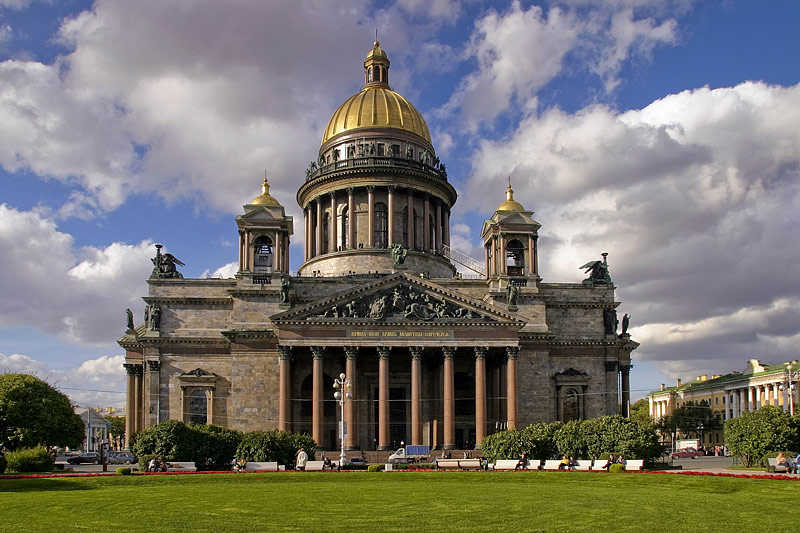 The church was built on instructions by Tsar Alexander I to replace an early chruch that had been built by Vincenzo Brenna, and it is the fourth church to be bulit on the same site. A specially formed committee examed designs until the French-born architect, August de Montferrand (1786-1858) was appointed to build the current cathedral. Montferrand, who had studied under Napoleon’s pet desinger Charles Percier, had create a design that was criticised by some members of the commision for the allegedly boring rhythm of it’s four identical octastyle porticos. Some thought that even though the design had enormous proportions, it would look short and squat and not particularly impressive. There were also apparently concerns about building a 100m tall cathedral on old and insecure foundations could be problematic. However, the emperor favoured the design and things worked out in Montferrand’s favour after all.
The church was built on instructions by Tsar Alexander I to replace an early chruch that had been built by Vincenzo Brenna, and it is the fourth church to be bulit on the same site. A specially formed committee examed designs until the French-born architect, August de Montferrand (1786-1858) was appointed to build the current cathedral. Montferrand, who had studied under Napoleon’s pet desinger Charles Percier, had create a design that was criticised by some members of the commision for the allegedly boring rhythm of it’s four identical octastyle porticos. Some thought that even though the design had enormous proportions, it would look short and squat and not particularly impressive. There were also apparently concerns about building a 100m tall cathedral on old and insecure foundations could be problematic. However, the emperor favoured the design and things worked out in Montferrand’s favour after all.
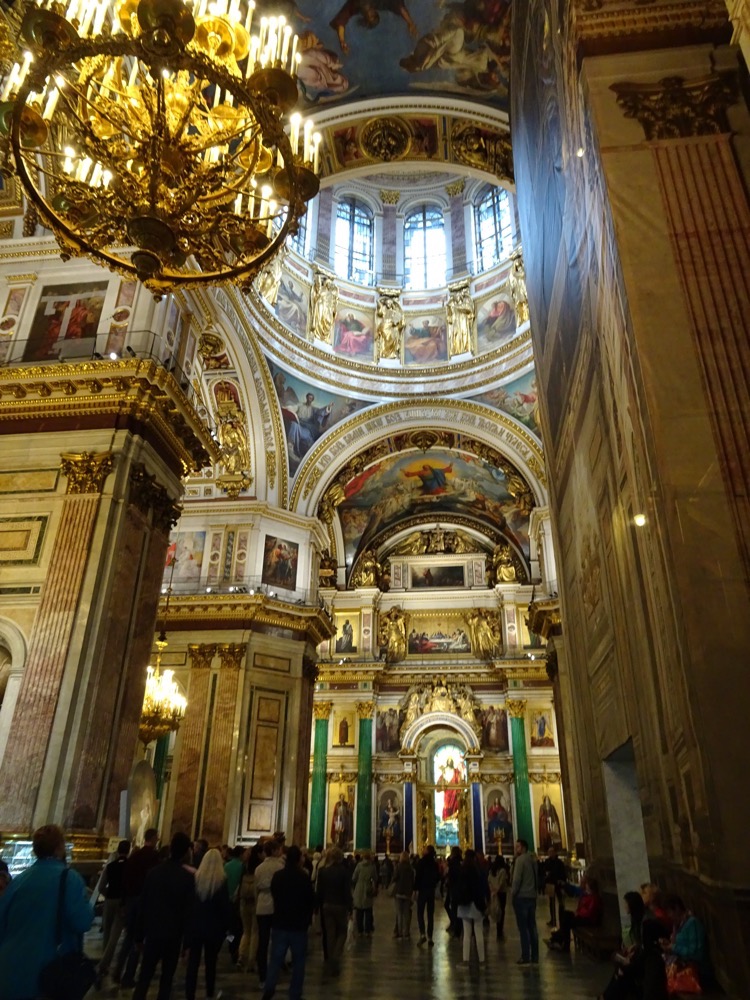
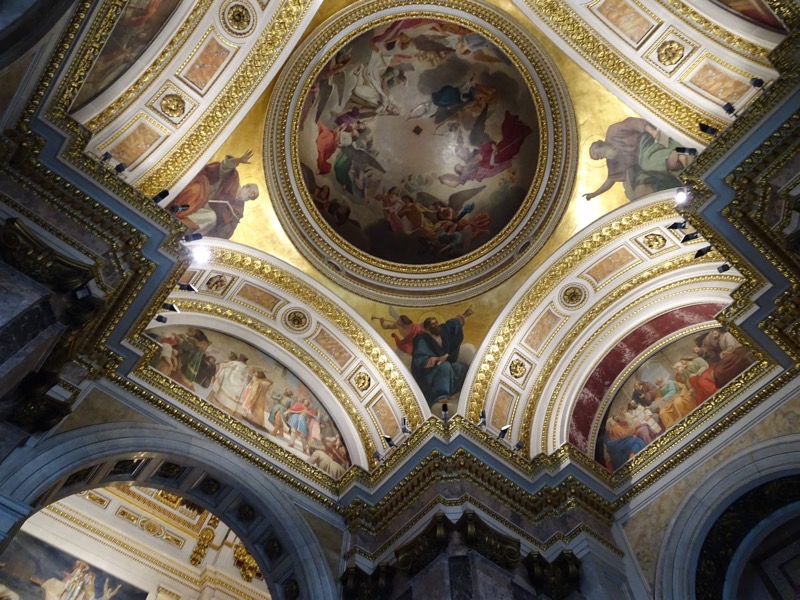
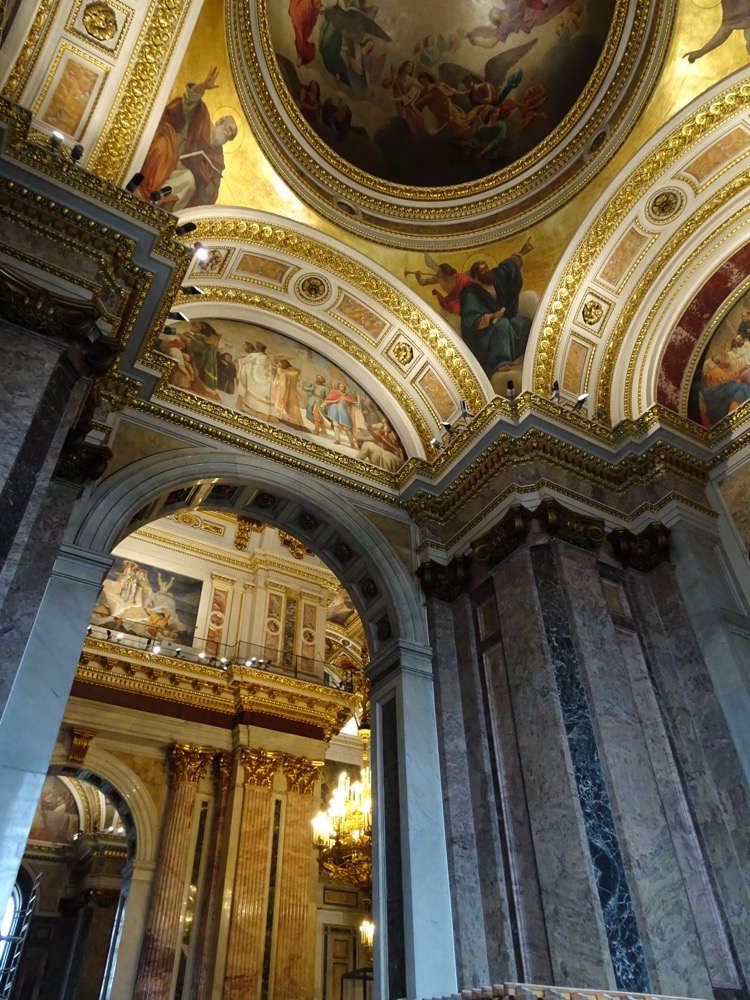
Montferrand moved to St Petersburg from 1818 to 1858 to oversee the construction which took a full 40 years to completion – the cathedral’s foundations were strengthened by driving 25,000 piles into the fenland of Saint Petersburg and innovative methods were created to erect the giant columns of the portico. Montferrand dedicated his life to creating this edifice, and his one wish was to be buried here in his creation, but the Emperor would not allow it, as Montferrand was Roman Catholic and this was an orthodox church.
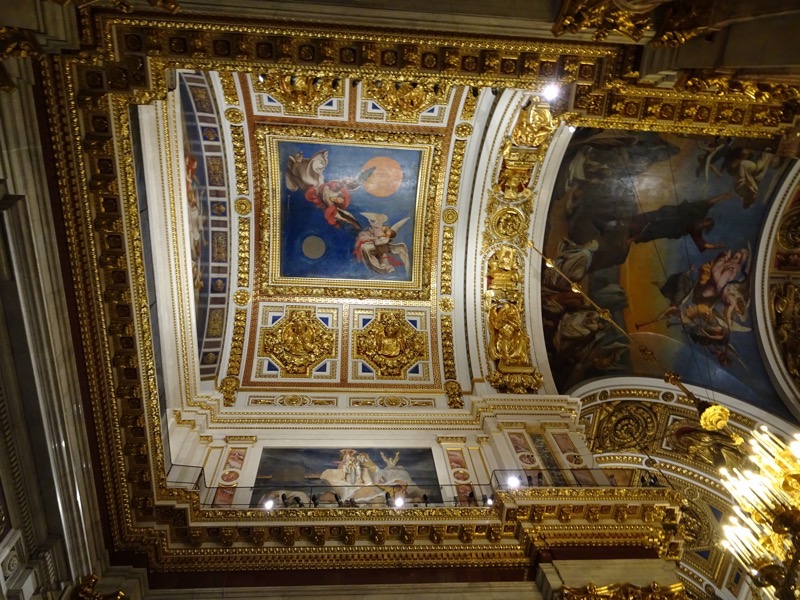
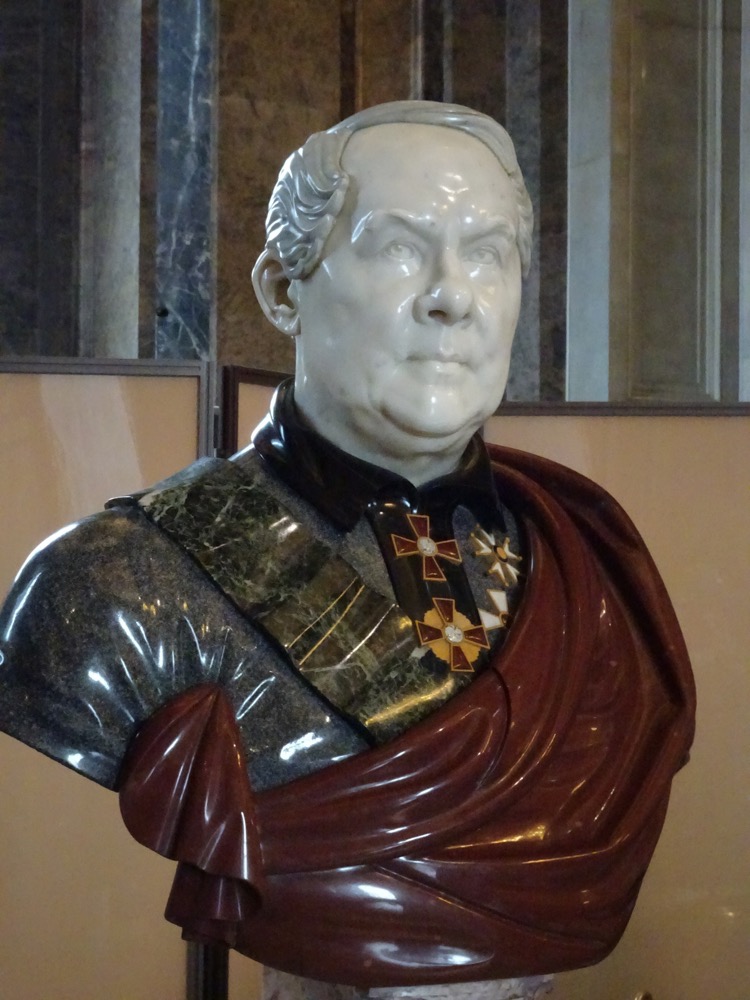
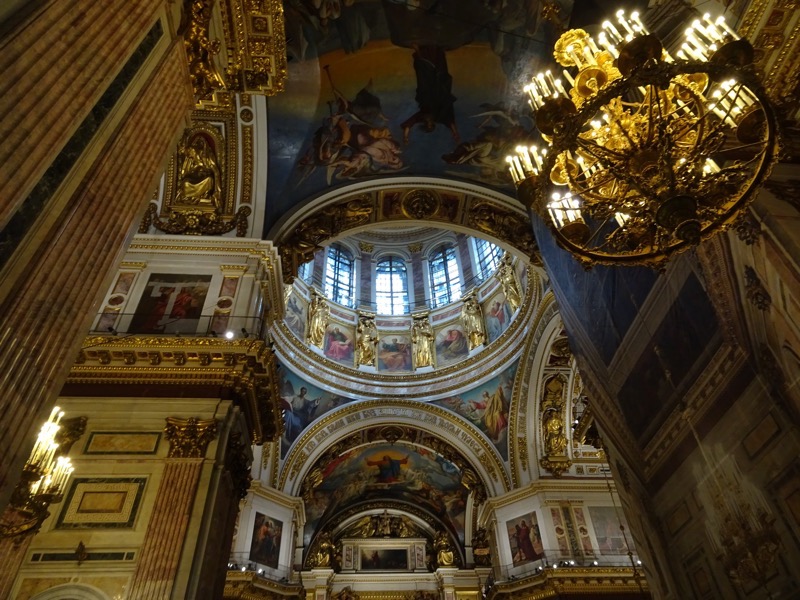
The Cathedral has had a spotted history – during the Soviet era, most of the building was stripped of its religious treasures and iconographies, and in 1931 it was turned into the Musuem of History of Relgion and Atheism. The dove sculpures were removed and replaced by a Foucault pendulum. Further, during WWII, the dome was painted over in gray paint to avoid attracting enemy air craft, and on it’s top in the skylight of the dome, a geodesical intersection point was installed to assist in determining the positions of German artillery.
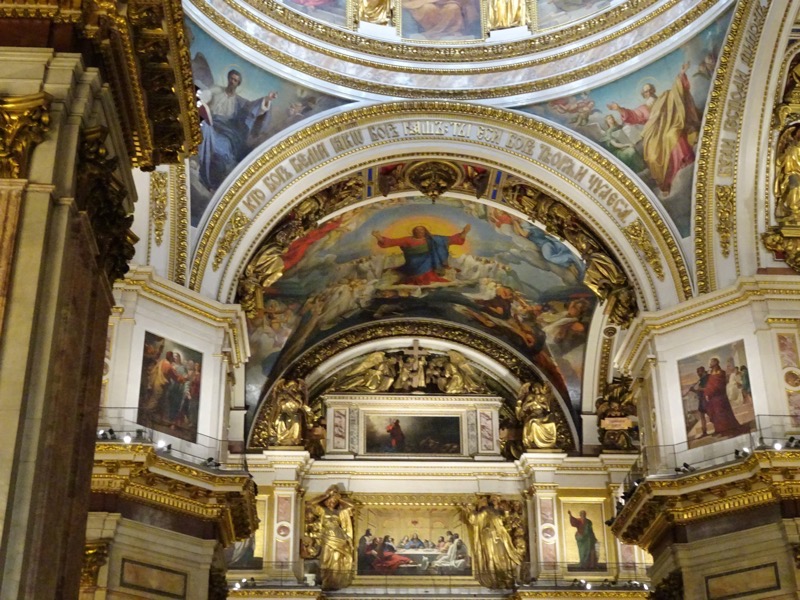
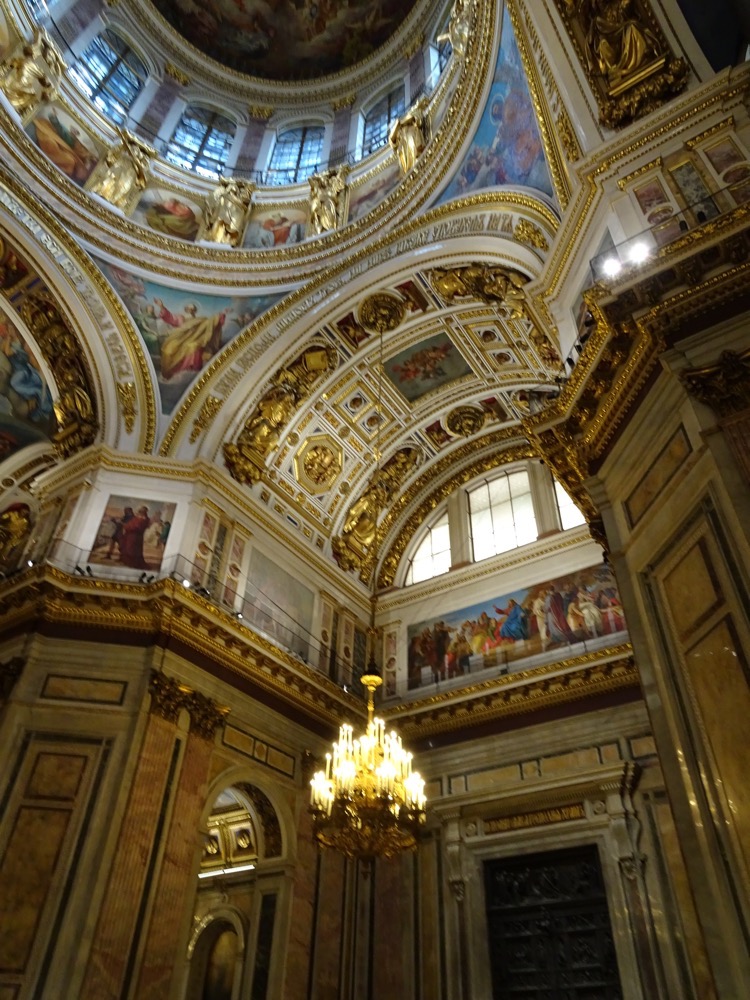
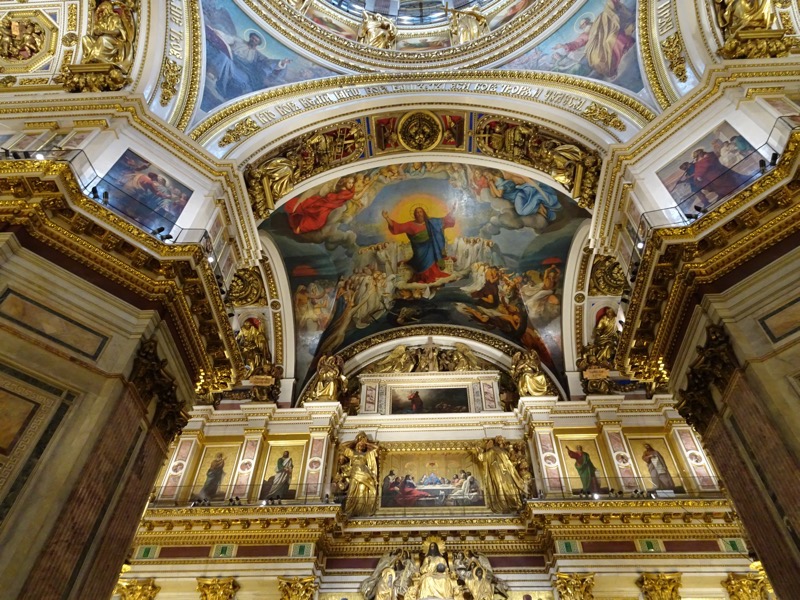
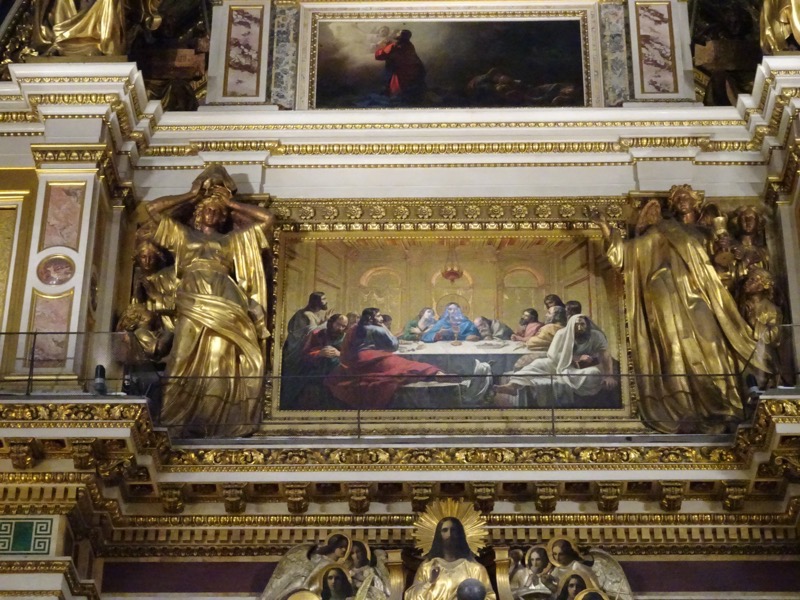 By Maria’s account – the church continues to have a somewhat dubious place in social history. The state has funded any restoration, management and administration of the Church in recent years. It has been a pet project of Putin’s to maintain and upkeep this particular cathedral, however recently, it has been handed over to Church control, which means the income from St Isaac’s Cathedral, and the Church of the Spilled Blood will no longer be open to public scrutiny. Instead the Church will be able to do as they please with tourist income received from these two iconic sites… the people are not happy about this change of plan, and there is some speculation that Putin’s cronies stand to benefit from these new financial arrangements. So much so, that various sectors of the public and the tourism industry in particular are considering striking and protesting actions to attempt to return the control of these public treasures to public administration.
By Maria’s account – the church continues to have a somewhat dubious place in social history. The state has funded any restoration, management and administration of the Church in recent years. It has been a pet project of Putin’s to maintain and upkeep this particular cathedral, however recently, it has been handed over to Church control, which means the income from St Isaac’s Cathedral, and the Church of the Spilled Blood will no longer be open to public scrutiny. Instead the Church will be able to do as they please with tourist income received from these two iconic sites… the people are not happy about this change of plan, and there is some speculation that Putin’s cronies stand to benefit from these new financial arrangements. So much so, that various sectors of the public and the tourism industry in particular are considering striking and protesting actions to attempt to return the control of these public treasures to public administration.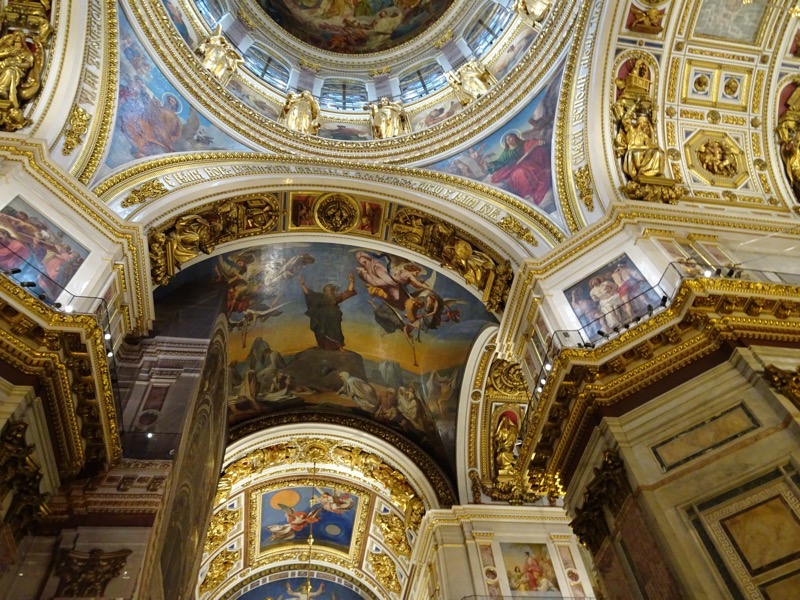
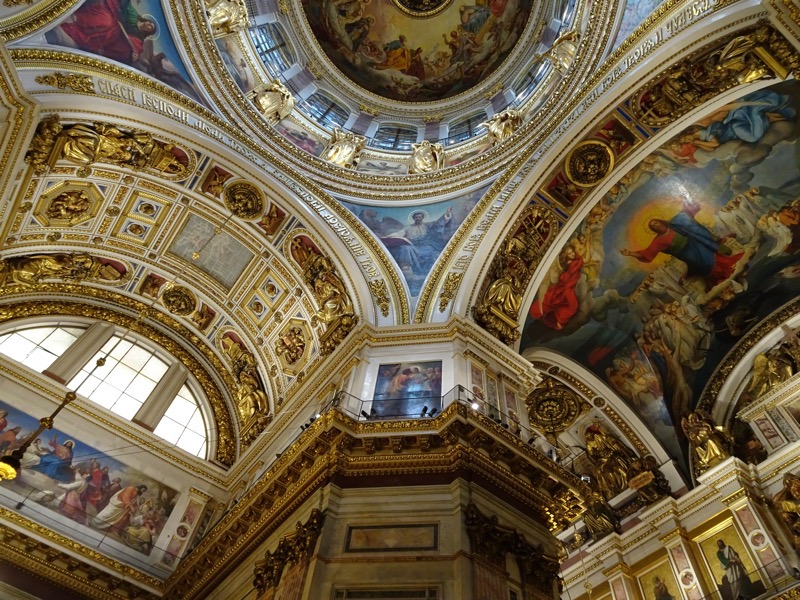
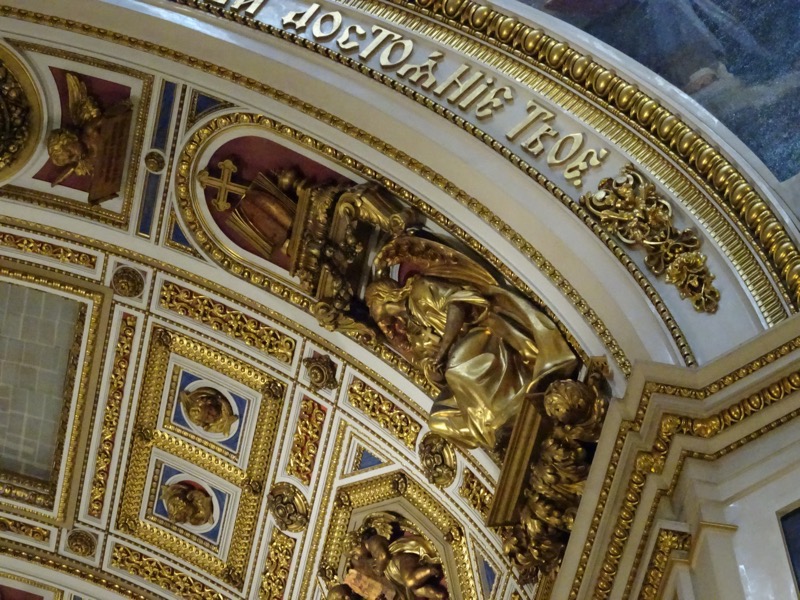
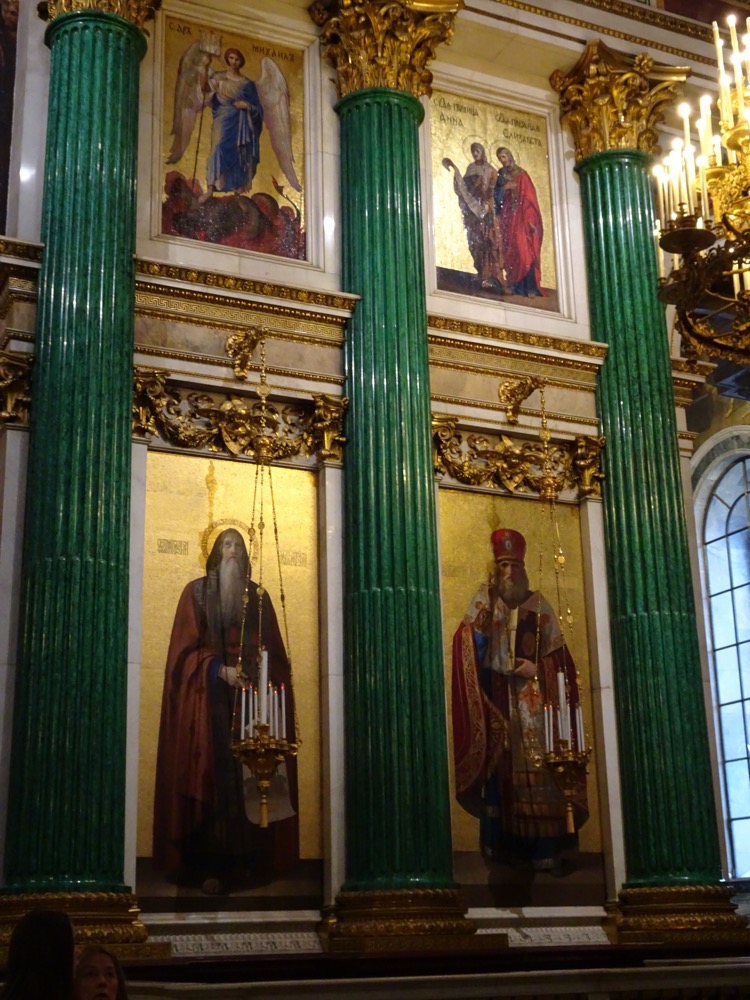
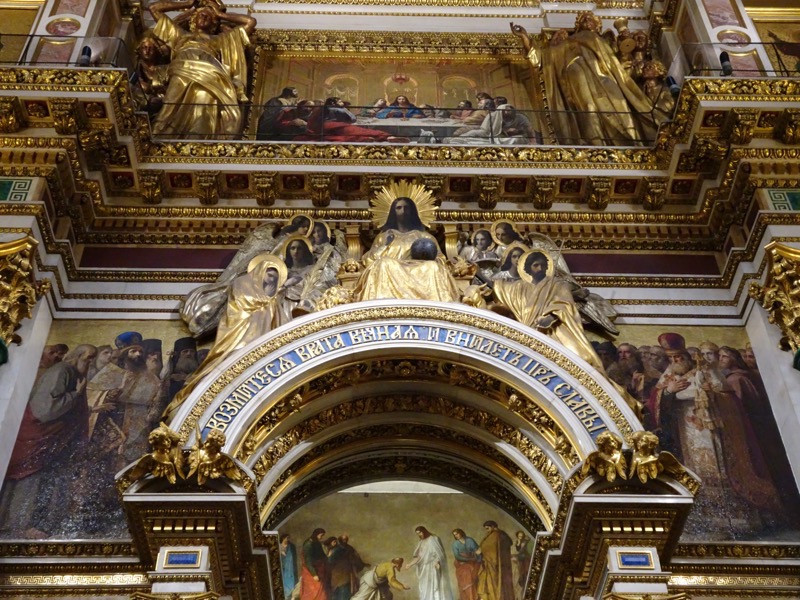
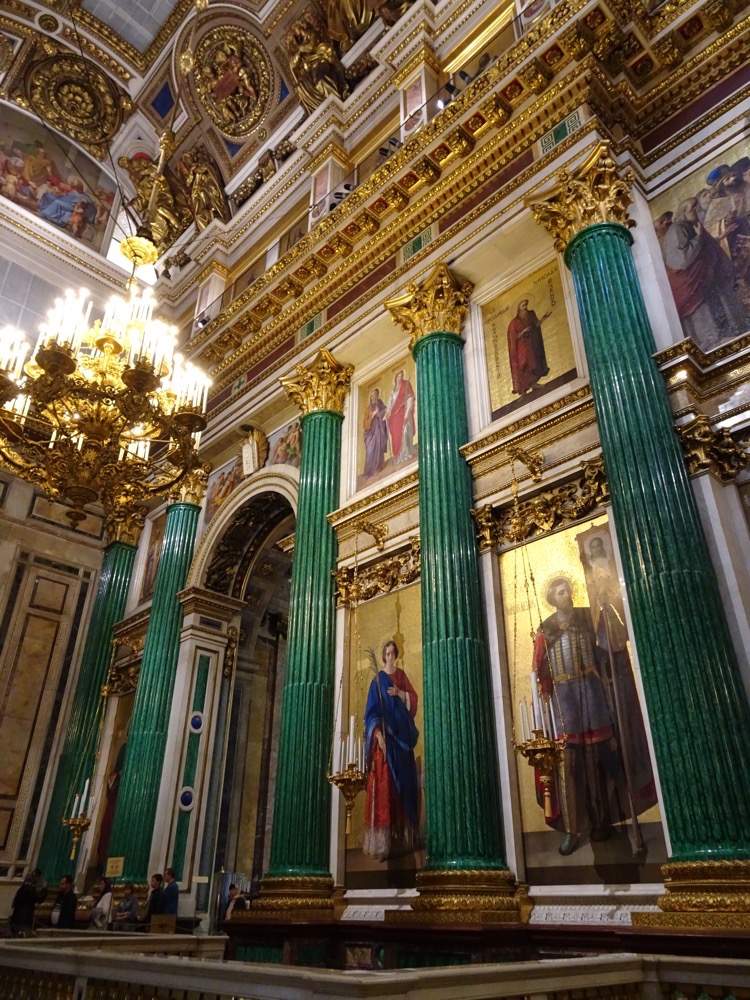 Incredible mosaic work, and so much carved and gilded timber, it was really quite breathtaking. The only church I have seen more impressive than this one was St Peter’s in Rome… and that I think was largely due to the sheer scale of it.
Incredible mosaic work, and so much carved and gilded timber, it was really quite breathtaking. The only church I have seen more impressive than this one was St Peter’s in Rome… and that I think was largely due to the sheer scale of it.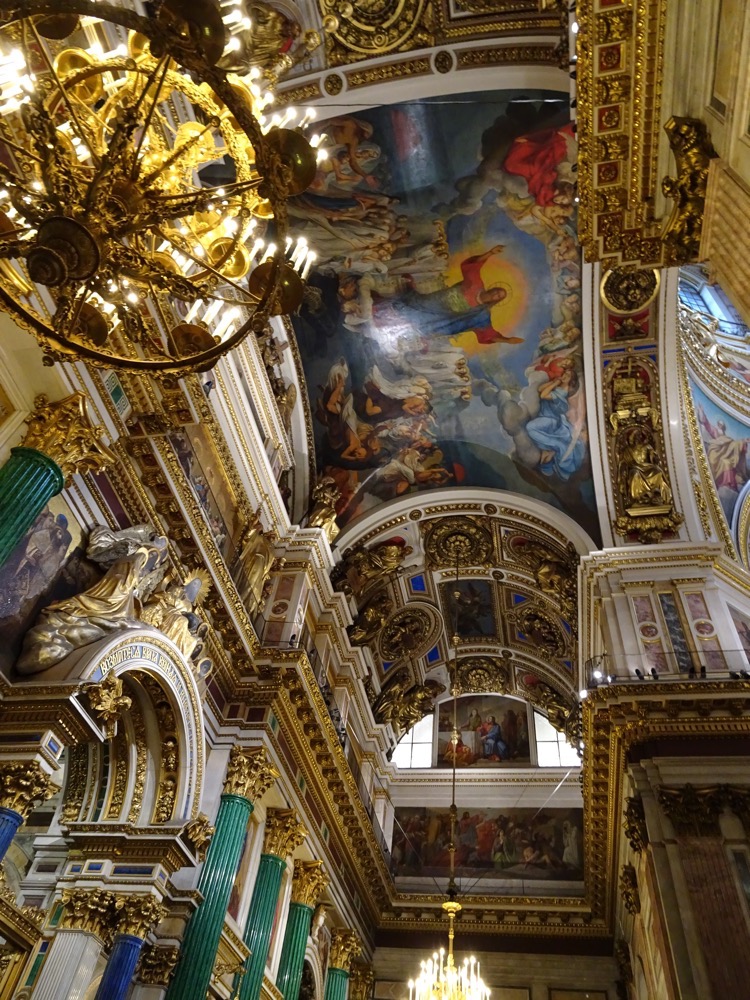
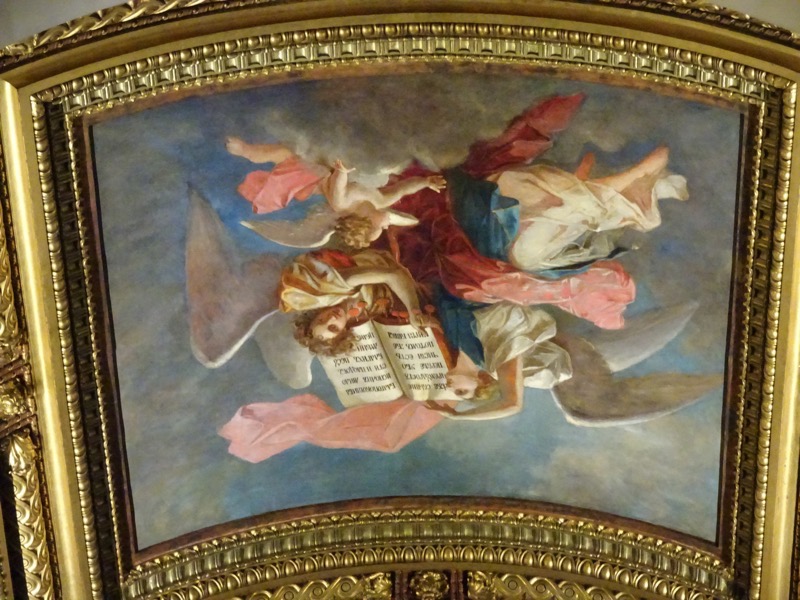 Detail of the mosaic work…
Detail of the mosaic work… 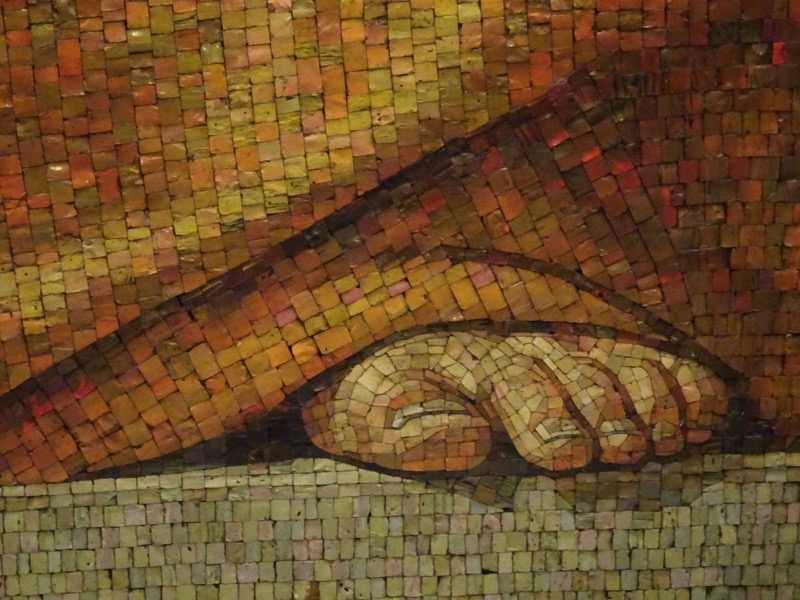
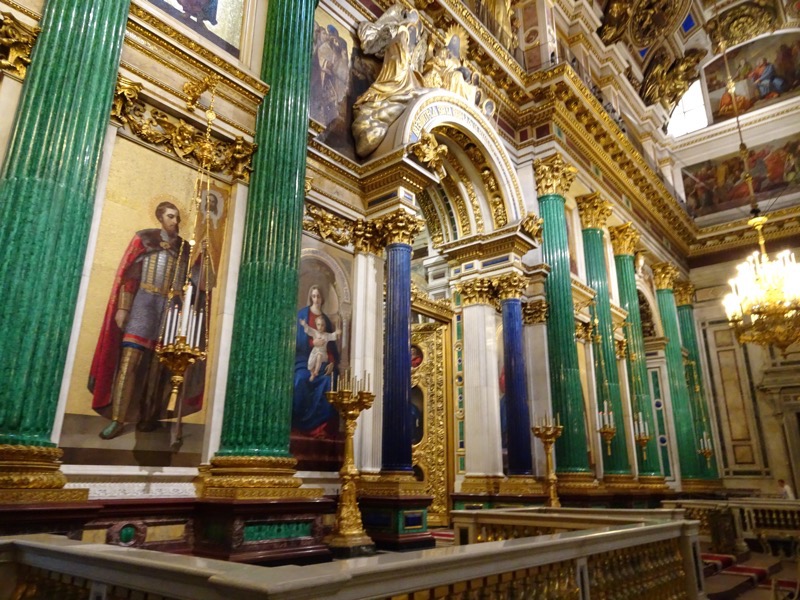
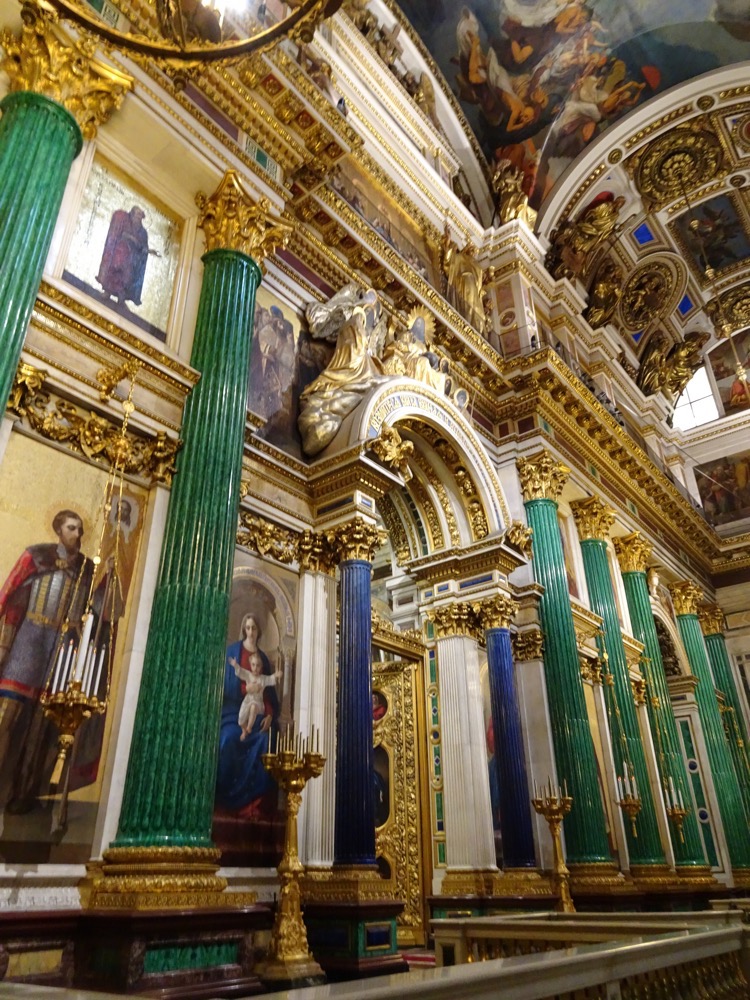
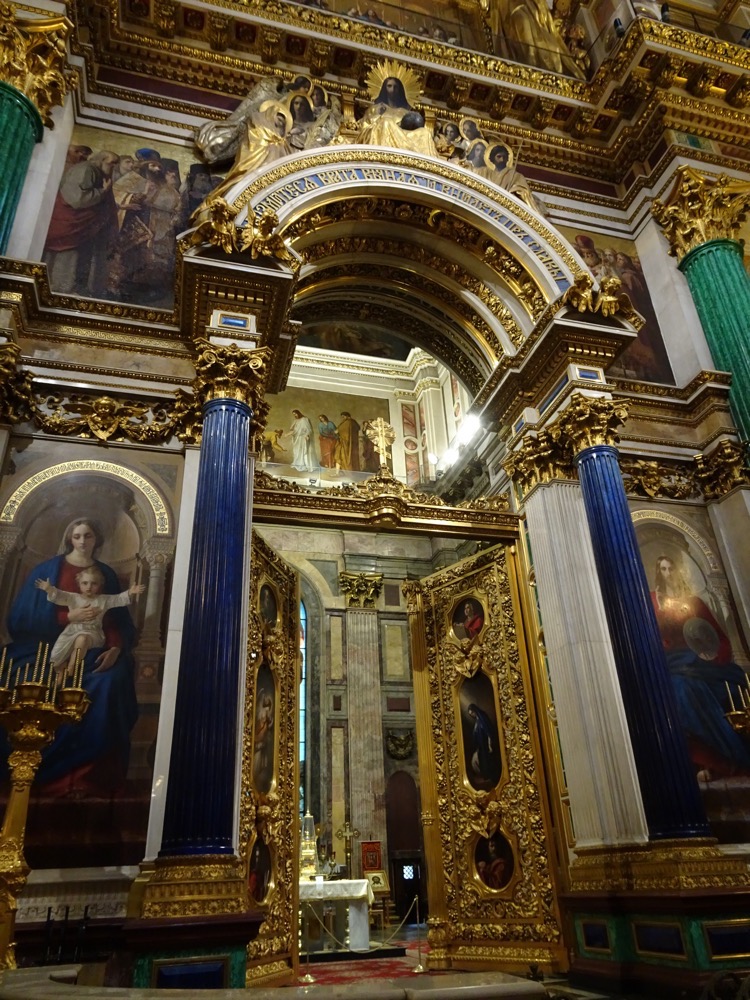
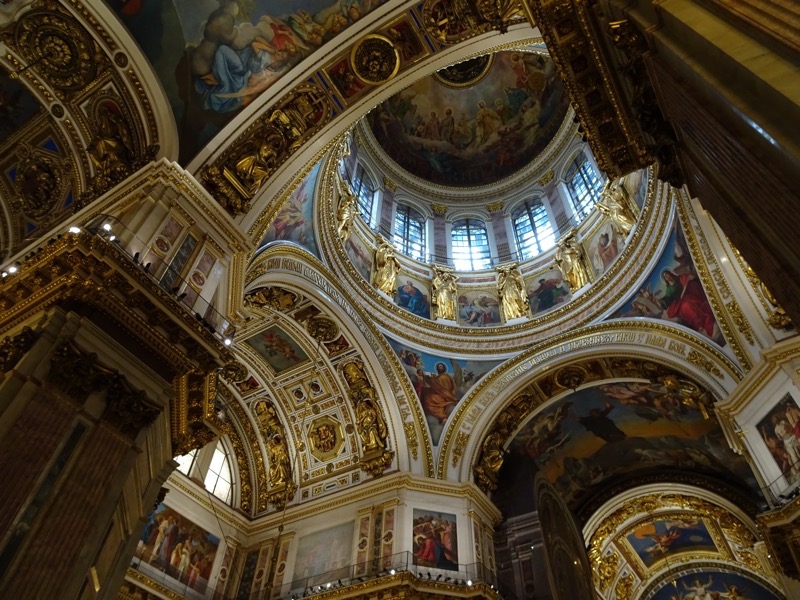
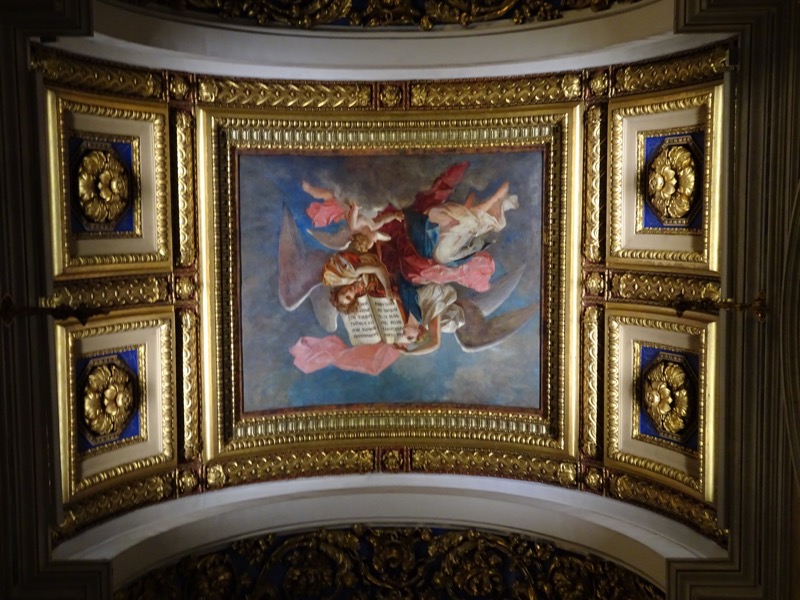
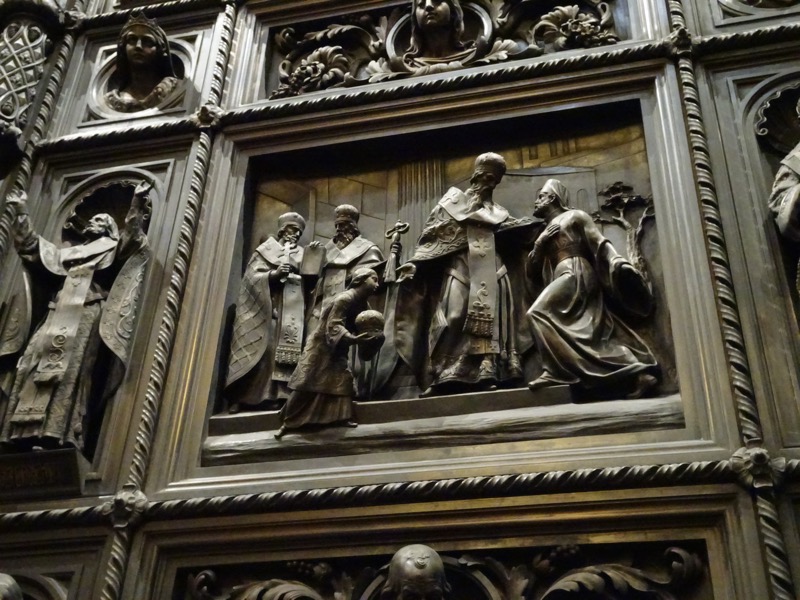
Next stop on our tour was the Yusupov Palace which was also known as the Moika Palace. It was the primary place of residence of the Family of Yusupov who were very close to the Romanovs. The building was also the place where the younger Yusupovs murdered Ra-Ra-Rasputin on December 17th, 1916.
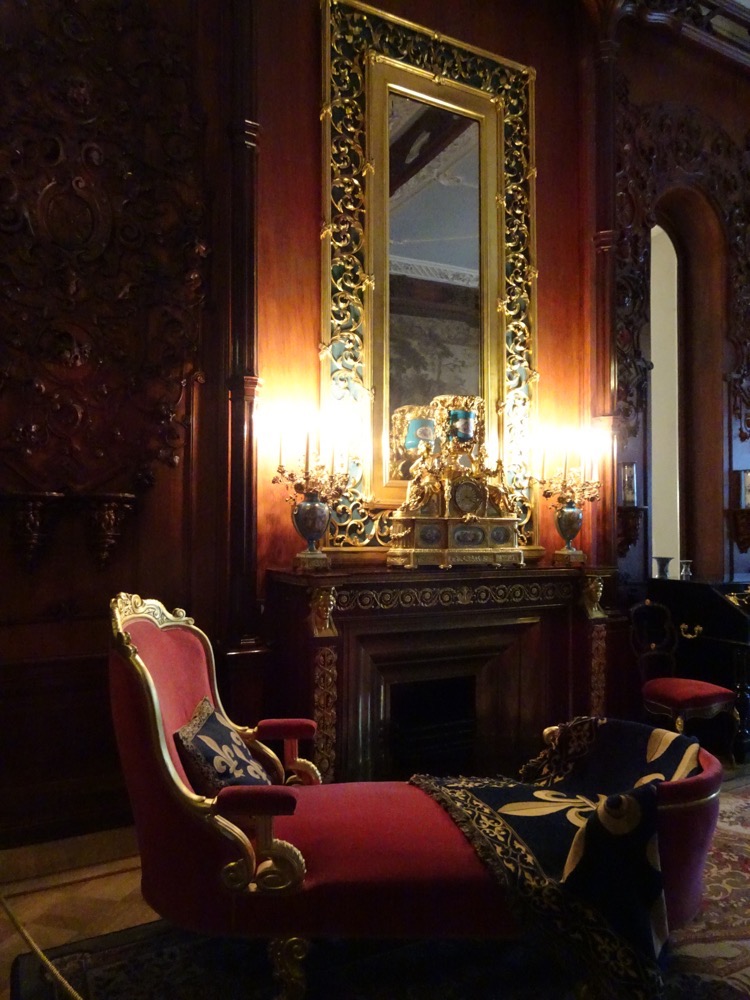
The palace was built around 1776 and from 1830 to 1917, the palace belonged to a noble Russian family called the House of Yusupov. They were immensely wealthy, close to the Romanovs and known for their philanthropic tendencies and their art collections. They had personally amassed more than 40,000 works of art, including works by Rembrandt, and expensive sculptures decorated the palace and expensive jewels decorated their persons. During the Russian Revolution, the family fled for their lives unable to take their treasured possessions with them, and the Yusupov art collection was nationalized and relocated in the Hermitage and other museums.
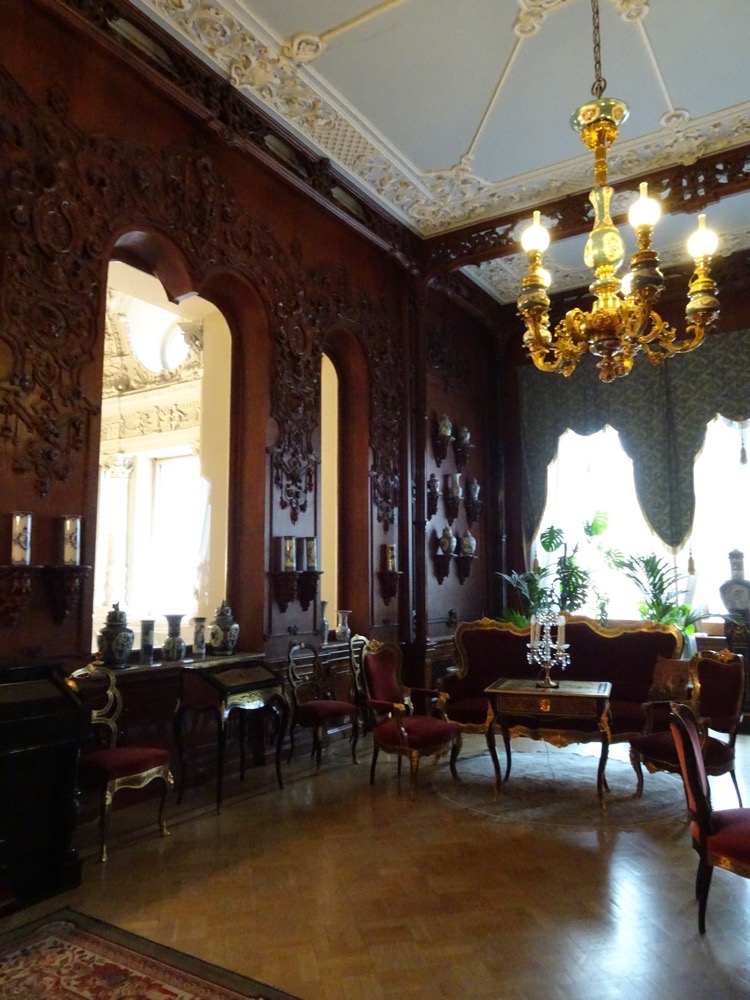
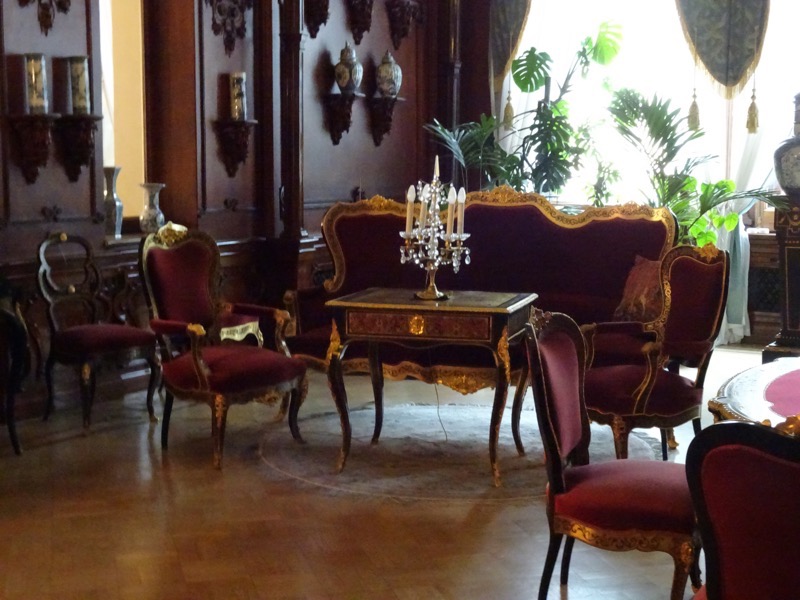 The palace was as lavishly decorated and appointed as the royal palaces of the time, the Yusupovs were extremely wealthy – though the rooms and spaces are not as large as the royal residences.
The palace was as lavishly decorated and appointed as the royal palaces of the time, the Yusupovs were extremely wealthy – though the rooms and spaces are not as large as the royal residences.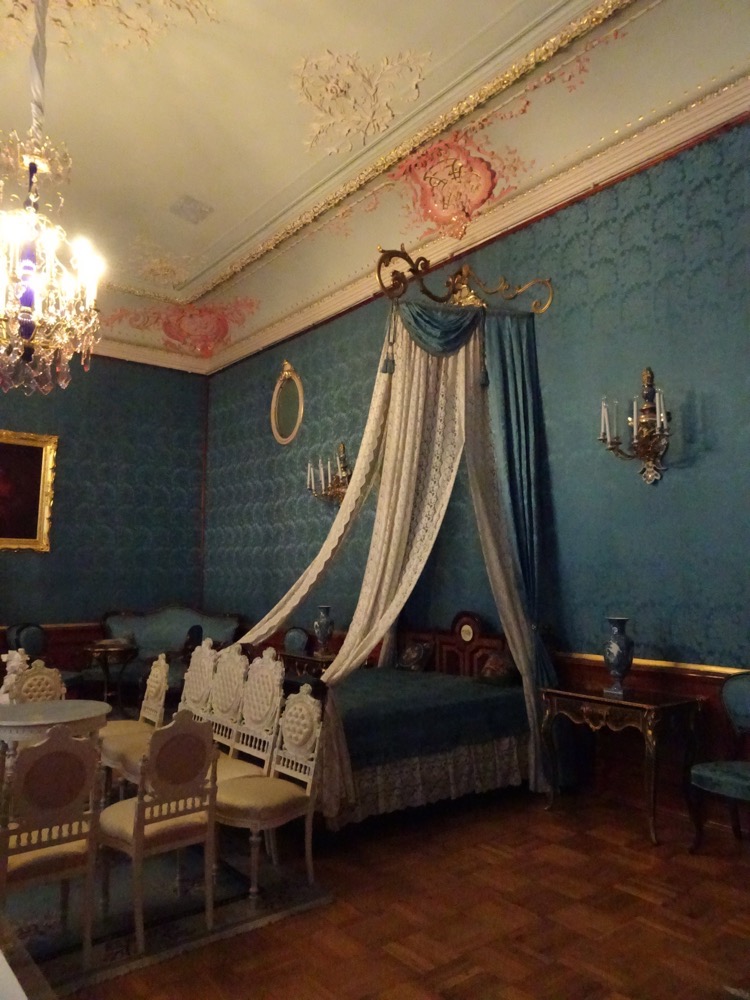
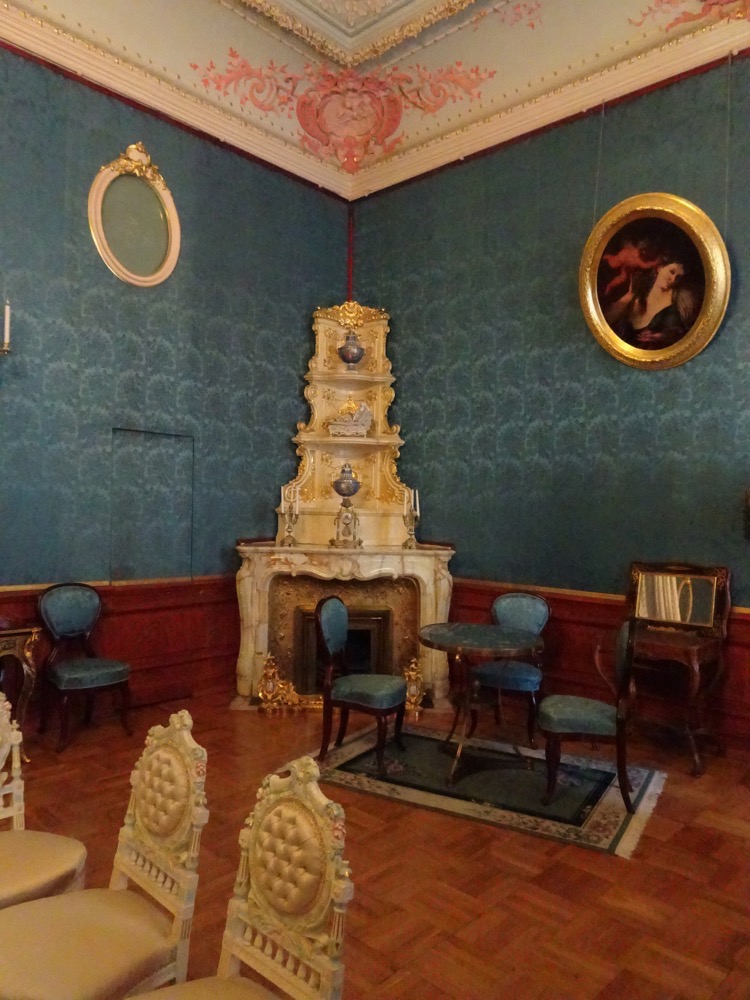
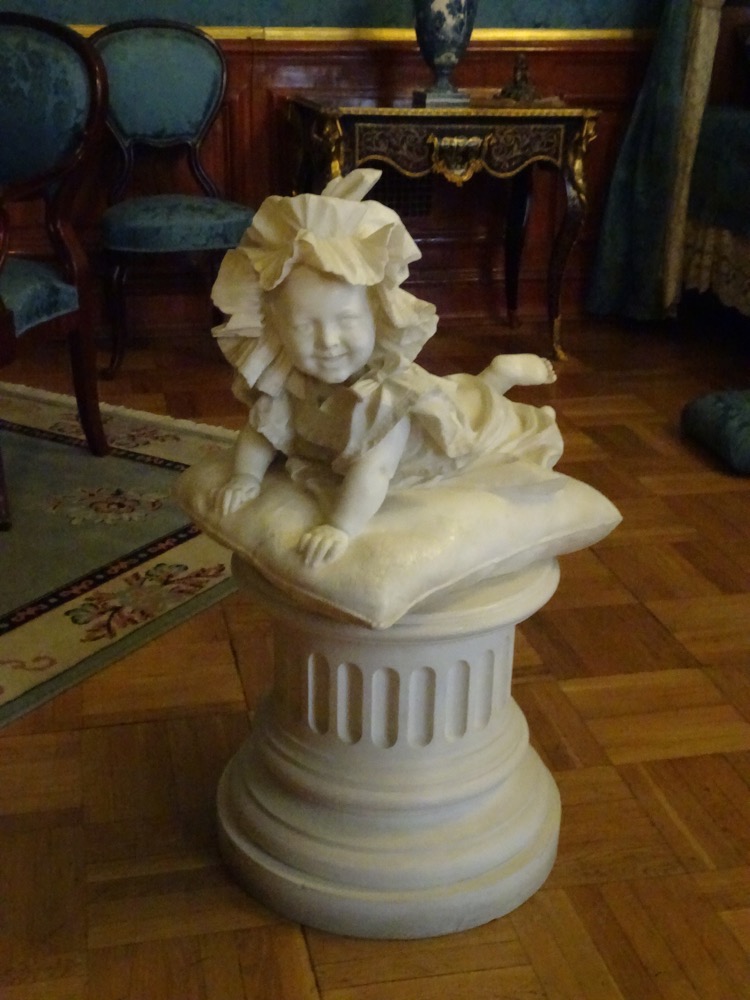
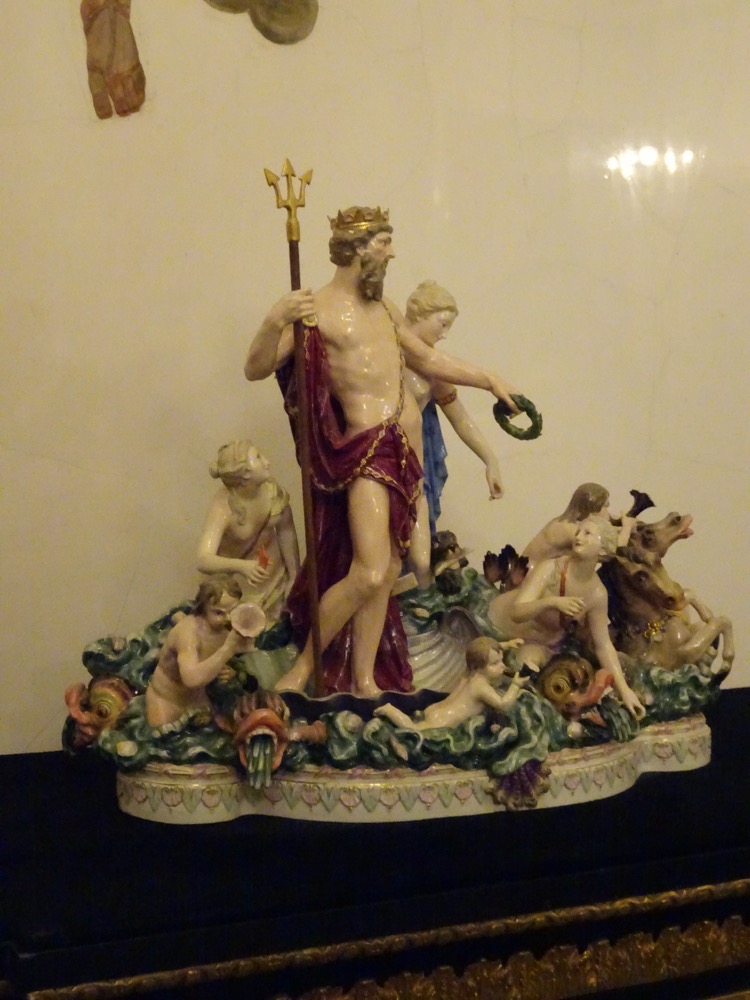
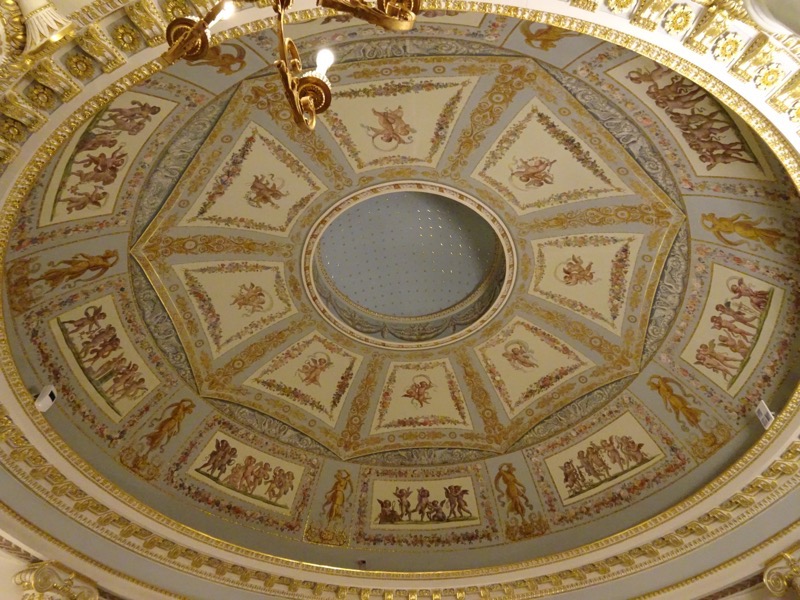
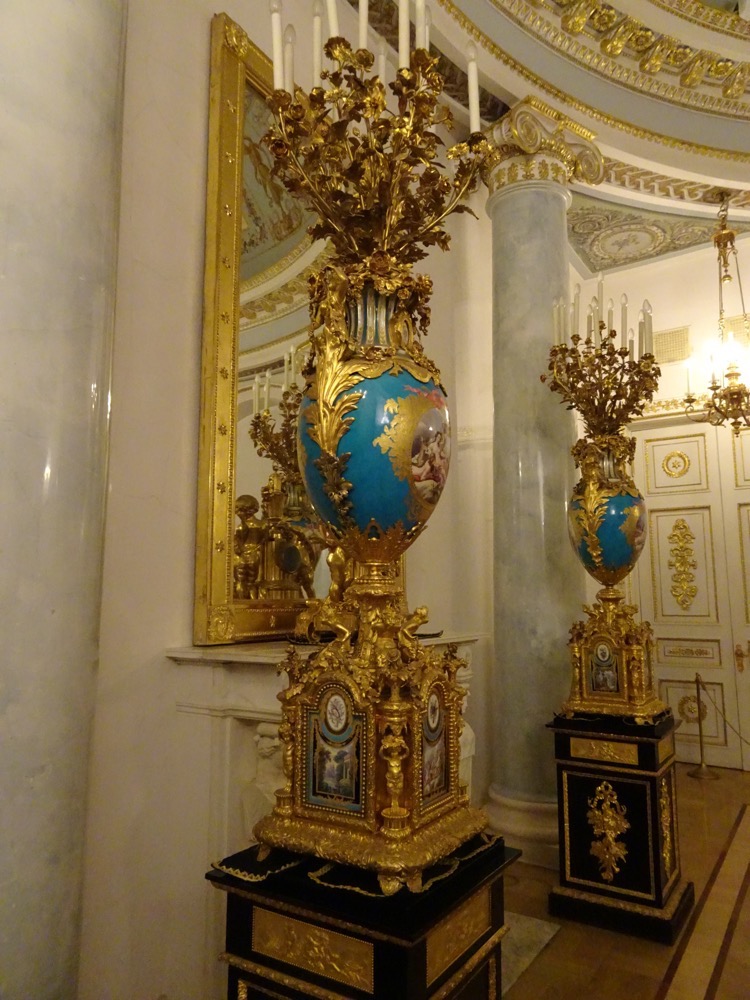
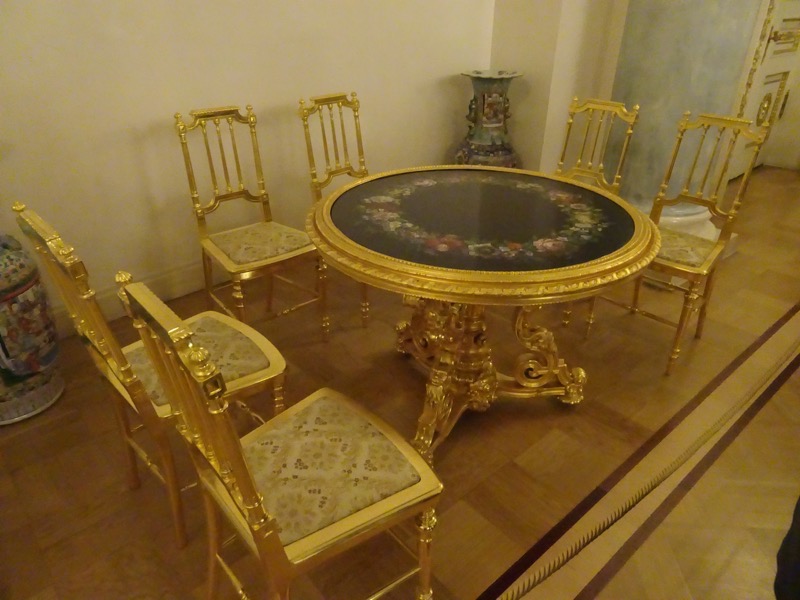
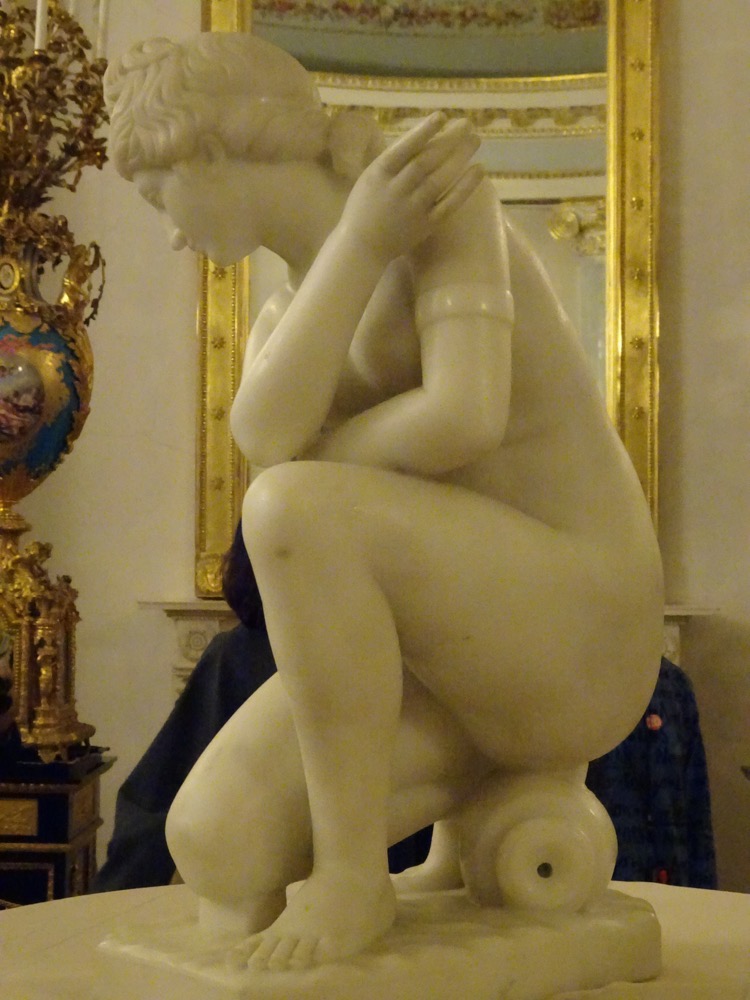
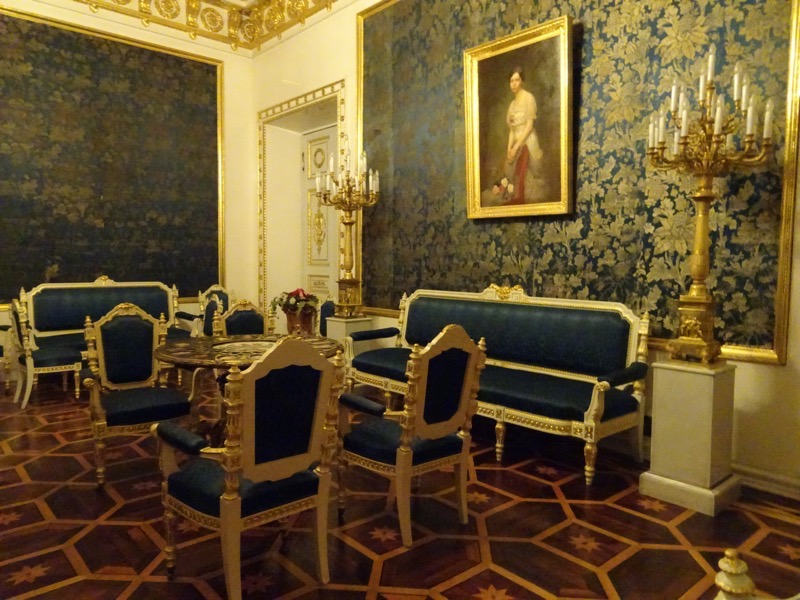
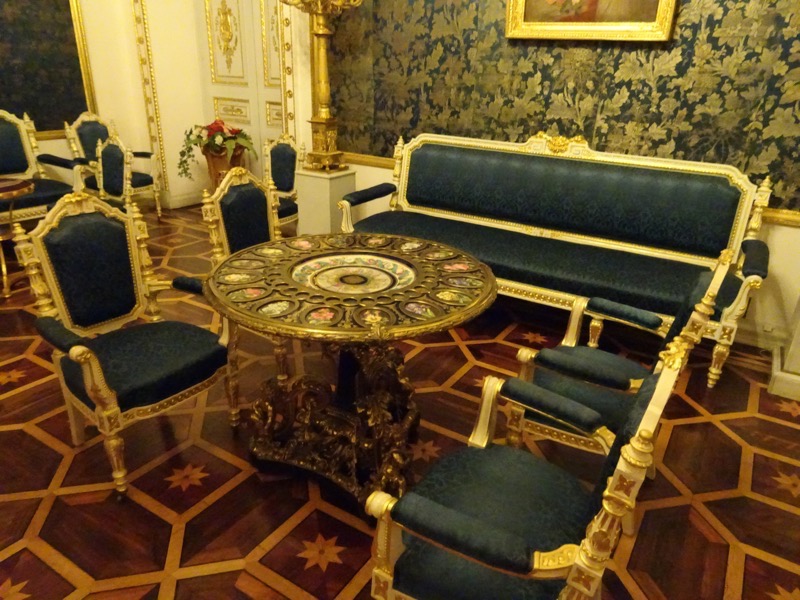
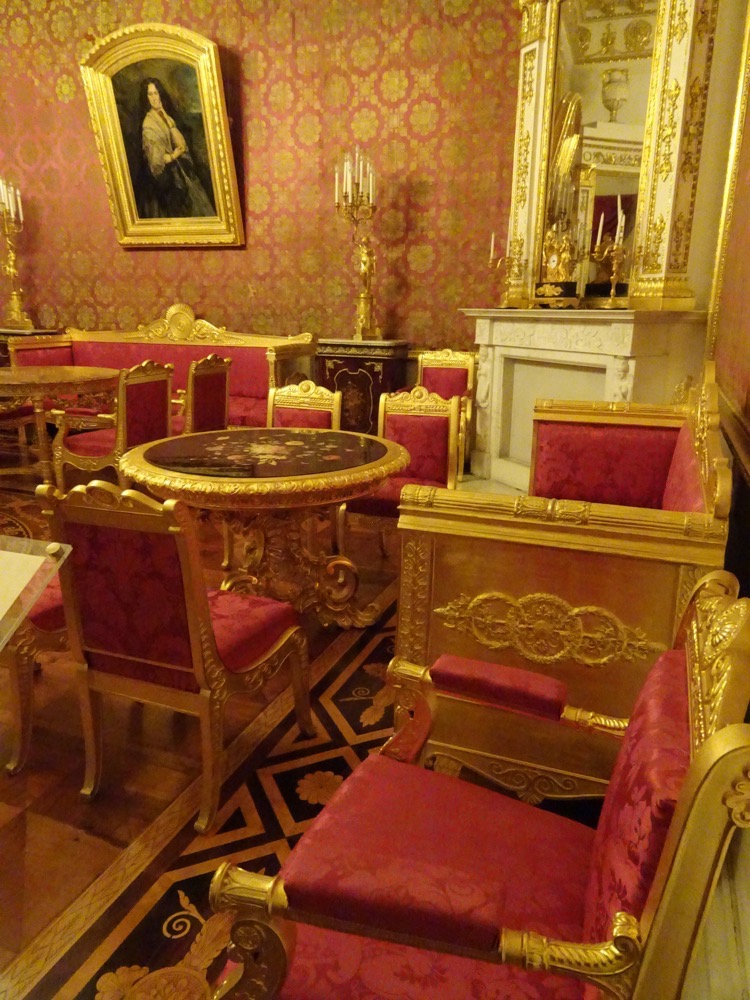
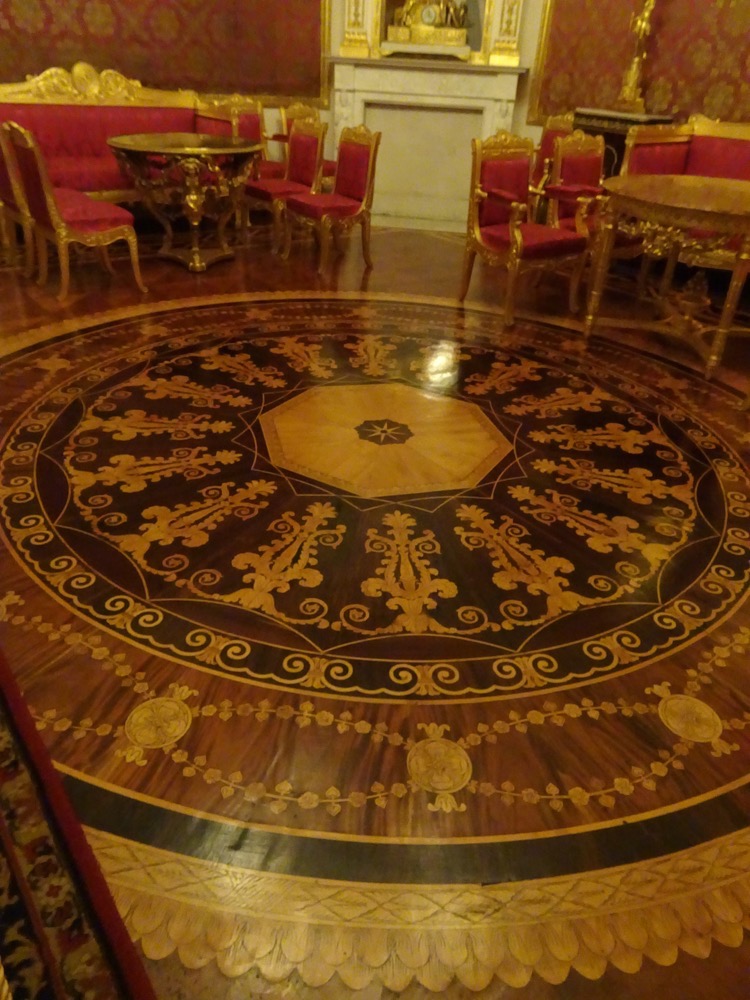
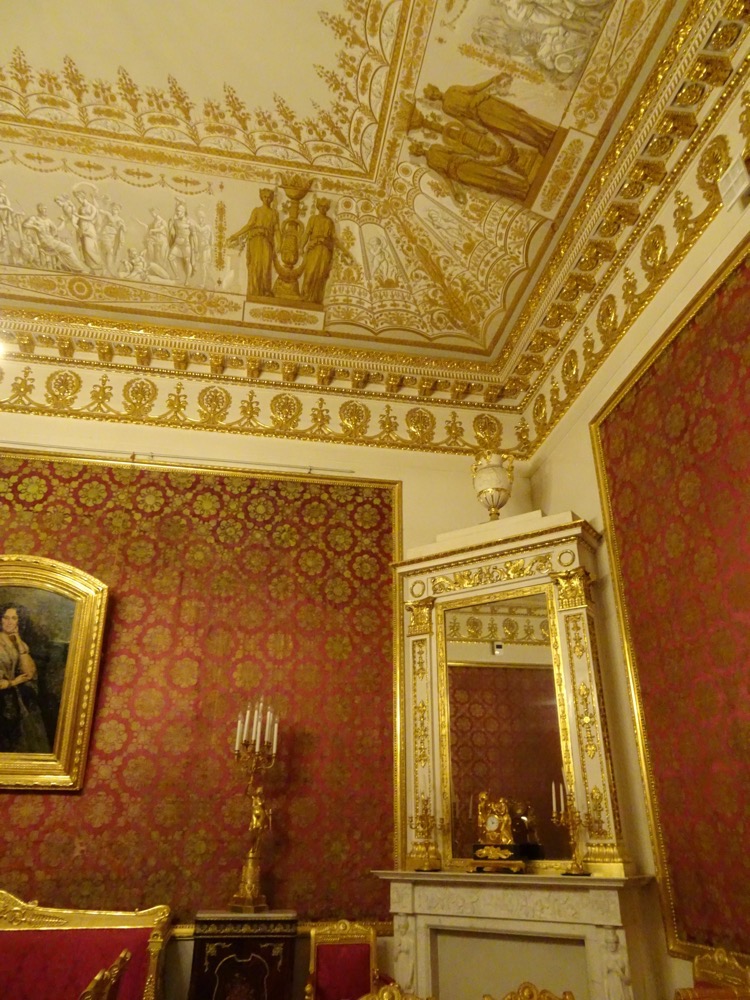
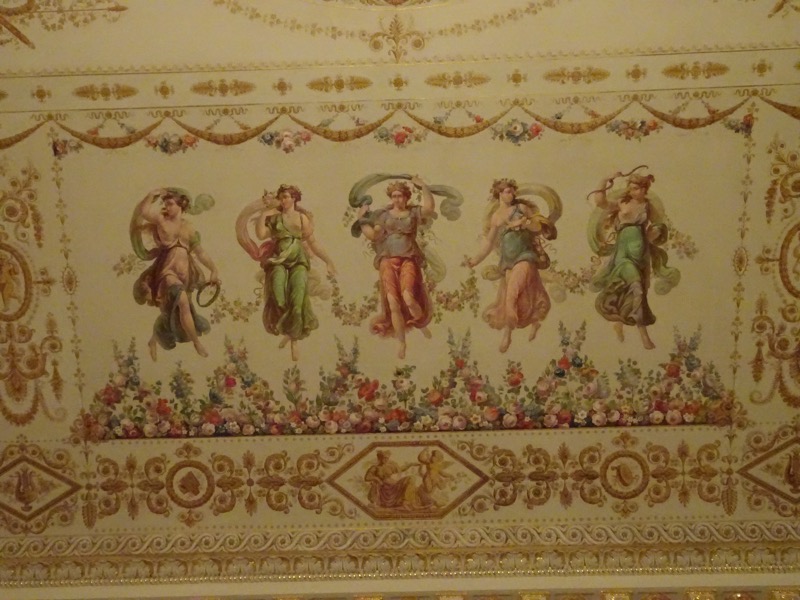
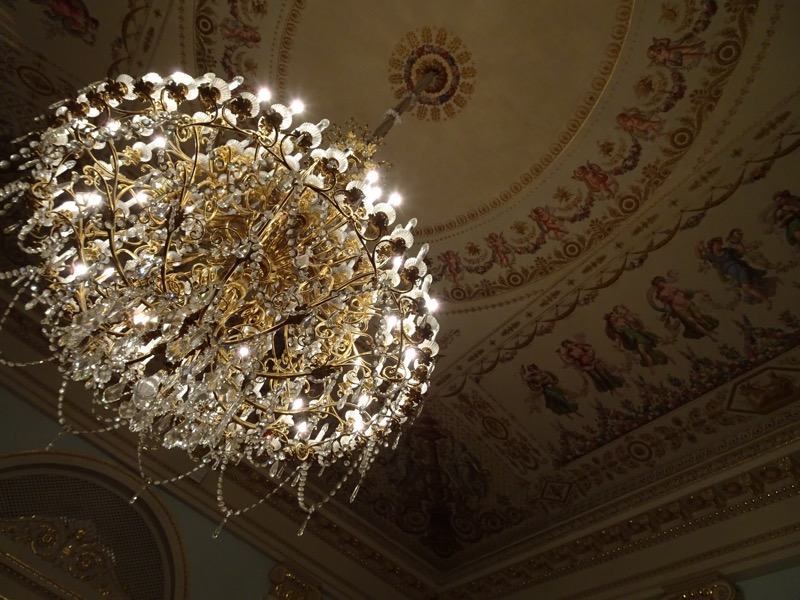
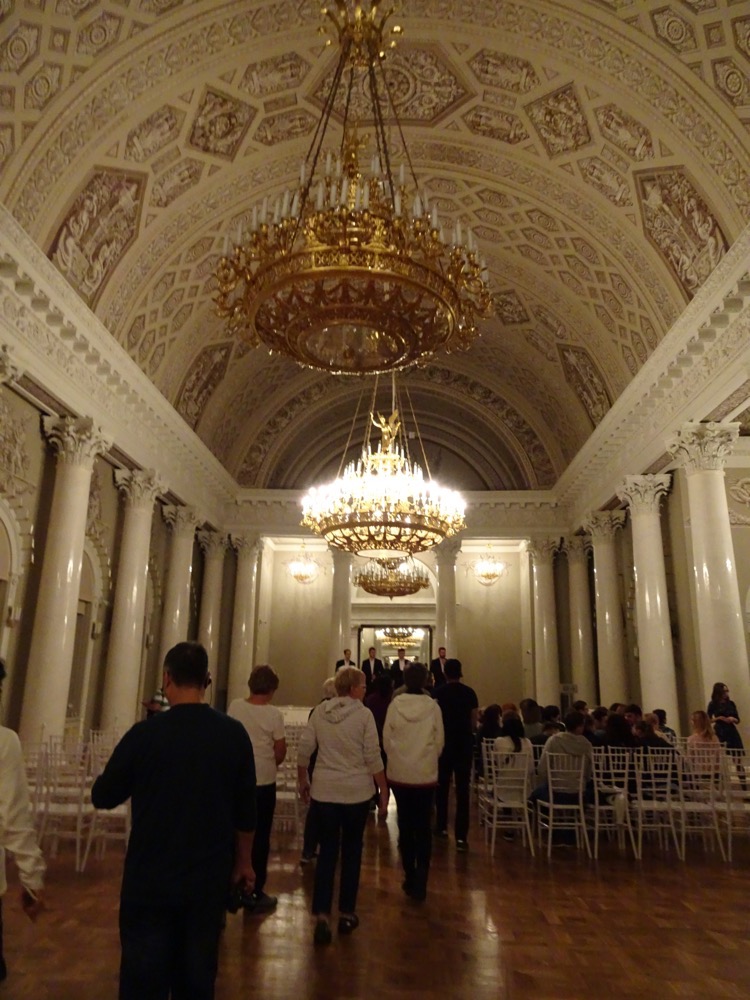
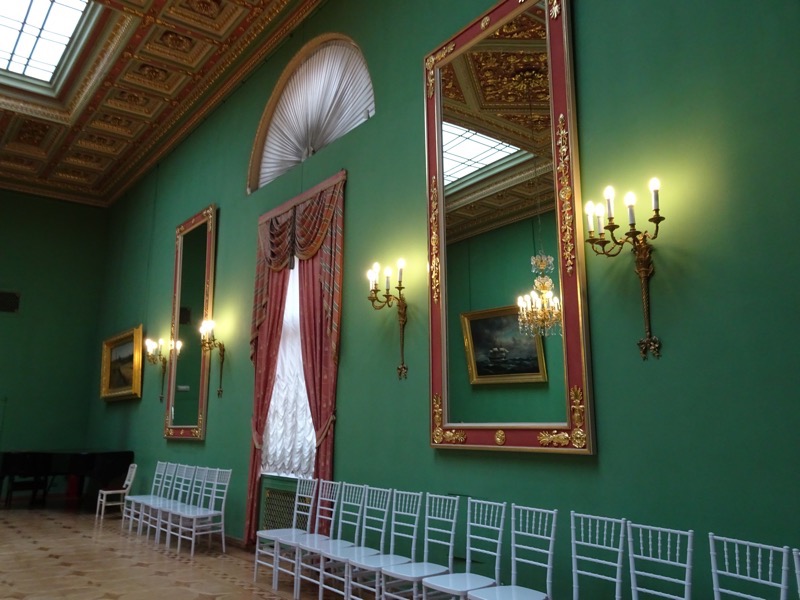
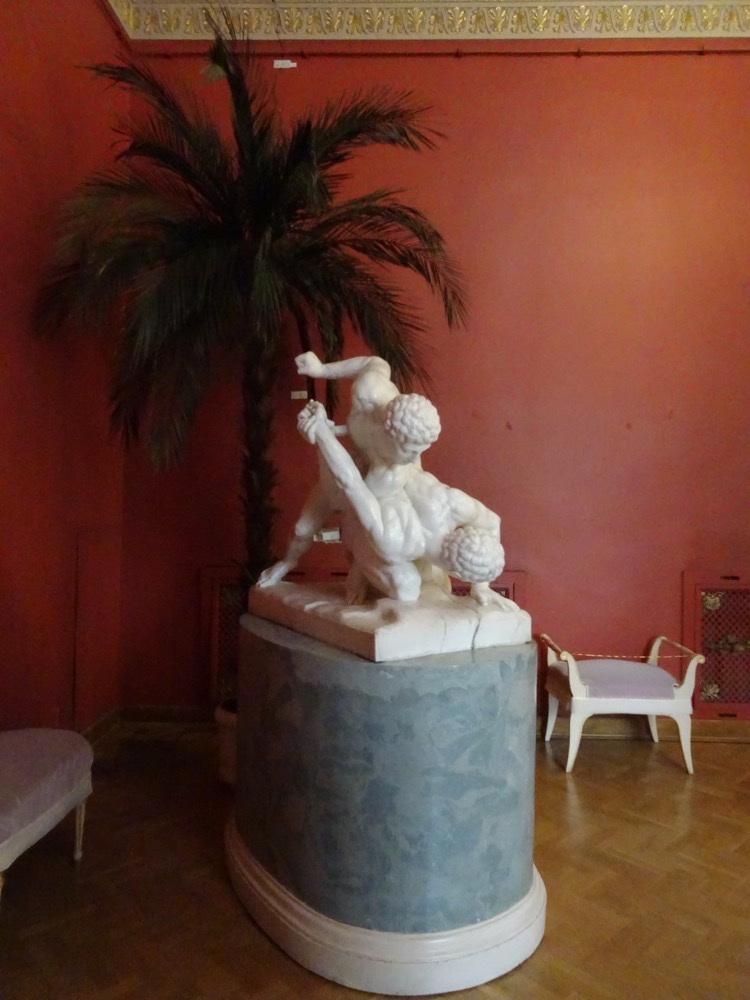
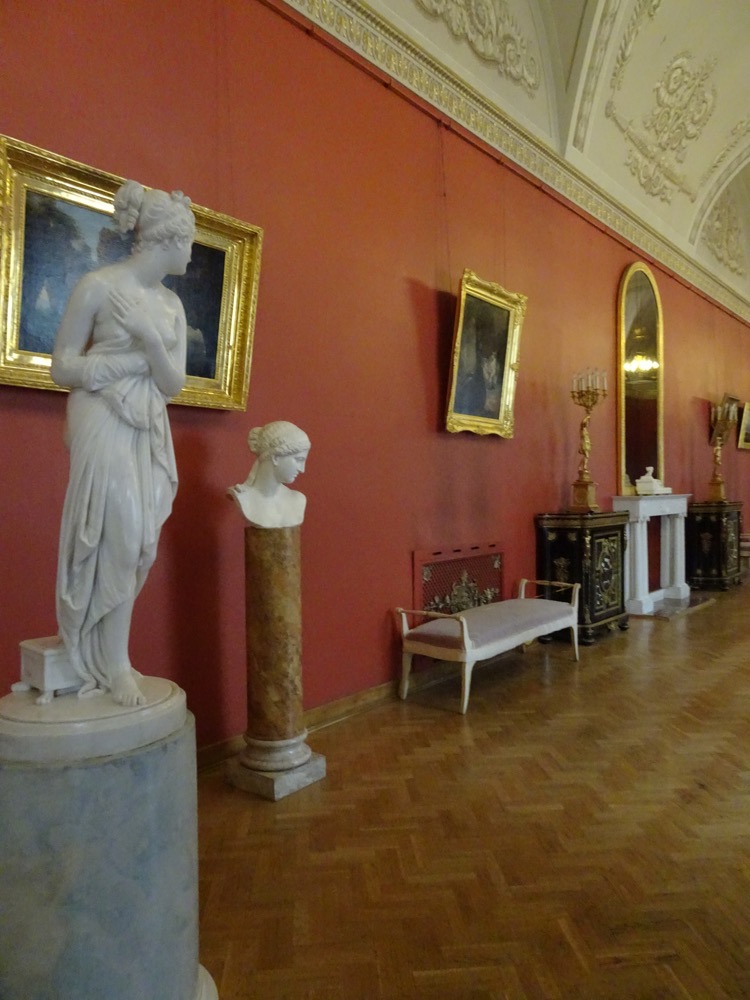
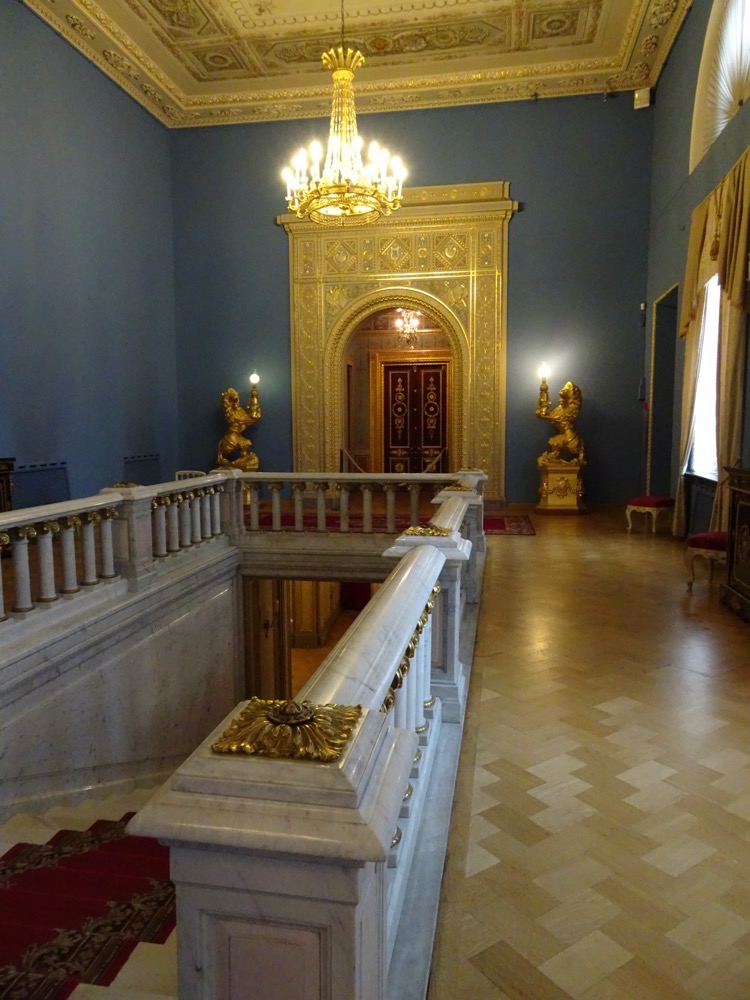 Inside the Yusupov Palace is a private theatre that was built to entertain family and friends for private ballet and opera performances. This was the start of the current home theatre trend, I am sure of it!
Inside the Yusupov Palace is a private theatre that was built to entertain family and friends for private ballet and opera performances. This was the start of the current home theatre trend, I am sure of it!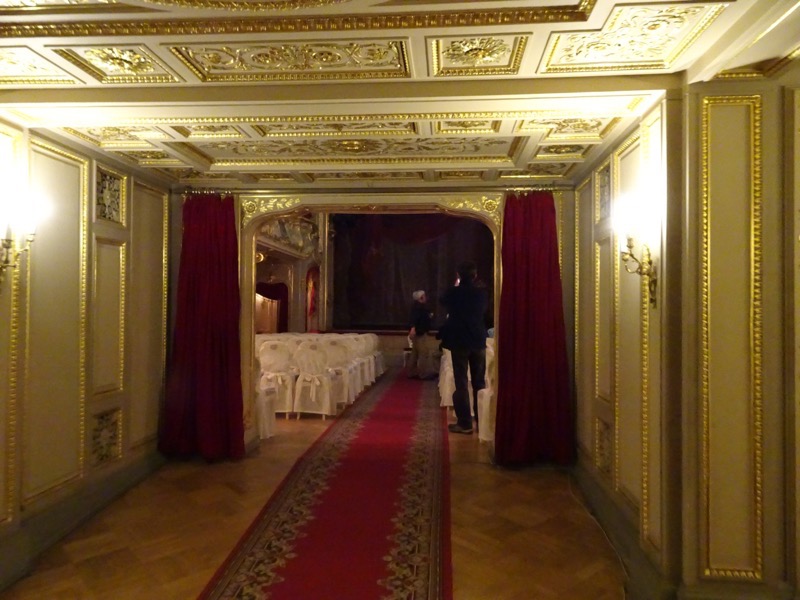
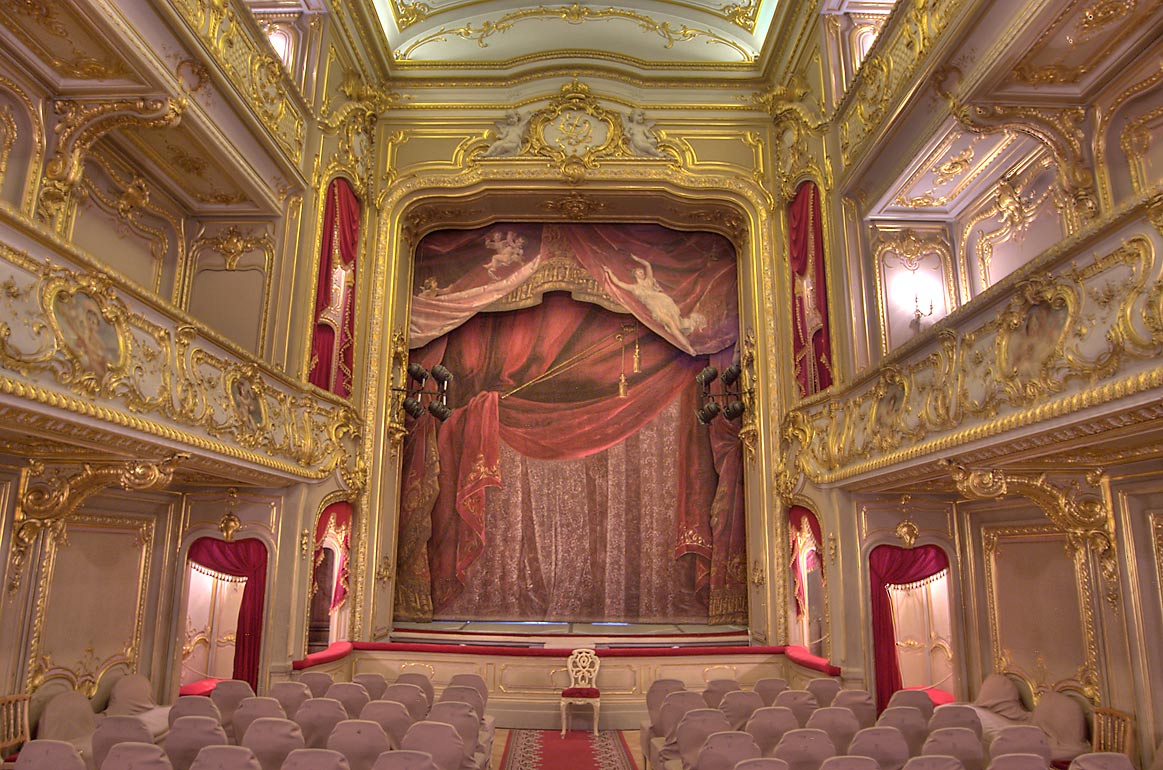
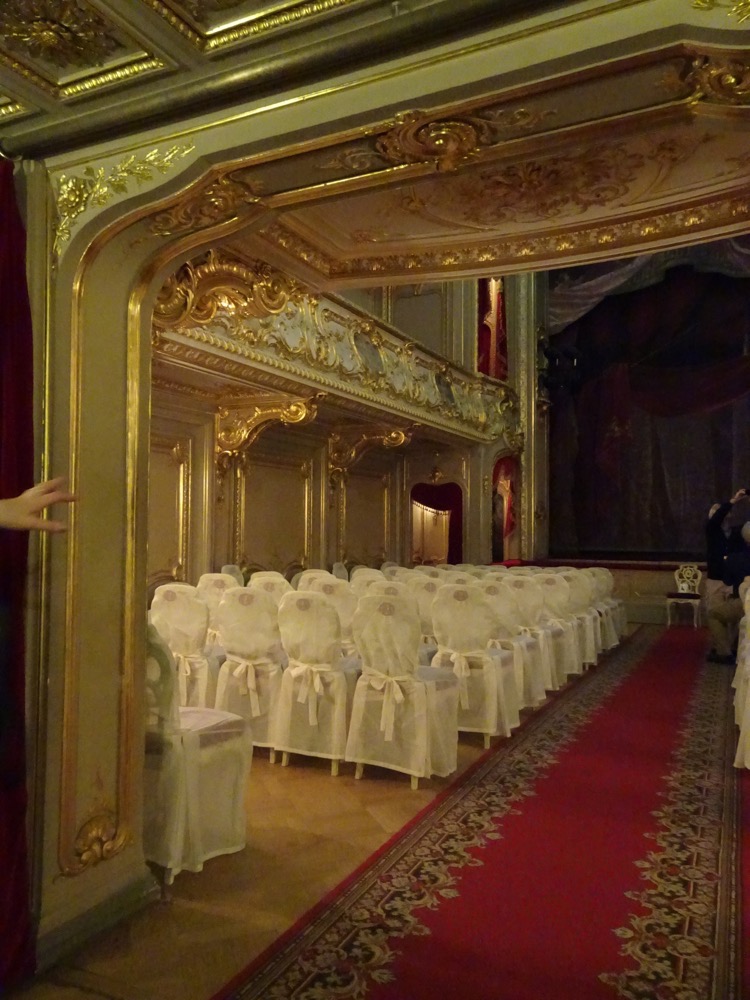 Though today, most people don’t do them in quite so much style. 😉
Though today, most people don’t do them in quite so much style. 😉 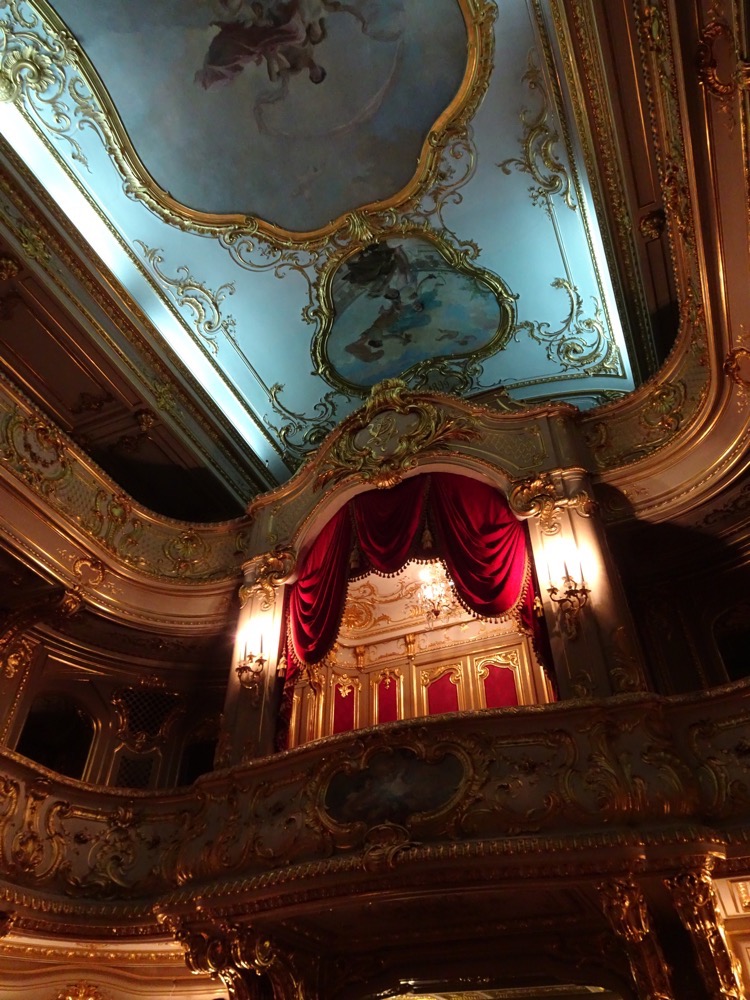
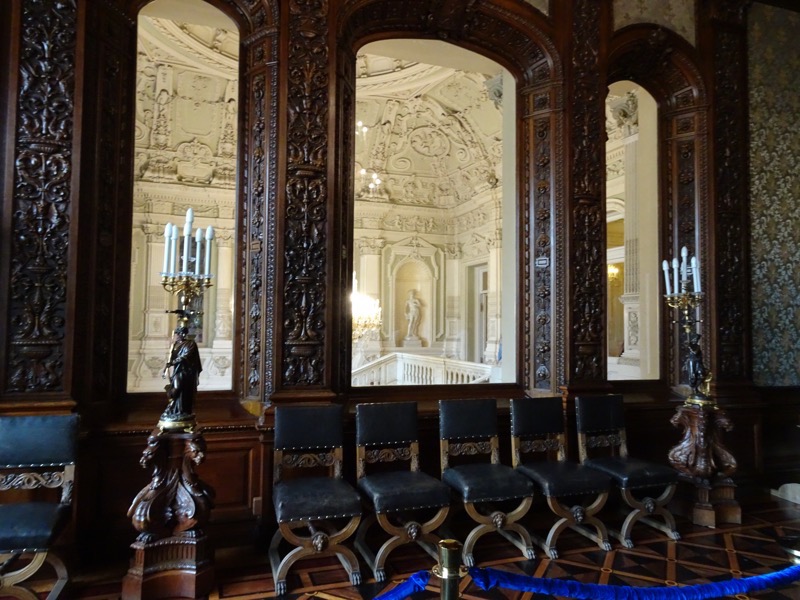
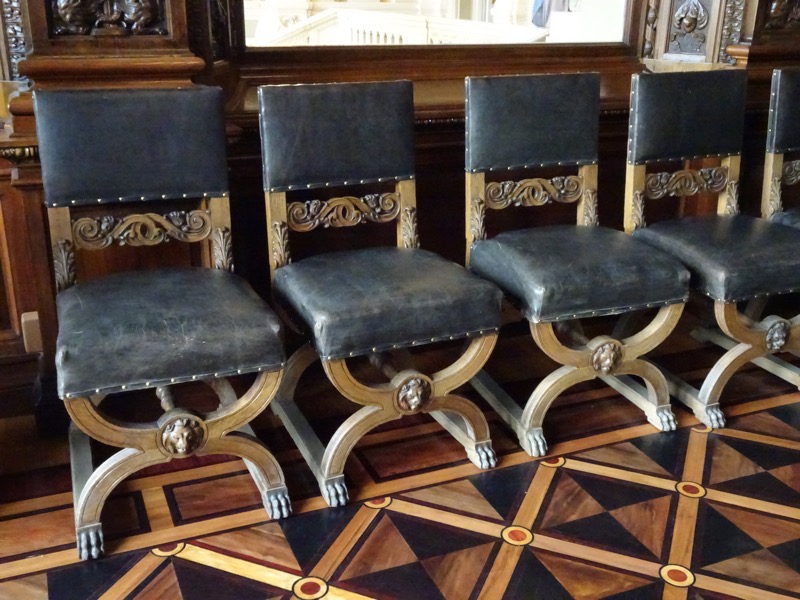
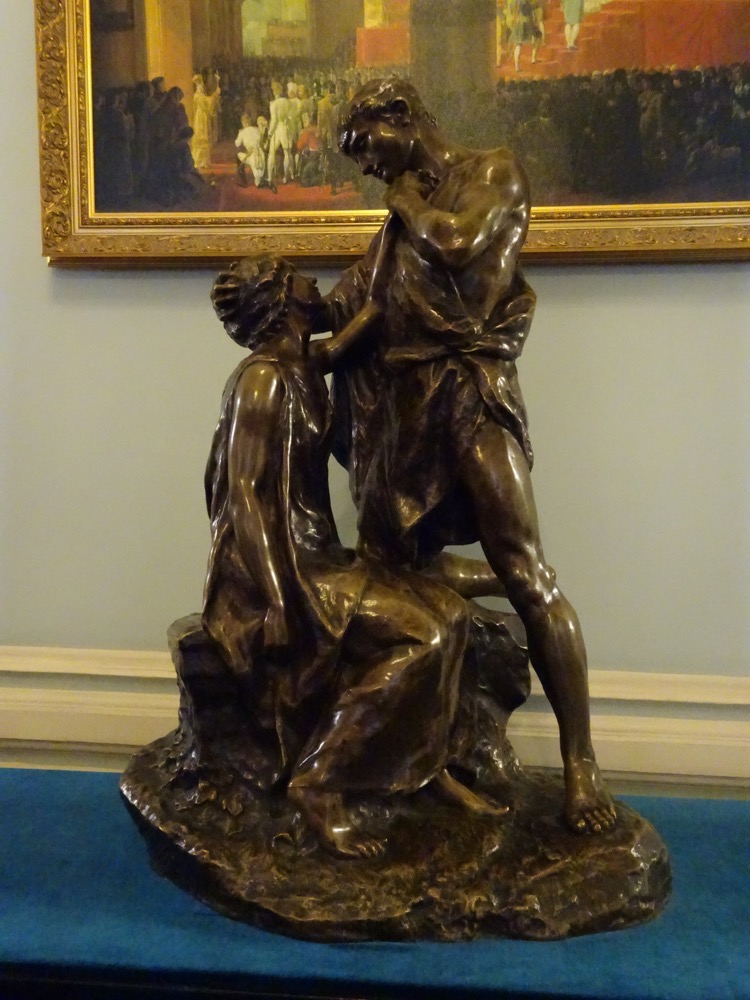
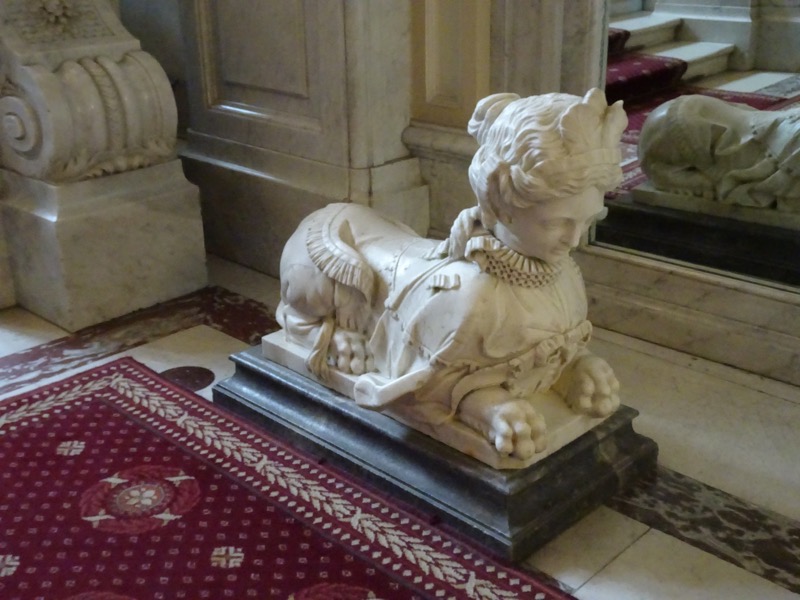
Yusupov Palace is where the assassination of Grigori Rasputin was played out. A monarchist group led by Prince Felix Yusupov, heir apparent to the vast Yusupov family fortunes, together with Vladimir Purishkevish and the Grand Duke Dimitri Pavlovich invited Rasputin to the Yusupov Palace to a dinner in Felix’s lavishly appointed private rooms in the cellar of the palace.
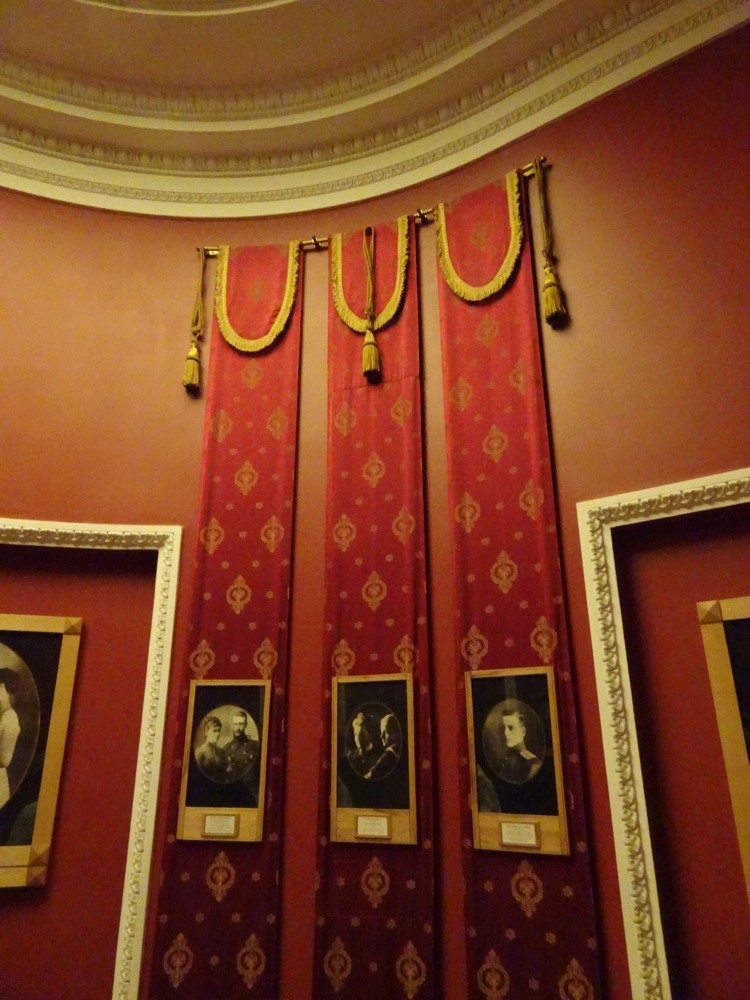
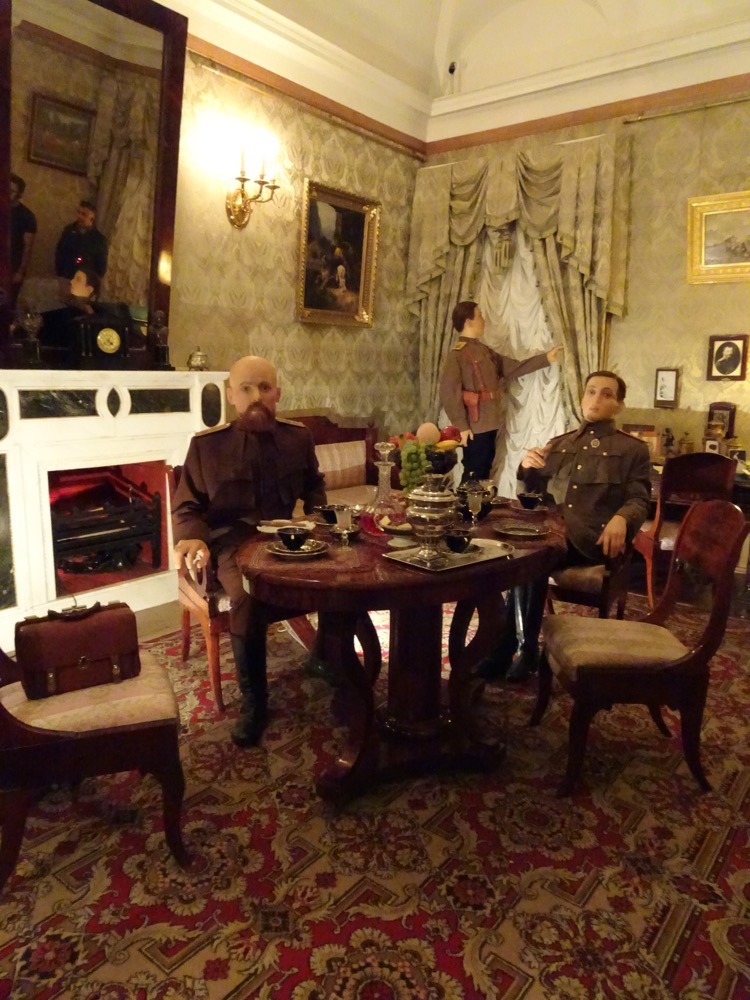
Here, Rasputin was served poisoned wine, and the others made an excuse to leave him for 30 mins. When they were sure he would be dead, Felix returned to the cellar to find him unaffected. Rasputin, immediately clued onto their surprise and knew that something was up. He attempted to run, but Felix Yusupov retrieved a revolver and shot Rasputin from the side. Felix then went back upstairs to inform the plotters that Rasputin was dead, but he took Felix’s absence as an opportunity to flee from the cellar through a side door. The plotters chased Rasputin out onto the street, where Purishkevich shot Rasputin in the back. He was then dragged back inside and a third, close range bullet, was shot into his forehead. The murderers then wrapped him up and drove outside the city to dump his body into the Neva River! Only according to Maria, they did not allow for the fact that the river was frozen, and it took them a long time to dig a hole through the ice in order to dump his body.
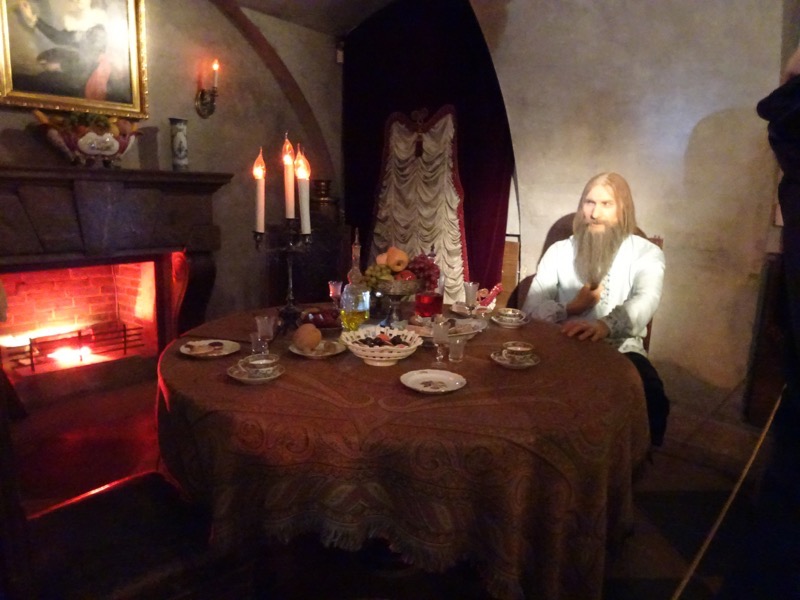
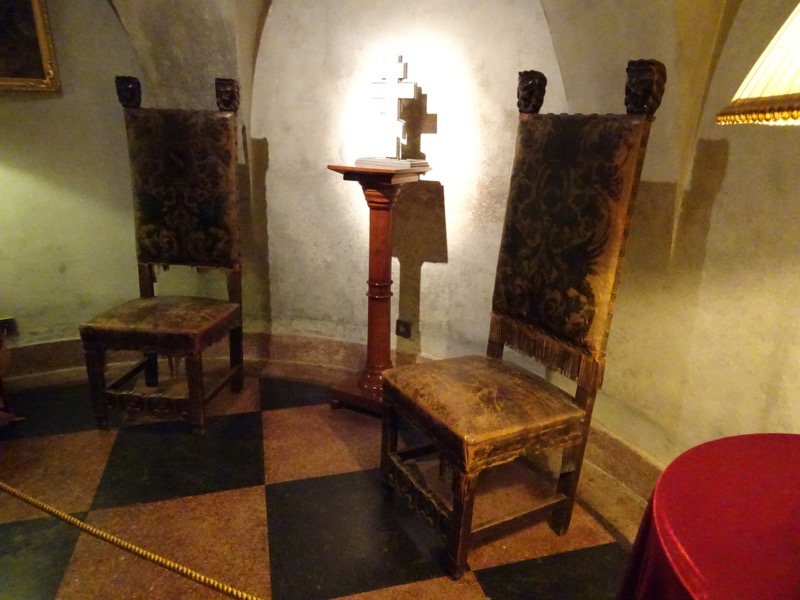 Felix Yusupov must not have been a particularly bright fellow, as he immediately started telling everyone that he had killed Rasputin and saved the aristocracy from his influence over the Romanovs, and was promptly arrested. (Gotta admit, I don’t love the wax dummies.)
Felix Yusupov must not have been a particularly bright fellow, as he immediately started telling everyone that he had killed Rasputin and saved the aristocracy from his influence over the Romanovs, and was promptly arrested. (Gotta admit, I don’t love the wax dummies.)
Well, after this it was a final stop for some souvenir shopping in lovely St Petersburg in what must have been the most expensive souvenir shop in all of Russia – or perhaps we only thought that because we had seen prices in Moscow where they don’t have thousands of cruise ship passengers to fleece on a semi-regular basis. 🙂
We had a marvelous, if hectic, two days in St Petersburg and for now, it remains firmly on my list to go back to – mostly to see the Hermitage properly. I feel we had sufficient time in each of the other historical sites we visited, and it was only here that I could have spent many, many hours wandering the galleries and corridors.
Tomorrow – Helsinki!
 Some windmills off the coast of Denmark… they look so beautiful dotting the seascape.
Some windmills off the coast of Denmark… they look so beautiful dotting the seascape. Down town Copenhagen – the architecture is very typical northern European. Love it!
Down town Copenhagen – the architecture is very typical northern European. Love it! More trolls in the souvenir shops… there must be some massive factory somewhere churning out trolls with different Scandinavian flags!
More trolls in the souvenir shops… there must be some massive factory somewhere churning out trolls with different Scandinavian flags!

 With the weather being so beautiful this morning, we decided to take a canal ride to get a look at the city from the water. It was a wonderful trip through the town. Copenhagen was originally a Viking fishing village back in the 10th century, and only became the capital of Denmark some 500 years later in the early 15th century… some of these old buildings and old boats definitely take you back.
With the weather being so beautiful this morning, we decided to take a canal ride to get a look at the city from the water. It was a wonderful trip through the town. Copenhagen was originally a Viking fishing village back in the 10th century, and only became the capital of Denmark some 500 years later in the early 15th century… some of these old buildings and old boats definitely take you back. The Copenhagen Opera House is, err, interesting. It doesn’t quite blend with the rest of the city’s neoclassical architecture though.
The Copenhagen Opera House is, err, interesting. It doesn’t quite blend with the rest of the city’s neoclassical architecture though.



 The whole of the canal ride felt like traveling through one large Marina… so many yachts and boats. Many people living in houseboats. It looks like a lovely lifestyle for the locals.
The whole of the canal ride felt like traveling through one large Marina… so many yachts and boats. Many people living in houseboats. It looks like a lovely lifestyle for the locals. The canal boats are obviously designed to *just* fit under the canal bridges – when passing under some of them, we had barely 10 inches of clearance on each side.
The canal boats are obviously designed to *just* fit under the canal bridges – when passing under some of them, we had barely 10 inches of clearance on each side.

 Stunning photo of the canal and a canal boat – complete with non-image forming spectral highlights for your enjoyment!
Stunning photo of the canal and a canal boat – complete with non-image forming spectral highlights for your enjoyment!
 It was around the start of the 17th century that Copenhagen began to concrete its position as a regional power center with the development of institutions like universities, defense structures, and armed forces. They apparently suffered considerably from the plague and bad fires in the 18th century, which then forced the city to undergo another period of growth and development. This saw considerable reconstruction in the Fredriksstaden district and the founding of many cultural institutions, like the History Museum and the Royal Theatre… but it was the 19th century disasters, such as Nelson attacking the Danish/Norweigan fleet and bombarding the city, that stimulated the Danish Golden Age, which brought the final neoclassical look to Copenhagen’s architecture.
It was around the start of the 17th century that Copenhagen began to concrete its position as a regional power center with the development of institutions like universities, defense structures, and armed forces. They apparently suffered considerably from the plague and bad fires in the 18th century, which then forced the city to undergo another period of growth and development. This saw considerable reconstruction in the Fredriksstaden district and the founding of many cultural institutions, like the History Museum and the Royal Theatre… but it was the 19th century disasters, such as Nelson attacking the Danish/Norweigan fleet and bombarding the city, that stimulated the Danish Golden Age, which brought the final neoclassical look to Copenhagen’s architecture.









 View from our lunch spot at the Dubliner pub… why we gravitate to Irish pubs, I’ll never know! It’s probably got something to do with the certainty there will be cider!
View from our lunch spot at the Dubliner pub… why we gravitate to Irish pubs, I’ll never know! It’s probably got something to do with the certainty there will be cider!
 So we went out to Vallensbaek on the trains and went for a walk in the swamplands. 🙂 The area reminded me very much of the Minnippi Parklands near home, but larger, and of course with very different forest foliage. Love the weeping willows. We tramped about a bit, and then the GPS had us go off the path – Dambo has provided the exact locations of the Giants by GPS coordinates only so they can be a bit tricky to find 🙂 The map is deliberately vague.
So we went out to Vallensbaek on the trains and went for a walk in the swamplands. 🙂 The area reminded me very much of the Minnippi Parklands near home, but larger, and of course with very different forest foliage. Love the weeping willows. We tramped about a bit, and then the GPS had us go off the path – Dambo has provided the exact locations of the Giants by GPS coordinates only so they can be a bit tricky to find 🙂 The map is deliberately vague.
 And then we through the trees, we saw Little Tilde – my favourite of the Forgotten Giants.
And then we through the trees, we saw Little Tilde – my favourite of the Forgotten Giants.  This art project is super cool! Totally worth the 40+mins on public transport and the walk in the forest.
This art project is super cool! Totally worth the 40+mins on public transport and the walk in the forest.
 borys for scale! 🙂
borys for scale! 🙂 
 After visiting with Little Tilde for a while, we thought we would try and find another Forgotten Giant, Thomas on the Mountain. The name should have given it away, but he was a couple of kilometers away and not as easy to find.
After visiting with Little Tilde for a while, we thought we would try and find another Forgotten Giant, Thomas on the Mountain. The name should have given it away, but he was a couple of kilometers away and not as easy to find.  Past some more swamps, wildlife and birds. Great herons, swans and lots of different ducks.
Past some more swamps, wildlife and birds. Great herons, swans and lots of different ducks.



 Then up a bloody steep mountain track! I am really quite proud of myself for having made it up actually. My neck was clicking that stupid nauseating way it does, but we got up there!
Then up a bloody steep mountain track! I am really quite proud of myself for having made it up actually. My neck was clicking that stupid nauseating way it does, but we got up there! And here he is, lounging in a clearing up the steep hill, overlooking the valley.
And here he is, lounging in a clearing up the steep hill, overlooking the valley.



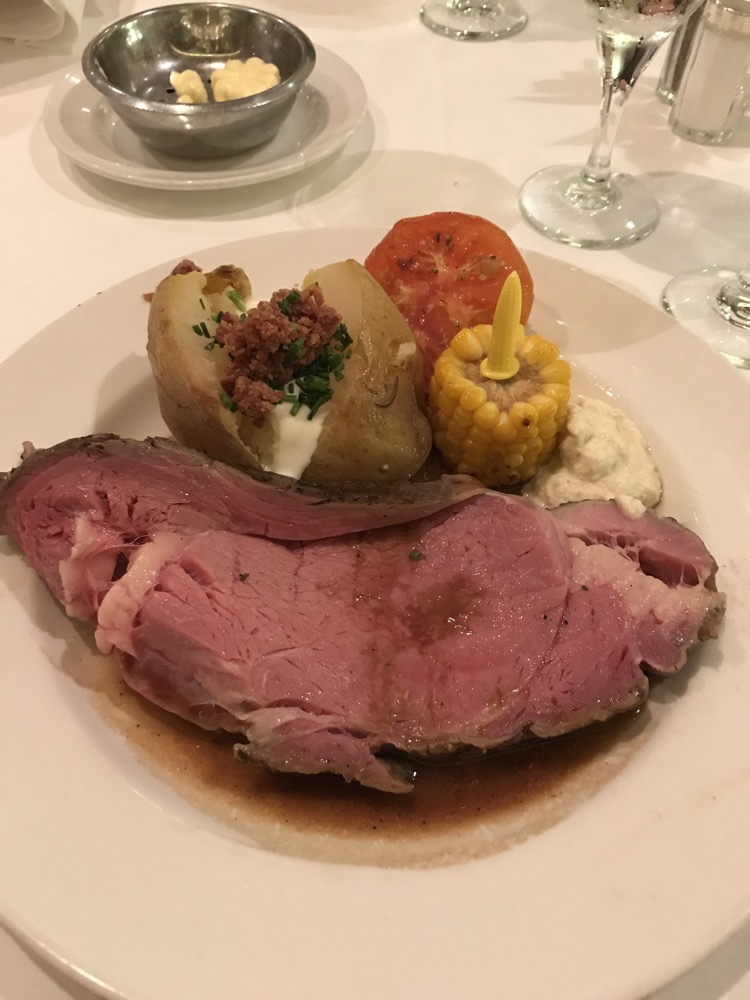
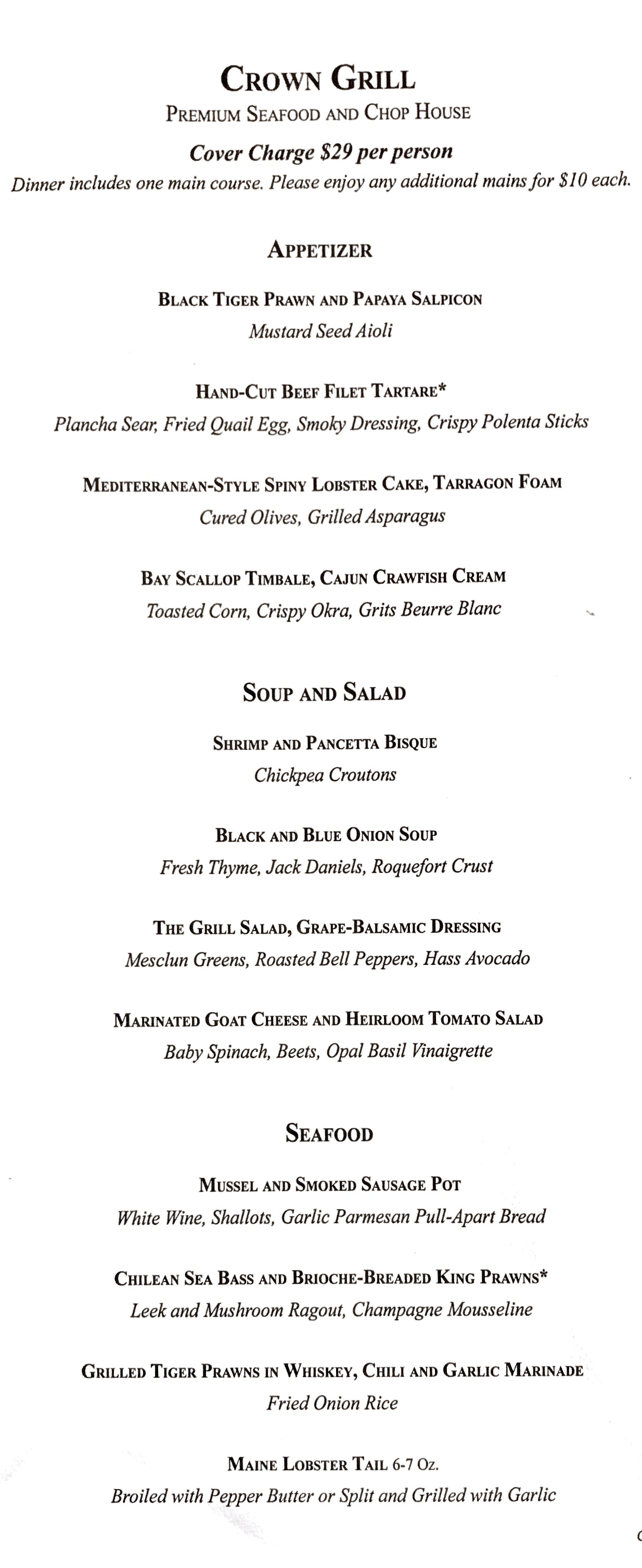
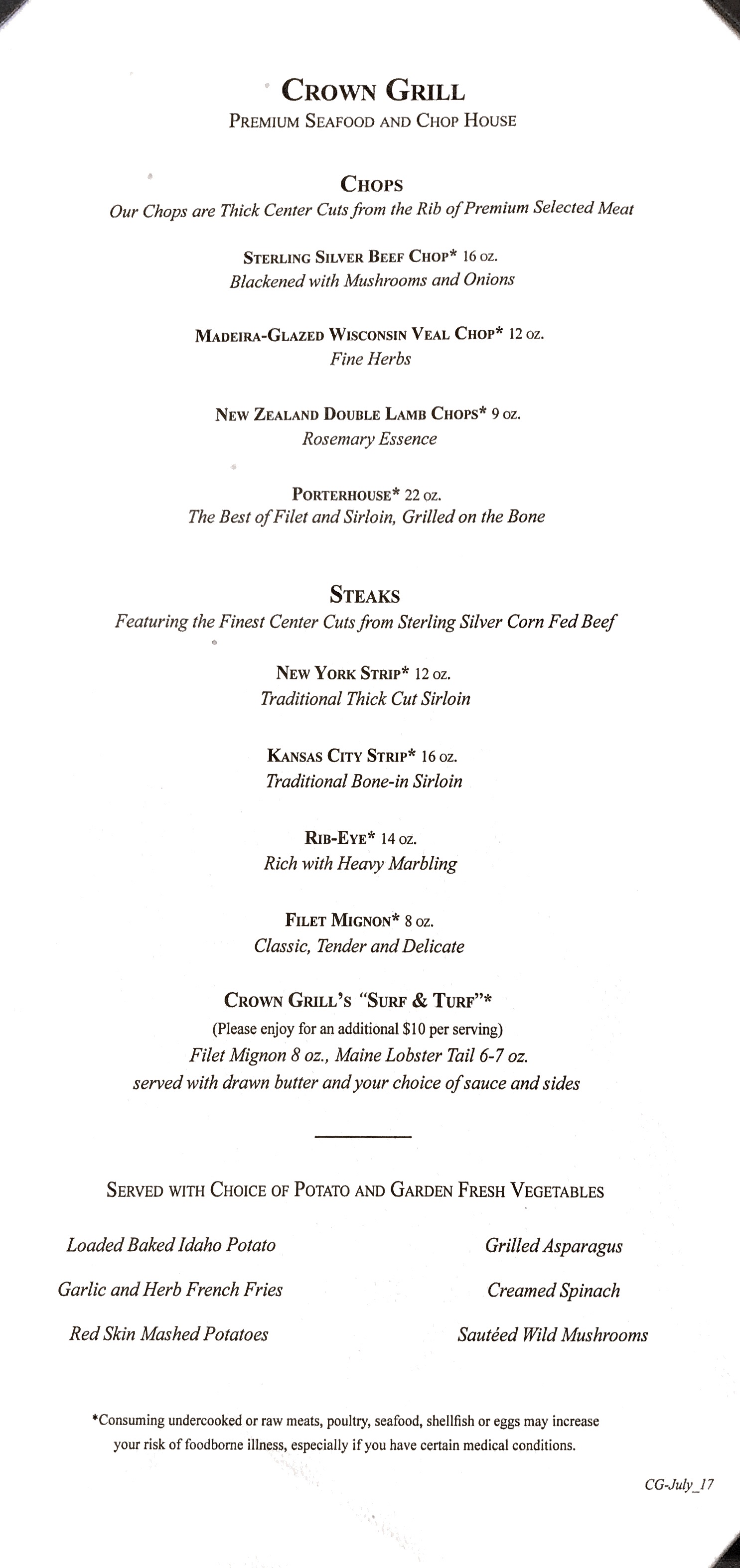
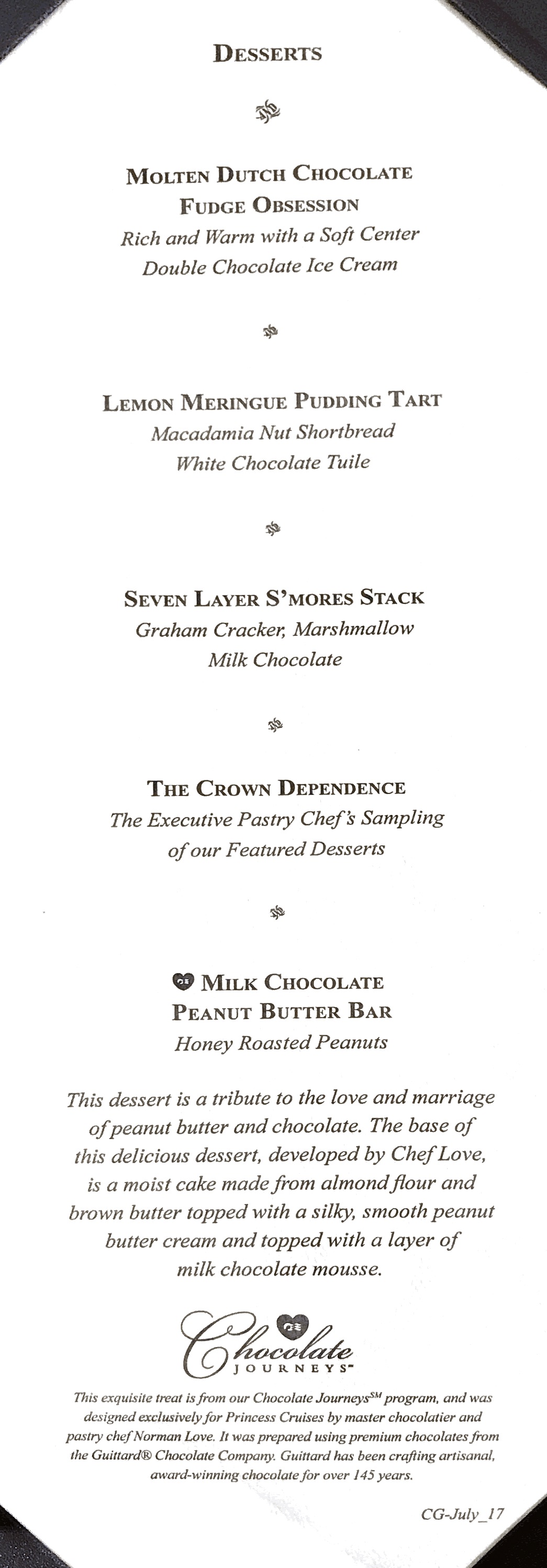 Mediterranean Style Spiny Lobster Cake…
Mediterranean Style Spiny Lobster Cake…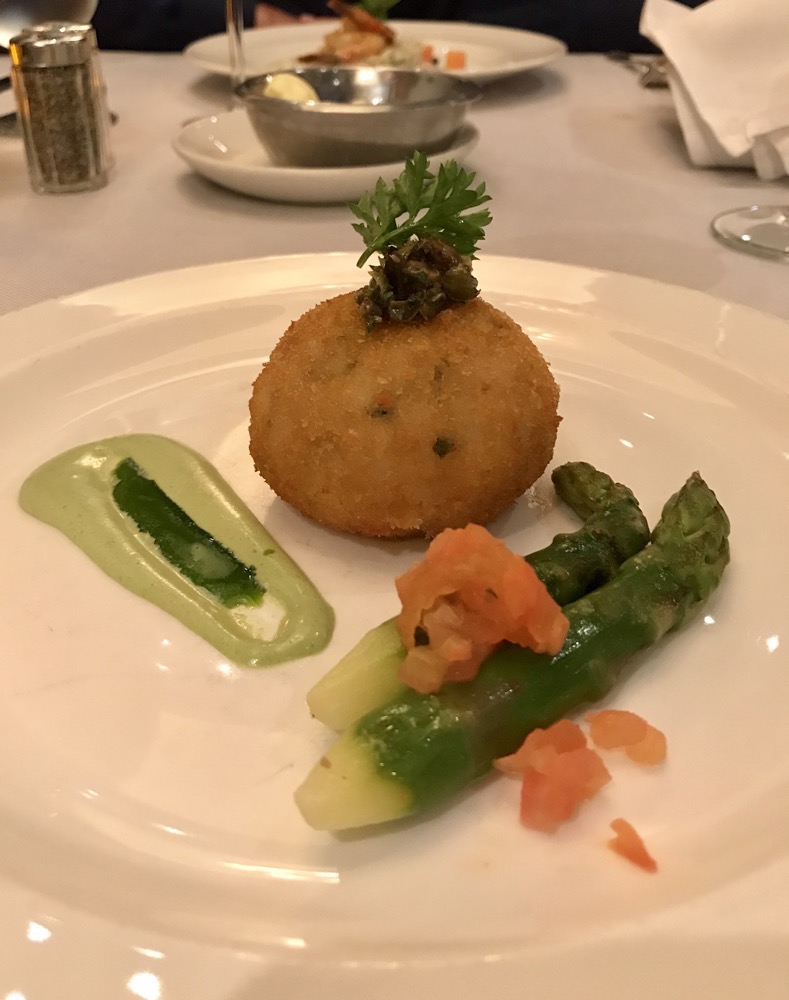 Black Tiger Prawn and Papaya Salpicon…
Black Tiger Prawn and Papaya Salpicon…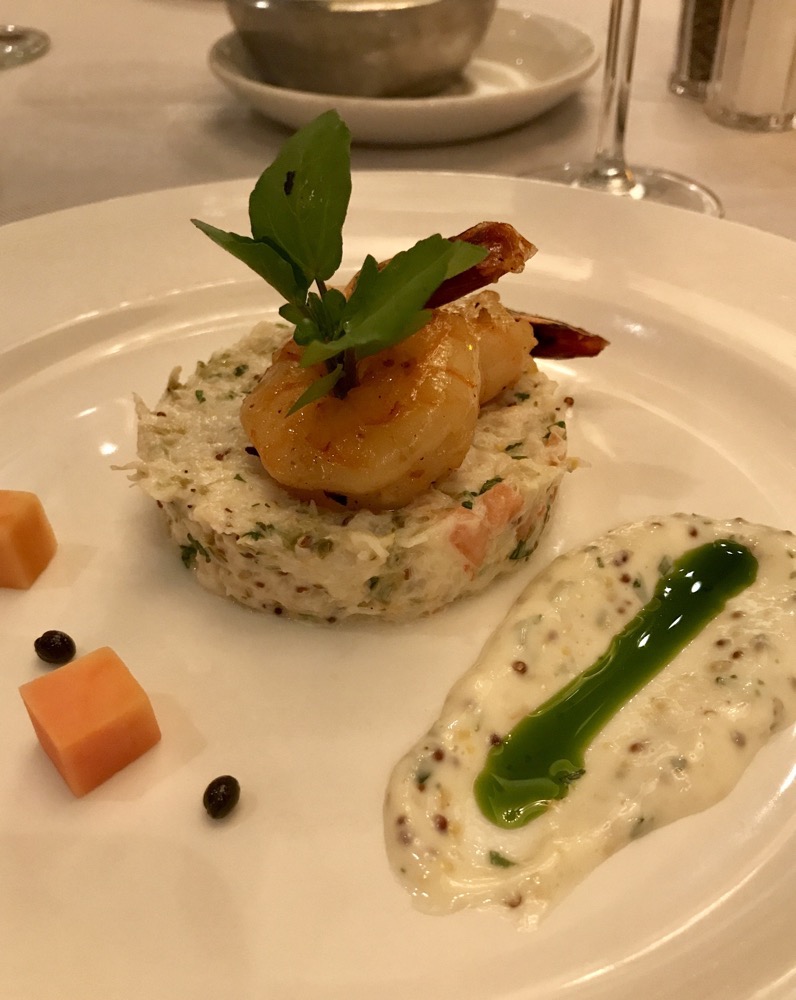 The Grill Salad with Grape Balamic Dressing…
The Grill Salad with Grape Balamic Dressing…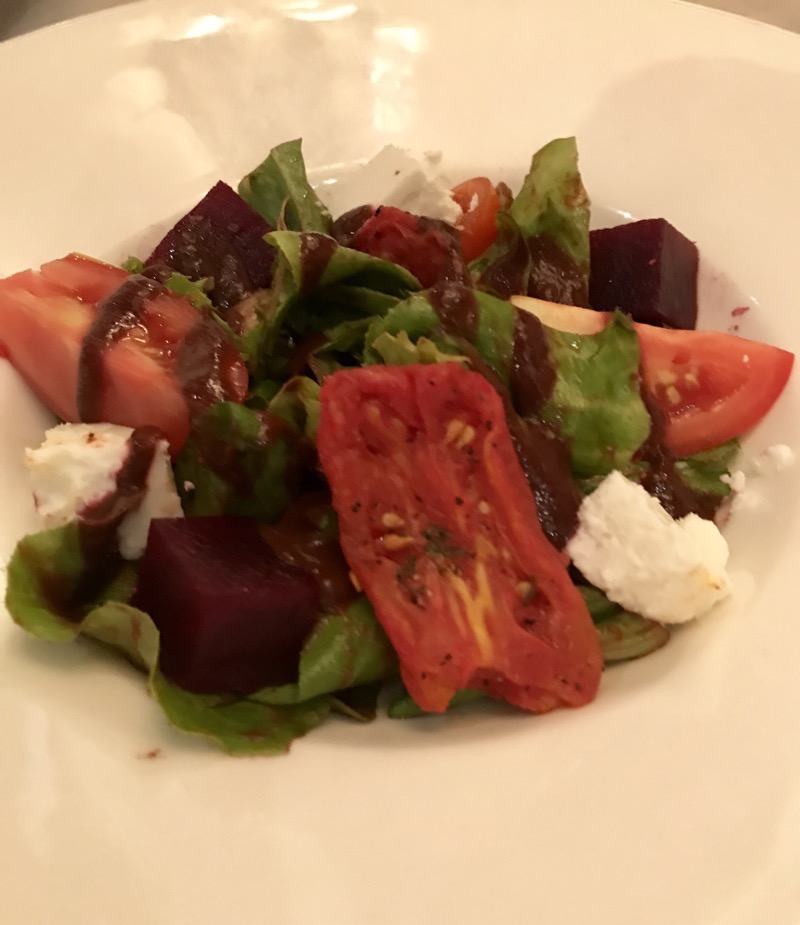 Black and Blue Onion Soup…
Black and Blue Onion Soup…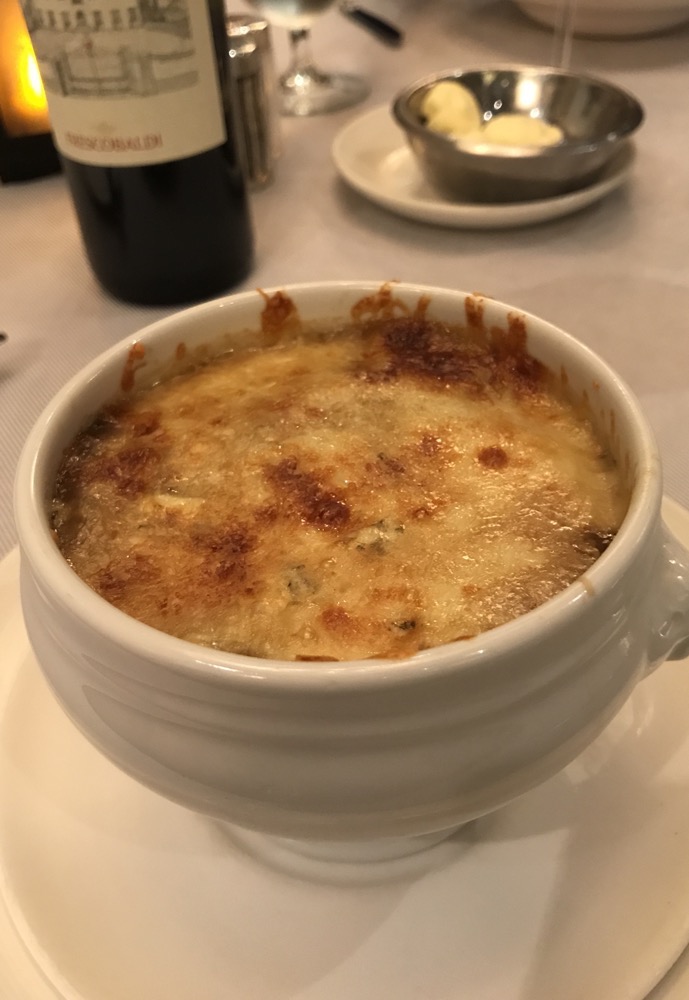 14oz Rib Eye…
14oz Rib Eye…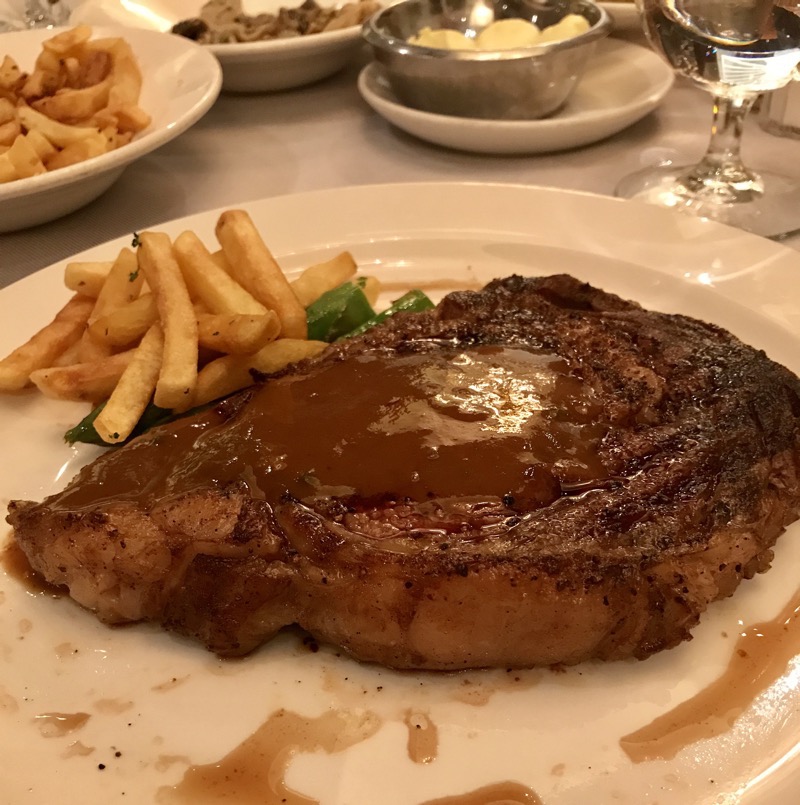 Filet Mignon…
Filet Mignon…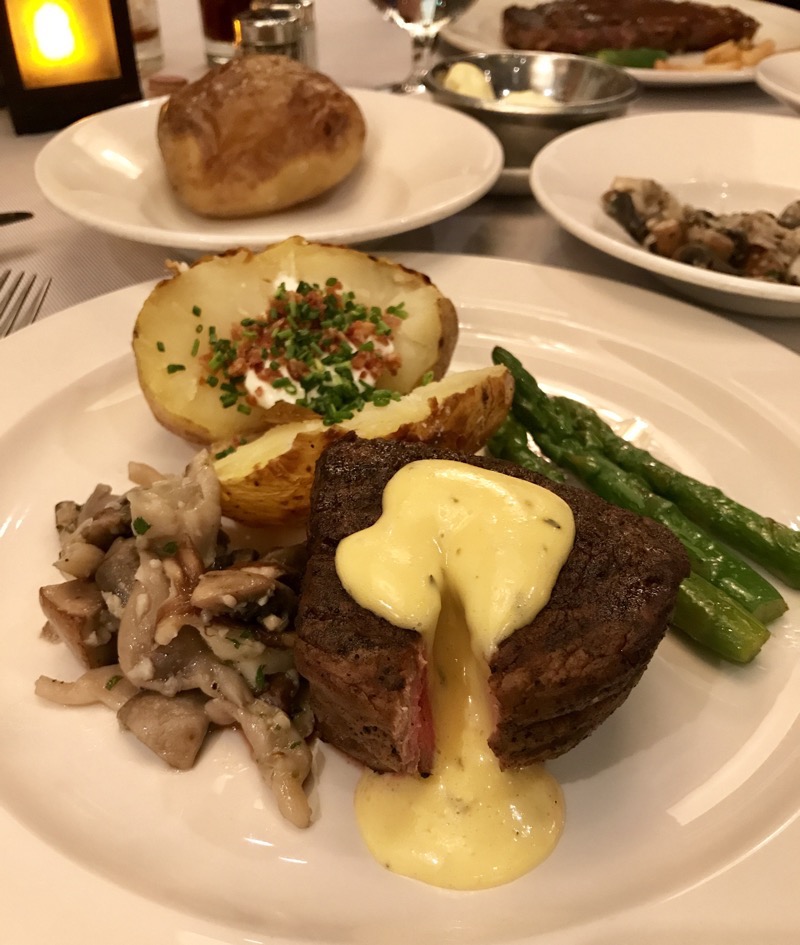 The Crown Dependence Dessert Selection…
The Crown Dependence Dessert Selection…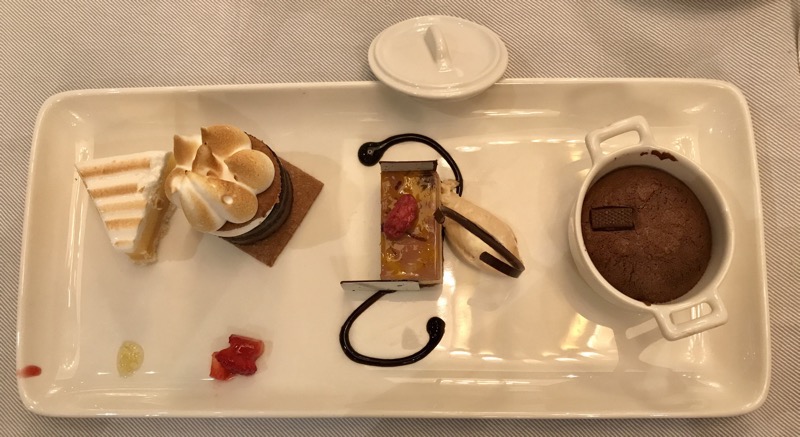 Lemon Meringue Pudding Tart…
Lemon Meringue Pudding Tart…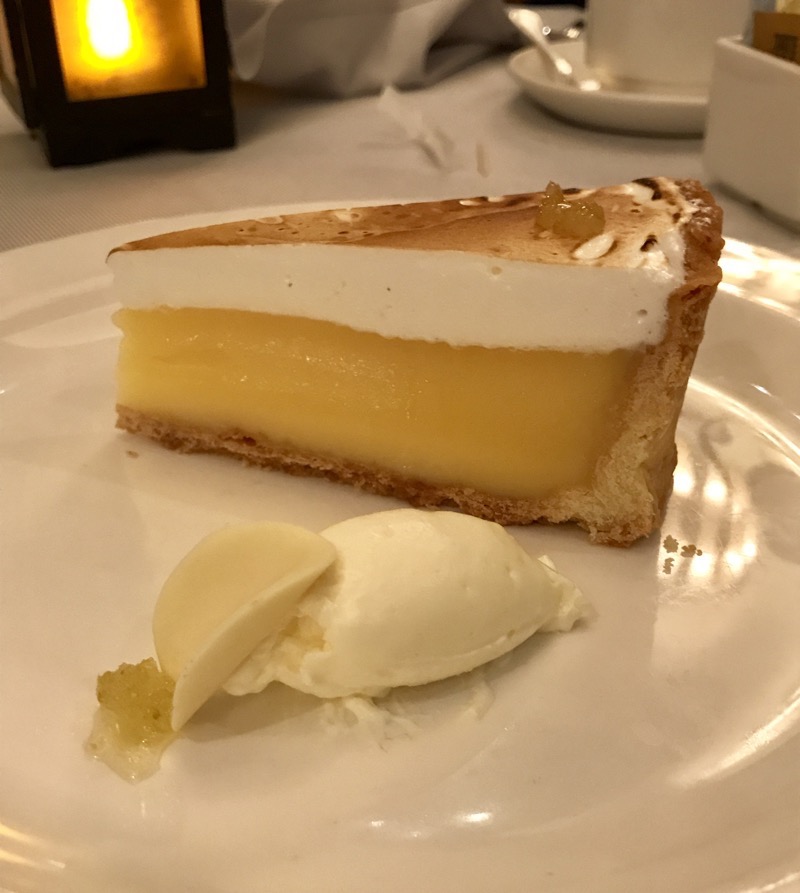
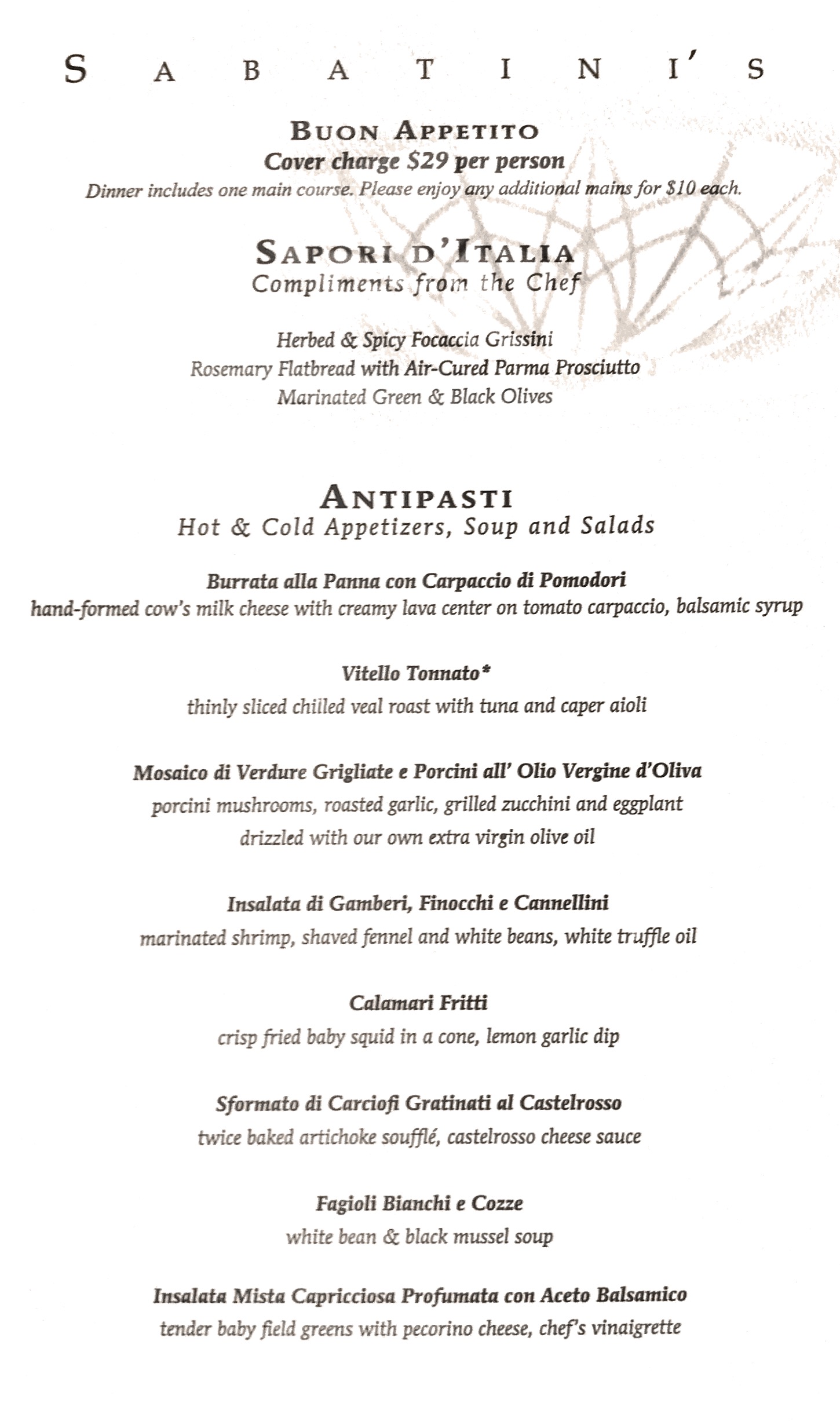
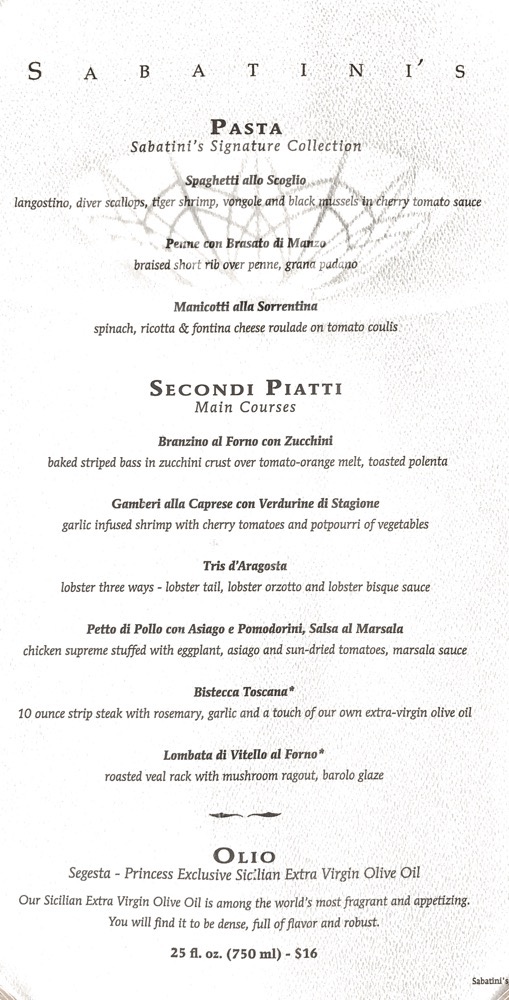
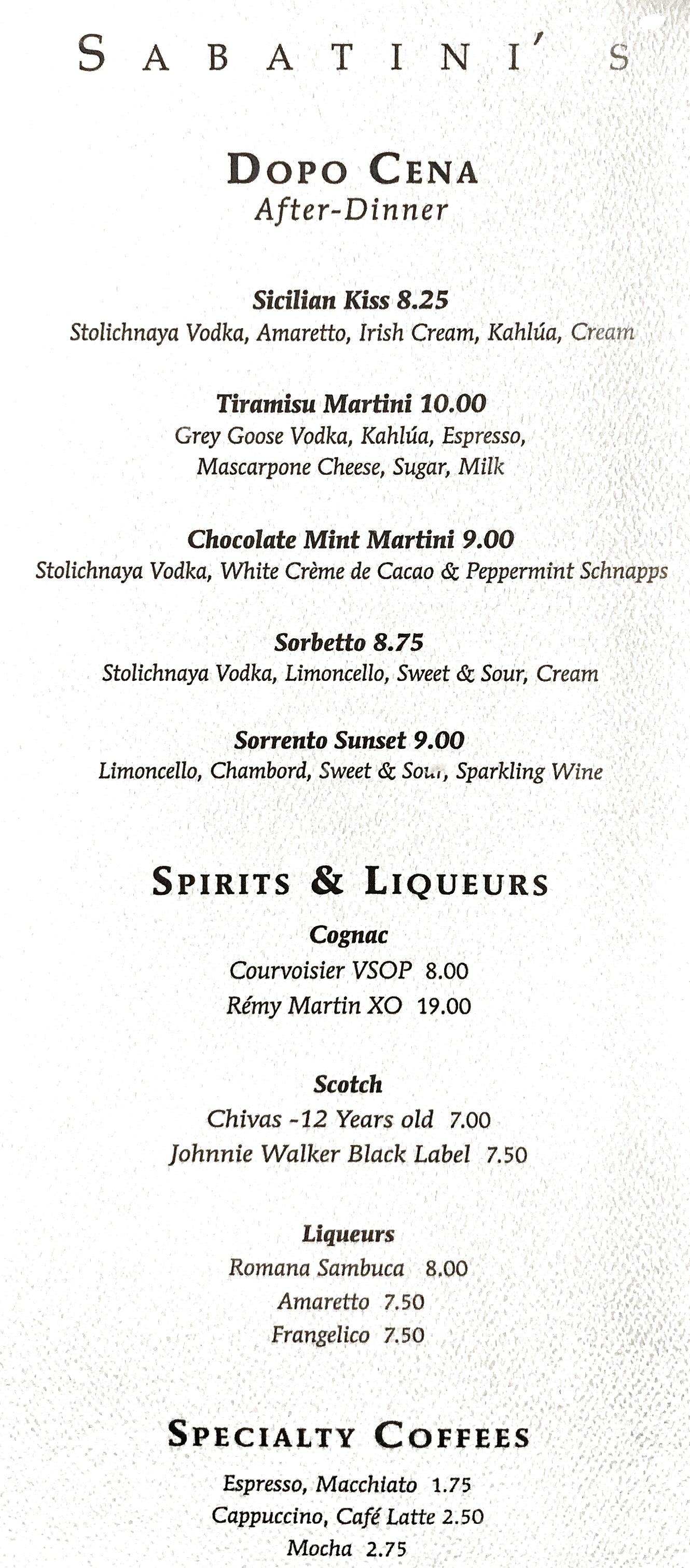
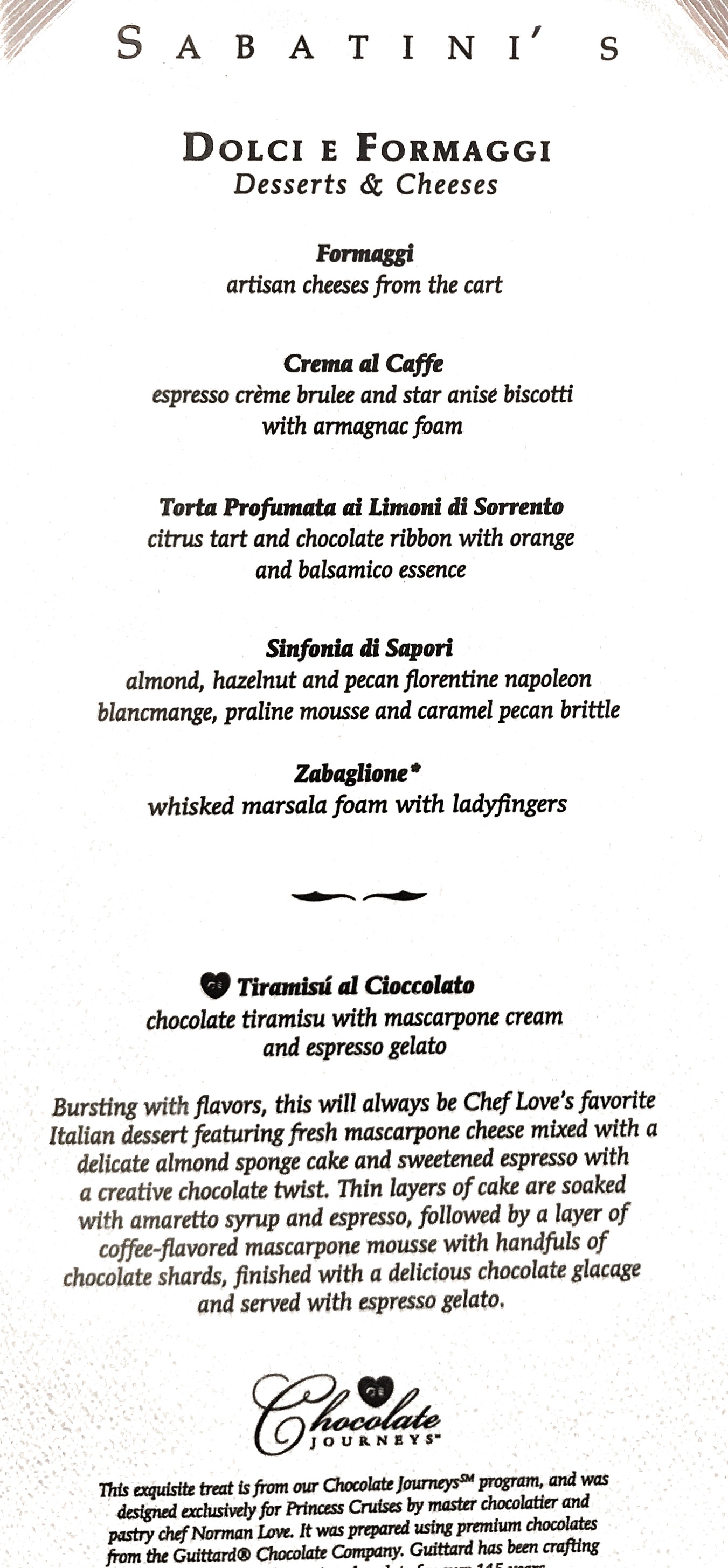 Burrata alla Panna con Carpaccio de Pomodori…
Burrata alla Panna con Carpaccio de Pomodori…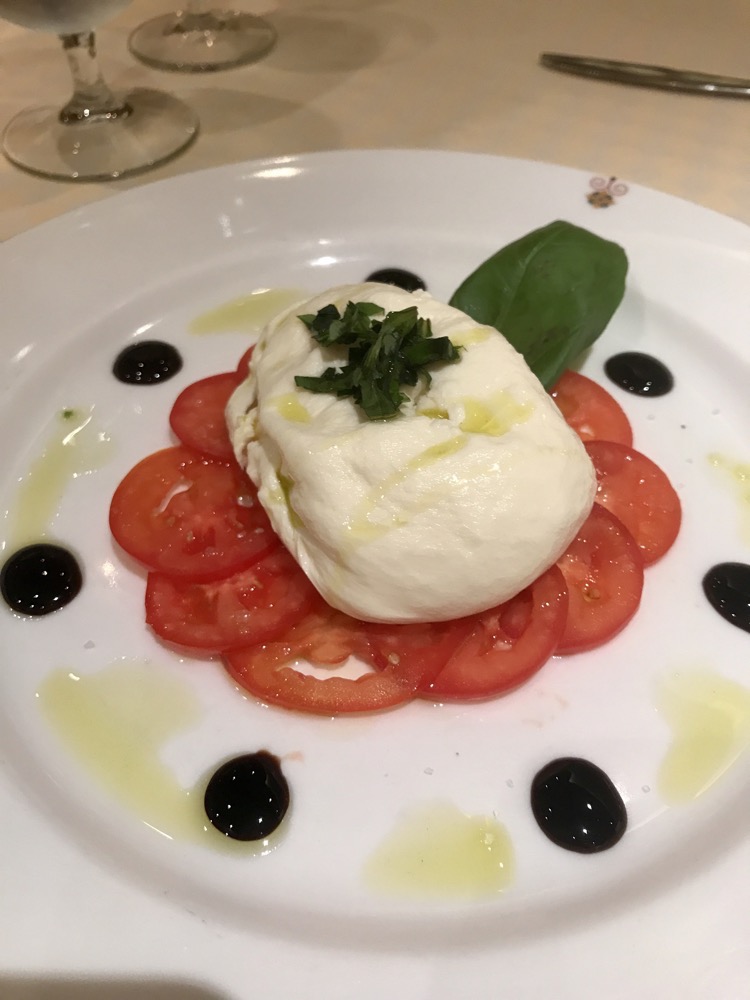 Vitello Tonnato…
Vitello Tonnato…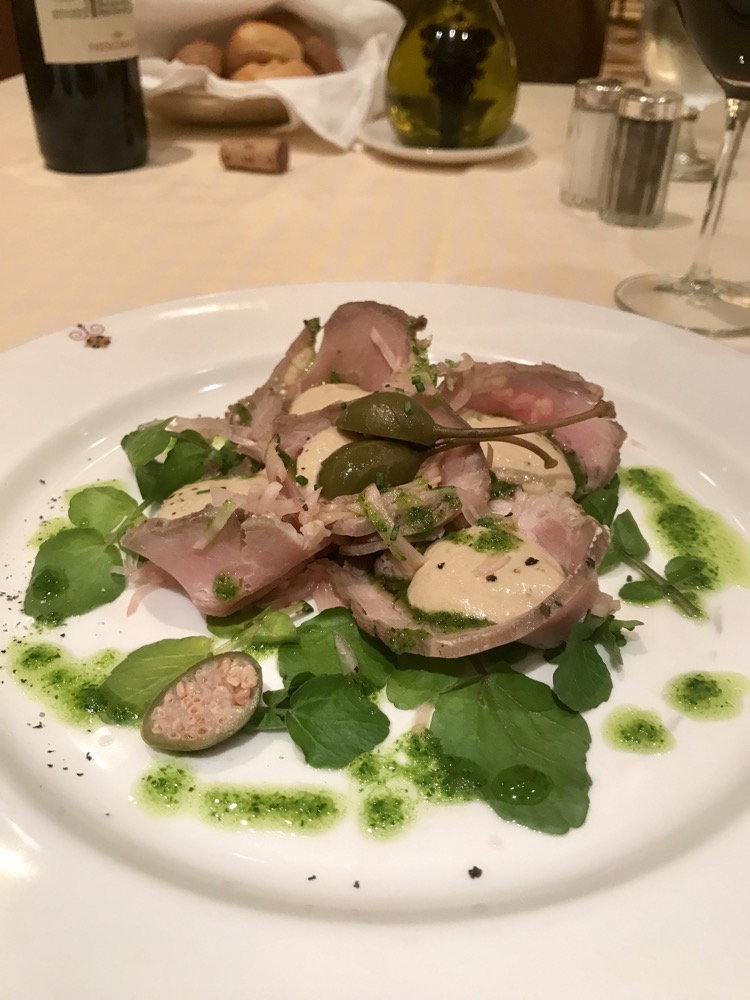 Spaghetti allo Scoglio…
Spaghetti allo Scoglio…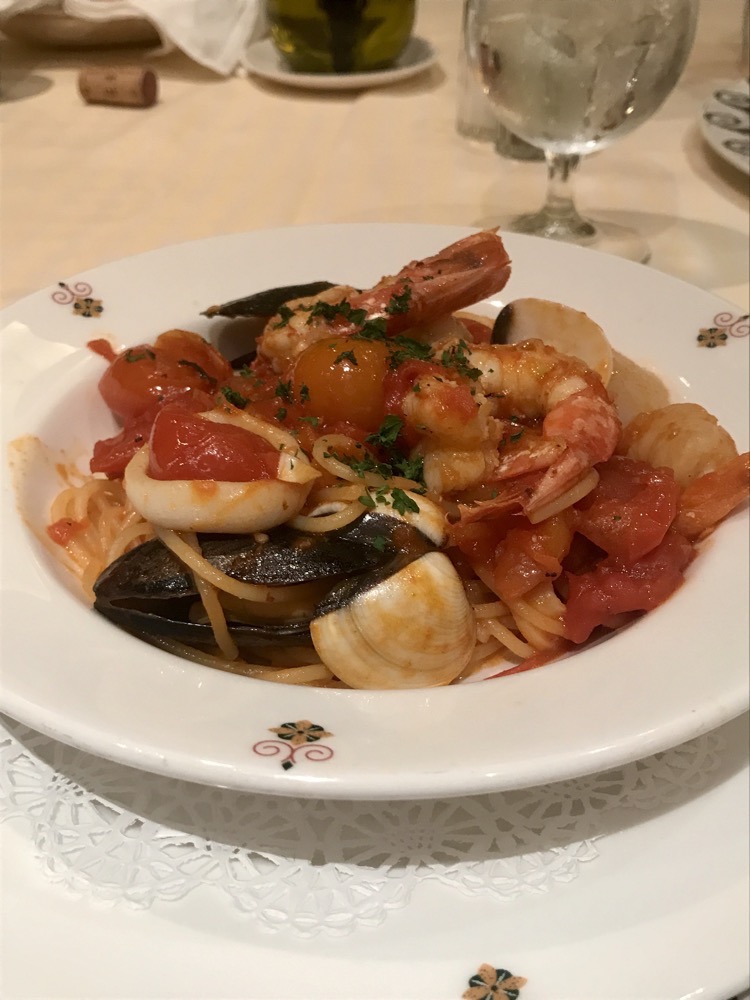 Penne con Brascato de Manzo…
Penne con Brascato de Manzo…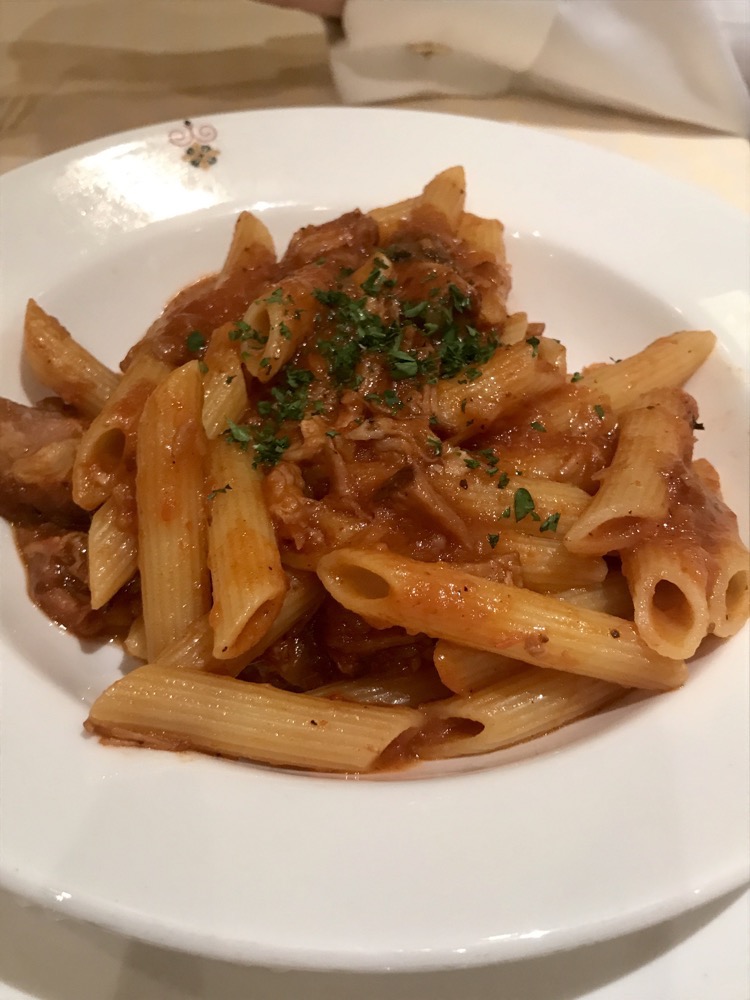 Tris d’Aragosta…
Tris d’Aragosta…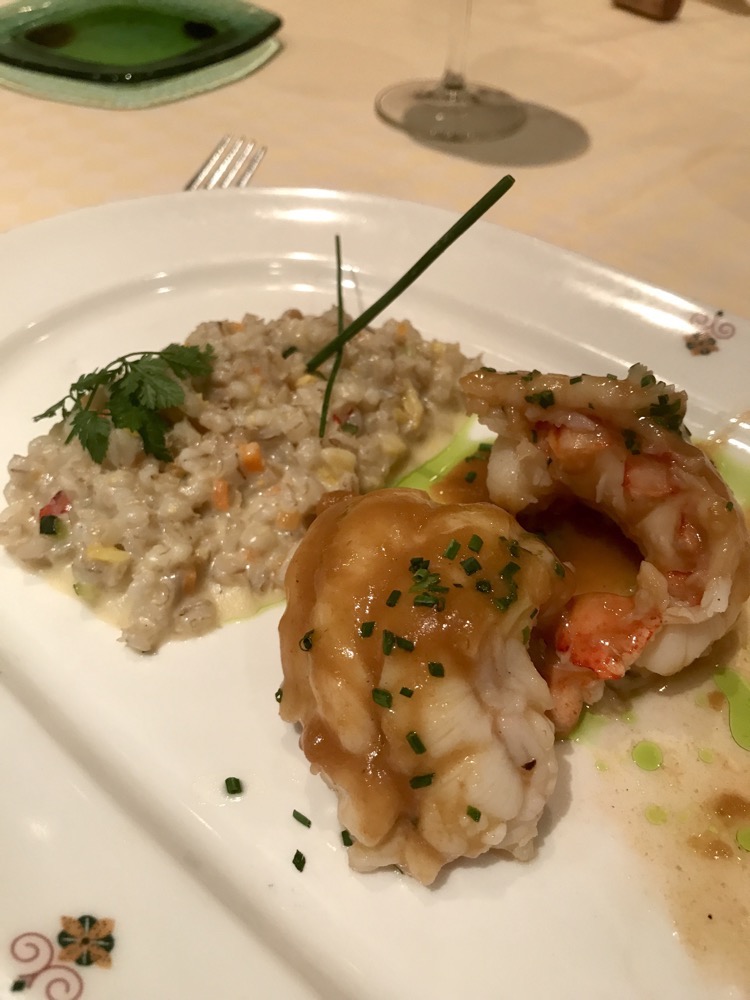 Lombata di Vitello al Forno…
Lombata di Vitello al Forno…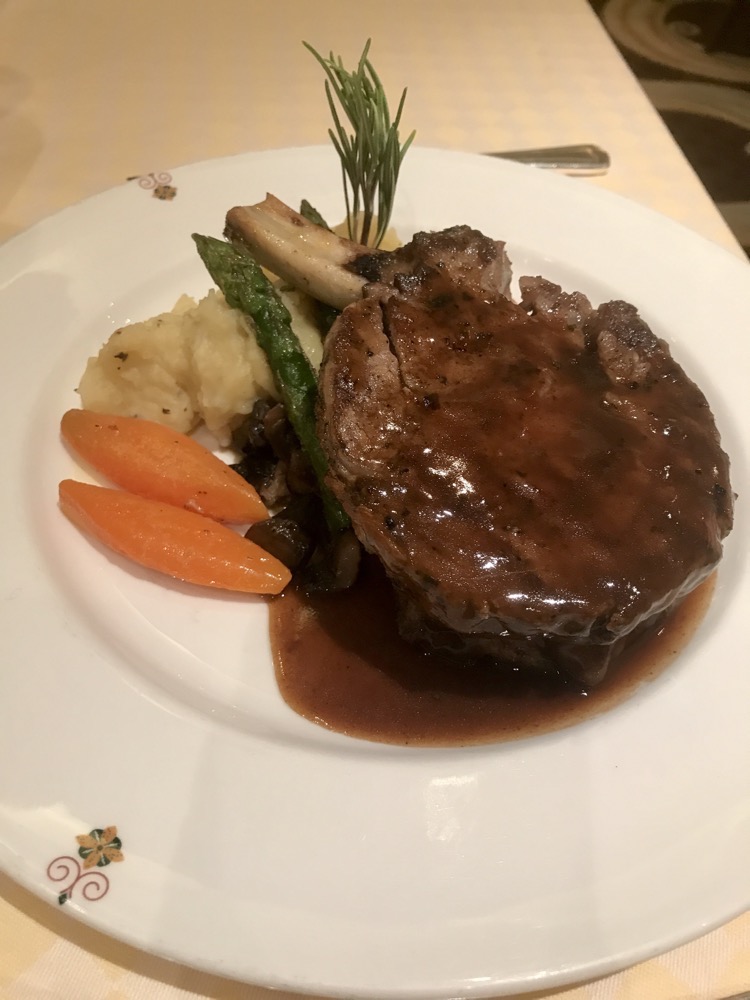 Zabaglione…
Zabaglione…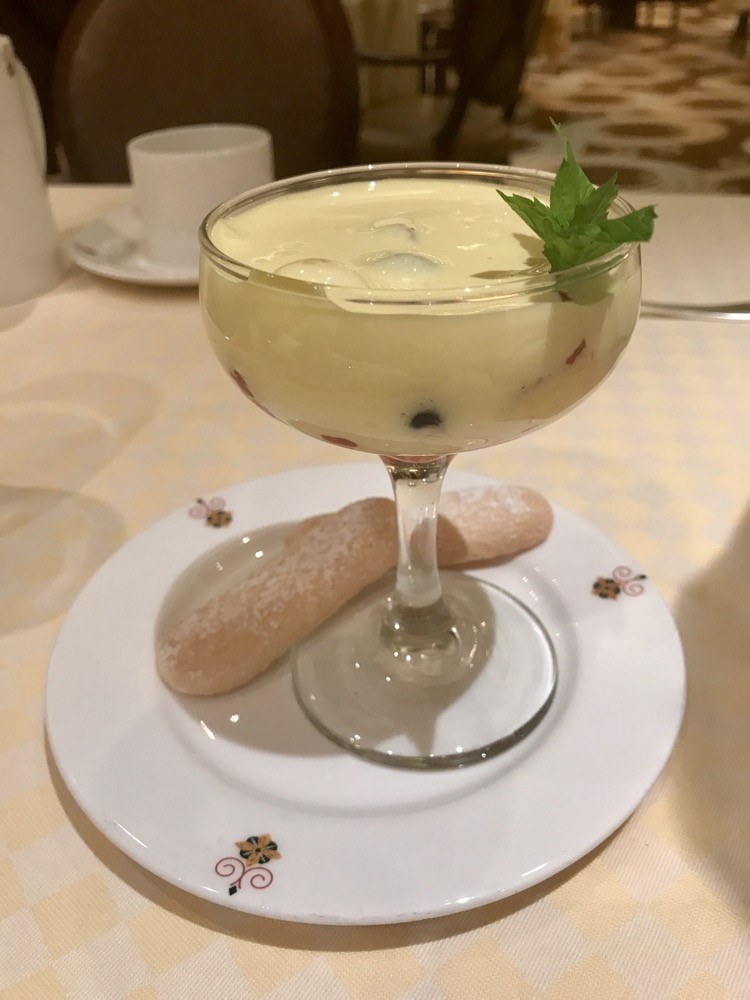 Torta Profumata ai Limoni di Sorrento…
Torta Profumata ai Limoni di Sorrento…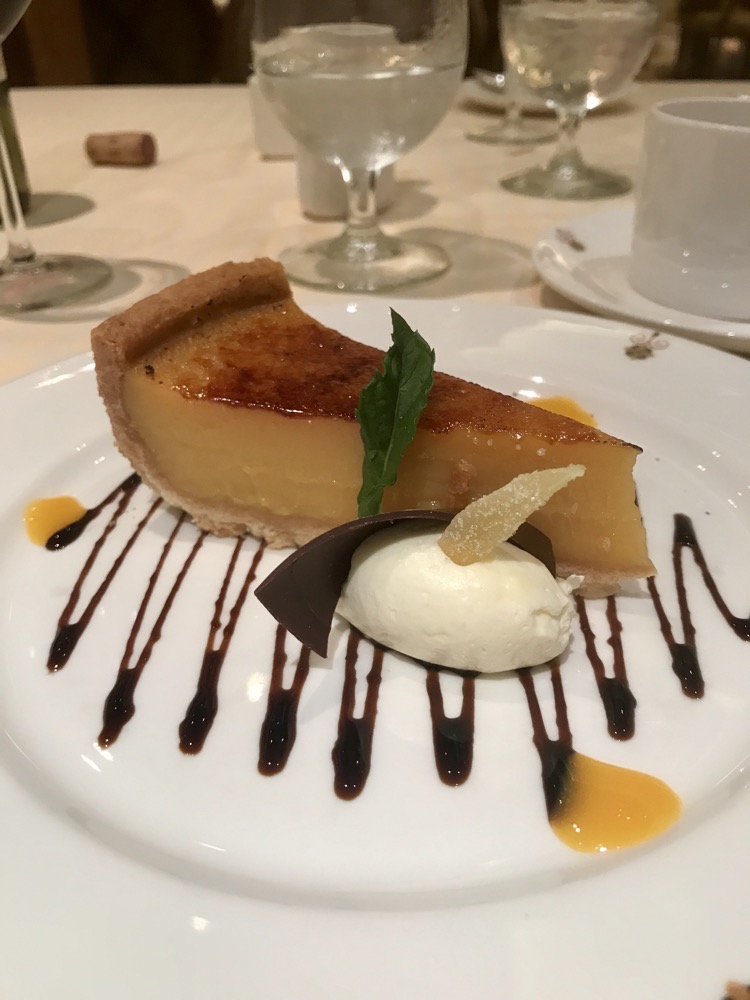
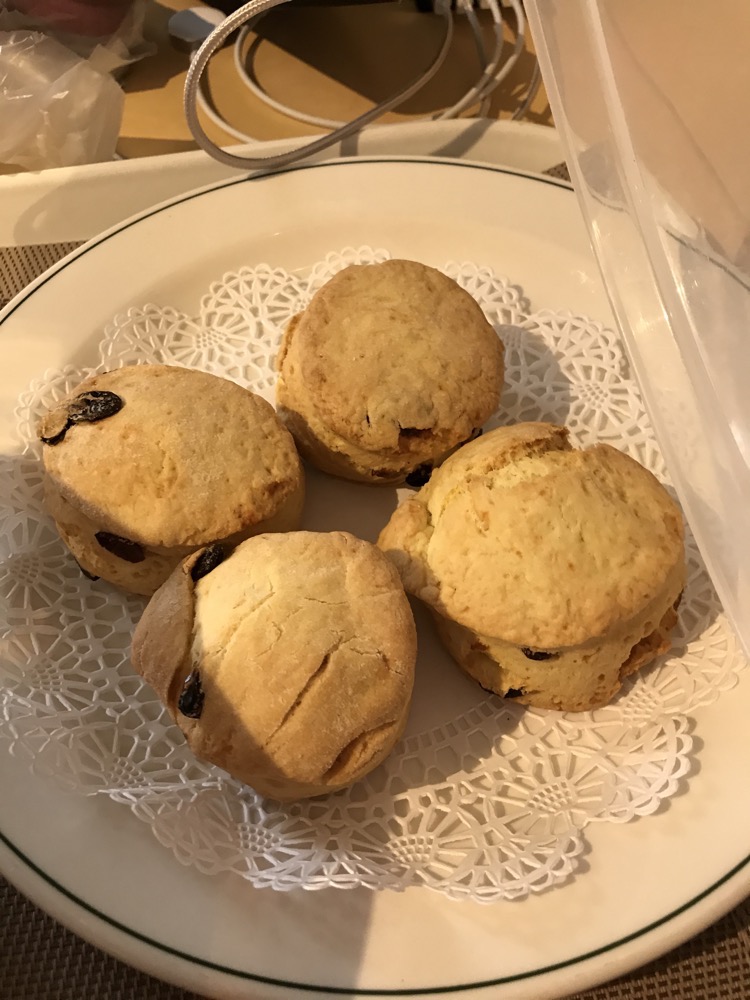
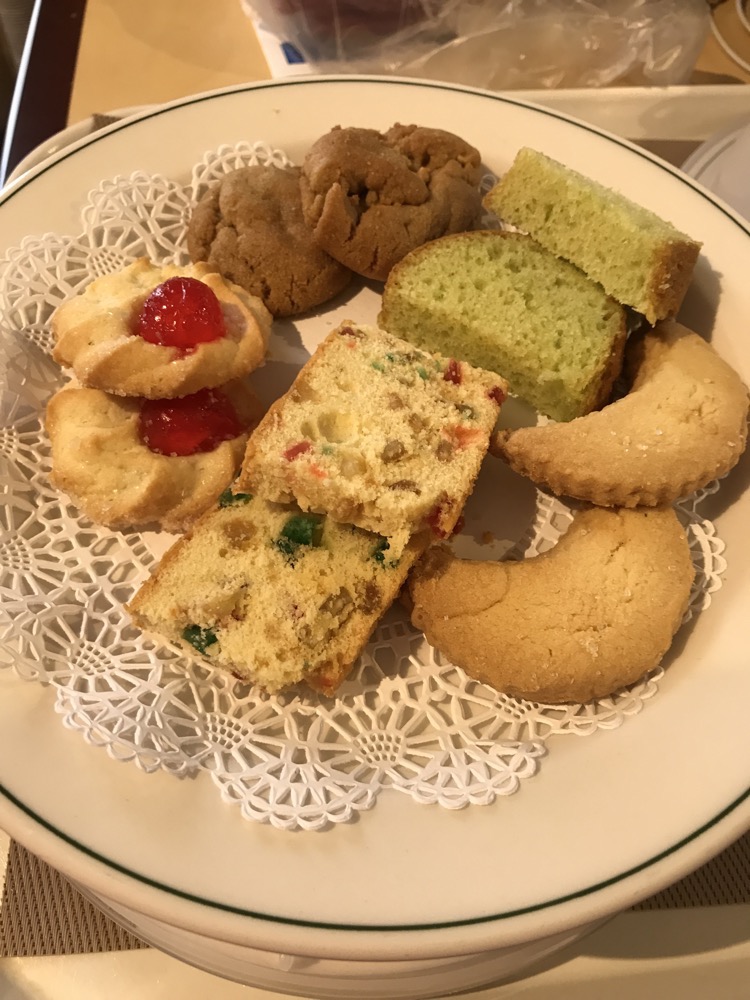
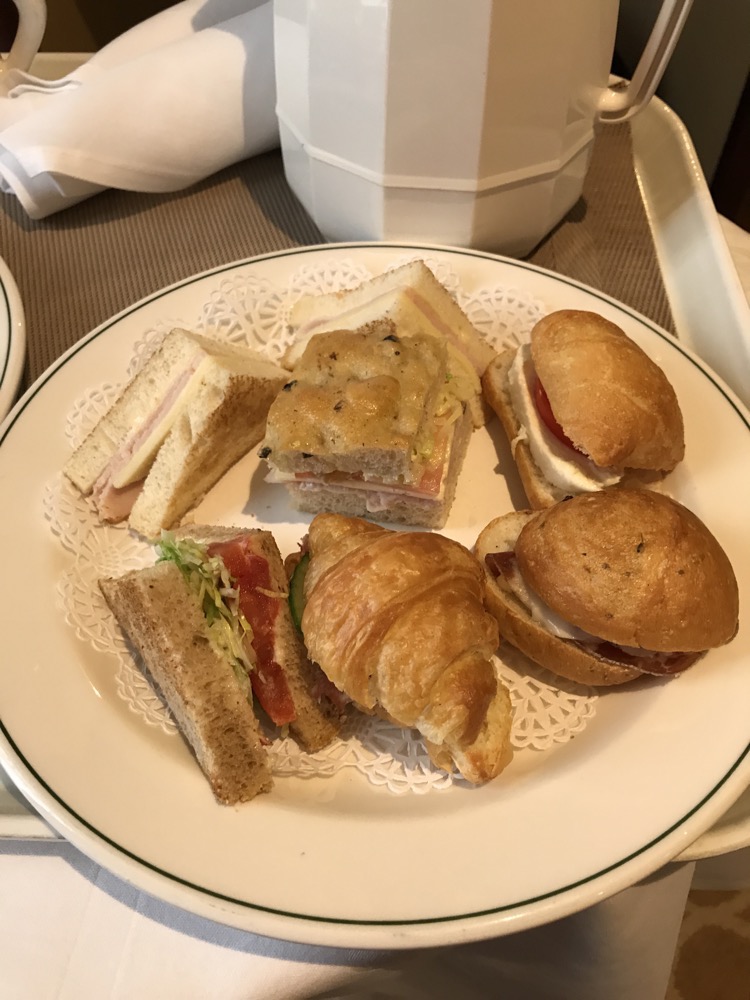
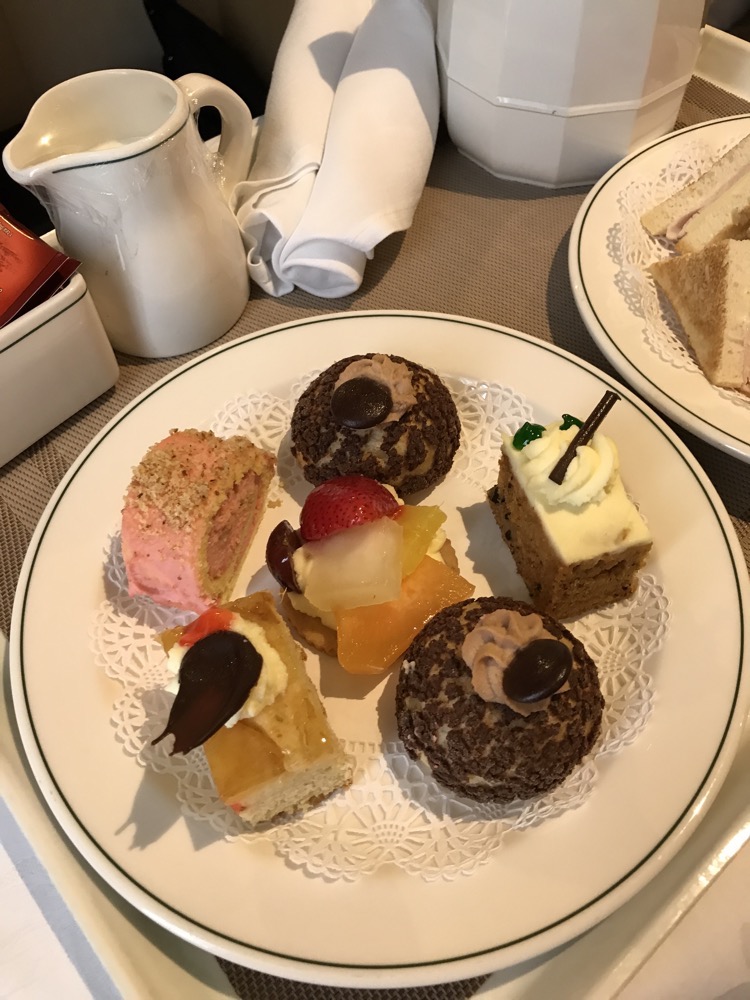
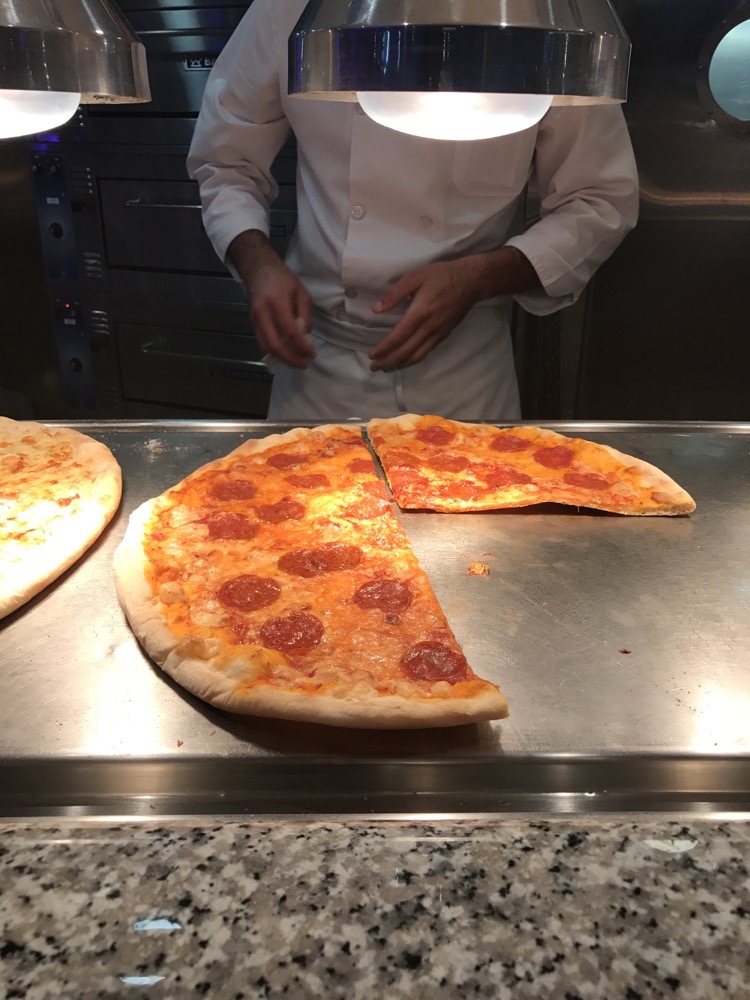
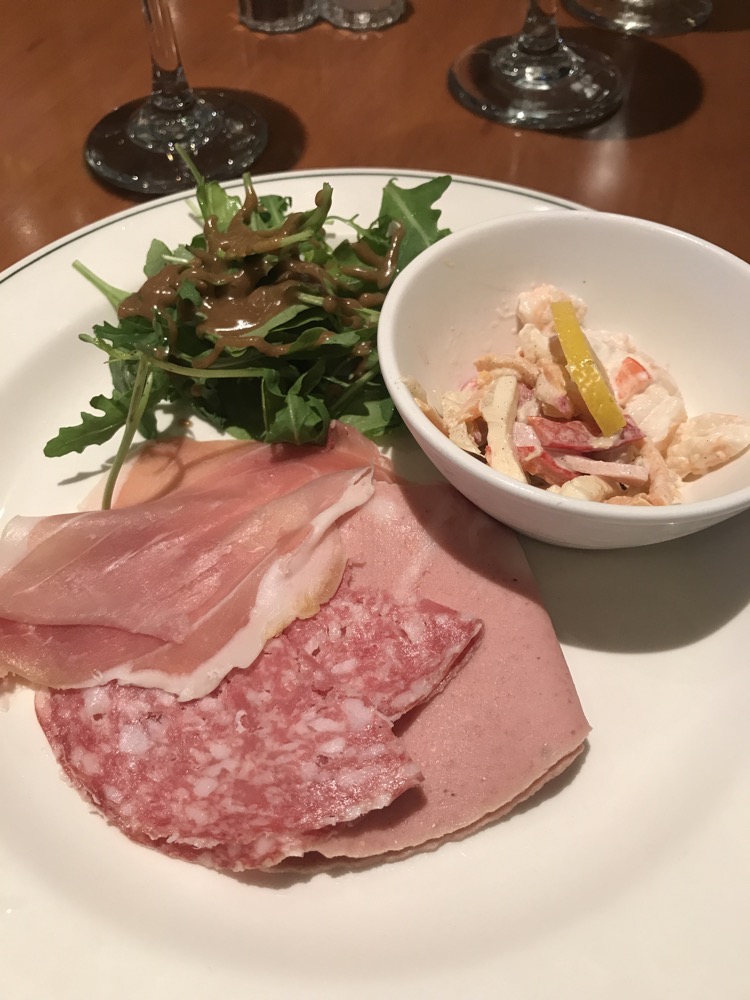 Made to order – Hawaiian with shrimp and anchovies! 😛
Made to order – Hawaiian with shrimp and anchovies! 😛 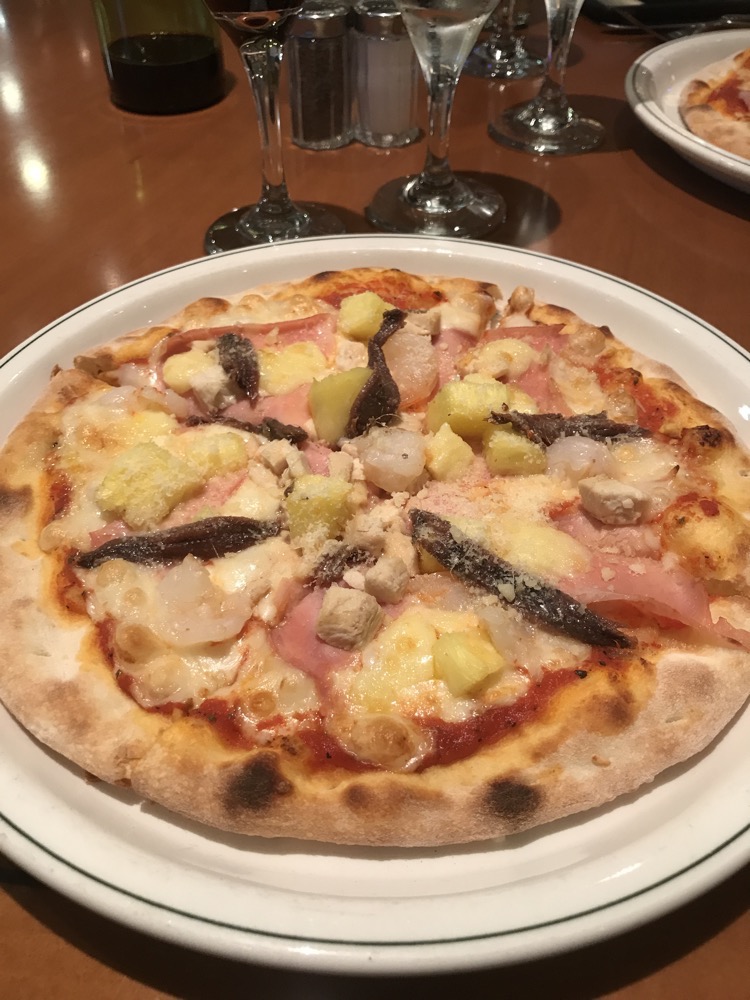
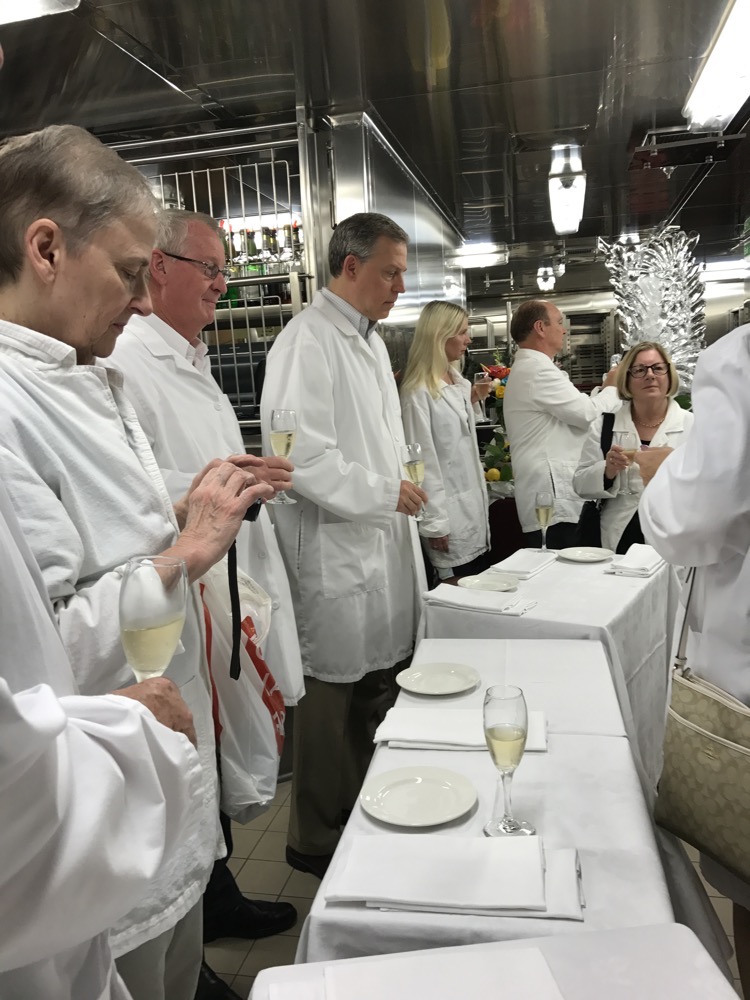 Carving displays.
Carving displays.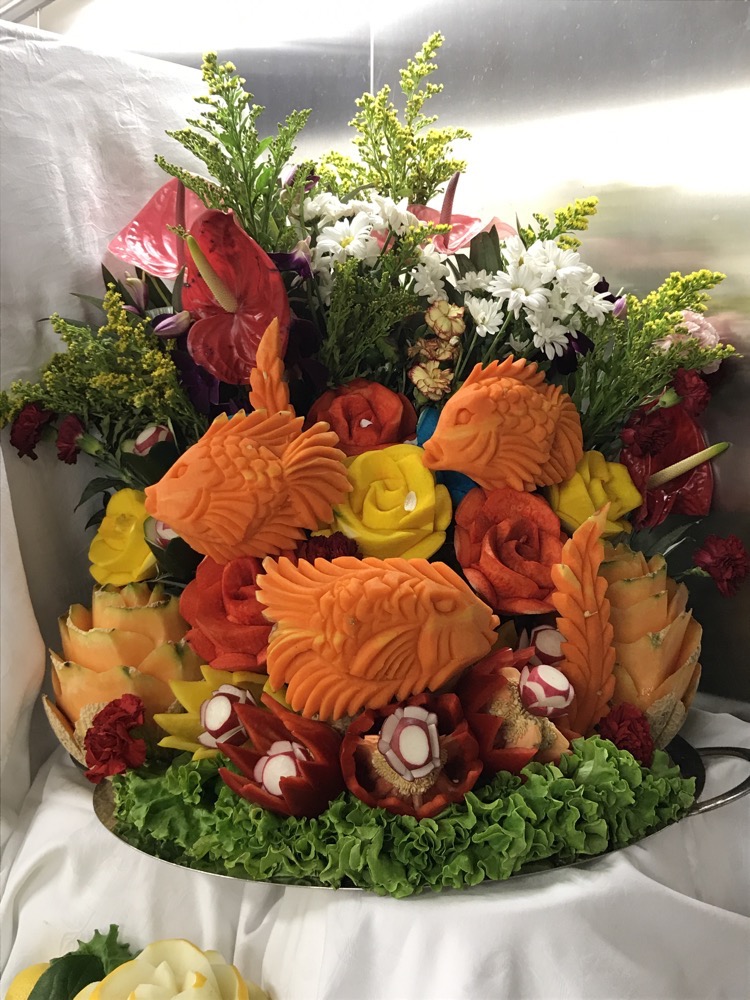
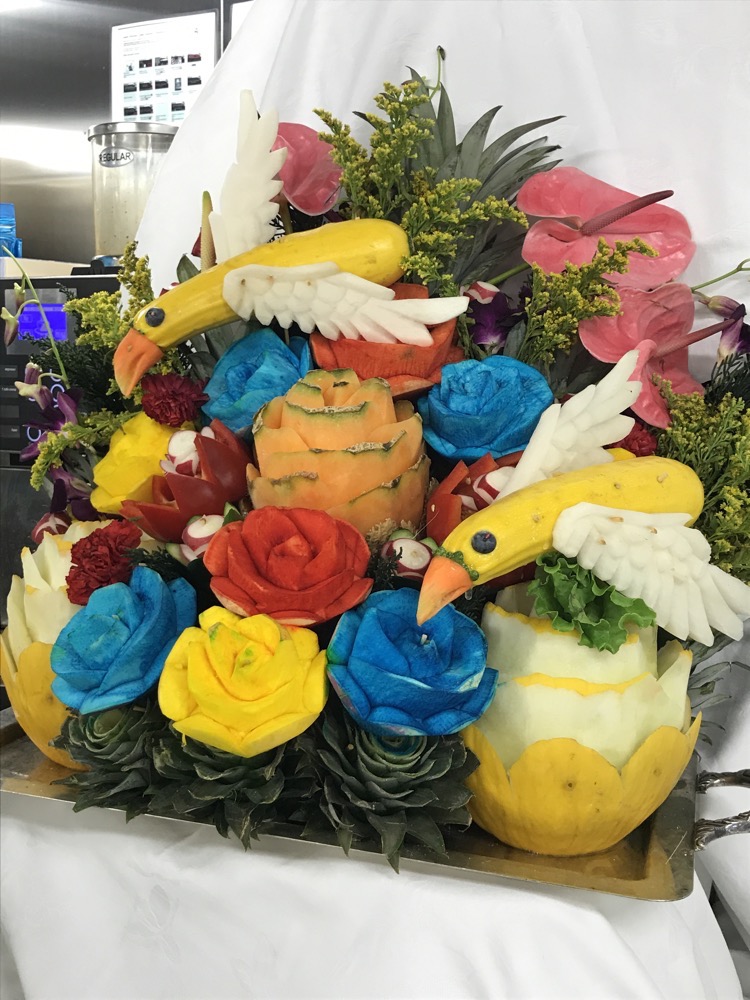
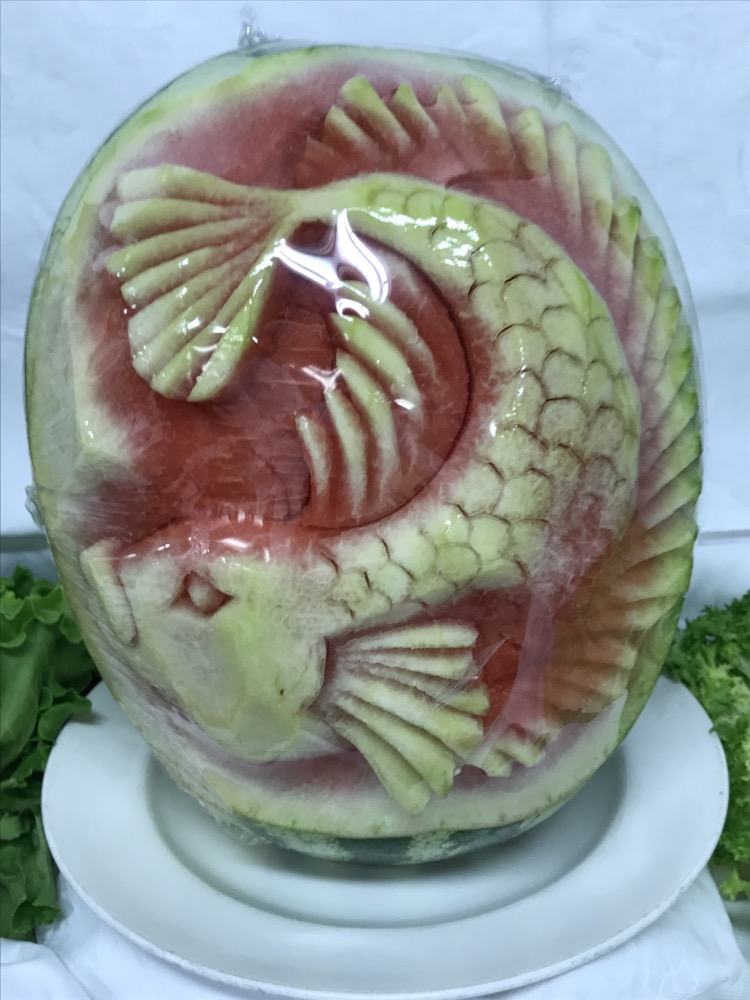
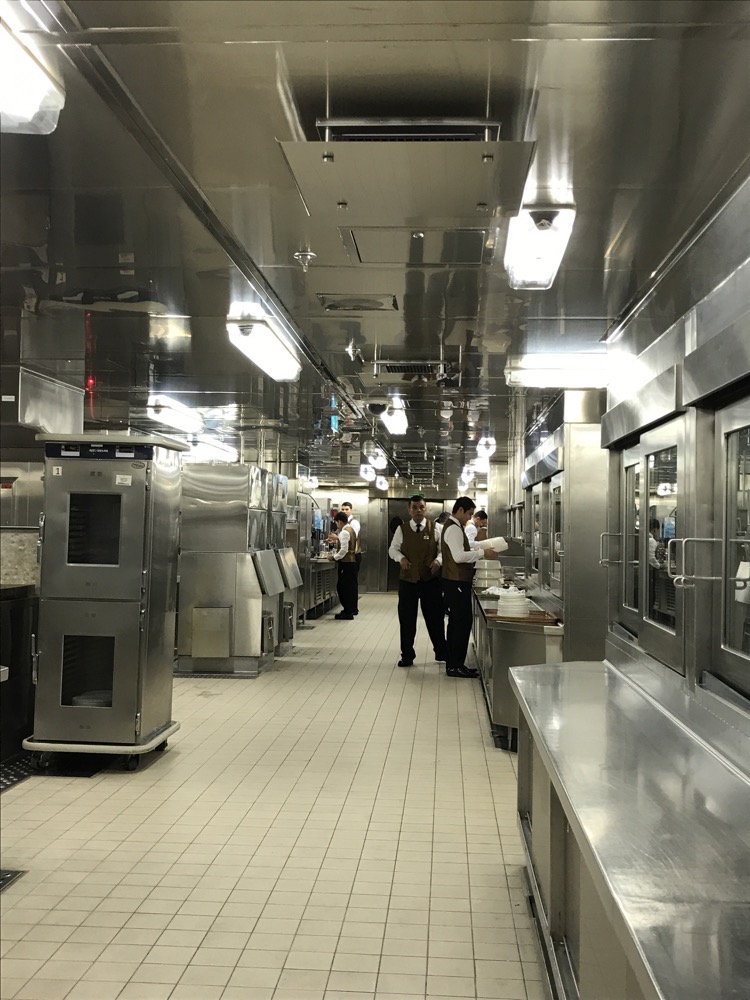 Working hard hustling out up 1200 meals at a time!
Working hard hustling out up 1200 meals at a time!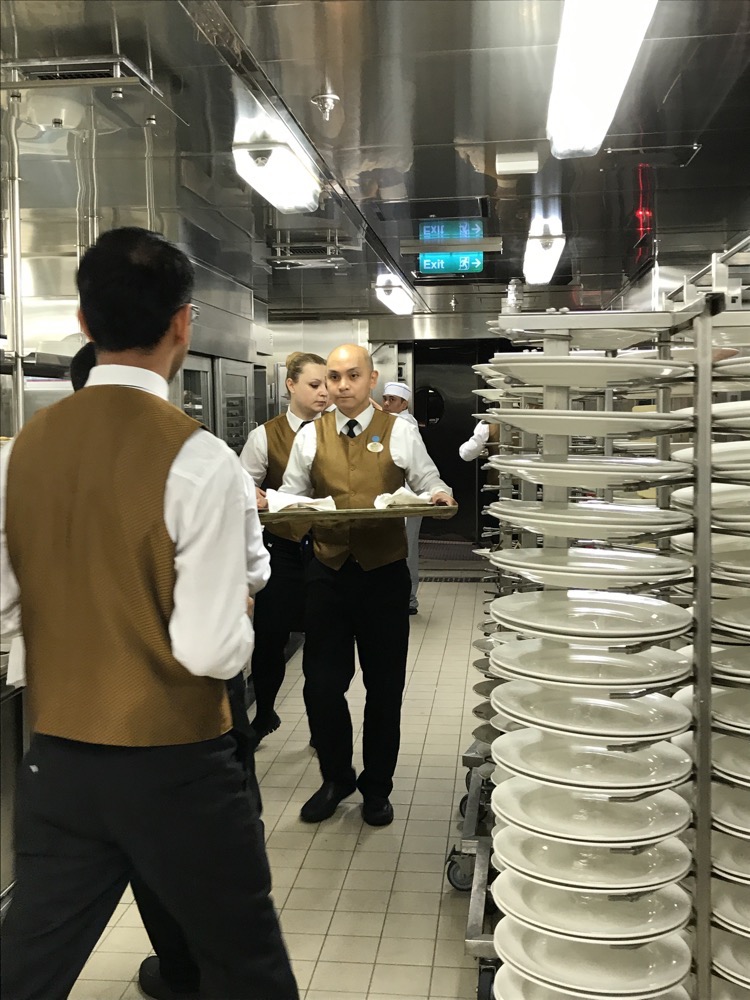
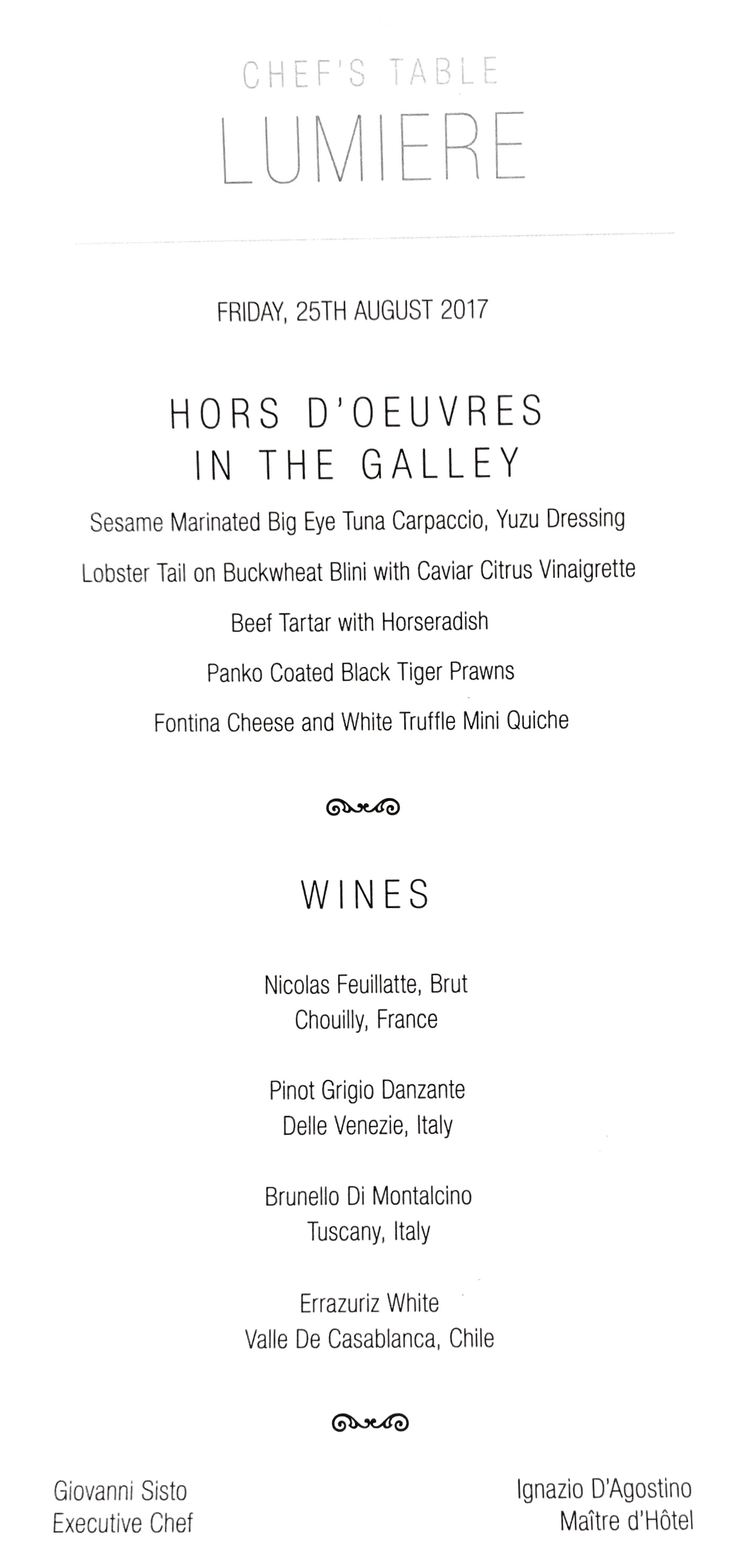
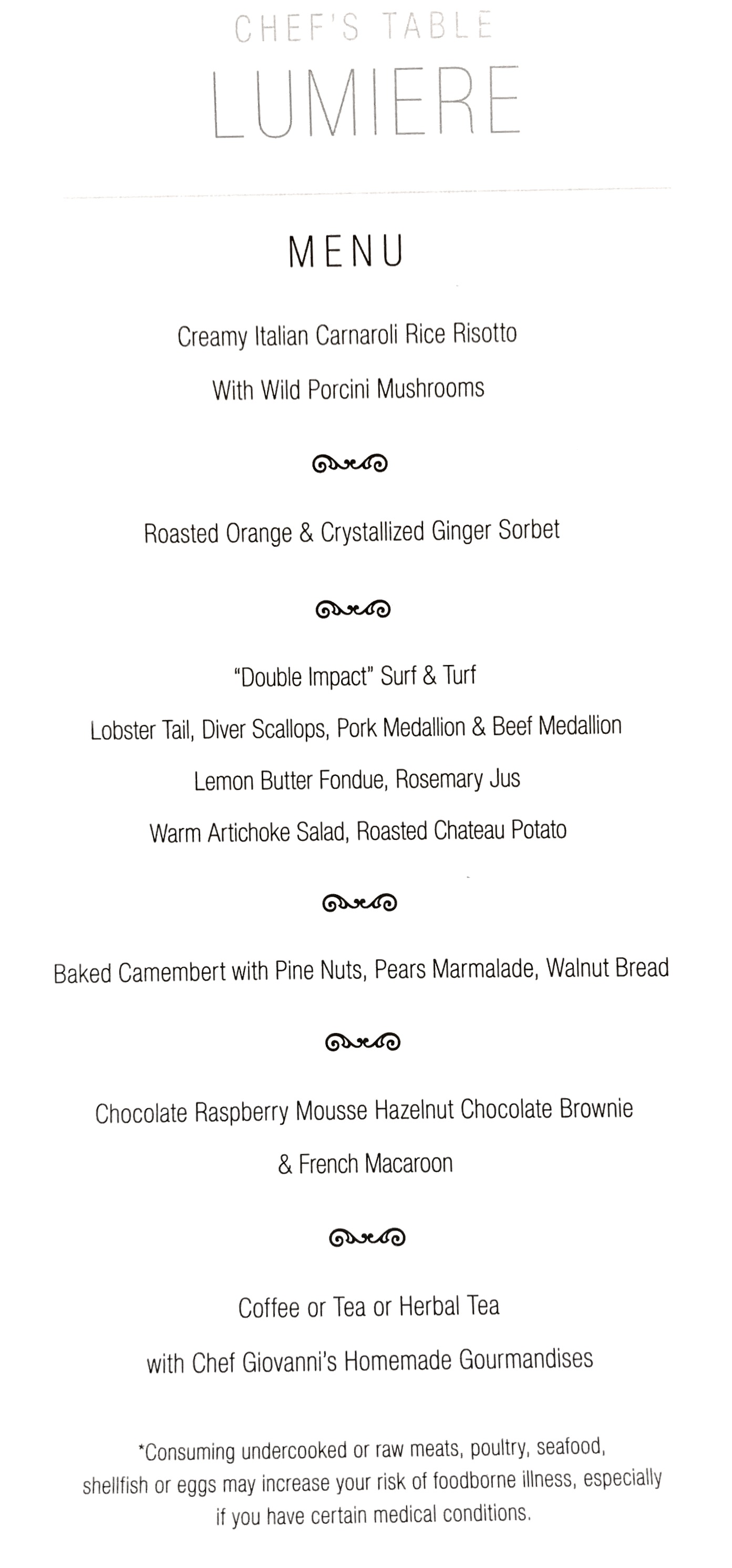 Sesame Marinated Big Eye Tuna Carpaccio, Yuzu Dressing…
Sesame Marinated Big Eye Tuna Carpaccio, Yuzu Dressing…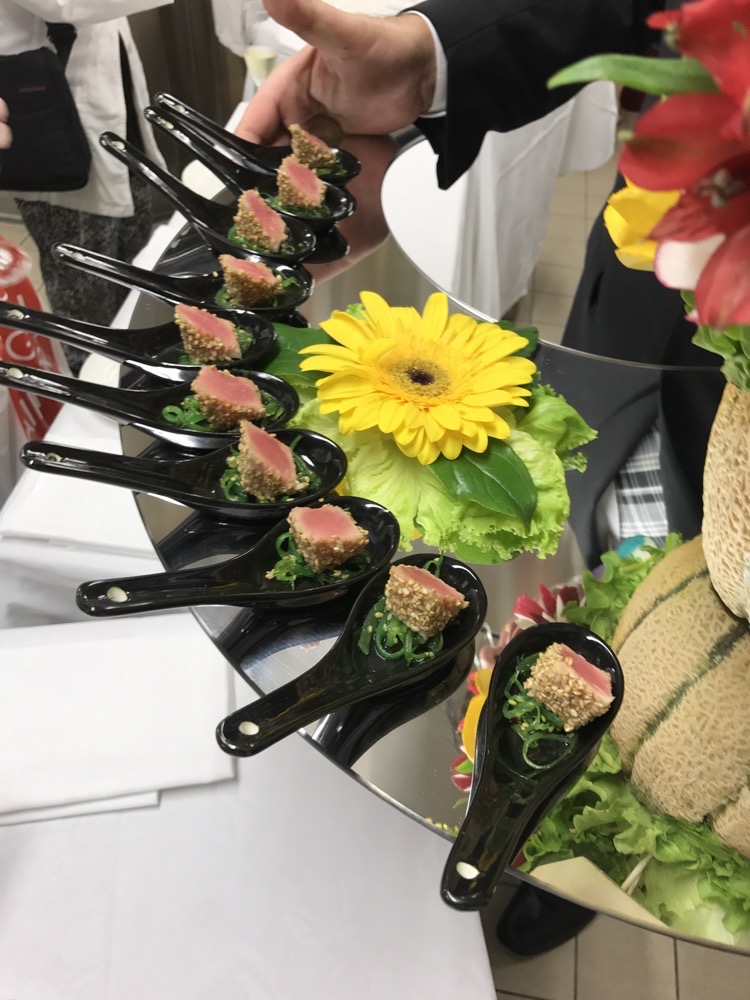
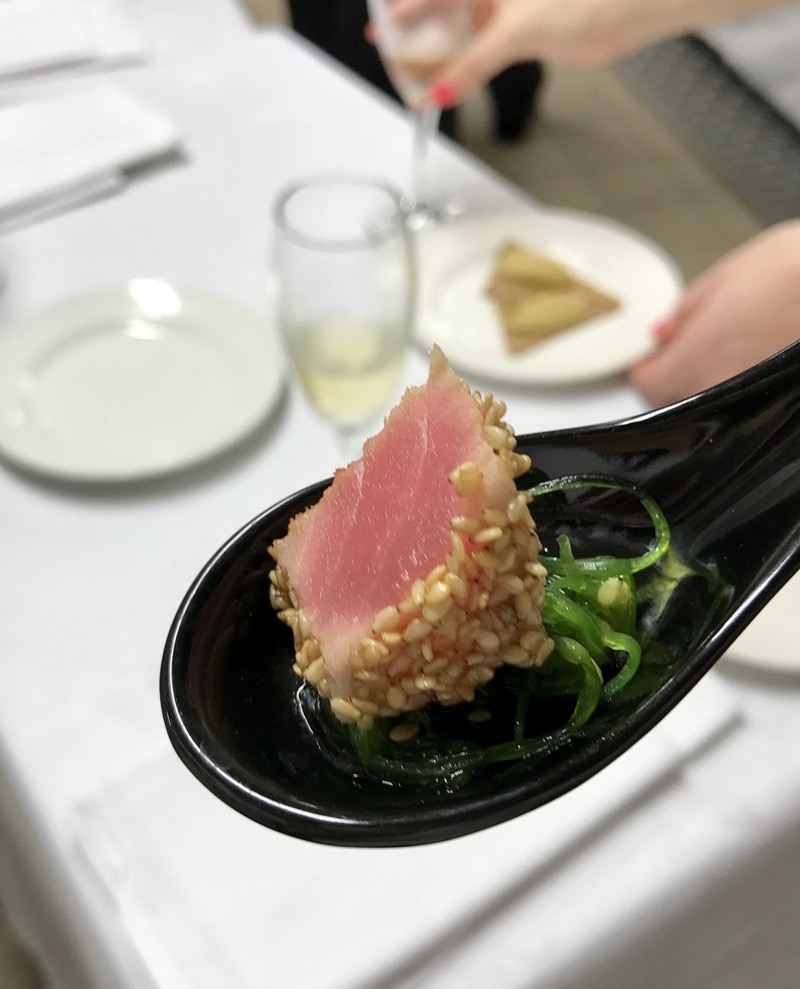 Lobster Tail on Buckwheat Blini with Caviar Citrus Vinaigrette…
Lobster Tail on Buckwheat Blini with Caviar Citrus Vinaigrette…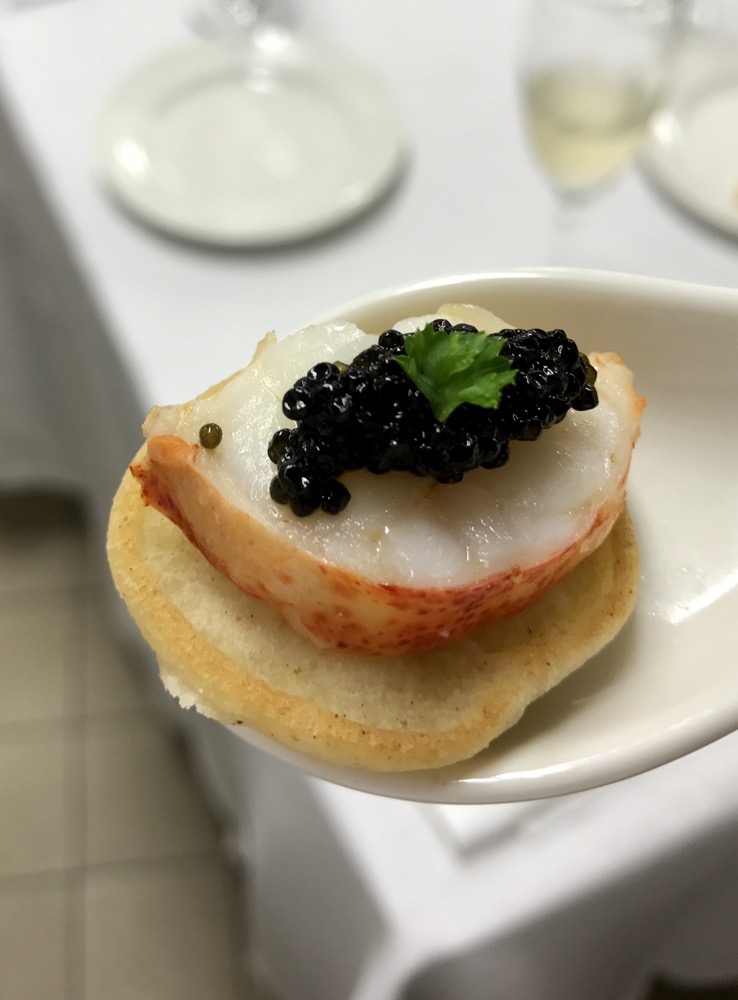 Beef Tartar with Horseradish…
Beef Tartar with Horseradish…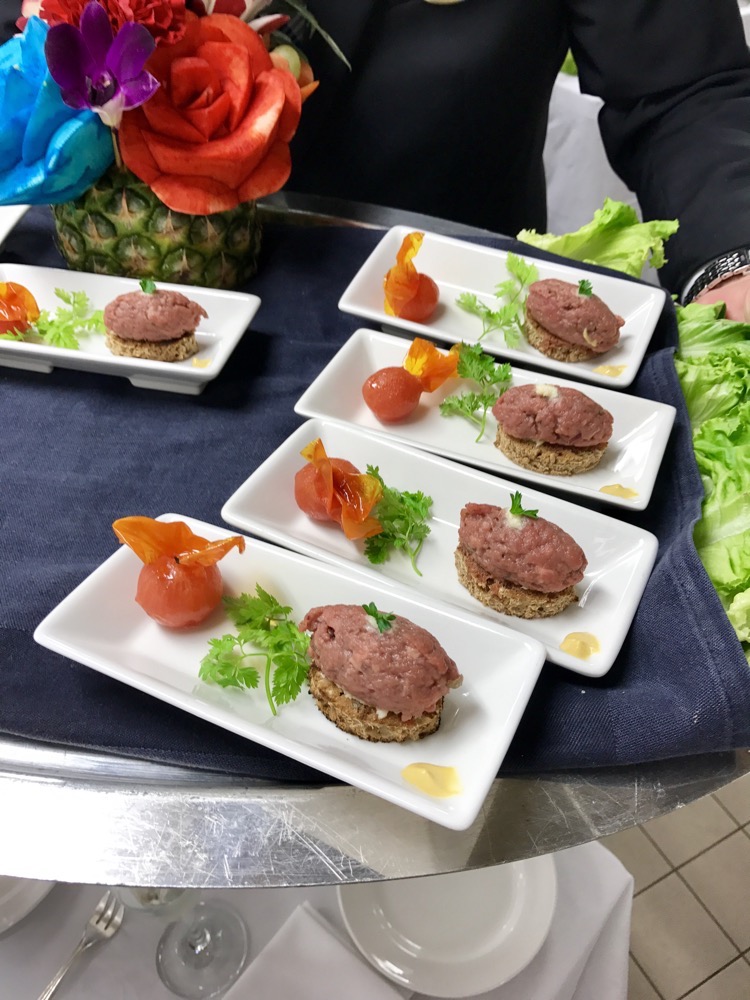 Panko Coated Black Tiger Prawns…
Panko Coated Black Tiger Prawns…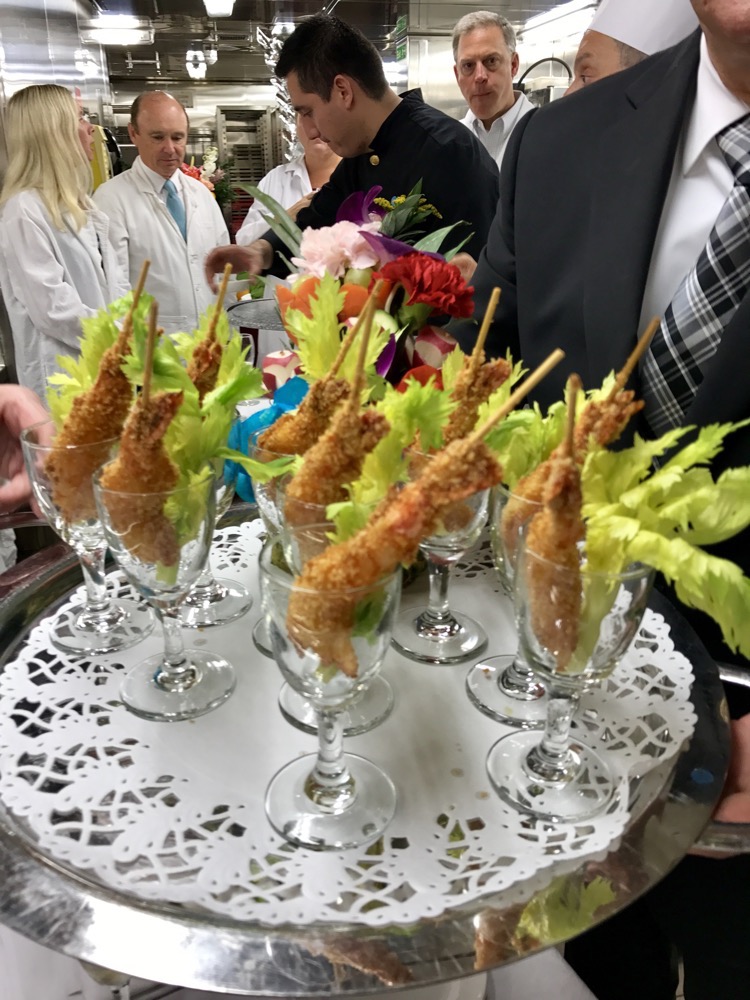 Fortina Cheese and White Truffle Mini Quiche…
Fortina Cheese and White Truffle Mini Quiche…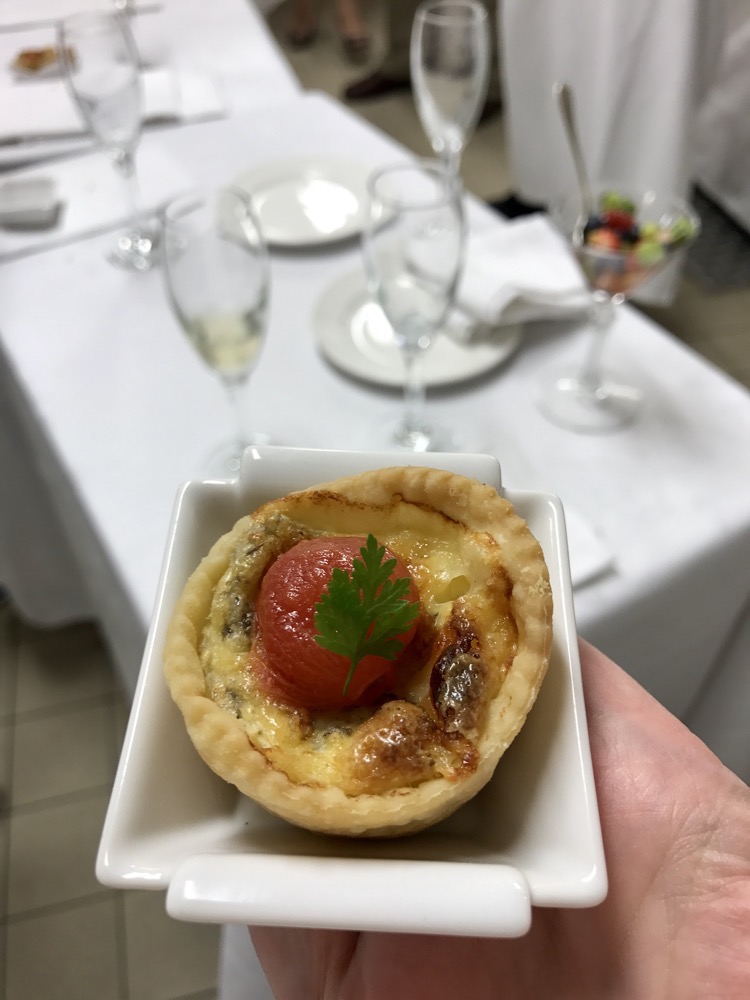
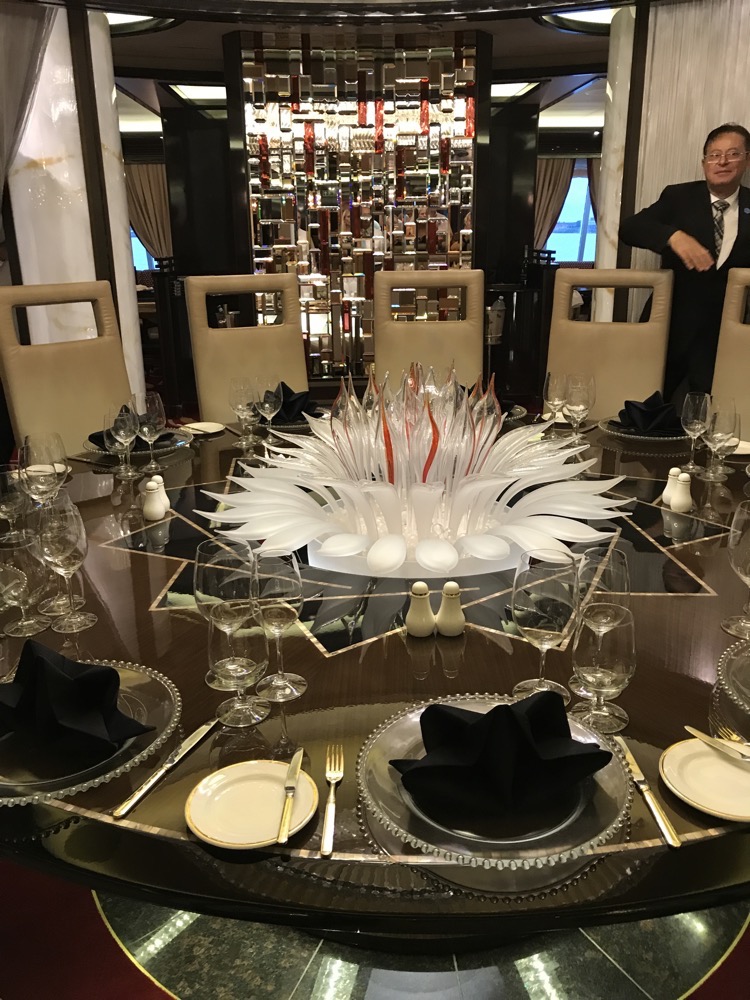
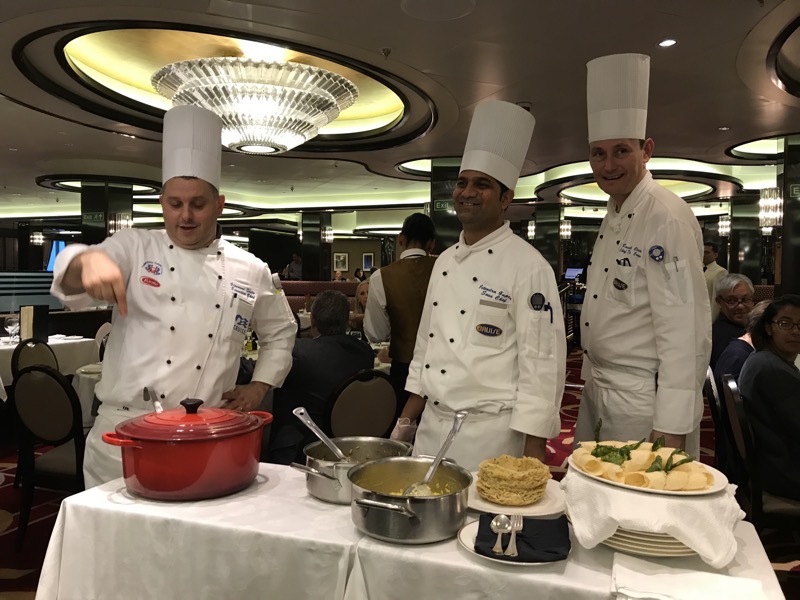
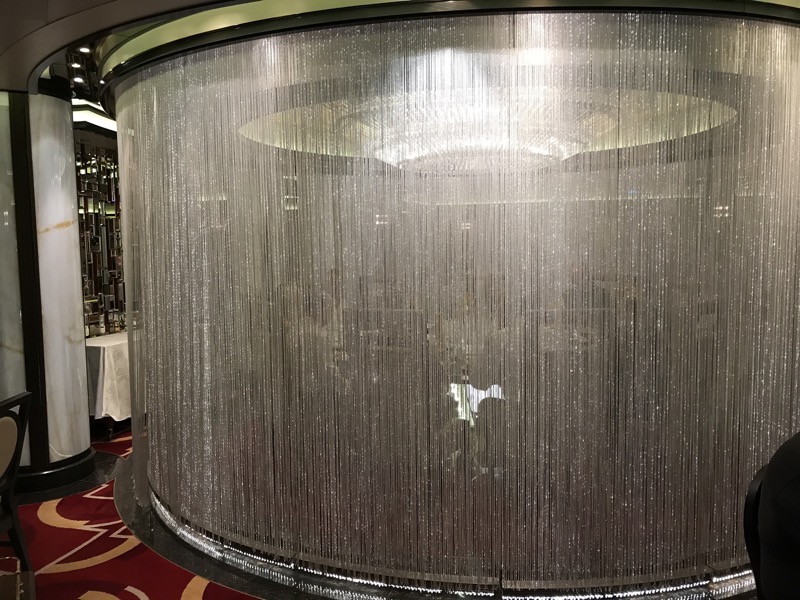 Creamy Italian Carnaroli Rice Rissotto with Wild Porcini Mushrooms…
Creamy Italian Carnaroli Rice Rissotto with Wild Porcini Mushrooms…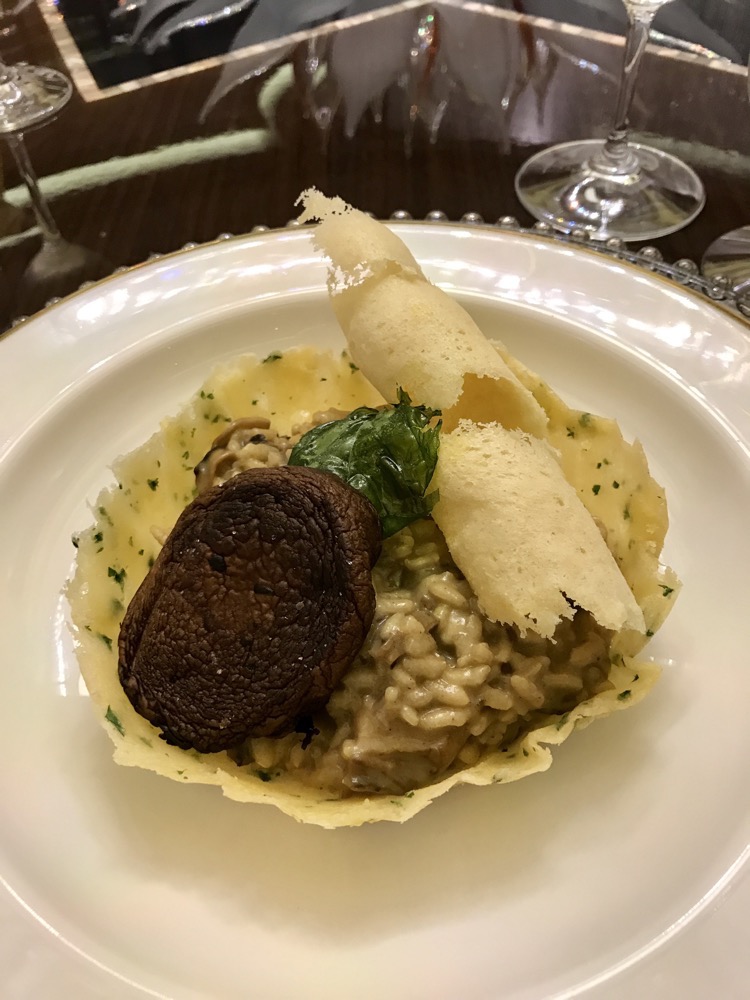 Roasted Orange & Crystallized Ginger Sorbet
Roasted Orange & Crystallized Ginger Sorbet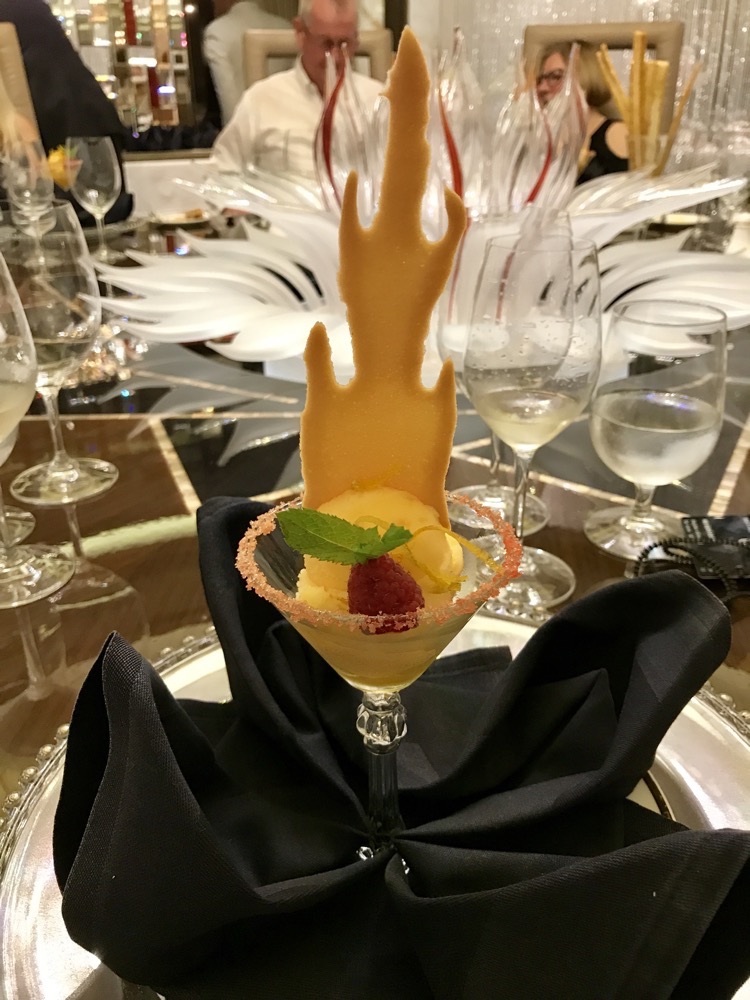 Double Impact Surf & Turf
Double Impact Surf & Turf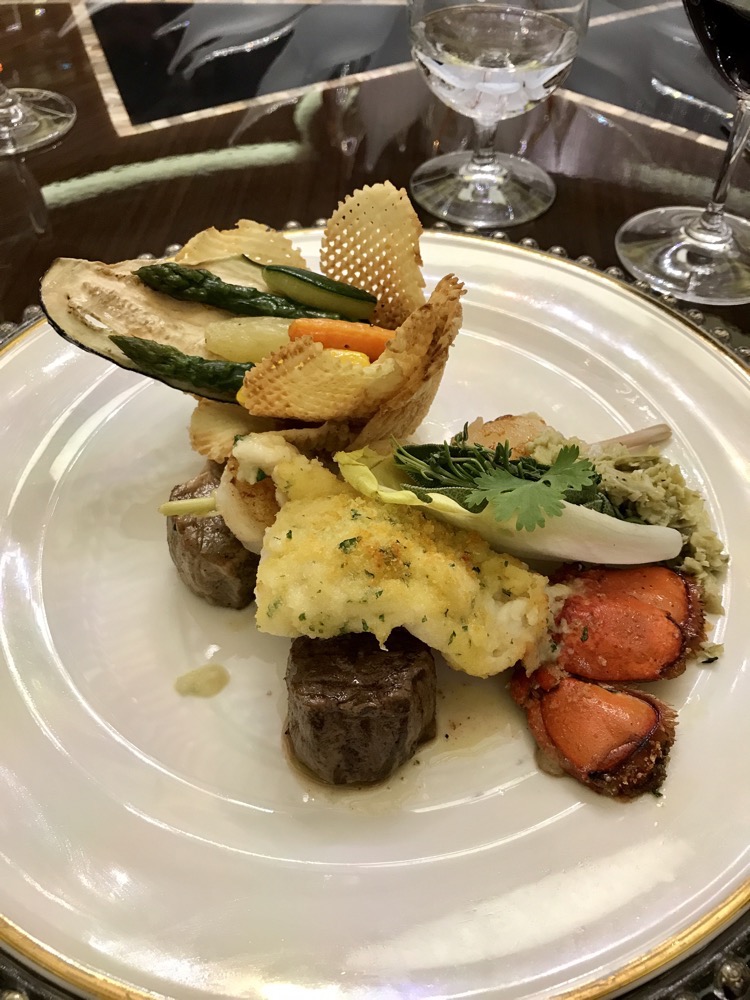 Baked Cambert with Pinenuts…
Baked Cambert with Pinenuts…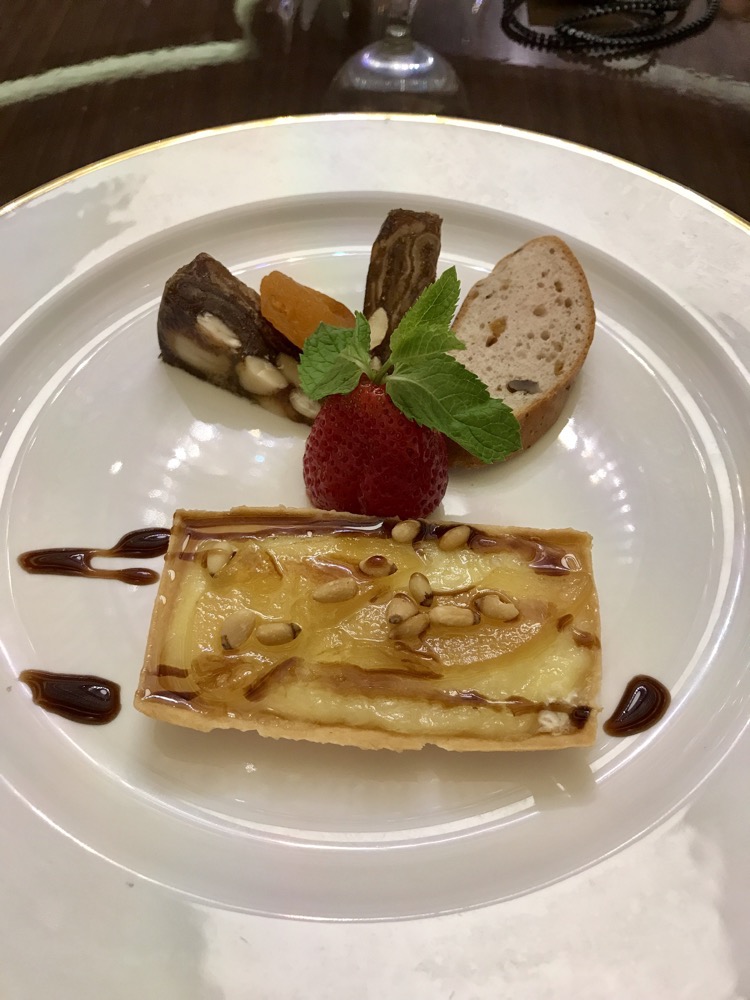 Chocolate Raspberry Mousse and Hazelnut Brownie, and French Macaroon…
Chocolate Raspberry Mousse and Hazelnut Brownie, and French Macaroon…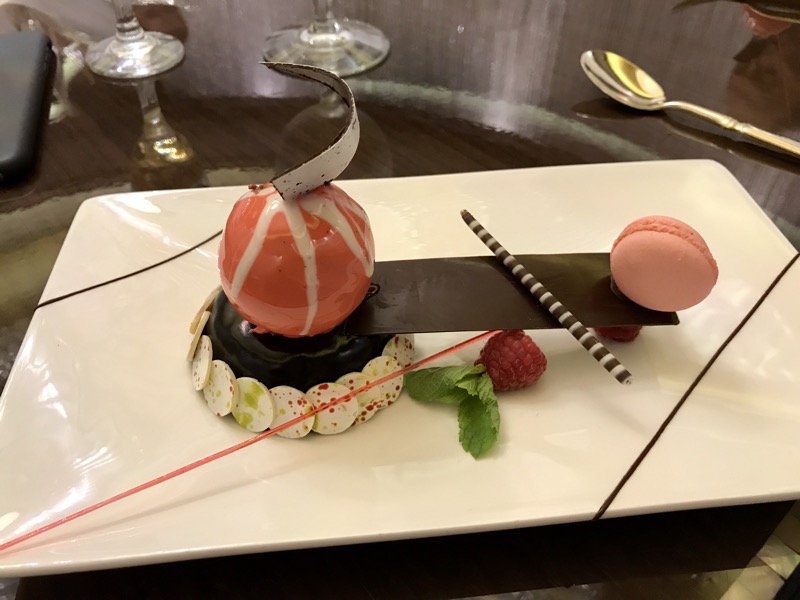 And this? Well I have no idea what this is. The Maitre D’ was speaking to some people about dietary requirements (we had one vegetarian and two no seafood and two no lactose on the table), he turned to me and asked if I had any dietary requirements, and I said to him, “No allergies at all, sir. Though I have a particular dislike for all things chocolate!” Which 1) raised some looks of incredulity from my fellow diners, “How can you not like chocolate?”, and 2) was information that was obviously filed by the Maitre D’ and they made me a special non-chocolate dessert! I have no idea what it was, but it was fabulous, something vanilla mousse-like in layers of soft caramel biscuit thing. Delicious, and so very thoughtful.
And this? Well I have no idea what this is. The Maitre D’ was speaking to some people about dietary requirements (we had one vegetarian and two no seafood and two no lactose on the table), he turned to me and asked if I had any dietary requirements, and I said to him, “No allergies at all, sir. Though I have a particular dislike for all things chocolate!” Which 1) raised some looks of incredulity from my fellow diners, “How can you not like chocolate?”, and 2) was information that was obviously filed by the Maitre D’ and they made me a special non-chocolate dessert! I have no idea what it was, but it was fabulous, something vanilla mousse-like in layers of soft caramel biscuit thing. Delicious, and so very thoughtful. 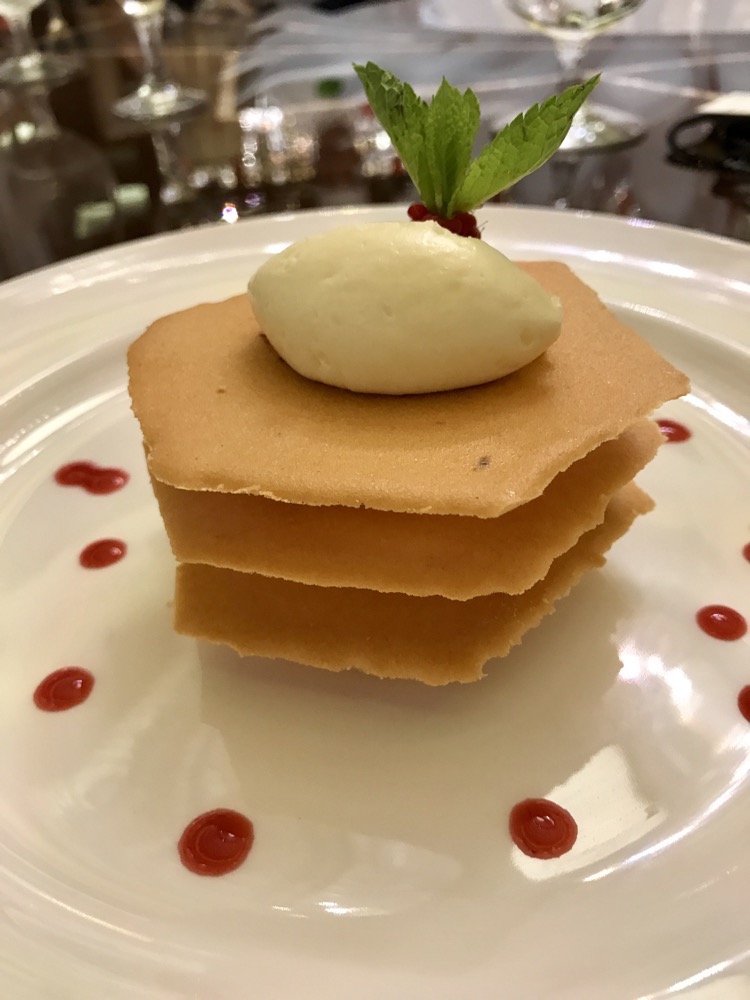 And of course, Chef Giovannis’ Homemade Gourmandises…
And of course, Chef Giovannis’ Homemade Gourmandises…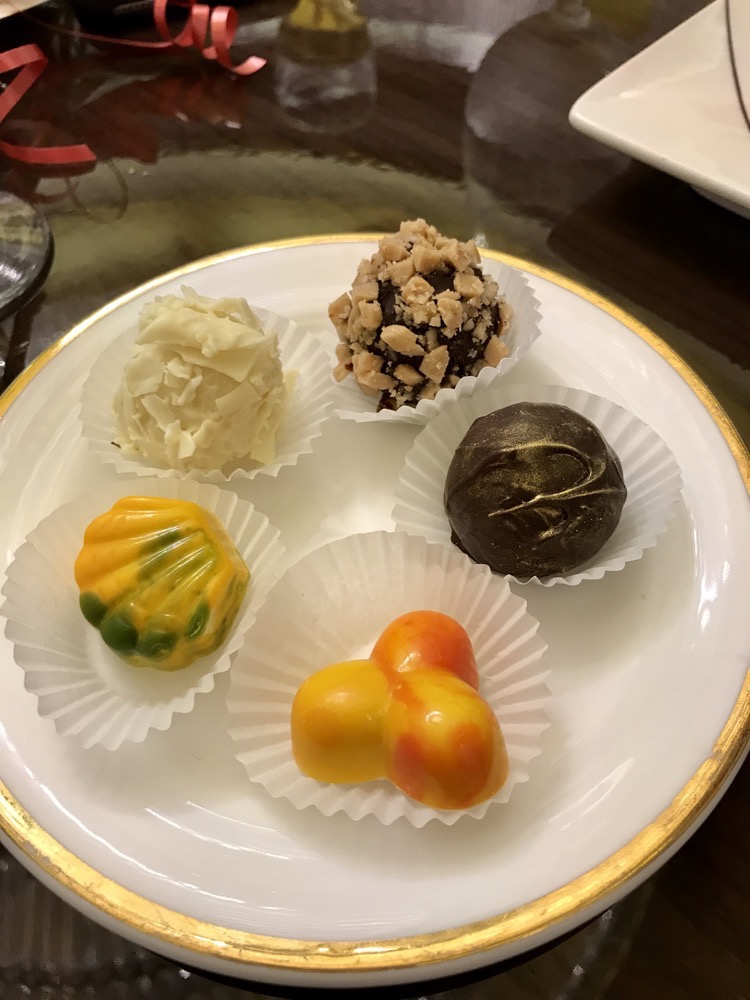
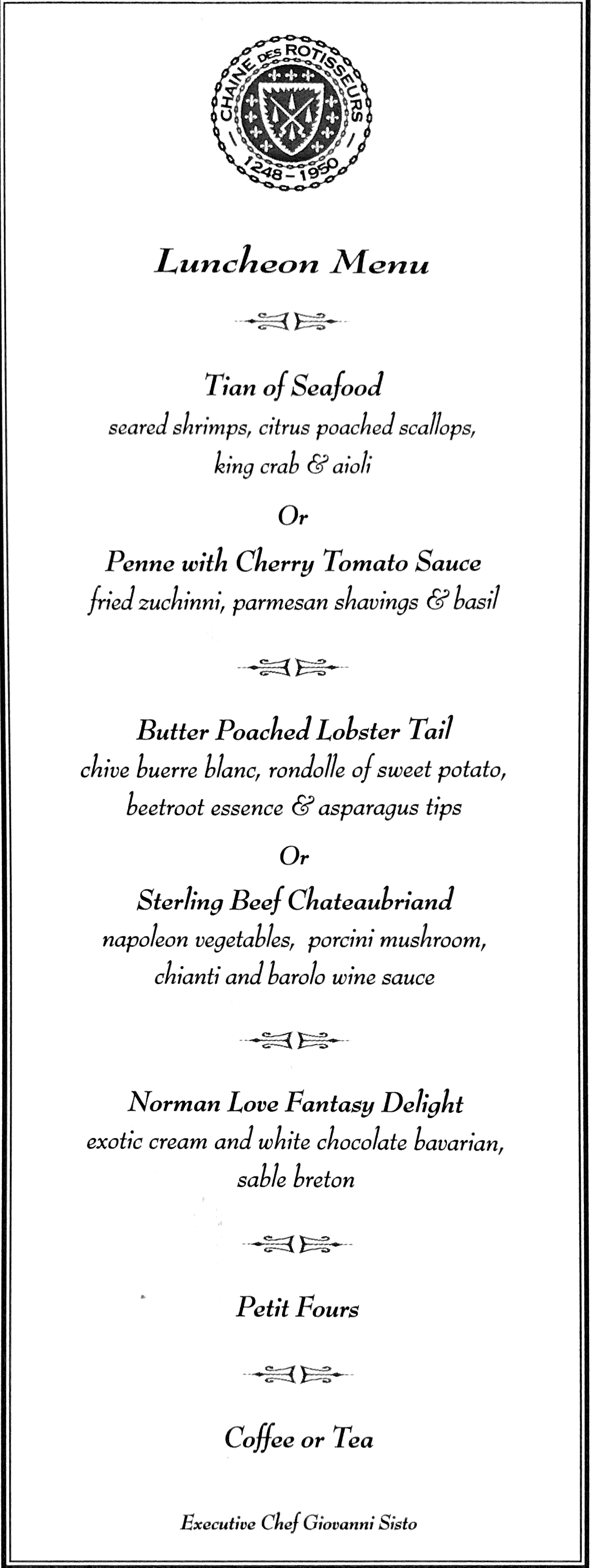 Lovely custom napery…
Lovely custom napery…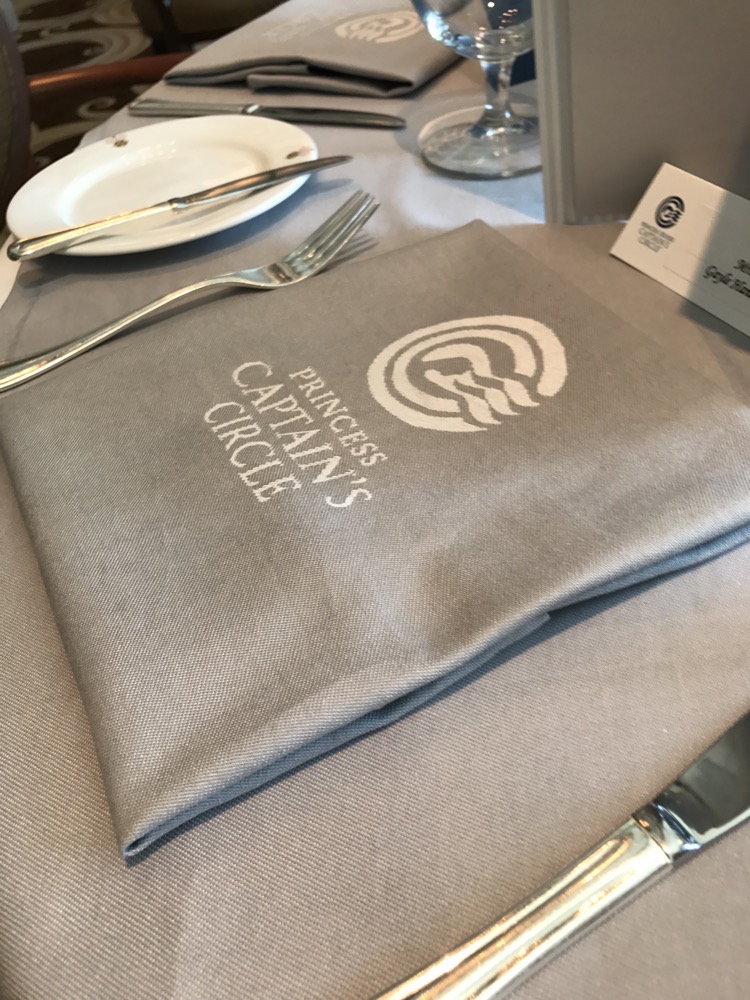 Personalized menus…
Personalized menus…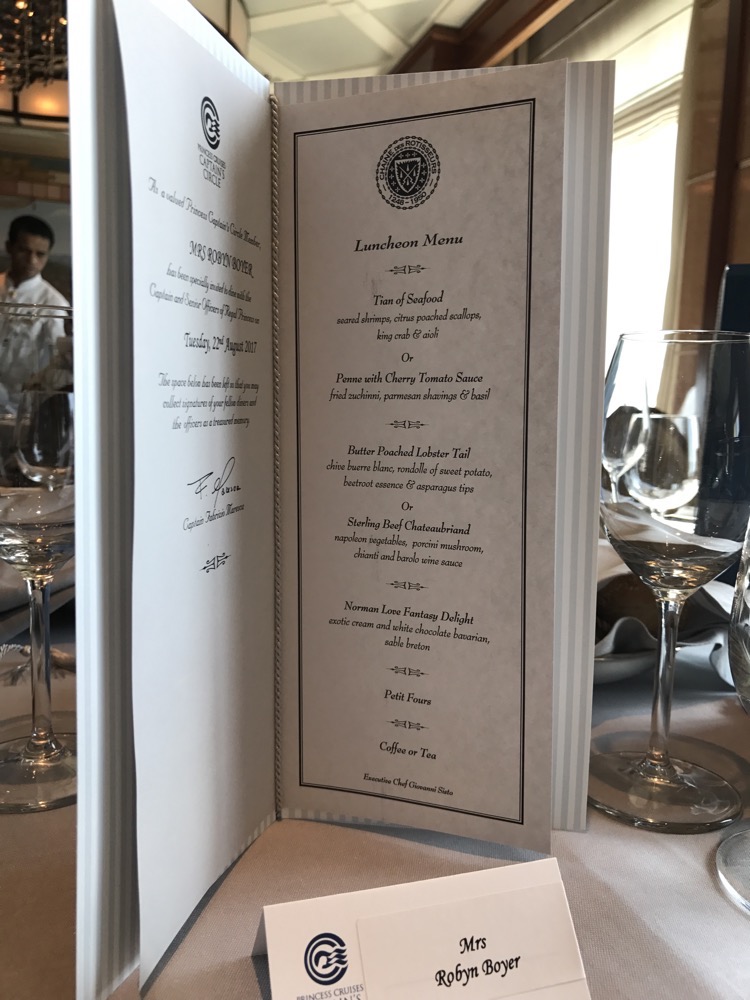 Tian of Seafood…
Tian of Seafood…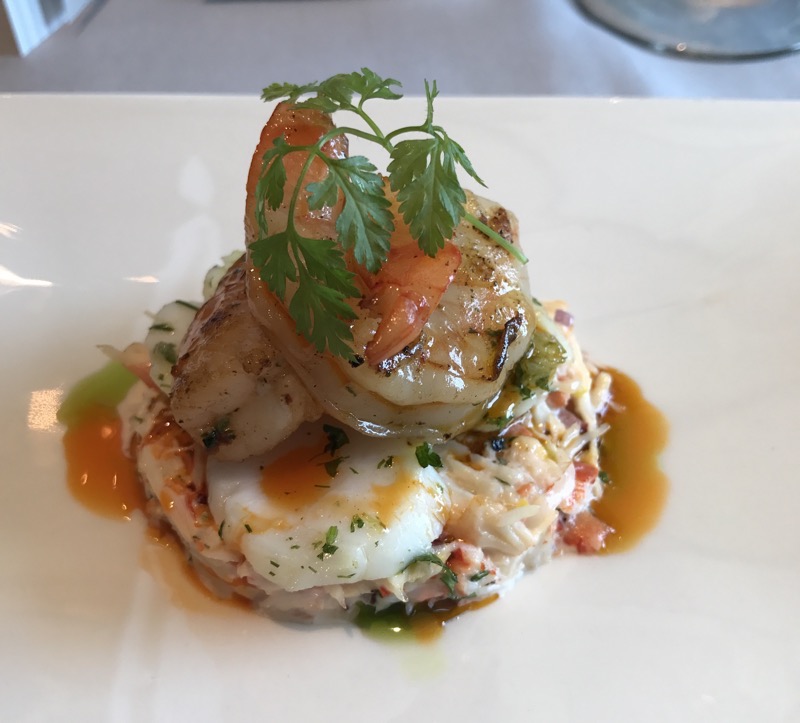 Butter Poached Lobster Tail…
Butter Poached Lobster Tail…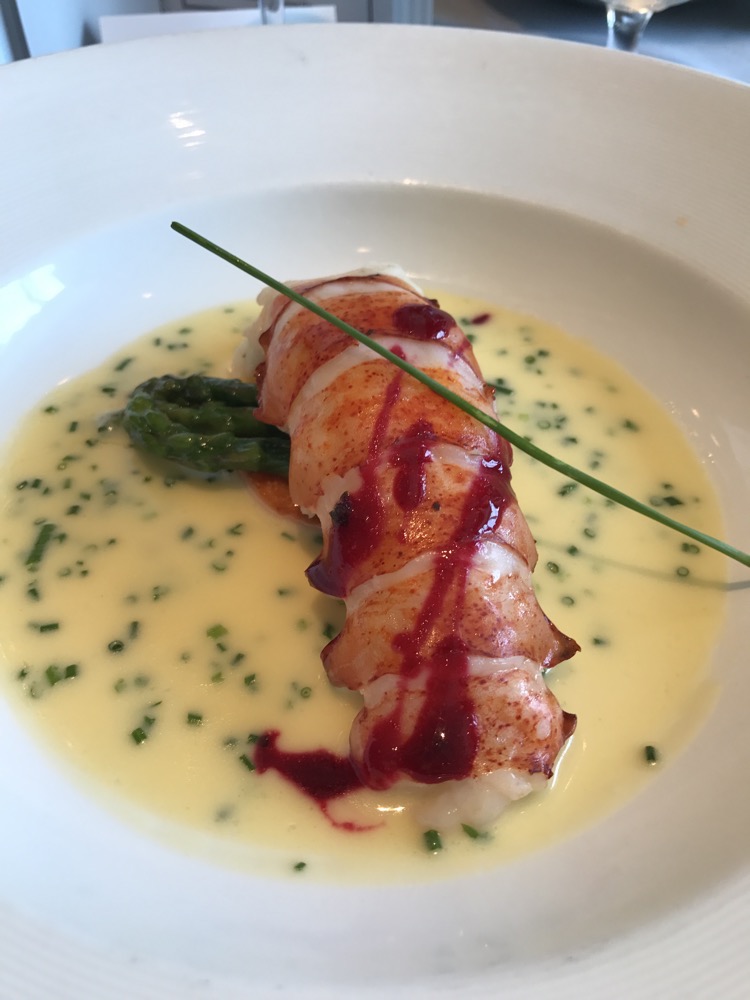 Norman Love Fantasy Delight…
Norman Love Fantasy Delight…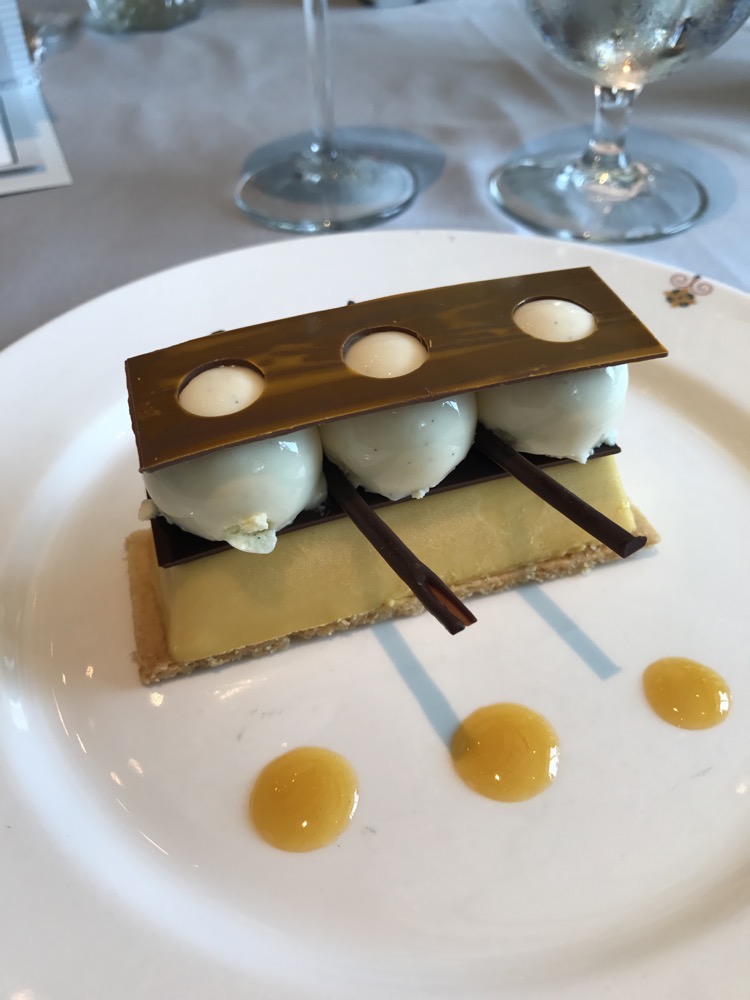
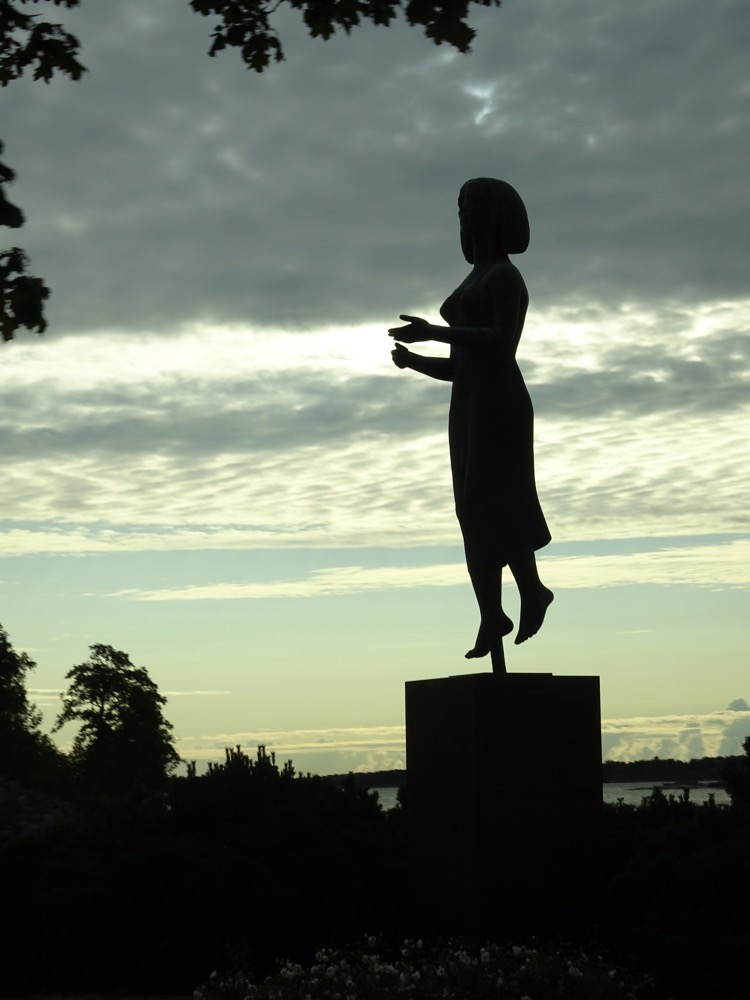 Finland! Finland! Finland!
Finland! Finland! Finland!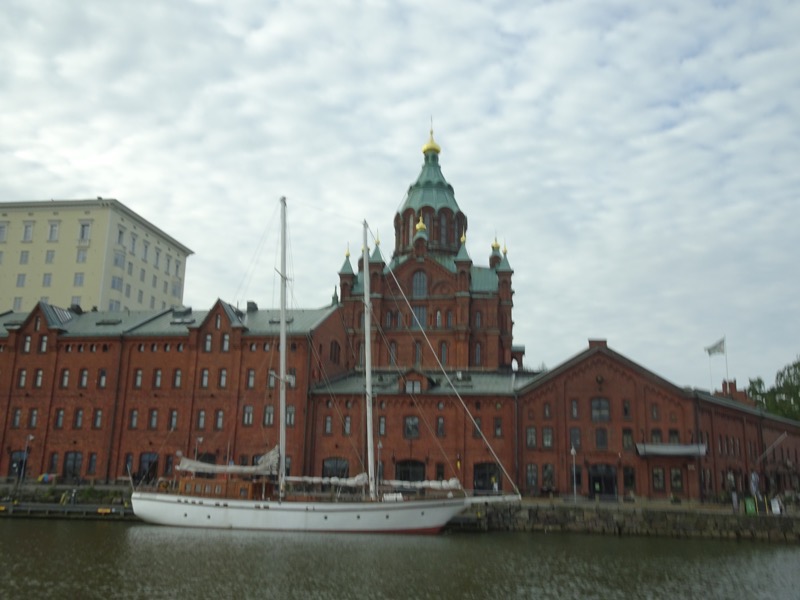 But we were in Helsinki today, and we came to see what we could learn. Helsinki is the capital of Finland and is the largest city in the country. It is a very beautiful city drowning in lovely art nouveau architecture. Not quite as elaborate as what you see in southern art nouveau cities, in France for example, but with a Finnish simplicity incorporated into the design somehow. Many of the buildings we saw in town were beautiful.
But we were in Helsinki today, and we came to see what we could learn. Helsinki is the capital of Finland and is the largest city in the country. It is a very beautiful city drowning in lovely art nouveau architecture. Not quite as elaborate as what you see in southern art nouveau cities, in France for example, but with a Finnish simplicity incorporated into the design somehow. Many of the buildings we saw in town were beautiful.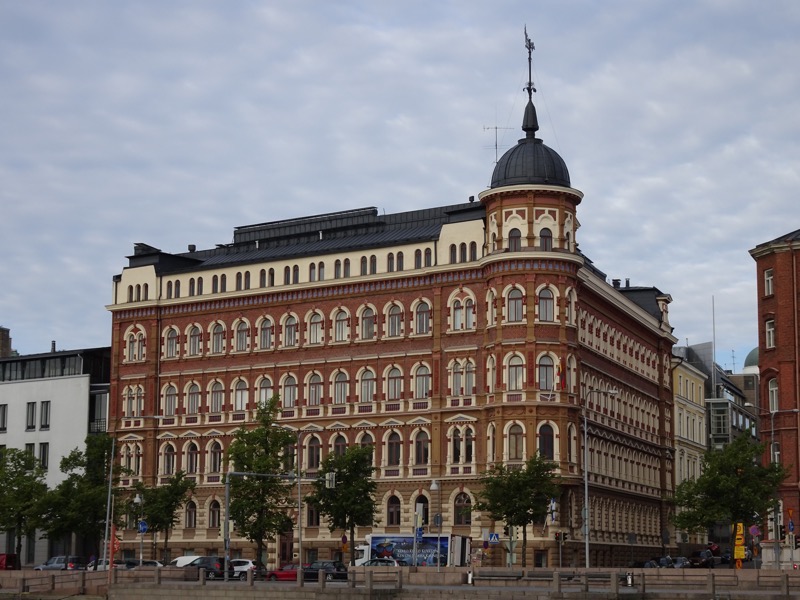 The striking Uspenski Cathedral, built in the 1860s.
The striking Uspenski Cathedral, built in the 1860s.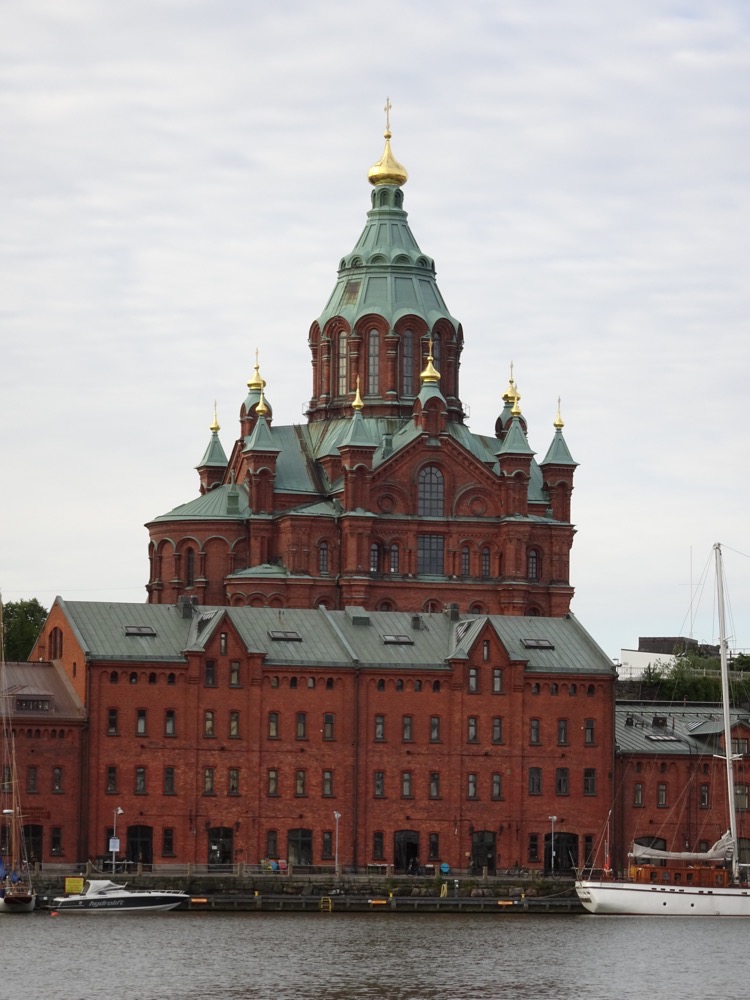
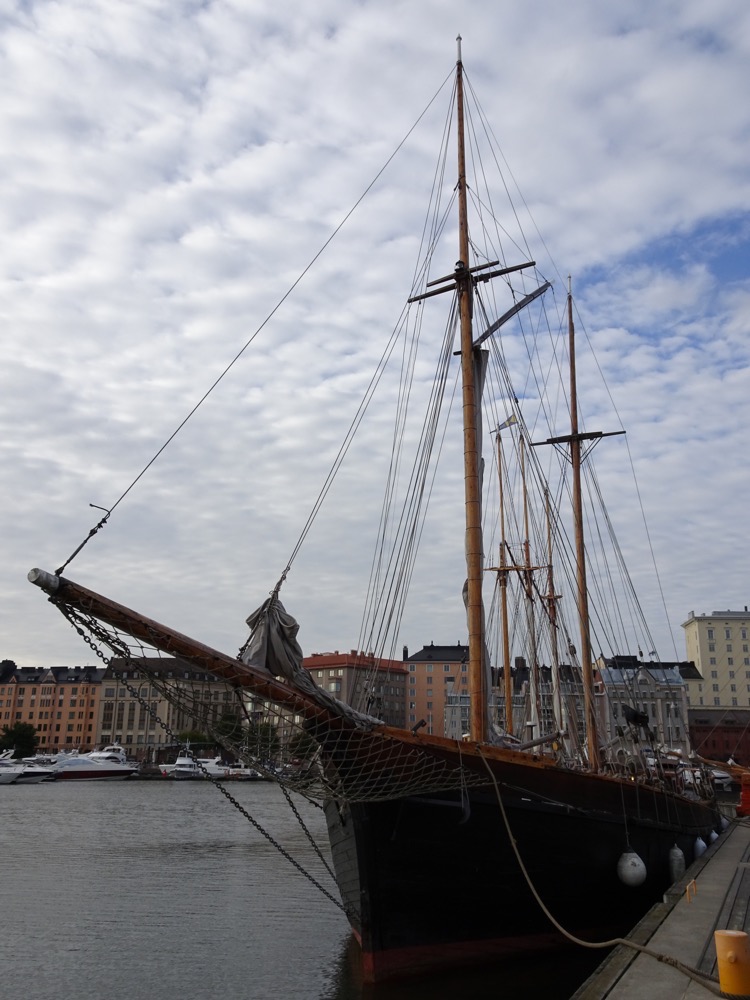
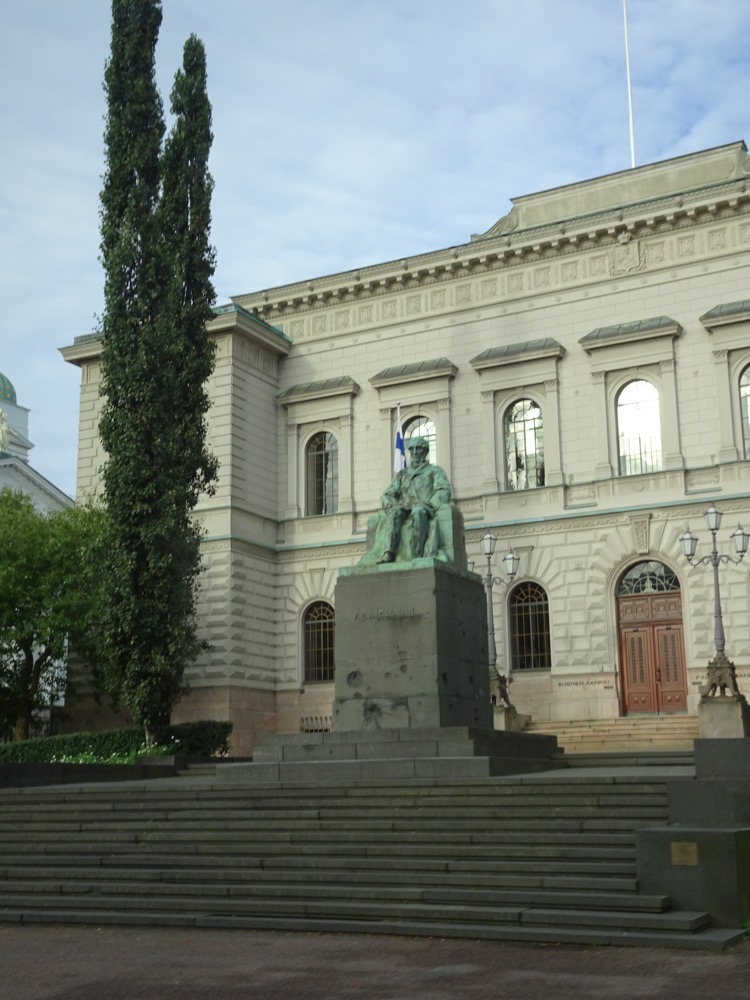 Much of the city’s design was the result of one, Carl Ludvig Engel, who was appointed to plan the city centre. He designed many neoclassical buildings in the city, with the focal point being the large Senate Square which is surrounded by the Government Palace, the Helsinki Cathedral and the main Helsinki University (yellow building below).
Much of the city’s design was the result of one, Carl Ludvig Engel, who was appointed to plan the city centre. He designed many neoclassical buildings in the city, with the focal point being the large Senate Square which is surrounded by the Government Palace, the Helsinki Cathedral and the main Helsinki University (yellow building below). 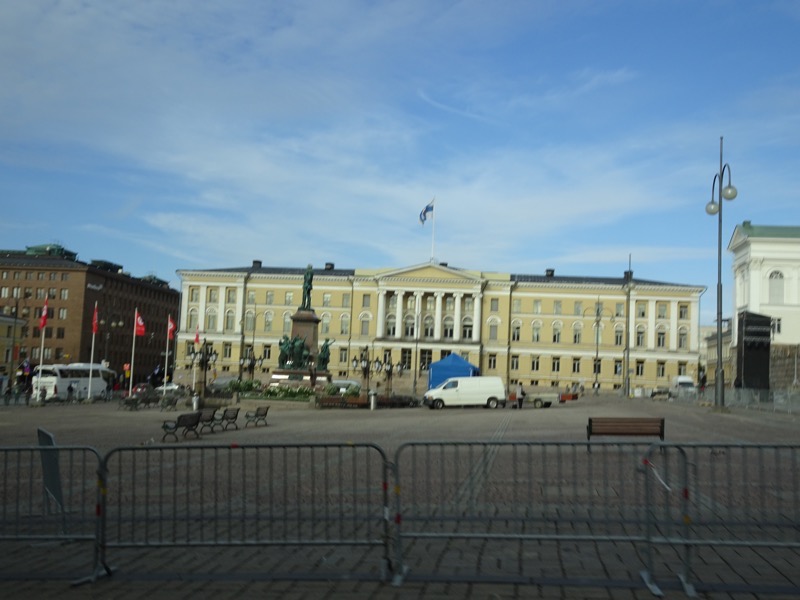 Helsinki Cathedral is the Finnish Evangelical Lutheran church that dominates the skyline in the central square of Helsinki. the Chruch was originally built in the mid-1800s (and called St Nicholas Church), as a tribute to Tsar Nicholas I of Russia, who was also the Grand Duke of Finland before Finland gained their independence in 1917 when it was renamed to be the Helsinki Cathedral. The Finnish never had a lot of trouble with Russia by the sounds of it – Nicolas allowed them to be predominantly autonomous whilst still being part of the Russian Empire.
Helsinki Cathedral is the Finnish Evangelical Lutheran church that dominates the skyline in the central square of Helsinki. the Chruch was originally built in the mid-1800s (and called St Nicholas Church), as a tribute to Tsar Nicholas I of Russia, who was also the Grand Duke of Finland before Finland gained their independence in 1917 when it was renamed to be the Helsinki Cathedral. The Finnish never had a lot of trouble with Russia by the sounds of it – Nicolas allowed them to be predominantly autonomous whilst still being part of the Russian Empire.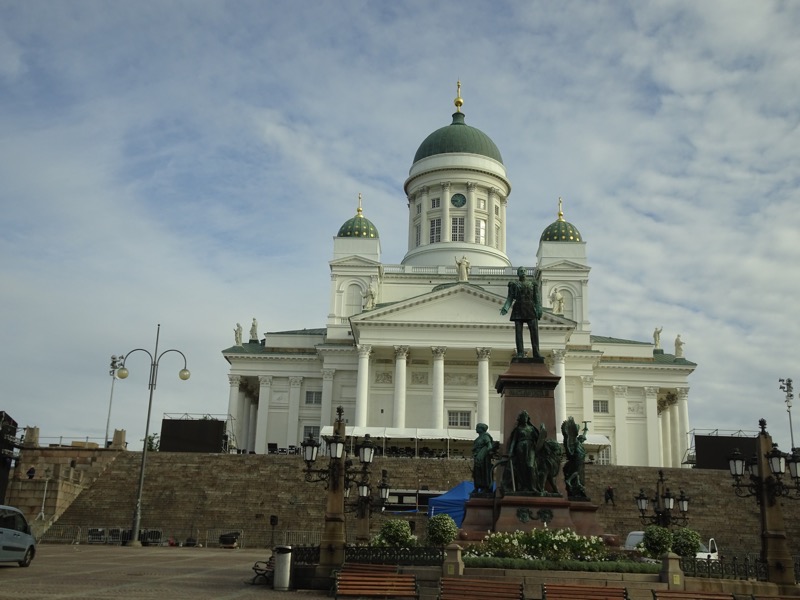
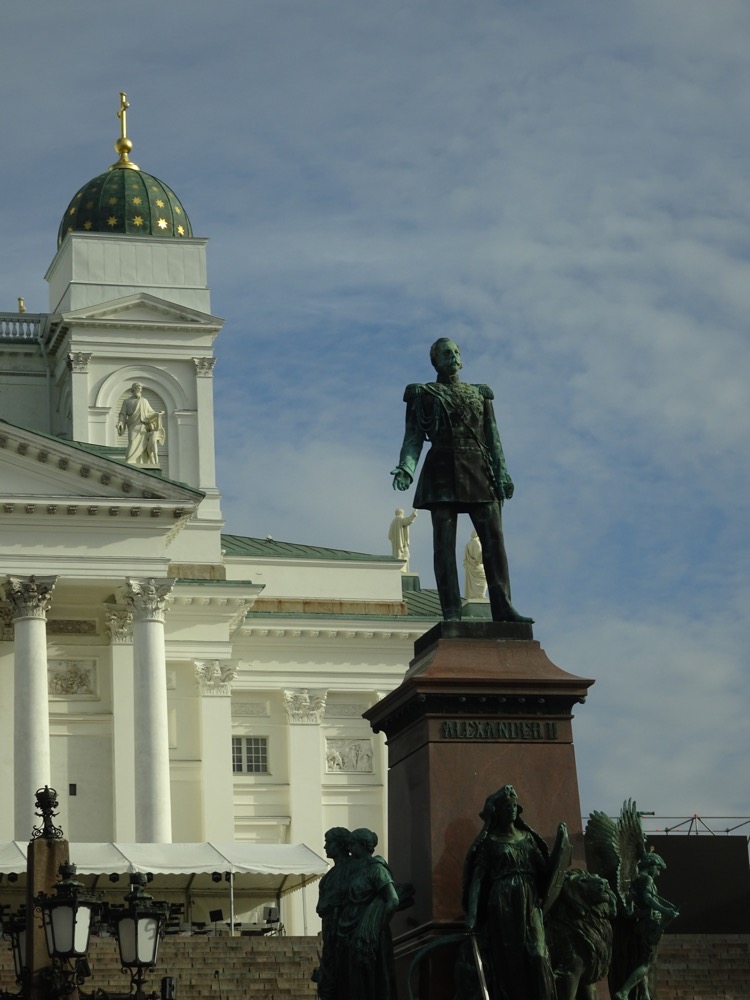
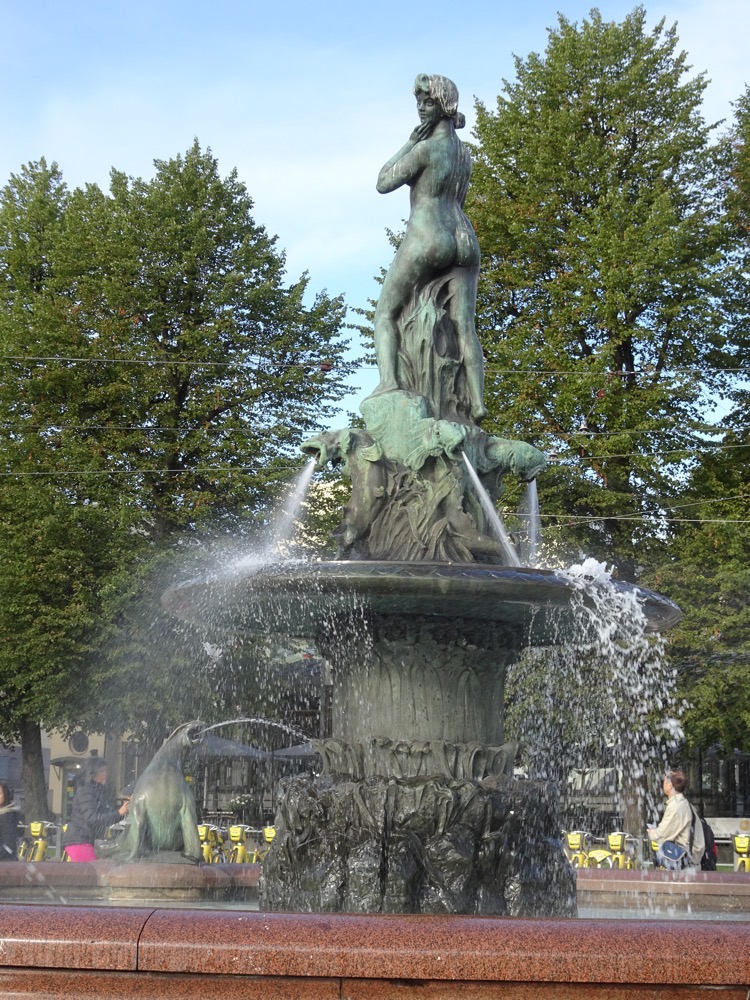 Our guide, Olga tells us that the statue was initially considered to be too saucy for the Fins and many originally didn’t like it because it was too suggestive, and others disliked the passivity and objectification of the womens (Finland was the first country to give women the vote, so they were very progressive in their thinking towards women’s right as early as the beginning of last century). Now, the Havis Amanda is fondly accepted and is a favoured spot for bucks parties and bachelorette parties to end up for late night drunken swimming, and students traditionally put a cap on Amanda every graduation season.
Our guide, Olga tells us that the statue was initially considered to be too saucy for the Fins and many originally didn’t like it because it was too suggestive, and others disliked the passivity and objectification of the womens (Finland was the first country to give women the vote, so they were very progressive in their thinking towards women’s right as early as the beginning of last century). Now, the Havis Amanda is fondly accepted and is a favoured spot for bucks parties and bachelorette parties to end up for late night drunken swimming, and students traditionally put a cap on Amanda every graduation season. 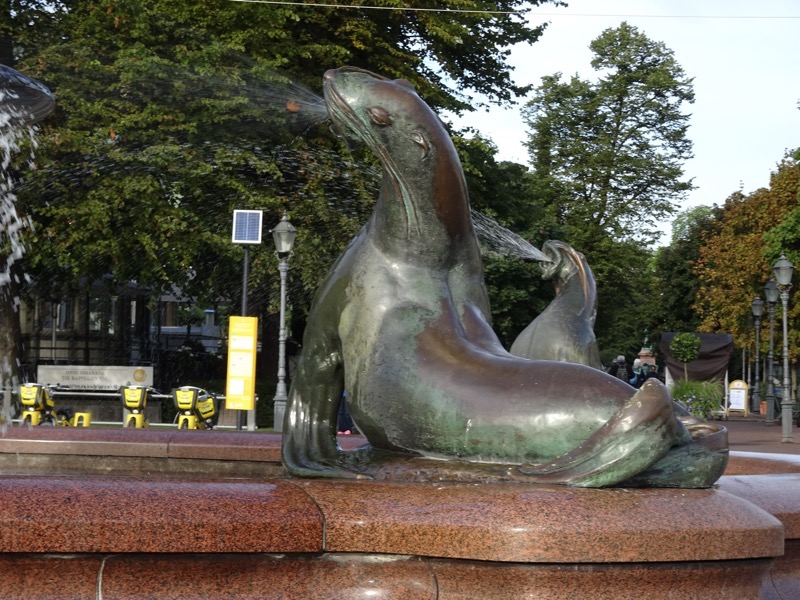 Next we wandered down along the water front to see the local markets. Here there were lots of food products being sold – fruits and berries, seafoods, reindeer and bear salami (?!), as well as a handicraft market that contained a goodly amount of souvenirs as well.
Next we wandered down along the water front to see the local markets. Here there were lots of food products being sold – fruits and berries, seafoods, reindeer and bear salami (?!), as well as a handicraft market that contained a goodly amount of souvenirs as well.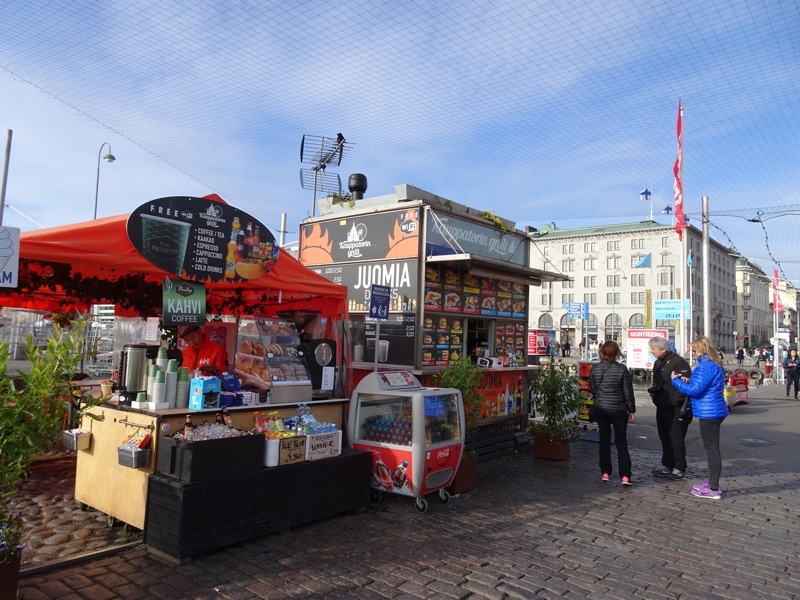 Saw this sign on a food stall in the Market Square – I have no idea what they are selling (baked goods?), and their website is dead – so its likely to remain a mystery… but I was amused because we are a bloody long way* from Eromanga!
Saw this sign on a food stall in the Market Square – I have no idea what they are selling (baked goods?), and their website is dead – so its likely to remain a mystery… but I was amused because we are a bloody long way* from Eromanga!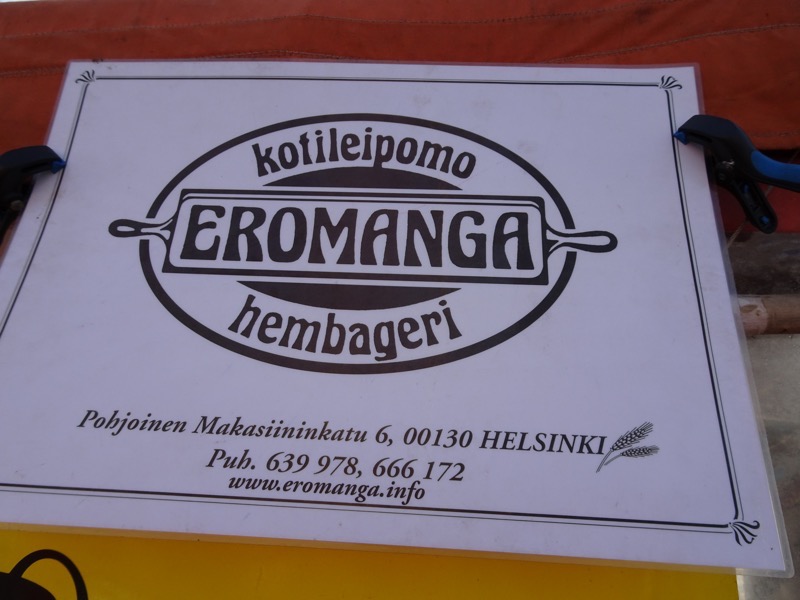 Timber products, horn items, knives and pewter goods were all very popular.
Timber products, horn items, knives and pewter goods were all very popular.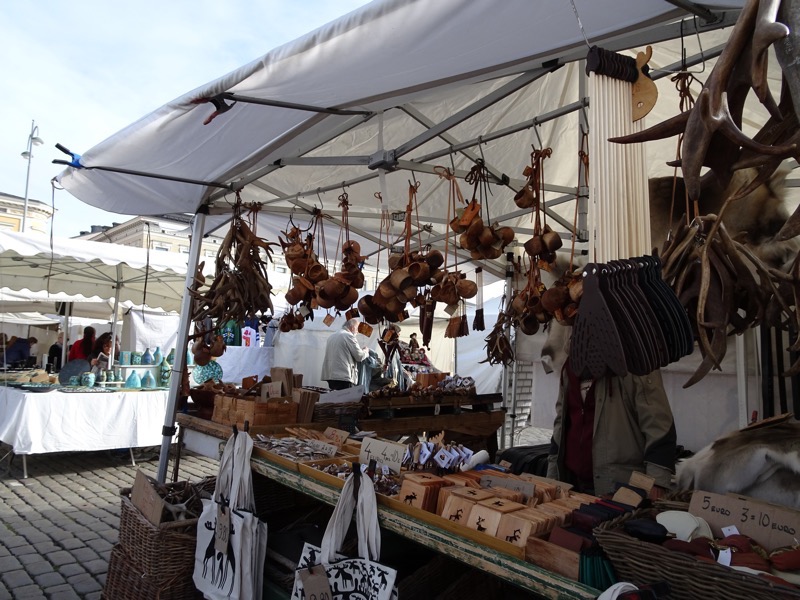
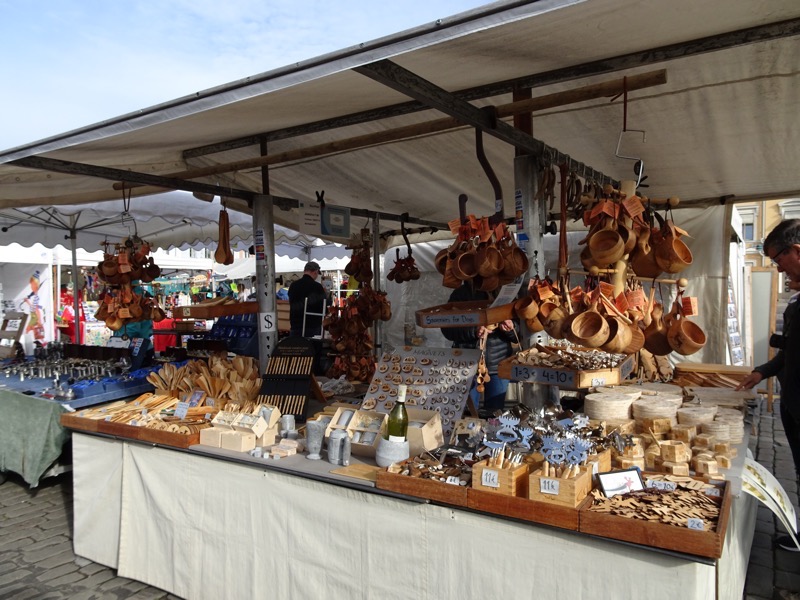 After this, we were heading out of town for a bit. And went past quite a few iconic landmarks. Helsinki is home to quite a lot of art nouveau still buildings, as the movement was very strong during the early 20th century (Haha! just wrote ’10th century’… glad I picked up that typo!) One of the most famous art nouveau buildings in the city is the Helsinki Central Railway Station, that was designed by a master of the Finnish art nouveau style, Eliel Saarinen.
After this, we were heading out of town for a bit. And went past quite a few iconic landmarks. Helsinki is home to quite a lot of art nouveau still buildings, as the movement was very strong during the early 20th century (Haha! just wrote ’10th century’… glad I picked up that typo!) One of the most famous art nouveau buildings in the city is the Helsinki Central Railway Station, that was designed by a master of the Finnish art nouveau style, Eliel Saarinen.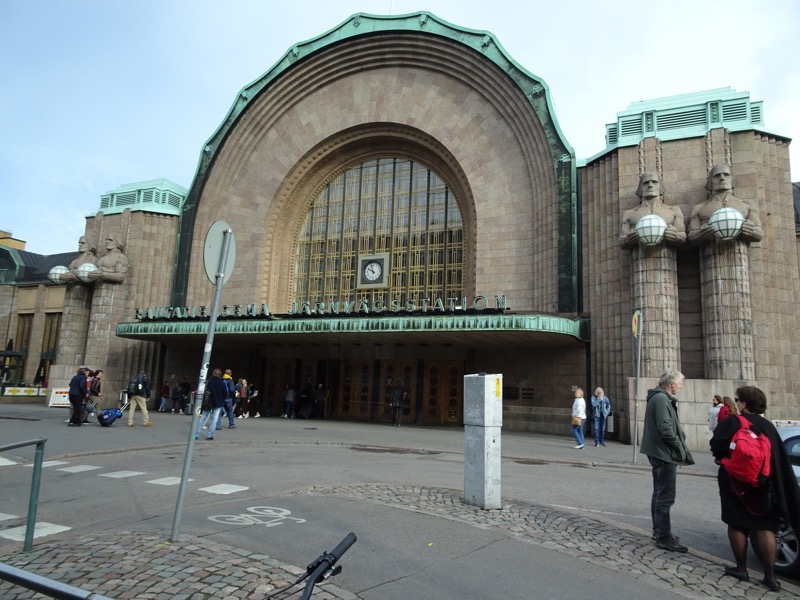
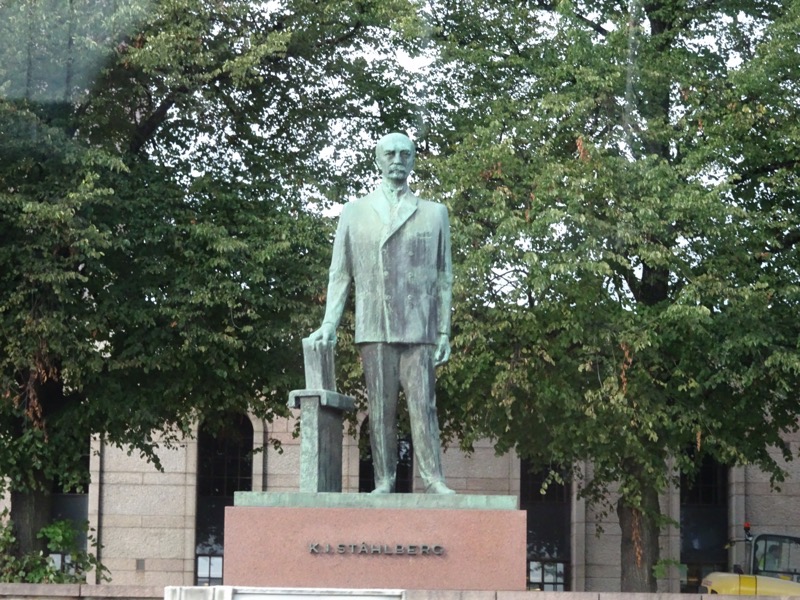
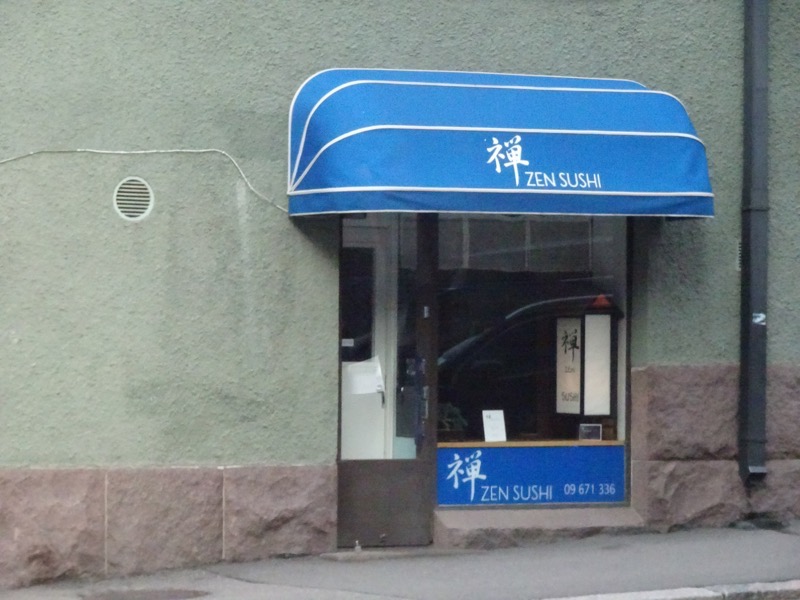 The National Museum of Finland contains the ‘history of Finland from the Stone Age to the present day, though objects and cultural history’… though I am told there is a serious lack of focus on the dark ages or medieval period, so I’m not sure how accurate that description is. The building was erected in 1910 and while it has a pretence towards looking medieval, it is actually another example of the national romanticism, art nouveau fad that the city was taken with at that time.
The National Museum of Finland contains the ‘history of Finland from the Stone Age to the present day, though objects and cultural history’… though I am told there is a serious lack of focus on the dark ages or medieval period, so I’m not sure how accurate that description is. The building was erected in 1910 and while it has a pretence towards looking medieval, it is actually another example of the national romanticism, art nouveau fad that the city was taken with at that time.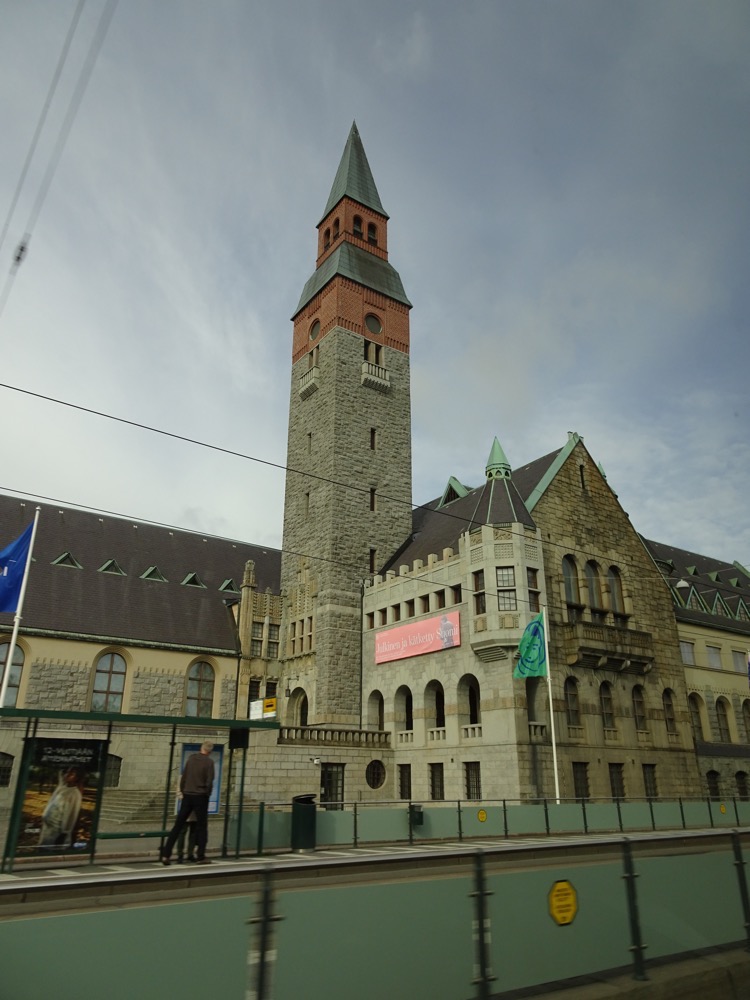
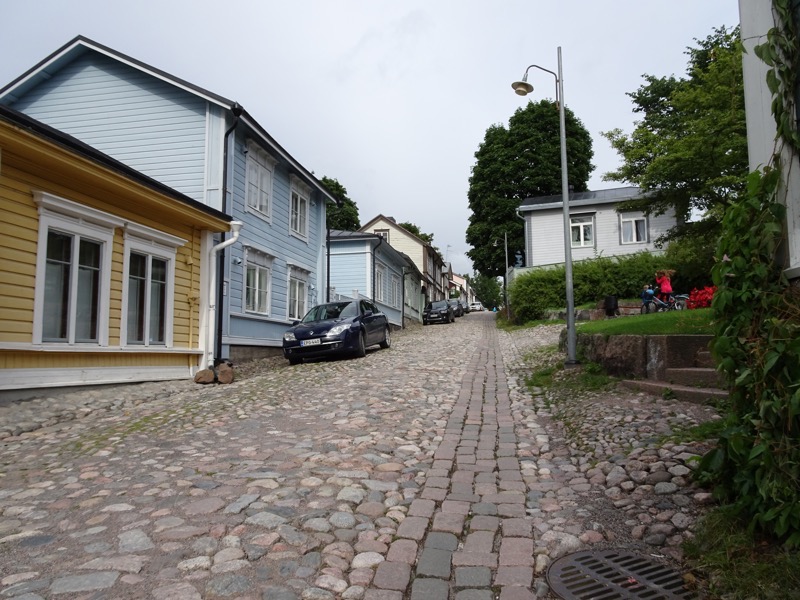 Porvoo has those delightful cobblestones streets – the ones with the huge rounded cobbles, which are far more delightful to look at than to walk on for very long! Lots of timber buildings, and winding streets.
Porvoo has those delightful cobblestones streets – the ones with the huge rounded cobbles, which are far more delightful to look at than to walk on for very long! Lots of timber buildings, and winding streets.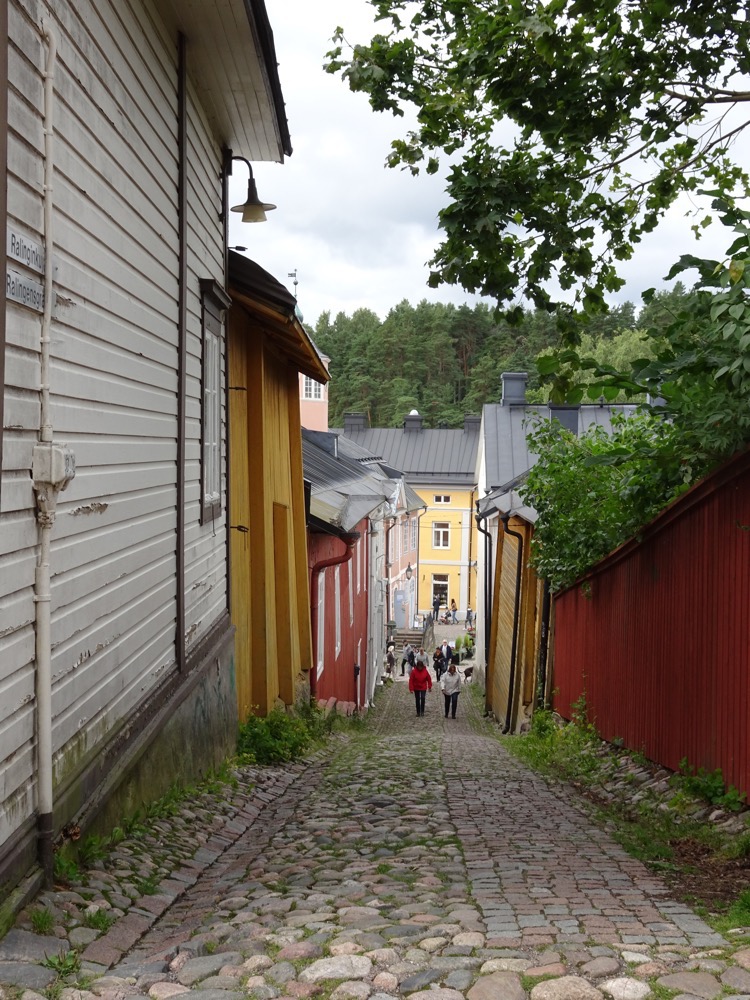
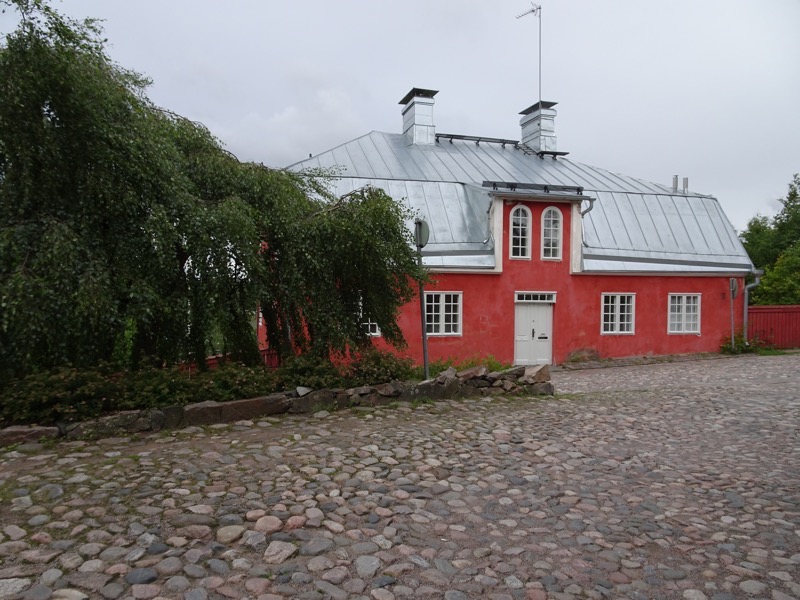 Our first little stop in Porvoo was to see the famous Porvoo Cathedral – which in Finnish is the ‘Porvoon Tuomiokirkko’, and in Swedish is the ‘Borga Domkyrka’. The street signs here are bonkers! The cathedral was mostly built in the 15th century though parts of it date from the 13th century. While it is in the middle of the Swedish speaking Borga Diocese, the cathedral holds services in both Swedish and in Finnish.
Our first little stop in Porvoo was to see the famous Porvoo Cathedral – which in Finnish is the ‘Porvoon Tuomiokirkko’, and in Swedish is the ‘Borga Domkyrka’. The street signs here are bonkers! The cathedral was mostly built in the 15th century though parts of it date from the 13th century. While it is in the middle of the Swedish speaking Borga Diocese, the cathedral holds services in both Swedish and in Finnish.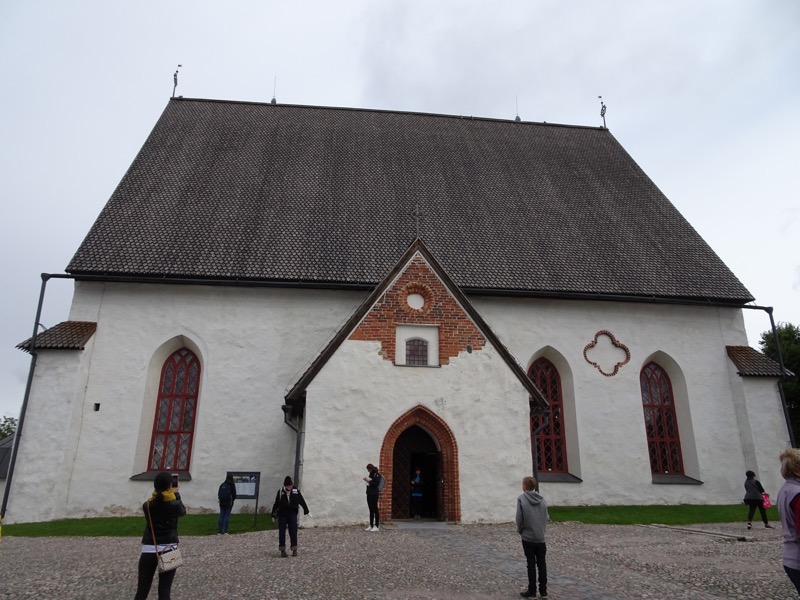
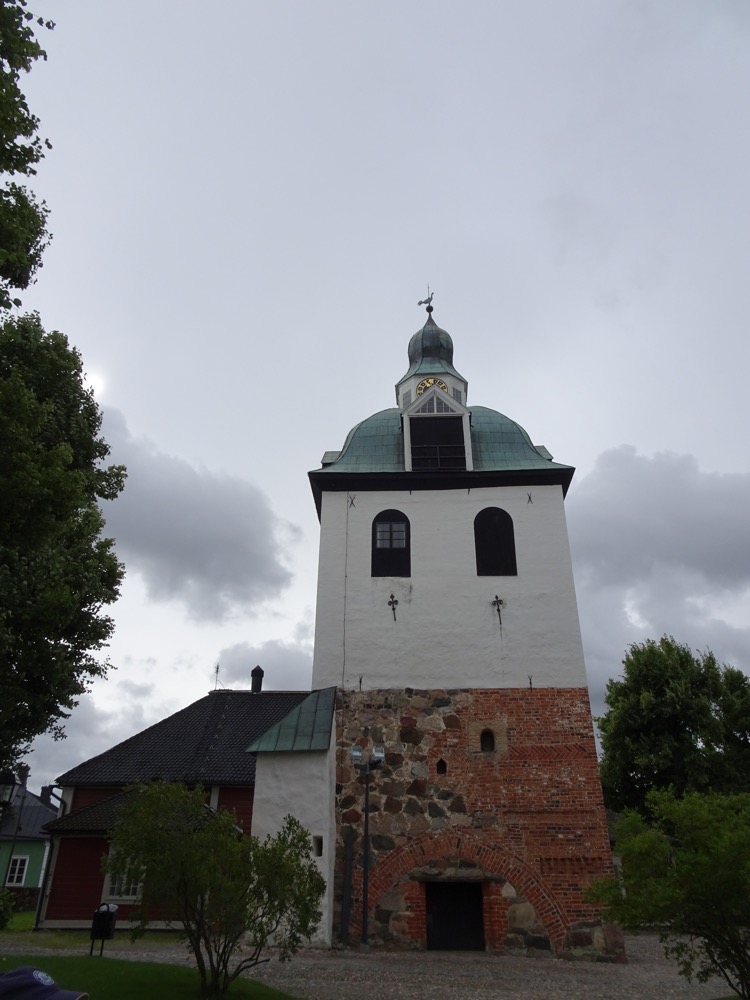 17th century casket for alms.
17th century casket for alms.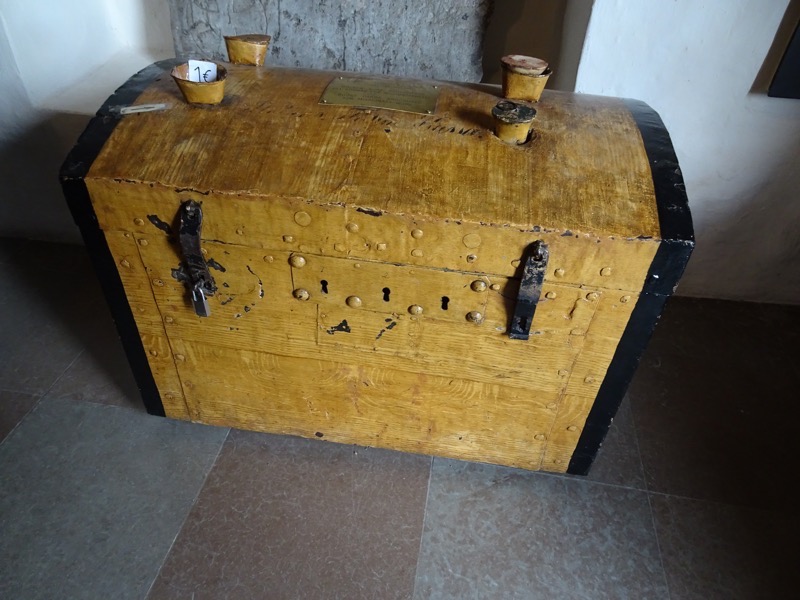
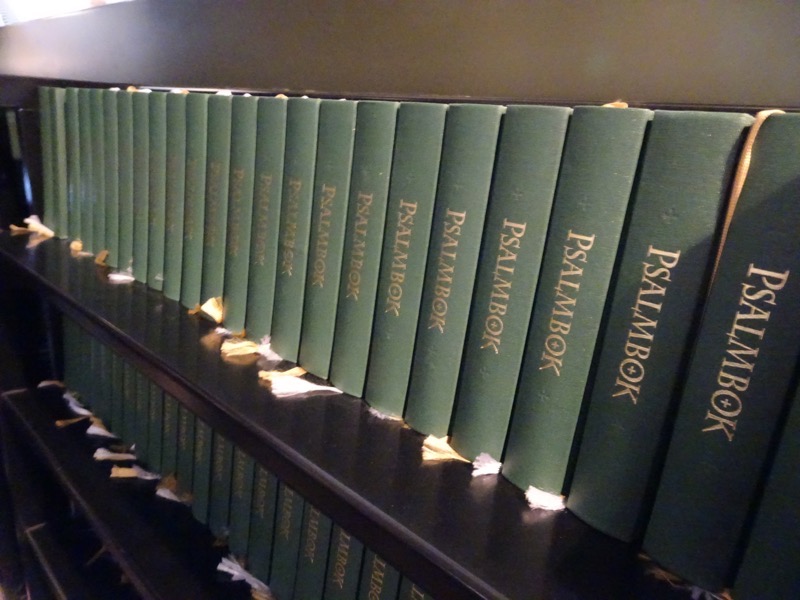 The interior is rather austere compared to the grandiose orthodox churches we have been visting in St Petersburg over the last few days.
The interior is rather austere compared to the grandiose orthodox churches we have been visting in St Petersburg over the last few days.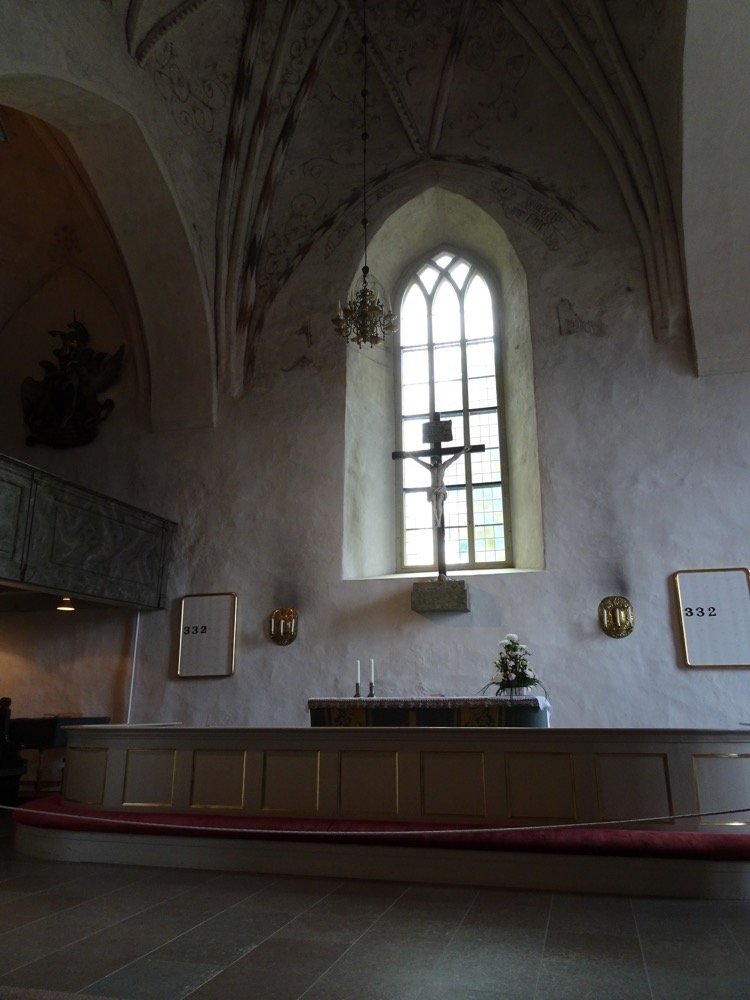 With the pulpit being the most ornamented element of the church interior.
With the pulpit being the most ornamented element of the church interior.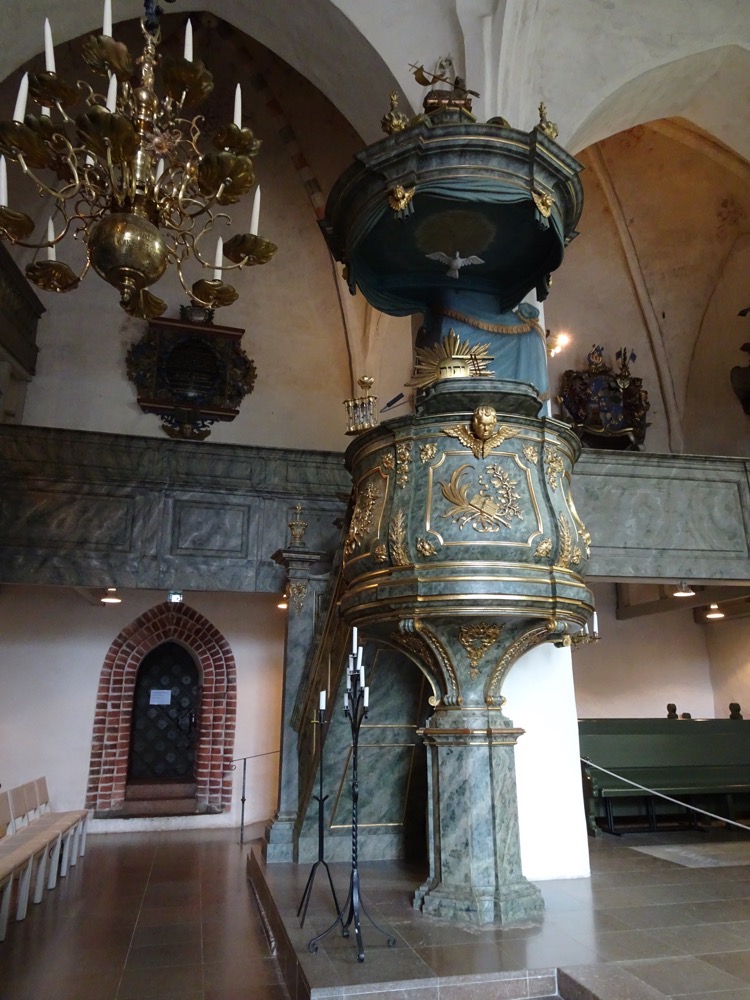
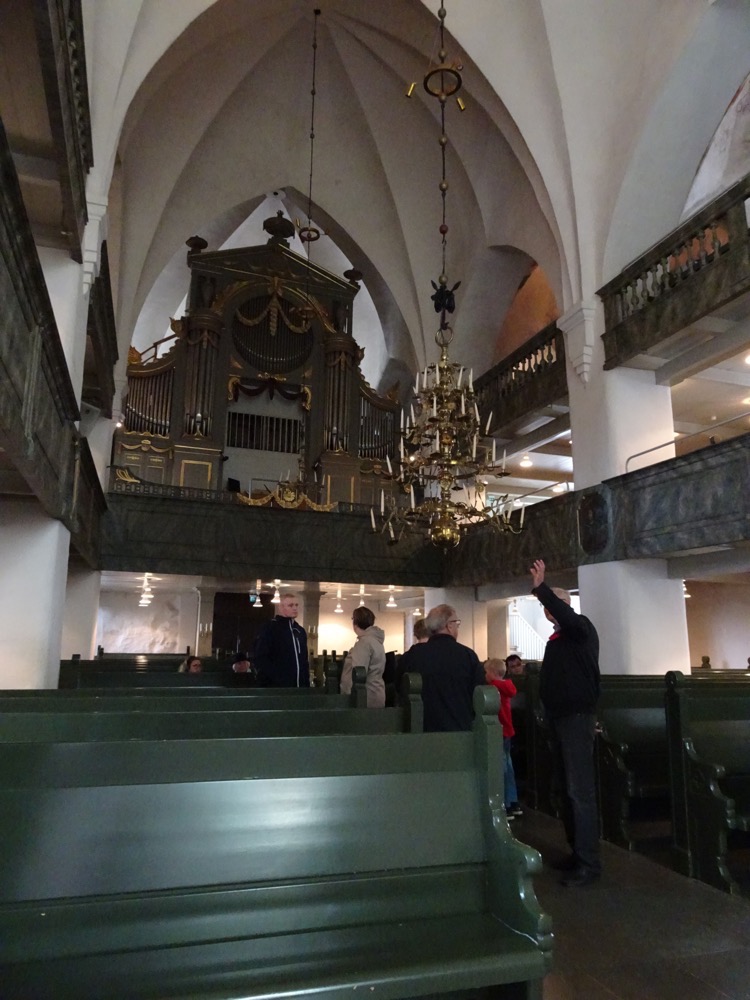 Porvoo actually is named after the river which runs through the town, the Porvoonjoki River… don’t forget to heavily roll your ‘R’s if you try to pronounce these words.
Porvoo actually is named after the river which runs through the town, the Porvoonjoki River… don’t forget to heavily roll your ‘R’s if you try to pronounce these words. 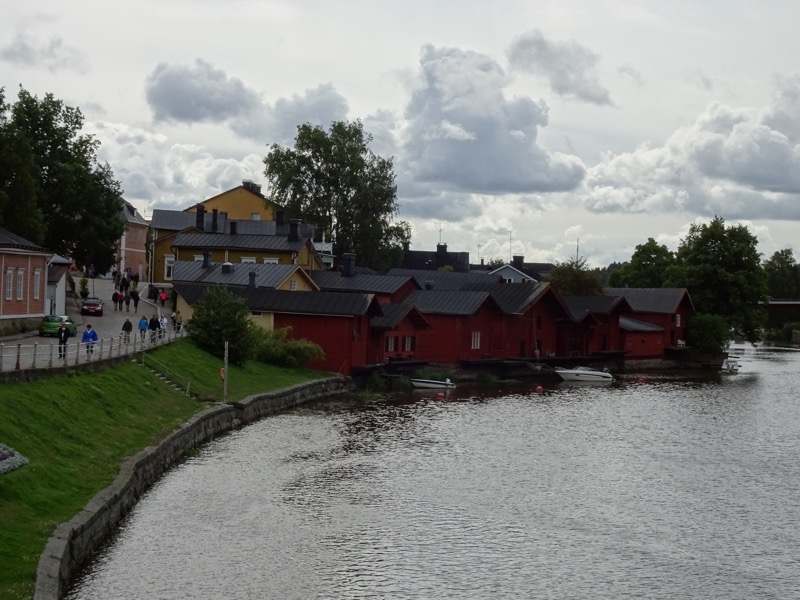
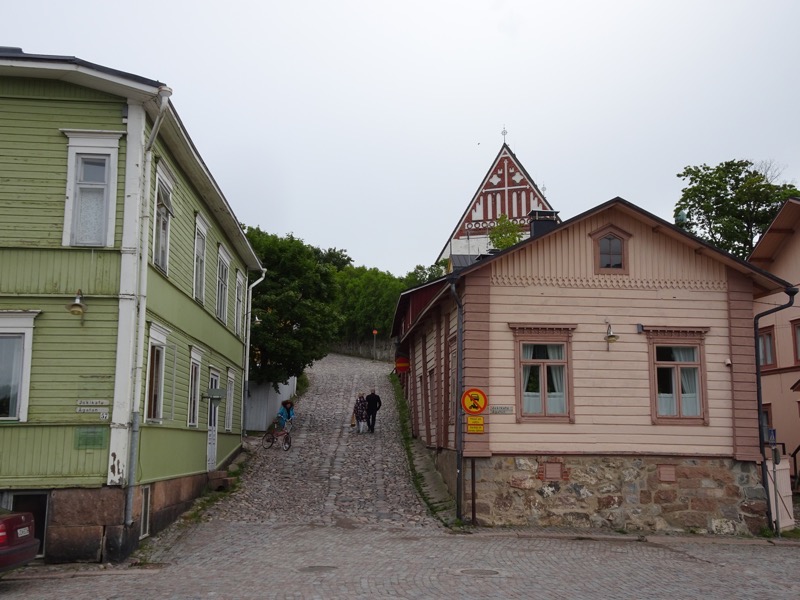
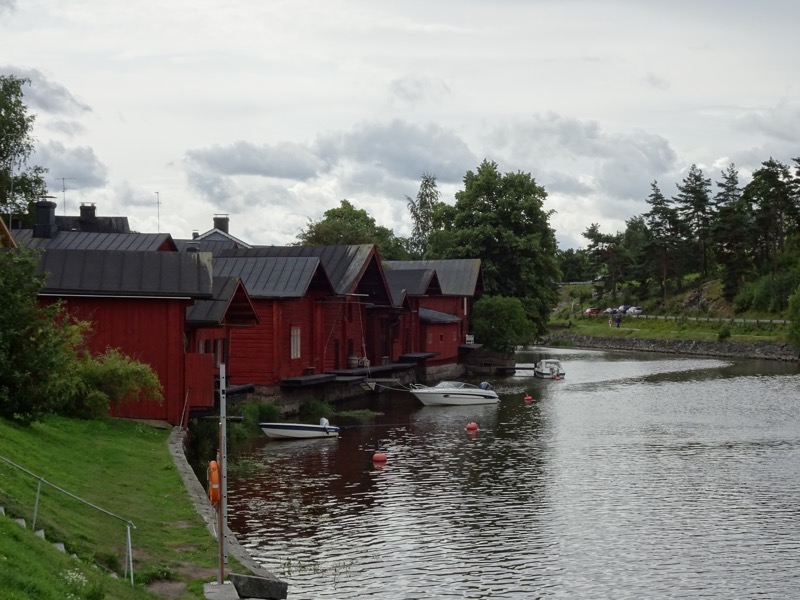 The whole town is very quaint and picturesque, and is apparently a favoured spot for the Finnish to come holiday in the summer.
The whole town is very quaint and picturesque, and is apparently a favoured spot for the Finnish to come holiday in the summer.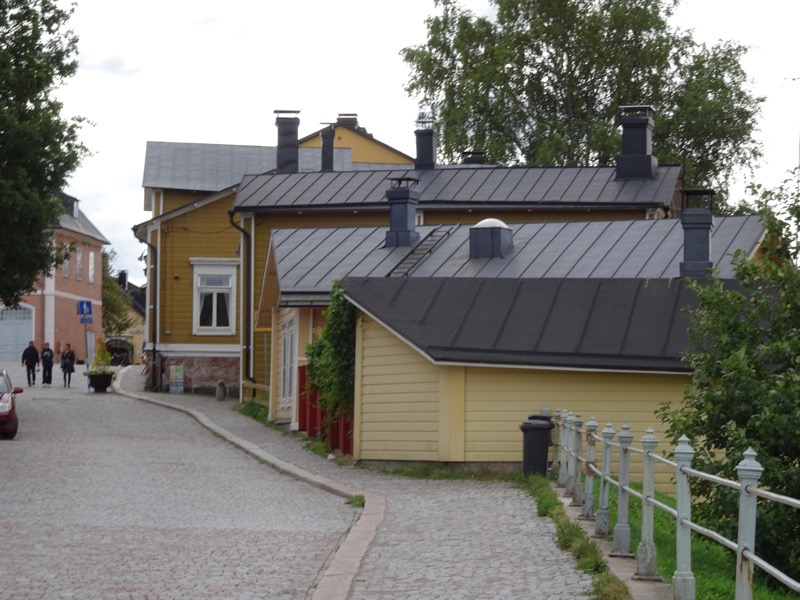
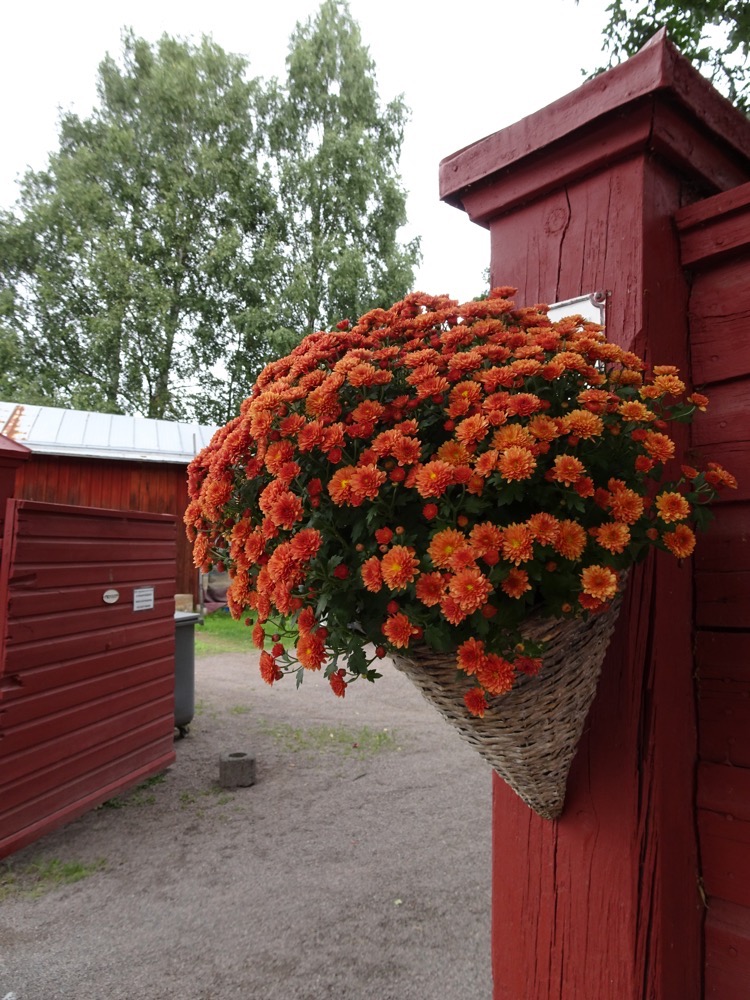 The Porvoo Town Square. The orangy-pink building in the center is the town’s Folk Museum.
The Porvoo Town Square. The orangy-pink building in the center is the town’s Folk Museum.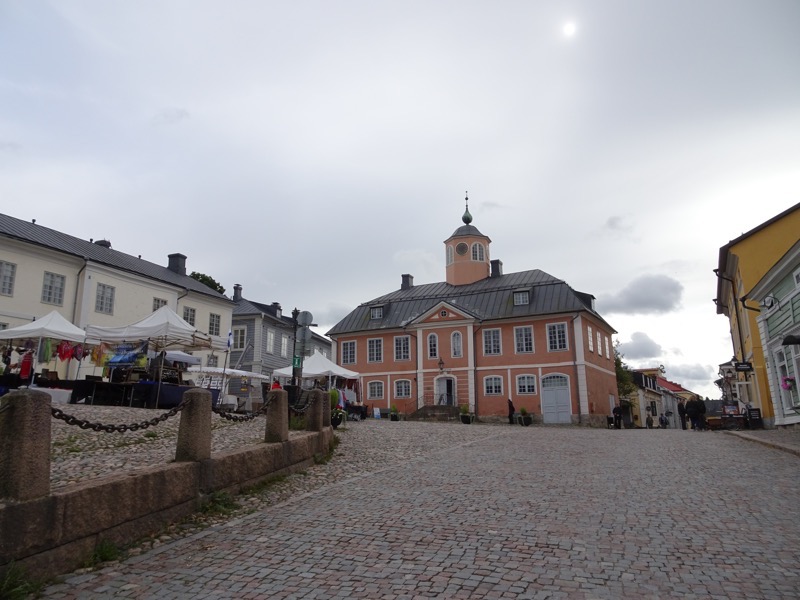 A string of shops selling mostly tourist souvenirs, antiques and handicrafts.
A string of shops selling mostly tourist souvenirs, antiques and handicrafts.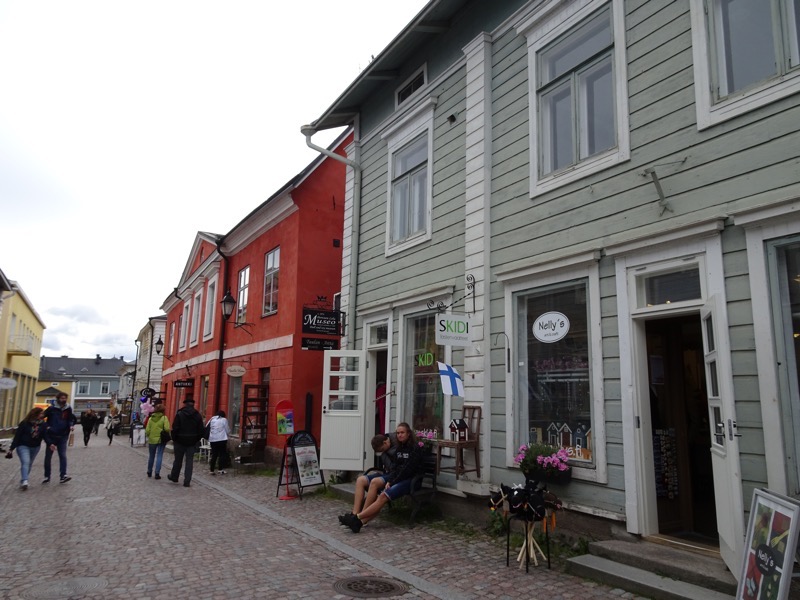 I saw this map on the wall in a confectionery shop – a cute twist on the ‘Where have I been?’ map… this map asked visitors to place a pin to show, ‘Where are you from?’.
I saw this map on the wall in a confectionery shop – a cute twist on the ‘Where have I been?’ map… this map asked visitors to place a pin to show, ‘Where are you from?’.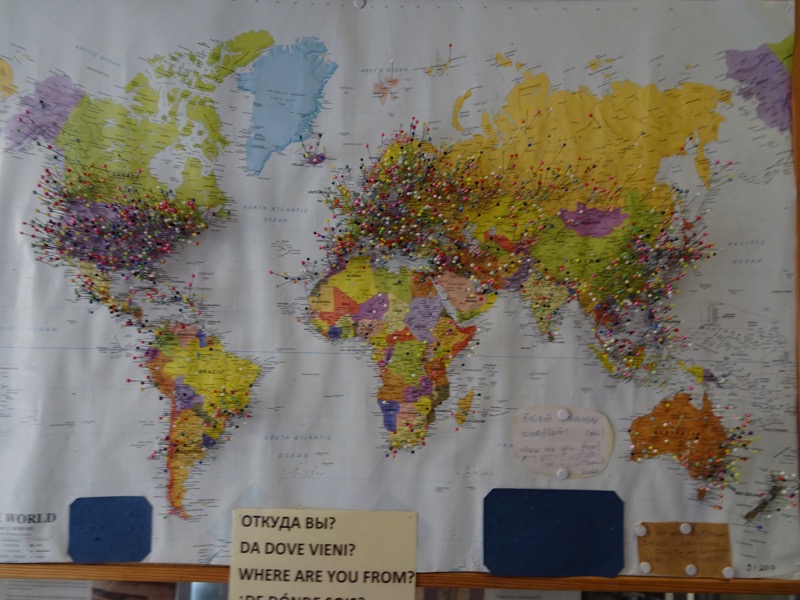 We wandered around the shops for a while and had a stroll through old Porvoo before stopping at a local restaurant for lunch – thick salmon and potato soup served with an oddly sweet, pumpernickel bread that was both very tasty, and very welcome on a cold and windy day.
We wandered around the shops for a while and had a stroll through old Porvoo before stopping at a local restaurant for lunch – thick salmon and potato soup served with an oddly sweet, pumpernickel bread that was both very tasty, and very welcome on a cold and windy day.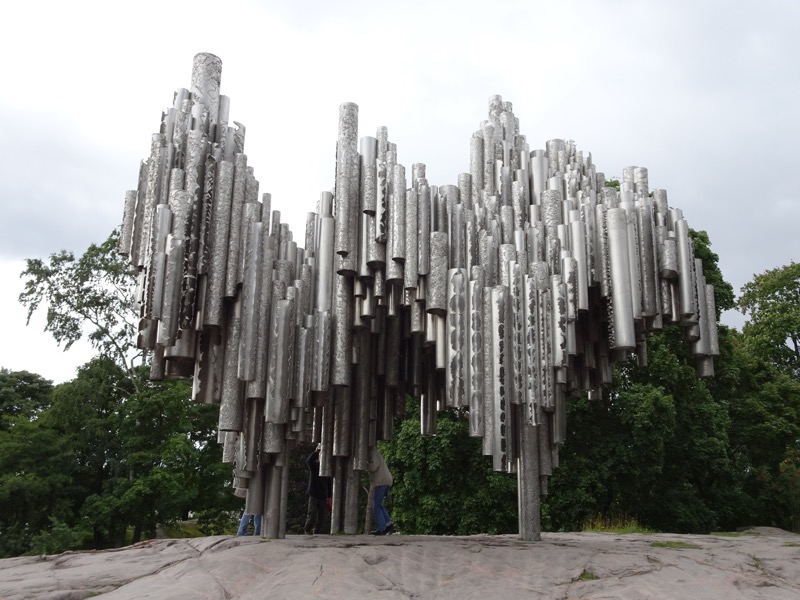
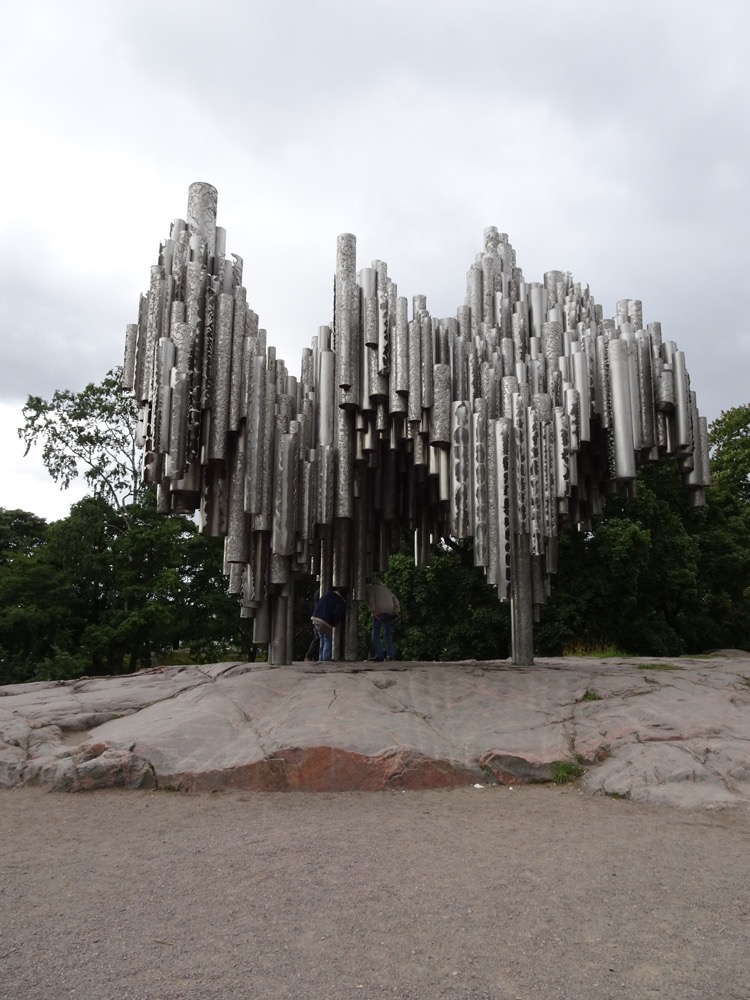 Our next stop was to the Temppeliaukio Kirkko, which is also known as the Rock Church or the Church of the Rock because it is built directly into solid bedrock. It was designed by two brothers/architects named TiSuomalaineno Sulmalainen in the 60s and was opened in 1969.
Our next stop was to the Temppeliaukio Kirkko, which is also known as the Rock Church or the Church of the Rock because it is built directly into solid bedrock. It was designed by two brothers/architects named TiSuomalaineno Sulmalainen in the 60s and was opened in 1969.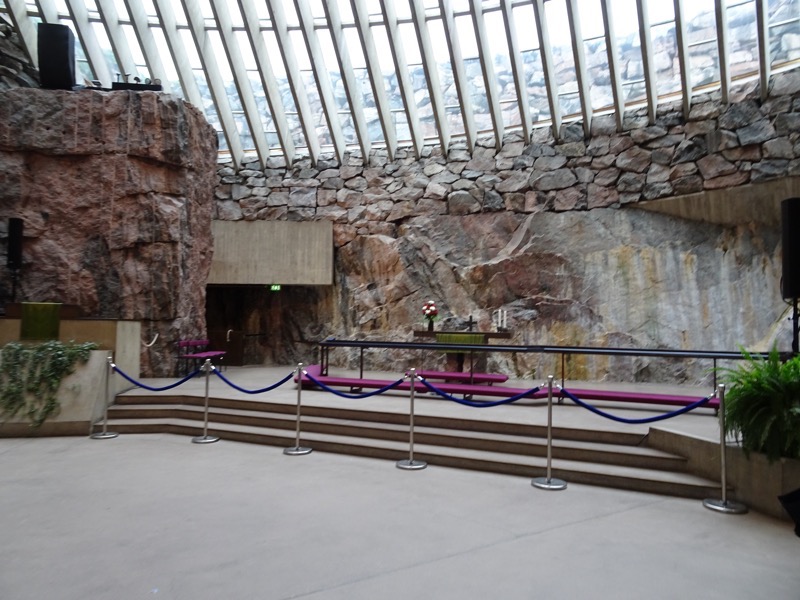
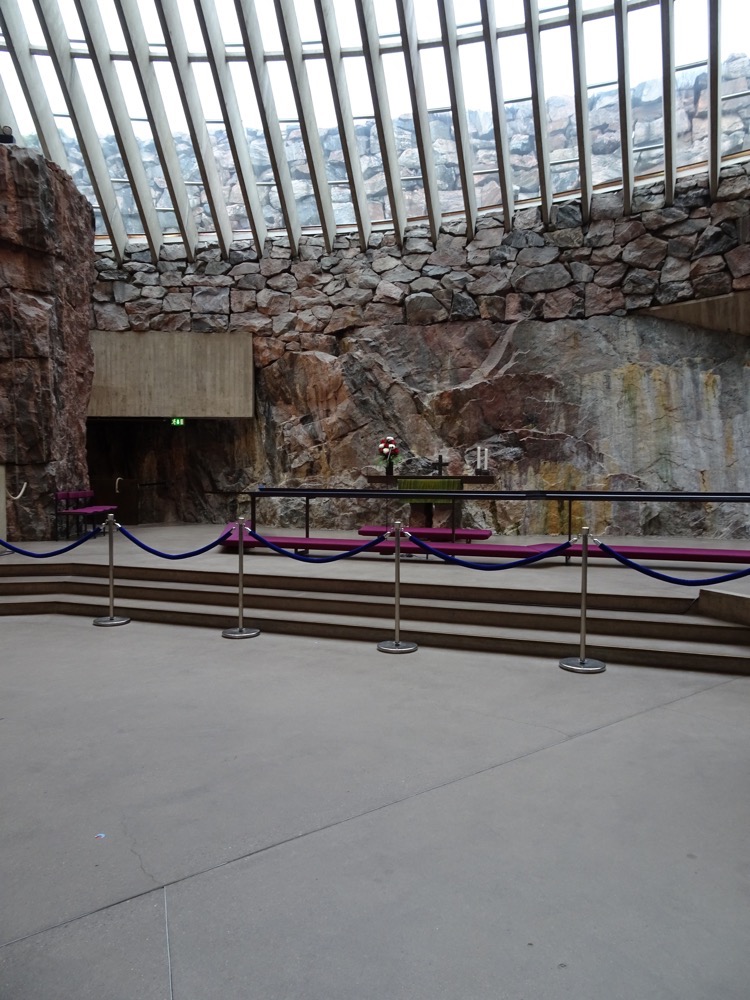
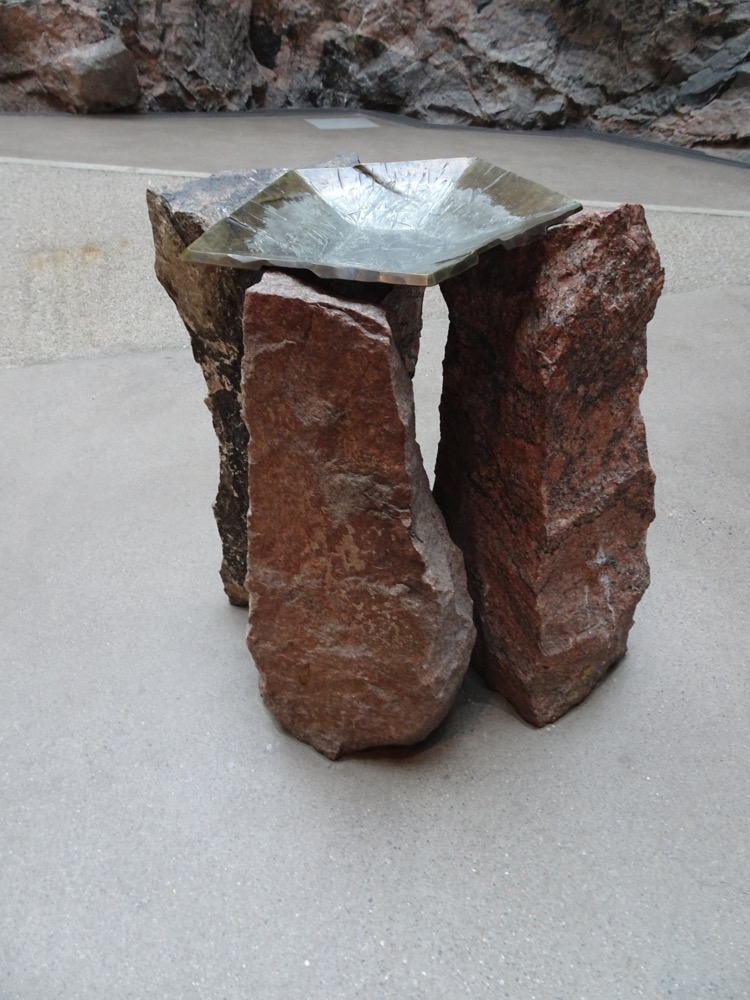
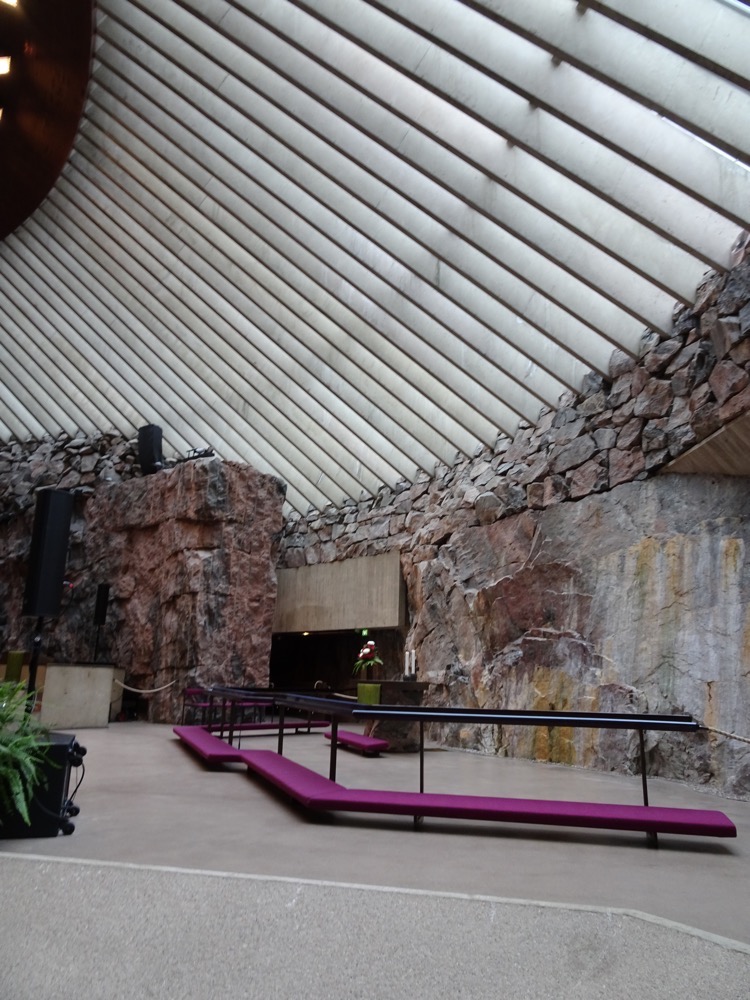 The interior was excavated and built directly into the solid rock, with skylights allowing lots of natural light into the construction. The church apparently has excellent acoustics which has led to it being frequently used as a concert venue. It’s very striking design has also led to it being a favoured wedding location – for people who both belong to the church, and those who don’t. We had only a short day in port today, so our visit to the church was quite short – perhaps we dallied too long over beers at lunch? #holidayproblems
The interior was excavated and built directly into the solid rock, with skylights allowing lots of natural light into the construction. The church apparently has excellent acoustics which has led to it being frequently used as a concert venue. It’s very striking design has also led to it being a favoured wedding location – for people who both belong to the church, and those who don’t. We had only a short day in port today, so our visit to the church was quite short – perhaps we dallied too long over beers at lunch? #holidayproblems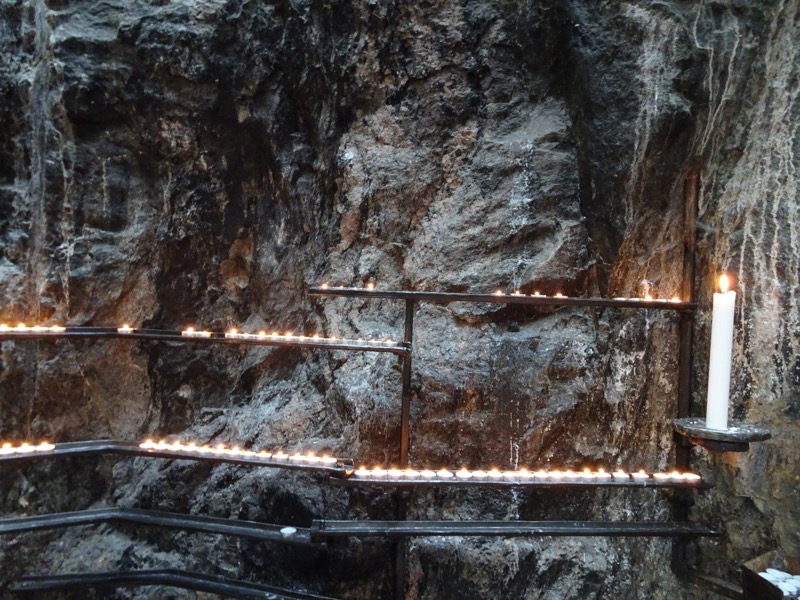
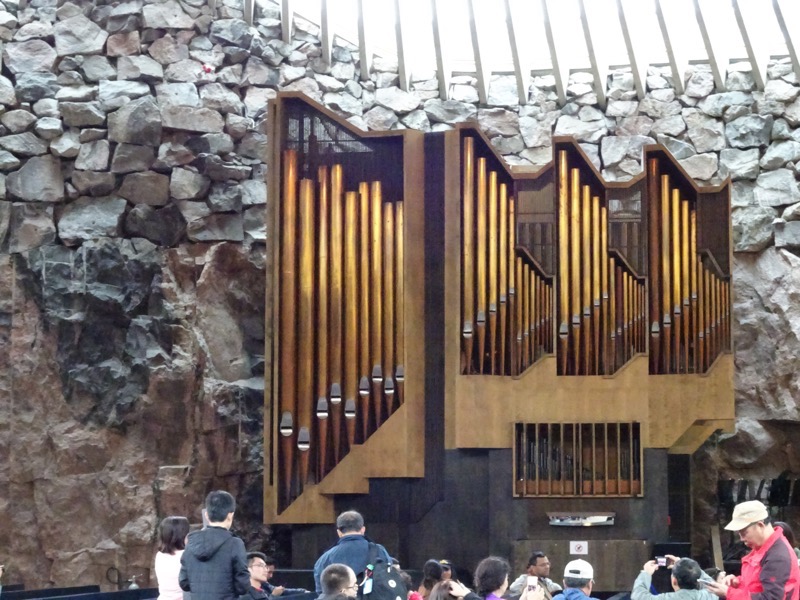
 Directly opposite is the amazing Winter Palace, also known as the Hermitage Museum, which has been on my bucket list for some time now… but more on that a bit later. 🙂
Directly opposite is the amazing Winter Palace, also known as the Hermitage Museum, which has been on my bucket list for some time now… but more on that a bit later. 🙂  Further down the canal, we finally got a better look at the unique lighthouses that we tried to see last night in the rain – they are known as the Rostral Columns and they are placed on the square directly in front of the Stock Exchange building. At 32 meters tall, the red brick towers were used as lighthouses from 1727 until the mid 19th century, at which the Spit of Vasilyevsky was a functioning port still. They are decorated with prows of conquered ships and mythical sirens.
Further down the canal, we finally got a better look at the unique lighthouses that we tried to see last night in the rain – they are known as the Rostral Columns and they are placed on the square directly in front of the Stock Exchange building. At 32 meters tall, the red brick towers were used as lighthouses from 1727 until the mid 19th century, at which the Spit of Vasilyevsky was a functioning port still. They are decorated with prows of conquered ships and mythical sirens.
 The ‘Little Mansion’ built by Catherine to entertain her private guests along side the enormous Winter Palace.
The ‘Little Mansion’ built by Catherine to entertain her private guests along side the enormous Winter Palace. St Peter and Paul’s Fortress from the canal…
St Peter and Paul’s Fortress from the canal… St Petersburg has many beautiful bridges – over 500, according to Maria, and the widest is a huge 99m wide. St Petersburg has so many canals and bridges, that many have dubbed the city, ‘The Venice of the North’… though we are reliably informed that Russians prefer to think of Venice, as ‘The St Petersburg of the South’, because SPB has far more bridges than Venice!
St Petersburg has many beautiful bridges – over 500, according to Maria, and the widest is a huge 99m wide. St Petersburg has so many canals and bridges, that many have dubbed the city, ‘The Venice of the North’… though we are reliably informed that Russians prefer to think of Venice, as ‘The St Petersburg of the South’, because SPB has far more bridges than Venice!
 Some beautiful 18th century buildings… the names and purpose of each, now completely escape me barely 12 hours later!
Some beautiful 18th century buildings… the names and purpose of each, now completely escape me barely 12 hours later! The Stock Exchange building.
The Stock Exchange building. One of the many statues lining the canal.
One of the many statues lining the canal.


 Of its extensive collections (Egyptians antiquities, classical antiquities, pre historic artworks, jewellery and decorative arts, Italian Renaissance paintings, Spanish fine art, Dutch Golden Age works, Flemish masters, Russian Art, French Neoclassical art, Impressionists, Modernists, German Romantics, and Lord knows what else!), only a very small portion is on permanent display. The collection, which contains the largest collection of paintings in the world, is comprised of over three million items, of which one-third of that is made up of coins, historical documents, and medals. The palace itself is spectacular…
Of its extensive collections (Egyptians antiquities, classical antiquities, pre historic artworks, jewellery and decorative arts, Italian Renaissance paintings, Spanish fine art, Dutch Golden Age works, Flemish masters, Russian Art, French Neoclassical art, Impressionists, Modernists, German Romantics, and Lord knows what else!), only a very small portion is on permanent display. The collection, which contains the largest collection of paintings in the world, is comprised of over three million items, of which one-third of that is made up of coins, historical documents, and medals. The palace itself is spectacular…
 The Military Gallery – contains 330 portraits of generals who took part in the Patriotic War of 1812, all were painted by English artist, George Dawe and his assistants.
The Military Gallery – contains 330 portraits of generals who took part in the Patriotic War of 1812, all were painted by English artist, George Dawe and his assistants. Regalia of a member of the Order of the Garter.
Regalia of a member of the Order of the Garter.
 German herald’s tabard, c.1520.
German herald’s tabard, c.1520. 11th century ivory mirror case.
11th century ivory mirror case. Limoge enamels.
Limoge enamels.
 Mosaic floor panel, done in the Italian style copied from the Vatican.
Mosaic floor panel, done in the Italian style copied from the Vatican.
 The private courtyard of Catherine the Great.
The private courtyard of Catherine the Great. Medieval chairs, 12th-13th century.
Medieval chairs, 12th-13th century. Another one there…
Another one there… As we gallop on through the museum, Maria points out a ‘disciple-ah of zee school-a ova fine-a artses’ who ees painting-a zee copy-a of one-a of zee paintings’, but somehow she fails to mention that the lady is painting from an original
As we gallop on through the museum, Maria points out a ‘disciple-ah of zee school-a ova fine-a artses’ who ees painting-a zee copy-a of one-a of zee paintings’, but somehow she fails to mention that the lady is painting from an original  Some 16th century textiles…
Some 16th century textiles… Games box. Ebony, with silver and ivory inlay. c1620.
Games box. Ebony, with silver and ivory inlay. c1620.
 Passageway elaborately painted in the style of the Vatican’s Passeto di Borgo… seriously, this is uncanny. I was at the Vatican in July last year, and the style is very very similar.
Passageway elaborately painted in the style of the Vatican’s Passeto di Borgo… seriously, this is uncanny. I was at the Vatican in July last year, and the style is very very similar. Skipped through an entire room of Majolica ware (can email more pics to anyone who is interested).
Skipped through an entire room of Majolica ware (can email more pics to anyone who is interested).

 Michelangelo’s, ‘Crouching Boy’
Michelangelo’s, ‘Crouching Boy’
 Malachite urn in the Spanish masters room.
Malachite urn in the Spanish masters room.


 I simply include all the photographs of individual artefacts, so I have focused here on including the spaces in the Palace. I have already determined that I will have to come back to St Petersburg one day and do the Hermitage at my leisure. They say that if you stood in front of every piece on public display at the Hermitage for barely one minute, it would take you three years to see everything – and I well believe it. I imagine a week in St Petersburg is probably going to end up on the schedule at some point in the next few years.
I simply include all the photographs of individual artefacts, so I have focused here on including the spaces in the Palace. I have already determined that I will have to come back to St Petersburg one day and do the Hermitage at my leisure. They say that if you stood in front of every piece on public display at the Hermitage for barely one minute, it would take you three years to see everything – and I well believe it. I imagine a week in St Petersburg is probably going to end up on the schedule at some point in the next few years.

 Oh and look, here is one of the twenty-four Rembrandts in the collection! If but one of them were appropriated? relocated? to an Australian museum, it would probably cause an entire wing re-named, the “Northern Renaissance Gallery”… and here? Here they have twenty-four. Greedy, if you ask me. 😉 They could share them around with the rest of the world, don’t you think?
Oh and look, here is one of the twenty-four Rembrandts in the collection! If but one of them were appropriated? relocated? to an Australian museum, it would probably cause an entire wing re-named, the “Northern Renaissance Gallery”… and here? Here they have twenty-four. Greedy, if you ask me. 😉 They could share them around with the rest of the world, don’t you think? Stunning sweeping central staircases are a feature of all the palaces it would seem.
Stunning sweeping central staircases are a feature of all the palaces it would seem.



 On temporary display – these ‘flowers’ are entirely ceramic.
On temporary display – these ‘flowers’ are entirely ceramic.




 Construction began on this church in 1883, during the reign of Tsar Alexander III, it was intended to be a memorial to his father, Alexander II – as this was the exact site where Emperor Alexander II was killed by political nihilists in March 1881. Maria claimed that the construction cost was somewhere in the realm of 4.5 million rubles, funded by the Imperial family and many wealthy donors. The Cathedral was not completed until 1907 during the reign of Nicholas II.
Construction began on this church in 1883, during the reign of Tsar Alexander III, it was intended to be a memorial to his father, Alexander II – as this was the exact site where Emperor Alexander II was killed by political nihilists in March 1881. Maria claimed that the construction cost was somewhere in the realm of 4.5 million rubles, funded by the Imperial family and many wealthy donors. The Cathedral was not completed until 1907 during the reign of Nicholas II.

 The interior is inimitable… it contains over 7500 square meters of detailed mosaics, which according to the restorers, is more than any other building in the world. The walls and ceilings are completely covered in mosaics depicting biblical scenes and figures, surrounded by decorated borders and motifs.
The interior is inimitable… it contains over 7500 square meters of detailed mosaics, which according to the restorers, is more than any other building in the world. The walls and ceilings are completely covered in mosaics depicting biblical scenes and figures, surrounded by decorated borders and motifs.

 The central altar contains the Holy Gates, which were lost in the 1920s during the Soviet era, but were recreated and replaced in 2012, on the 129th anniversary of Alexander II’s assassination.
The central altar contains the Holy Gates, which were lost in the 1920s during the Soviet era, but were recreated and replaced in 2012, on the 129th anniversary of Alexander II’s assassination. 


 Gate detail:
Gate detail:
 The main dome must easily be 100 feet high. Easily.
The main dome must easily be 100 feet high. Easily.

 After the Russian Revolution (which saw the end of the Tsarist autocracy and the rise of the Soviet Era), the church was ransacked, looted and badly damaged – Maria described the Bolsheviks as ‘people who destroyed everything, and they build nothing’. The Soviet government actually closed the then very damaged church in 1932. During WWII, when many people were starving due to the Seige of Leningrad at the hands of Nazi Germany, the church was used as a morgue for people who died in combat, and from starvation or sickness; bit gruesome. The Church suffered, even more, damage during this period. After the war, the buildling was so little thought of, that it was used as a warehouse for vegetables, leading to the name, The Saviour of Potatoes! I just can’t imagine what led people to use a building like this to store vegetables! I guess when you are starving though, you don’t have much use for gold mosaics.
After the Russian Revolution (which saw the end of the Tsarist autocracy and the rise of the Soviet Era), the church was ransacked, looted and badly damaged – Maria described the Bolsheviks as ‘people who destroyed everything, and they build nothing’. The Soviet government actually closed the then very damaged church in 1932. During WWII, when many people were starving due to the Seige of Leningrad at the hands of Nazi Germany, the church was used as a morgue for people who died in combat, and from starvation or sickness; bit gruesome. The Church suffered, even more, damage during this period. After the war, the buildling was so little thought of, that it was used as a warehouse for vegetables, leading to the name, The Saviour of Potatoes! I just can’t imagine what led people to use a building like this to store vegetables! I guess when you are starving though, you don’t have much use for gold mosaics. 

 Just outside the Church of the Spilled Blood is tourist central… we were told to watch for pick pockets, but I think they are all working stalls here – souvenir prices were ridiculous!
Just outside the Church of the Spilled Blood is tourist central… we were told to watch for pick pockets, but I think they are all working stalls here – souvenir prices were ridiculous!

 The church was built on instructions by Tsar Alexander I to replace an early chruch that had been built by Vincenzo Brenna, and it is the fourth church to be bulit on the same site. A specially formed committee examed designs until the French-born architect, August de Montferrand (1786-1858) was appointed to build the current cathedral. Montferrand, who had studied under Napoleon’s pet desinger Charles Percier, had create a design that was criticised by some members of the commision for the allegedly boring rhythm of it’s four identical octastyle porticos. Some thought that even though the design had enormous proportions, it would look short and squat and not particularly impressive. There were also apparently concerns about building a 100m tall cathedral on old and insecure foundations could be problematic. However, the emperor favoured the design and things worked out in Montferrand’s favour after all.
The church was built on instructions by Tsar Alexander I to replace an early chruch that had been built by Vincenzo Brenna, and it is the fourth church to be bulit on the same site. A specially formed committee examed designs until the French-born architect, August de Montferrand (1786-1858) was appointed to build the current cathedral. Montferrand, who had studied under Napoleon’s pet desinger Charles Percier, had create a design that was criticised by some members of the commision for the allegedly boring rhythm of it’s four identical octastyle porticos. Some thought that even though the design had enormous proportions, it would look short and squat and not particularly impressive. There were also apparently concerns about building a 100m tall cathedral on old and insecure foundations could be problematic. However, the emperor favoured the design and things worked out in Montferrand’s favour after all.








 By Maria’s account – the church continues to have a somewhat dubious place in social history. The state has funded any restoration, management and administration of the Church in recent years. It has been a pet project of Putin’s to maintain and upkeep this particular cathedral, however recently, it has been handed over to Church control, which means the income from St Isaac’s Cathedral, and the Church of the Spilled Blood will no longer be open to public scrutiny. Instead the Church will be able to do as they please with tourist income received from these two iconic sites… the people are not happy about this change of plan, and there is some speculation that Putin’s cronies stand to benefit from these new financial arrangements. So much so, that various sectors of the public and the tourism industry in particular are considering striking and protesting actions to attempt to return the control of these public treasures to public administration.
By Maria’s account – the church continues to have a somewhat dubious place in social history. The state has funded any restoration, management and administration of the Church in recent years. It has been a pet project of Putin’s to maintain and upkeep this particular cathedral, however recently, it has been handed over to Church control, which means the income from St Isaac’s Cathedral, and the Church of the Spilled Blood will no longer be open to public scrutiny. Instead the Church will be able to do as they please with tourist income received from these two iconic sites… the people are not happy about this change of plan, and there is some speculation that Putin’s cronies stand to benefit from these new financial arrangements. So much so, that various sectors of the public and the tourism industry in particular are considering striking and protesting actions to attempt to return the control of these public treasures to public administration.




 Incredible mosaic work, and so much carved and gilded timber, it was really quite breathtaking. The only church I have seen more impressive than this one was St Peter’s in Rome… and that I think was largely due to the sheer scale of it.
Incredible mosaic work, and so much carved and gilded timber, it was really quite breathtaking. The only church I have seen more impressive than this one was St Peter’s in Rome… and that I think was largely due to the sheer scale of it.
 Detail of the mosaic work…
Detail of the mosaic work… 








 The palace was as lavishly decorated and appointed as the royal palaces of the time, the Yusupovs were extremely wealthy – though the rooms and spaces are not as large as the royal residences.
The palace was as lavishly decorated and appointed as the royal palaces of the time, the Yusupovs were extremely wealthy – though the rooms and spaces are not as large as the royal residences.


















 Inside the Yusupov Palace is a private theatre that was built to entertain family and friends for private ballet and opera performances. This was the start of the current home theatre trend, I am sure of it!
Inside the Yusupov Palace is a private theatre that was built to entertain family and friends for private ballet and opera performances. This was the start of the current home theatre trend, I am sure of it!

 Though today, most people don’t do them in quite so much style. 😉
Though today, most people don’t do them in quite so much style. 😉 







 Felix Yusupov must not have been a particularly bright fellow, as he immediately started telling everyone that he had killed Rasputin and saved the aristocracy from his influence over the Romanovs, and was promptly arrested. (Gotta admit, I don’t love the wax dummies.)
Felix Yusupov must not have been a particularly bright fellow, as he immediately started telling everyone that he had killed Rasputin and saved the aristocracy from his influence over the Romanovs, and was promptly arrested. (Gotta admit, I don’t love the wax dummies.)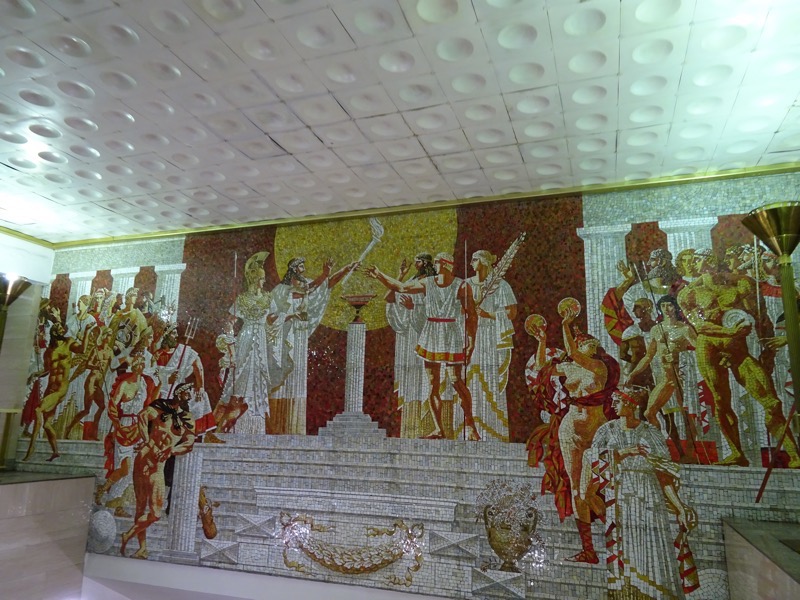
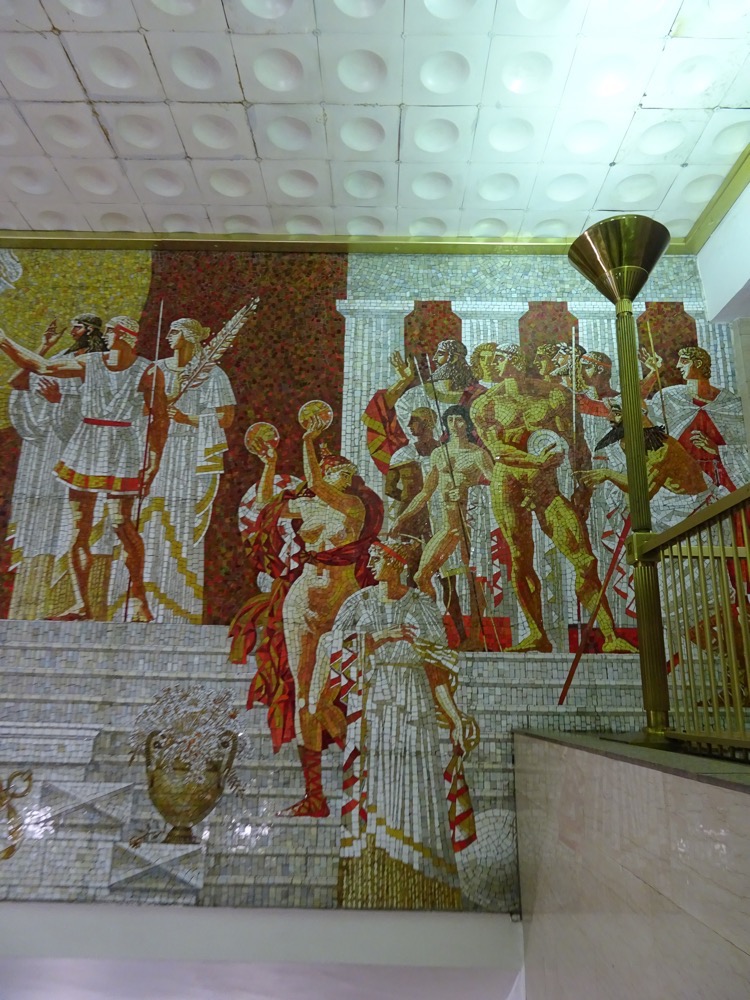
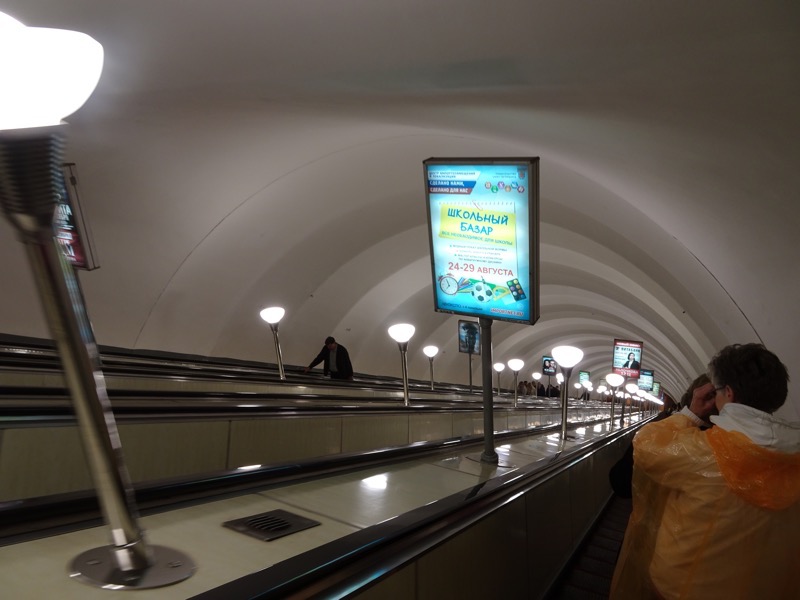
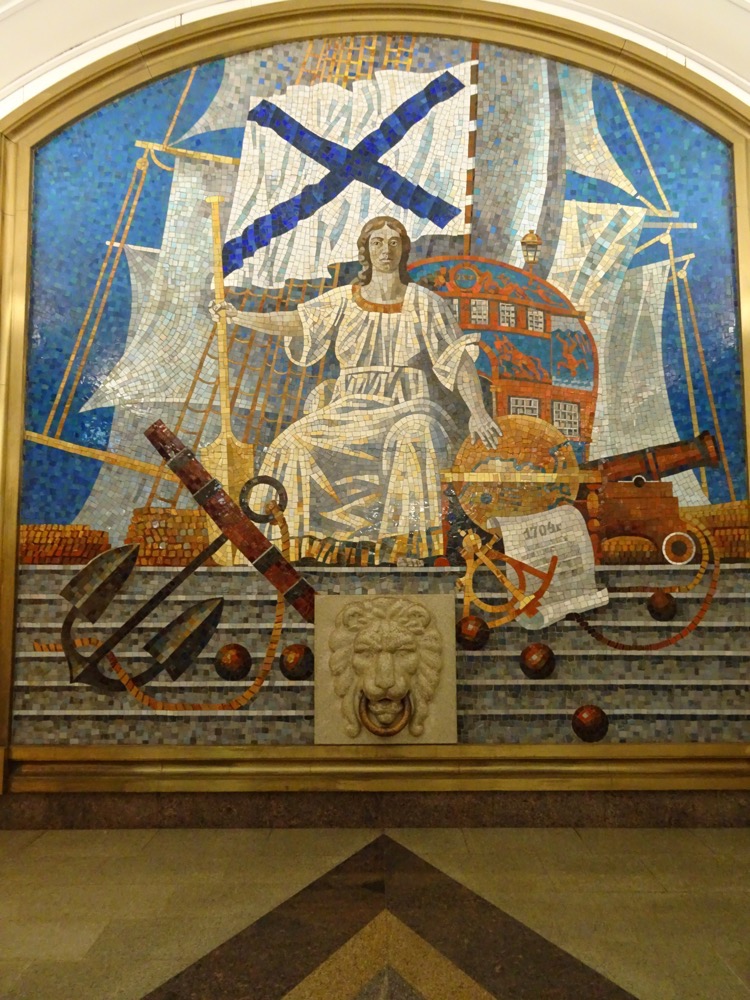
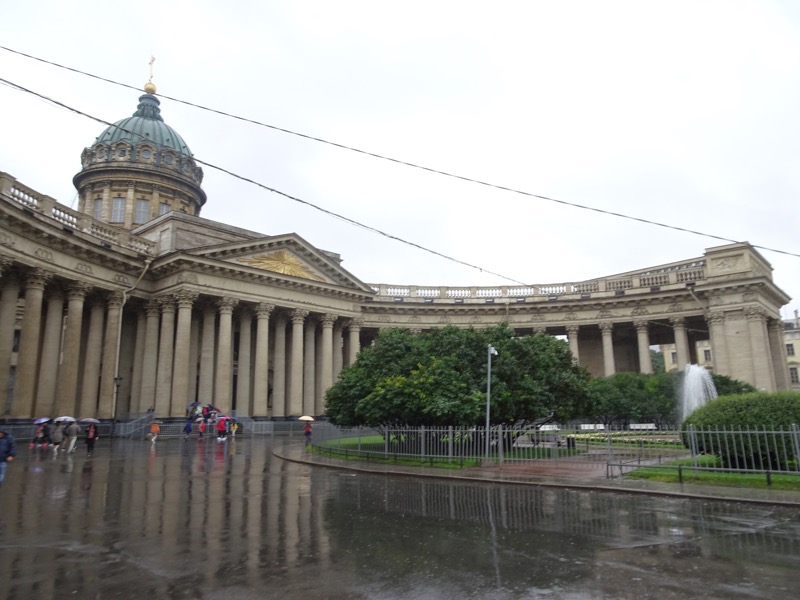 Beautiful inside, the church is still in everyday use, there was a service happening, so only a few photos from the back of the church.
Beautiful inside, the church is still in everyday use, there was a service happening, so only a few photos from the back of the church.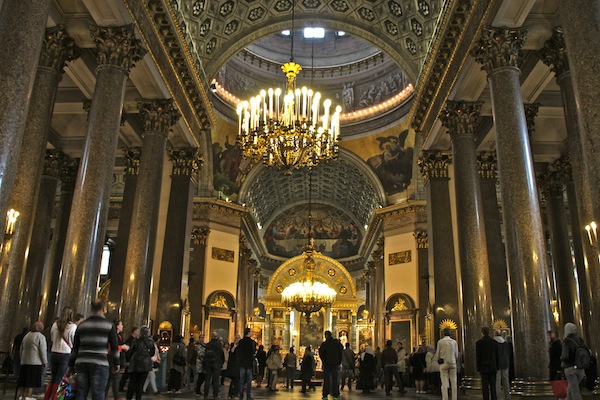
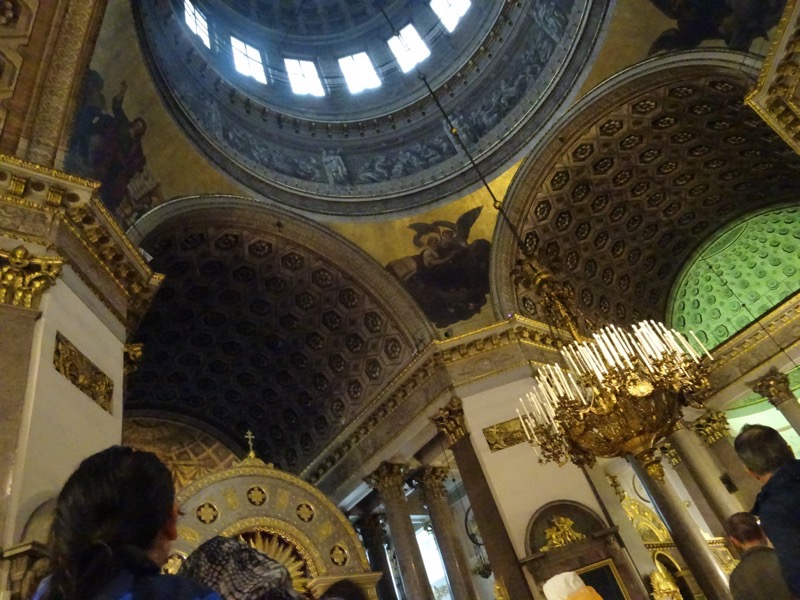
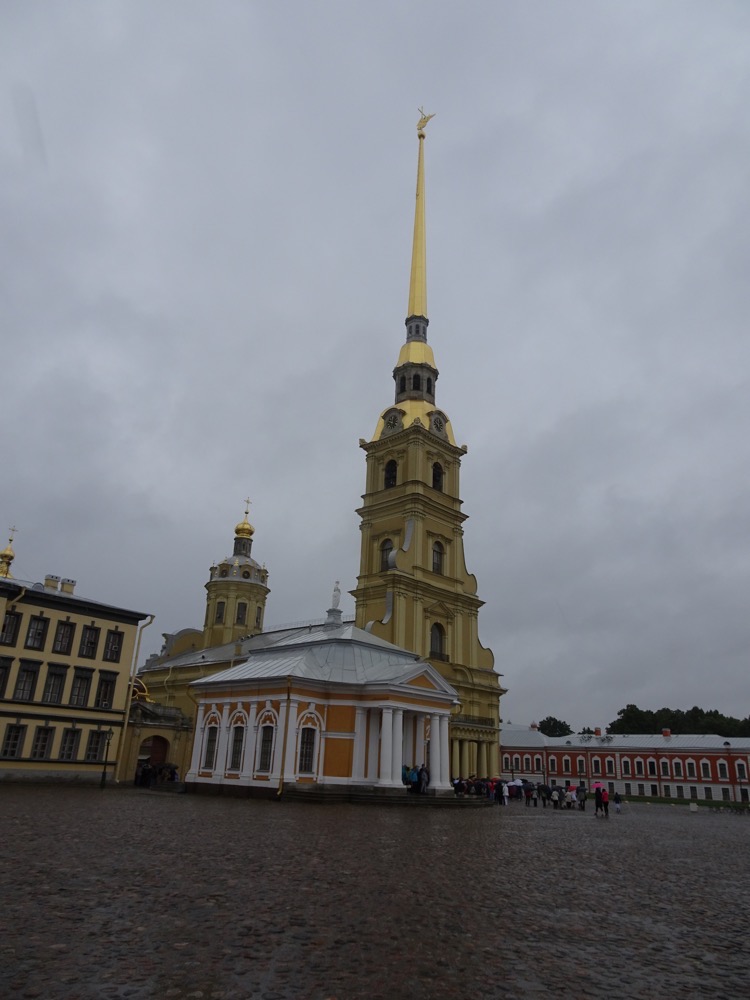 The square is normally flooded with tourists, but the rain seems to have kept many indoors this morning – there was still a ridiculous crush to get inside as the tour guides were vying to get their groups in our of the rains… seriously I got claustrophobic being pushed around in the crowd and was concerned I was going to be hurt. People need to chill out.
The square is normally flooded with tourists, but the rain seems to have kept many indoors this morning – there was still a ridiculous crush to get inside as the tour guides were vying to get their groups in our of the rains… seriously I got claustrophobic being pushed around in the crowd and was concerned I was going to be hurt. People need to chill out.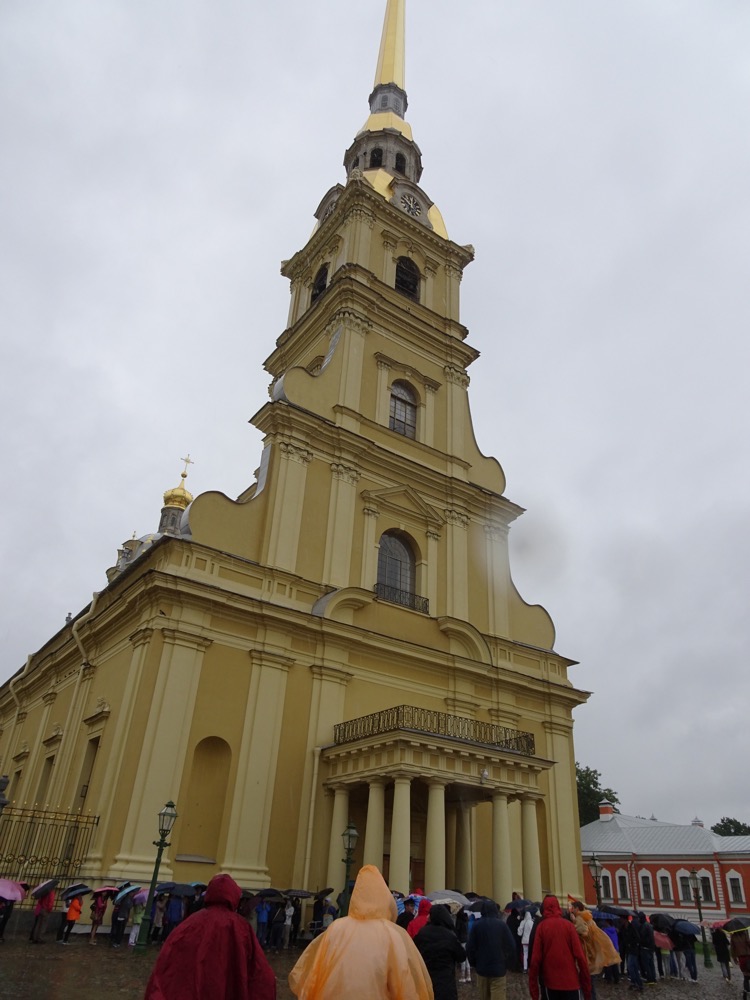 Inside is an extravagant gold leaf interior, in what would become a familiar pastel green colour that was favoured by Catherine II.
Inside is an extravagant gold leaf interior, in what would become a familiar pastel green colour that was favoured by Catherine II. 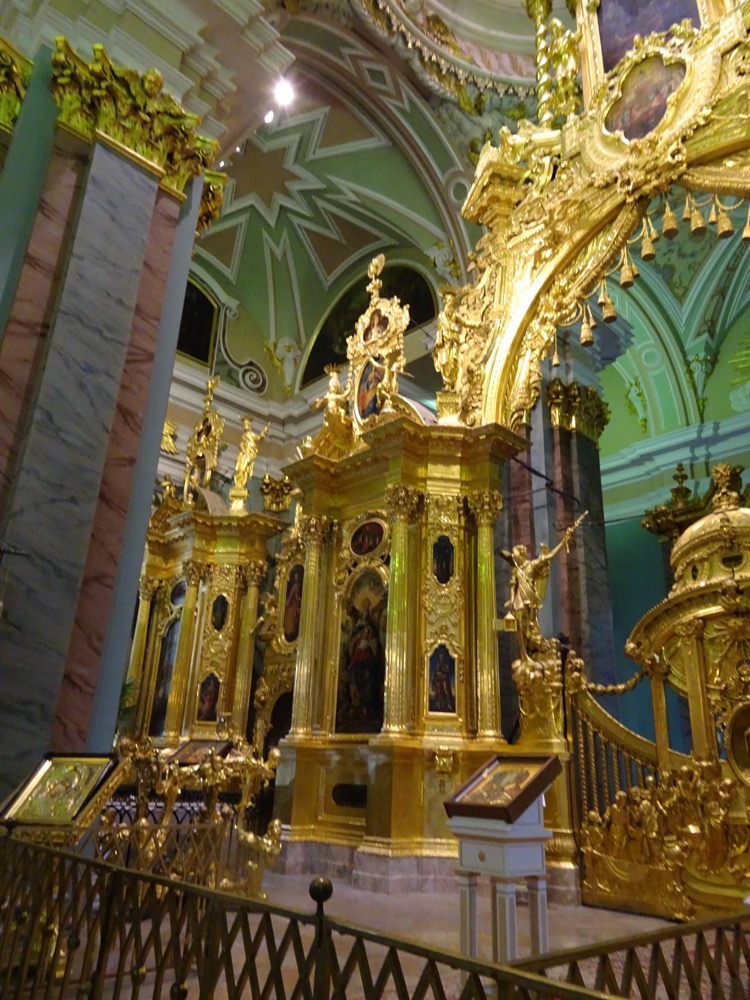
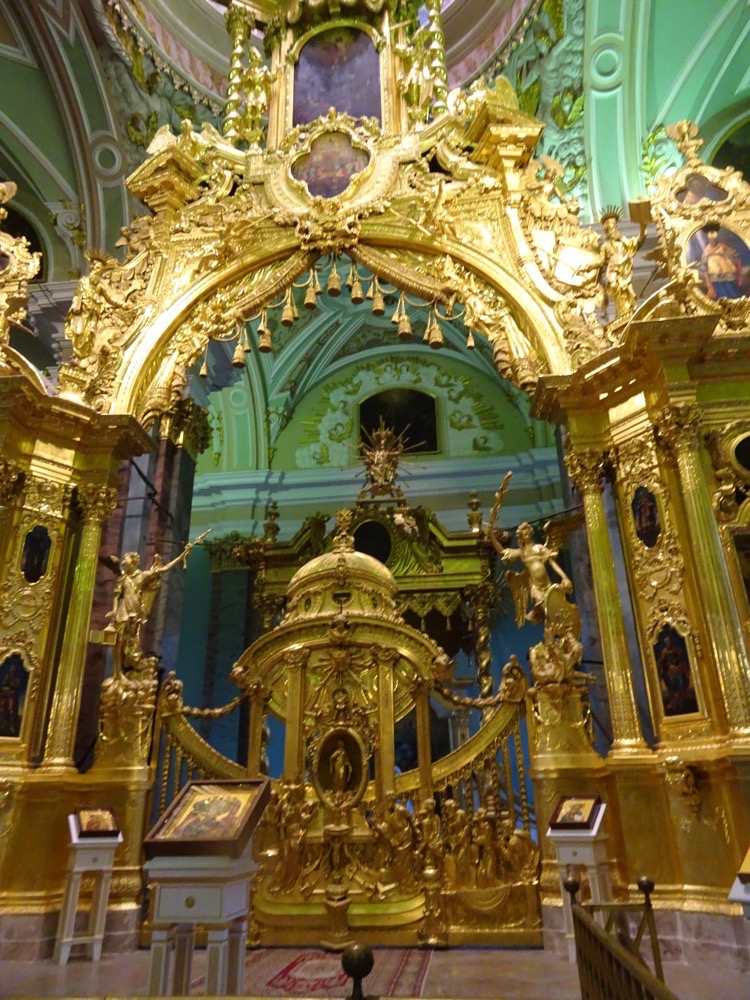
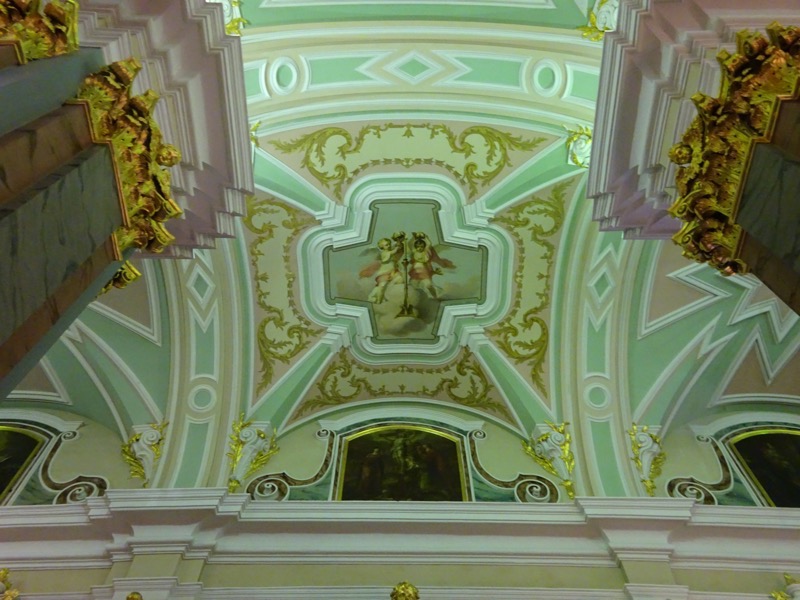 Tombs of Peter the Great, Catherine I and their daughter Alexander who played a large part in public life. The cathedral is the burial place of all the Russian tsars, from Peter I to to Alexander III (with only the exceptions of Peter II and Ivan VI).
Tombs of Peter the Great, Catherine I and their daughter Alexander who played a large part in public life. The cathedral is the burial place of all the Russian tsars, from Peter I to to Alexander III (with only the exceptions of Peter II and Ivan VI).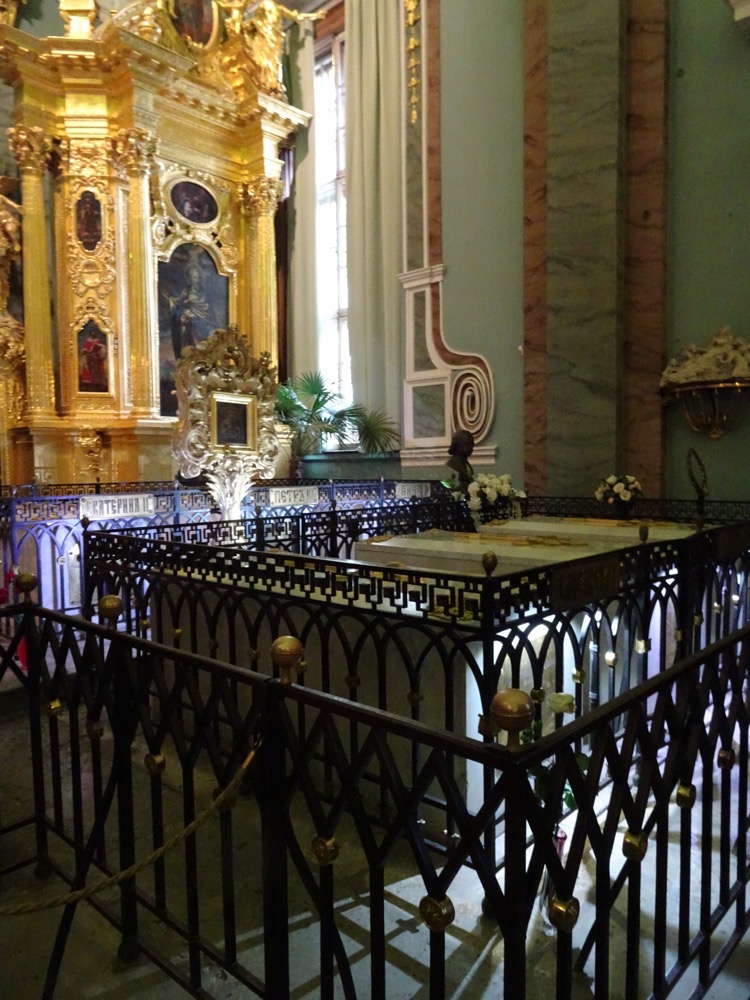
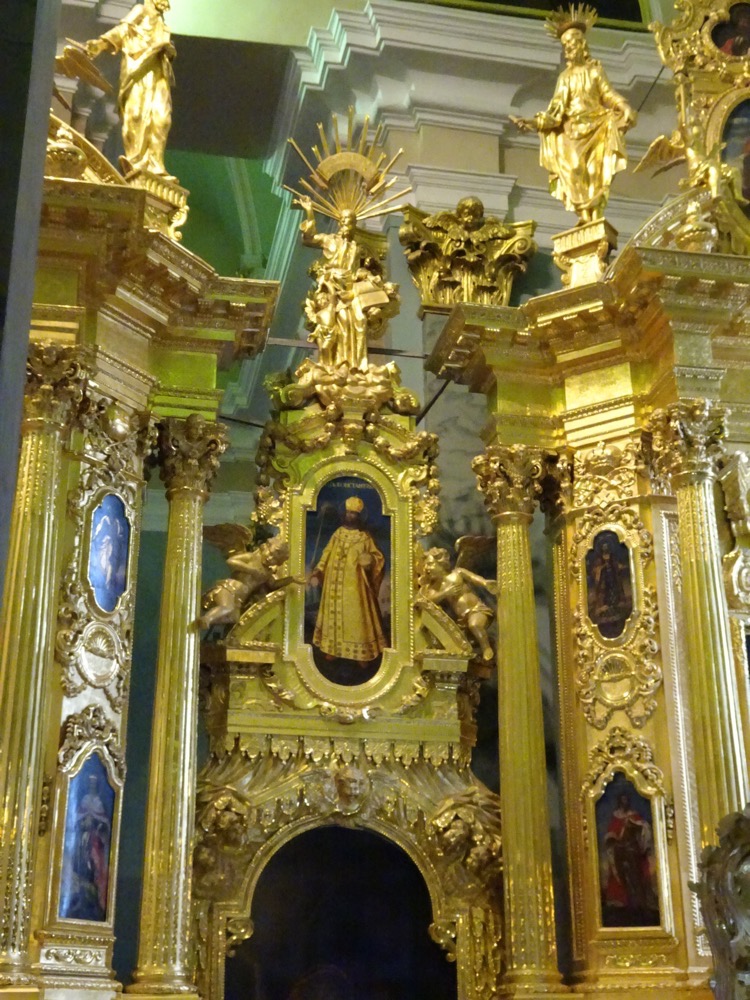
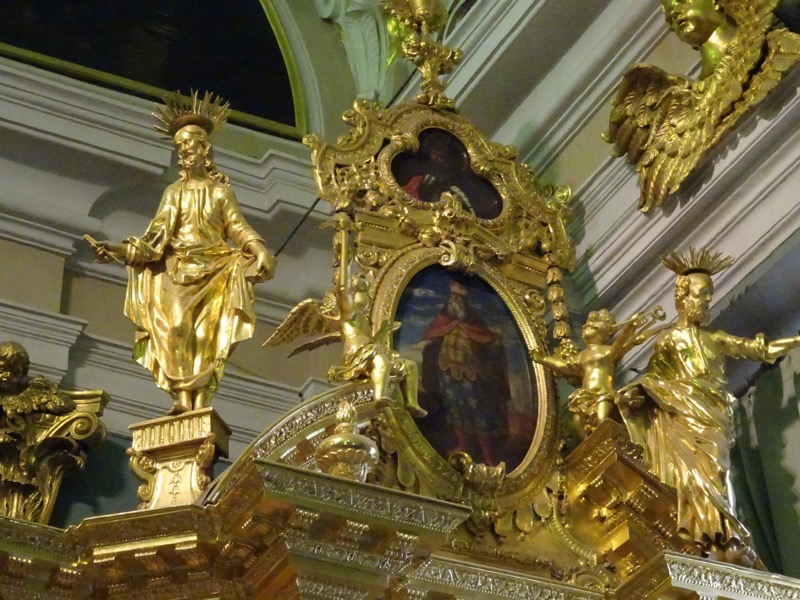 The chapel of St Catherine is dedicated to the Romanovs. The remains of Nicholas II, his entire family and entourage were reinterred here in 1998 on the 80th anniversary of their deaths. About ten years ago, the remains of Dowager Empress Maria Feodorovna were removed from Roskilde Cathedral near Copenhagen and also reinterred here, beside her husband, Alexander III.
The chapel of St Catherine is dedicated to the Romanovs. The remains of Nicholas II, his entire family and entourage were reinterred here in 1998 on the 80th anniversary of their deaths. About ten years ago, the remains of Dowager Empress Maria Feodorovna were removed from Roskilde Cathedral near Copenhagen and also reinterred here, beside her husband, Alexander III.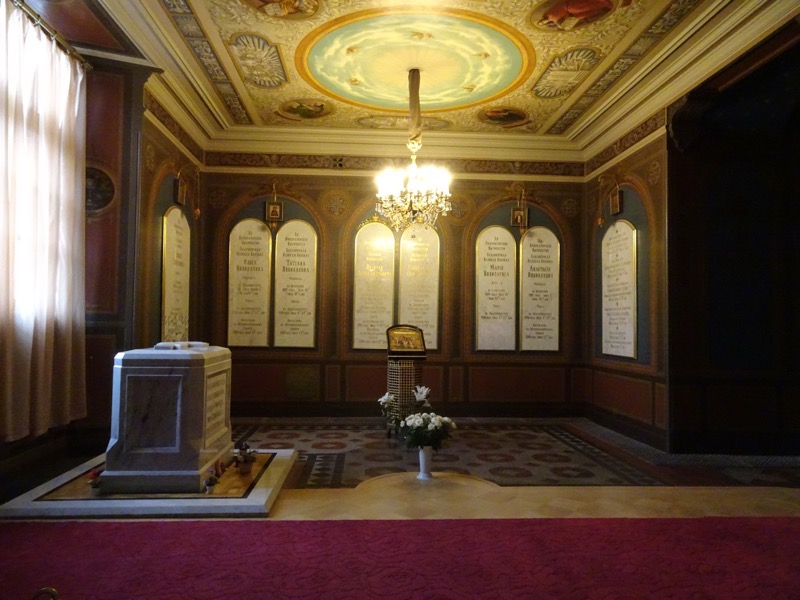
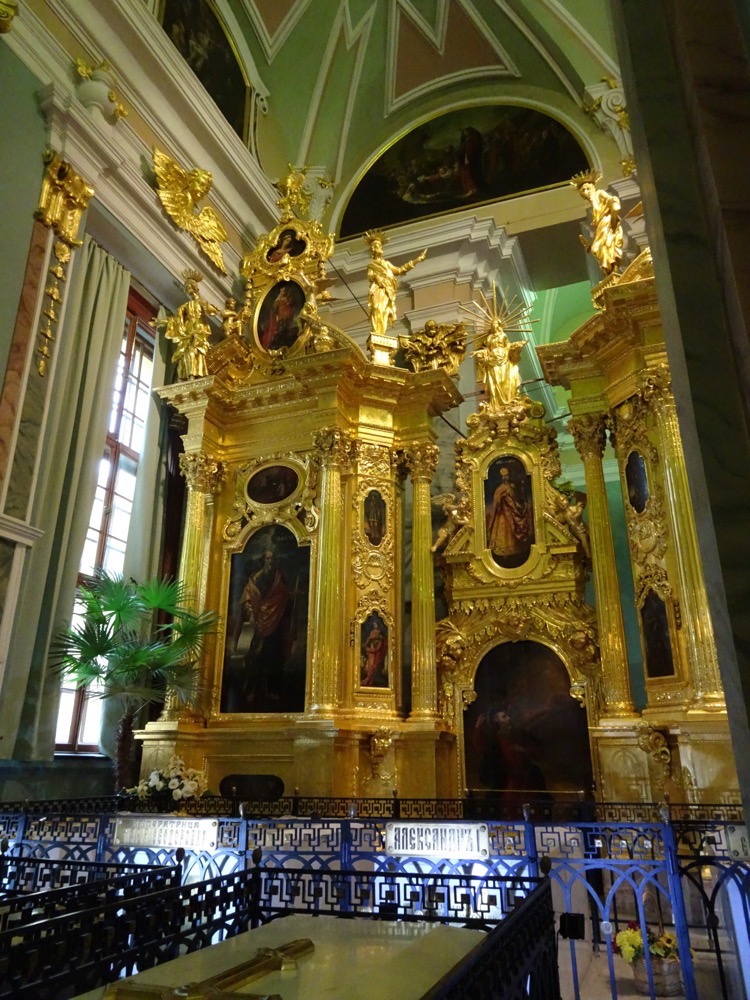
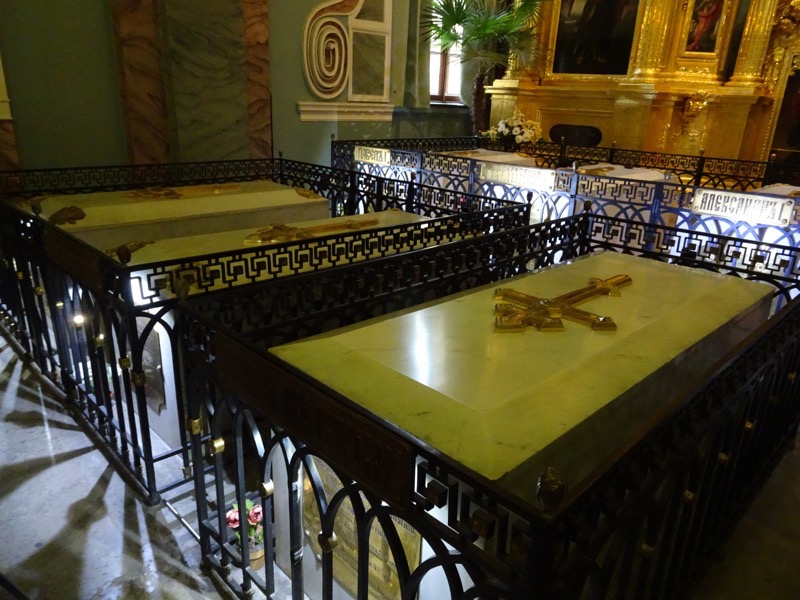
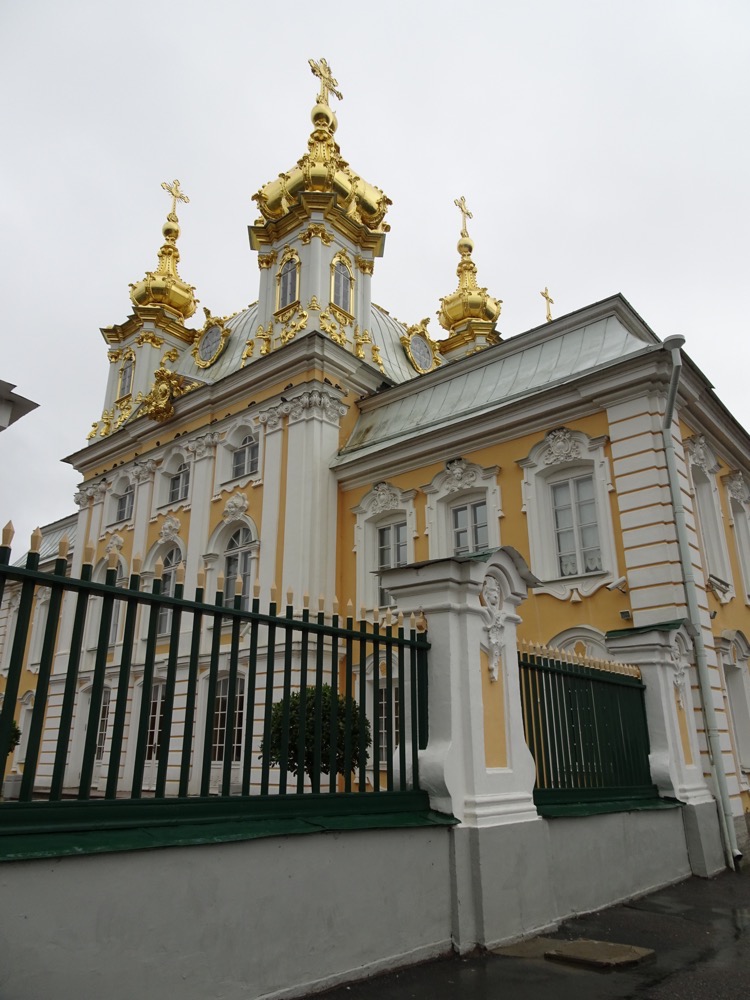 Anyway, next we were off to Peterhof Palace to see the famous, UNSECO World Heritage Site, gardens. These waterfalls are often referred to as the Russian Versailles, and it sounds very much like they were modeled on the gardens that were constructed for Louis XIV. There is a magnificent cascade made out of an artificial grotto two stories high. The water then flows into a large semi circular pool that contains a large statue of Samson tearing open the jaws of a lion, which is supposed to represent the great Russian victory over Sweden in the Great Northern War – the lion is part of the Swedish coat of arms, and the war was actually won on St Samson’s Day (learn something new every day!). From the lion’s mouth shoots a 20m vertical jet of water, which today was blowing all over the place and we couldn’t tell if the water was from the rain or the fountains. The statue was created by Mikhail Kozlovsky but was looted by invading Germans during WWI, and a replica was installed in 1847.
Anyway, next we were off to Peterhof Palace to see the famous, UNSECO World Heritage Site, gardens. These waterfalls are often referred to as the Russian Versailles, and it sounds very much like they were modeled on the gardens that were constructed for Louis XIV. There is a magnificent cascade made out of an artificial grotto two stories high. The water then flows into a large semi circular pool that contains a large statue of Samson tearing open the jaws of a lion, which is supposed to represent the great Russian victory over Sweden in the Great Northern War – the lion is part of the Swedish coat of arms, and the war was actually won on St Samson’s Day (learn something new every day!). From the lion’s mouth shoots a 20m vertical jet of water, which today was blowing all over the place and we couldn’t tell if the water was from the rain or the fountains. The statue was created by Mikhail Kozlovsky but was looted by invading Germans during WWI, and a replica was installed in 1847.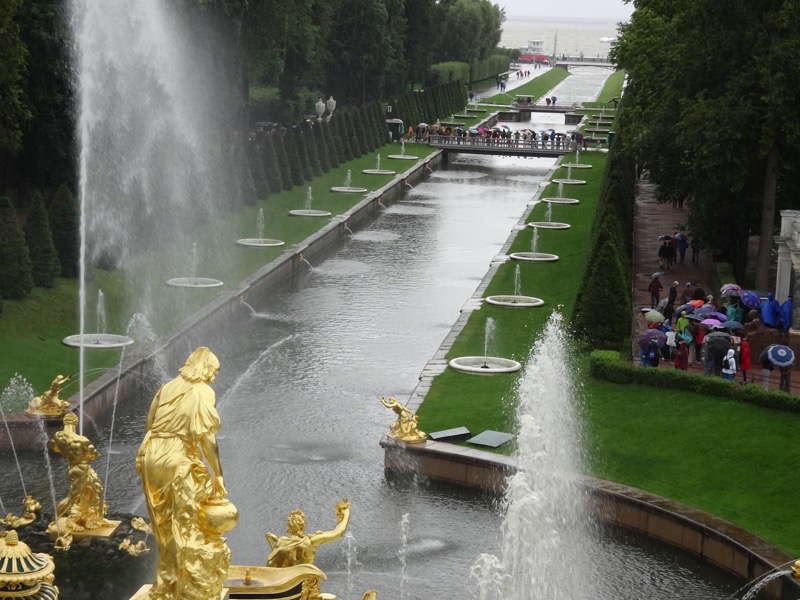
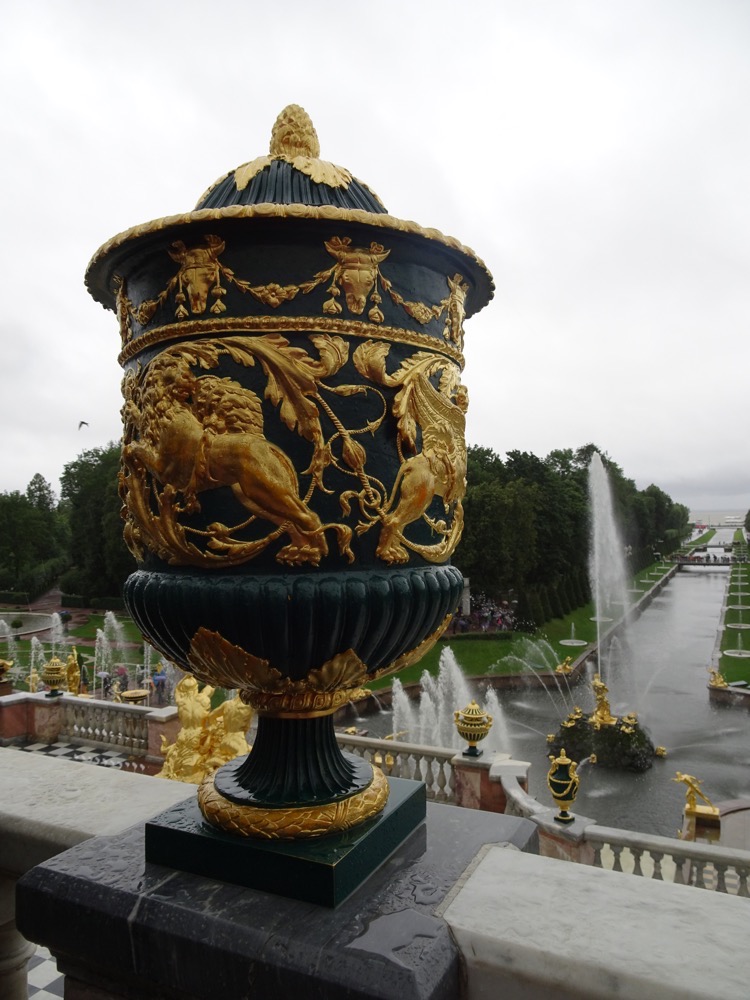
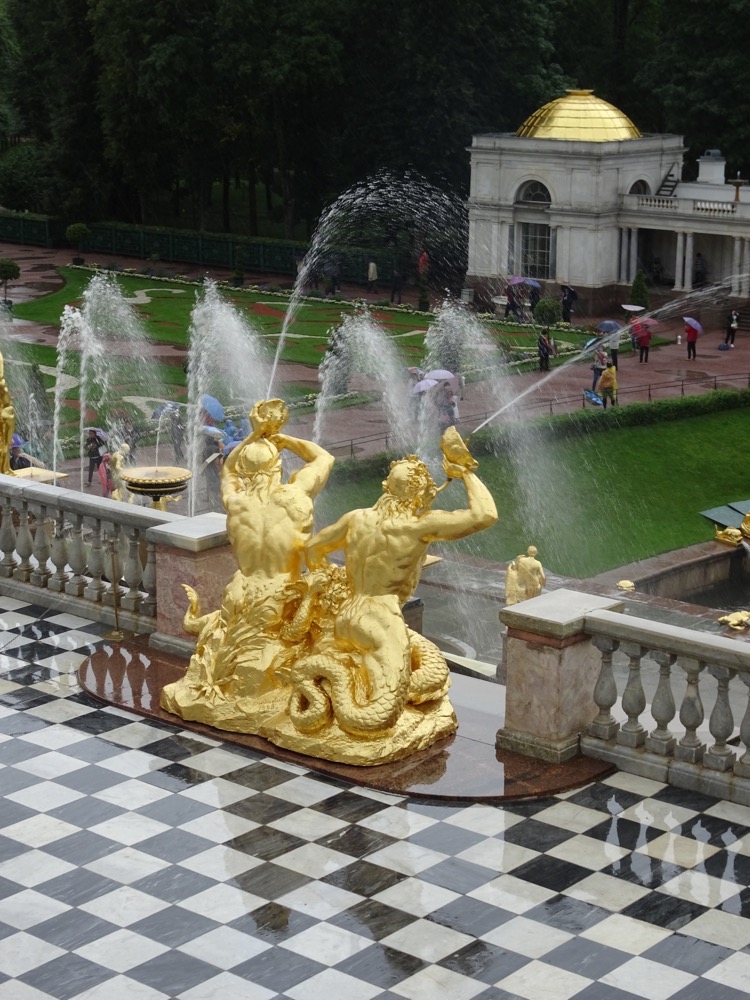
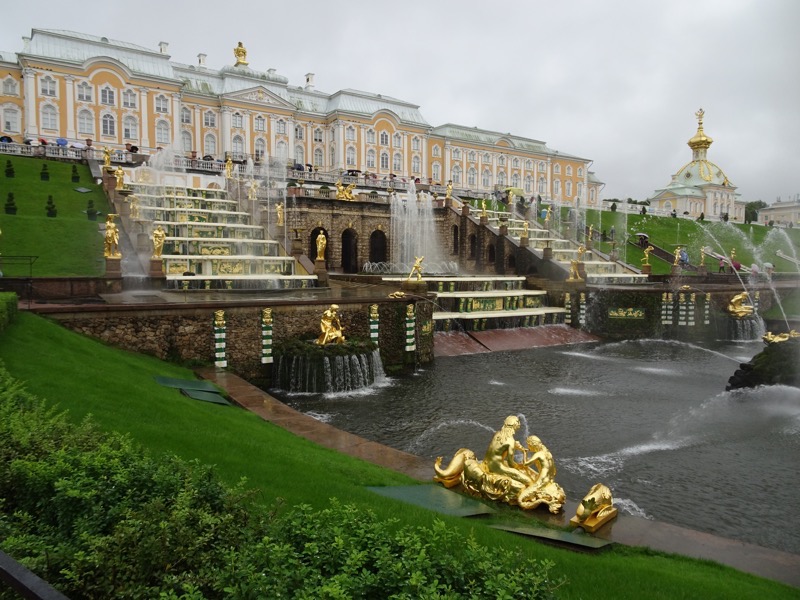
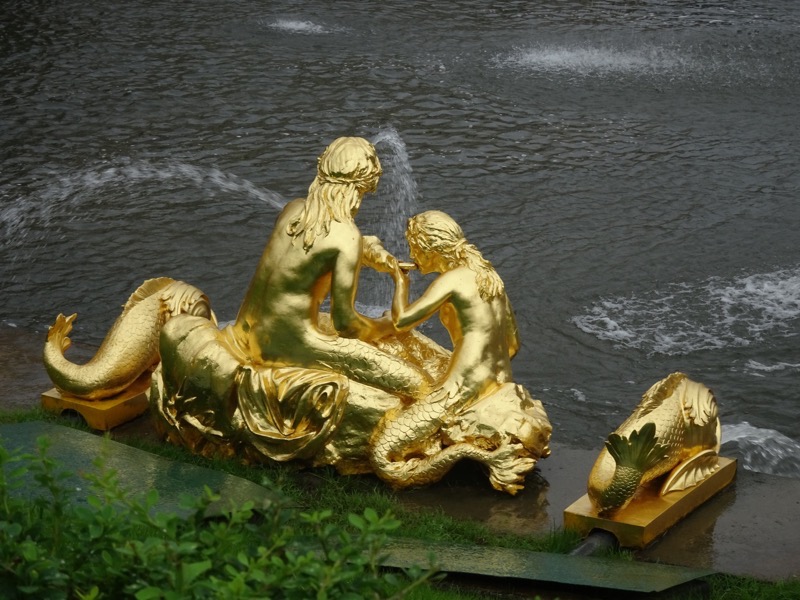 Samson is in there somewhere – there was just so much water.
Samson is in there somewhere – there was just so much water.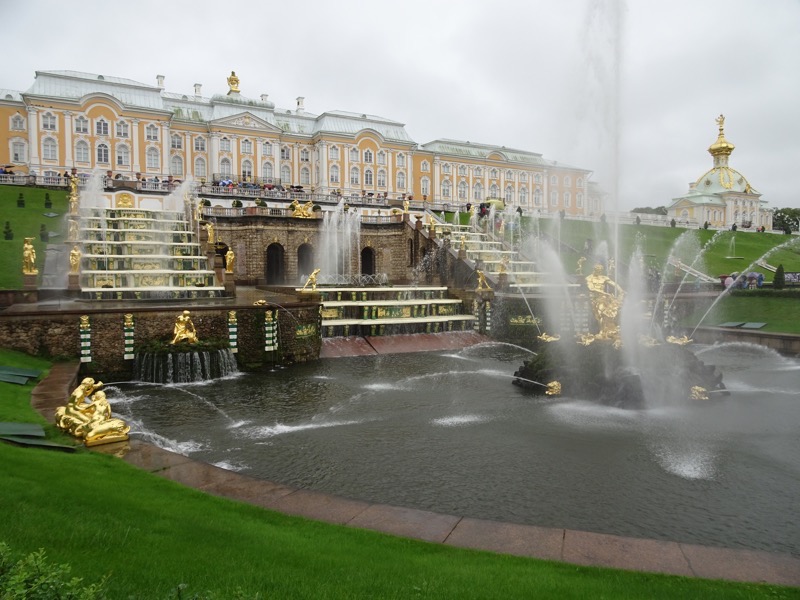 Like Versailles, one of the greatest achievements of these gardens is that all the fountains operated without the use of water pumps. The water was supposed to come from the nearby Gulf of Finland, but eventually, architects decided to supply the cascade and fountains from natural springs that collect in reservoirs in the Upper Gardens. The elevation differences allow for enough pressure to create the fountains in the Lower Gardens including the cascades. The Samson Fountain has an independent aqueduct that is 4km long and draws water and pressure from a higher more distant elevation source.
Like Versailles, one of the greatest achievements of these gardens is that all the fountains operated without the use of water pumps. The water was supposed to come from the nearby Gulf of Finland, but eventually, architects decided to supply the cascade and fountains from natural springs that collect in reservoirs in the Upper Gardens. The elevation differences allow for enough pressure to create the fountains in the Lower Gardens including the cascades. The Samson Fountain has an independent aqueduct that is 4km long and draws water and pressure from a higher more distant elevation source.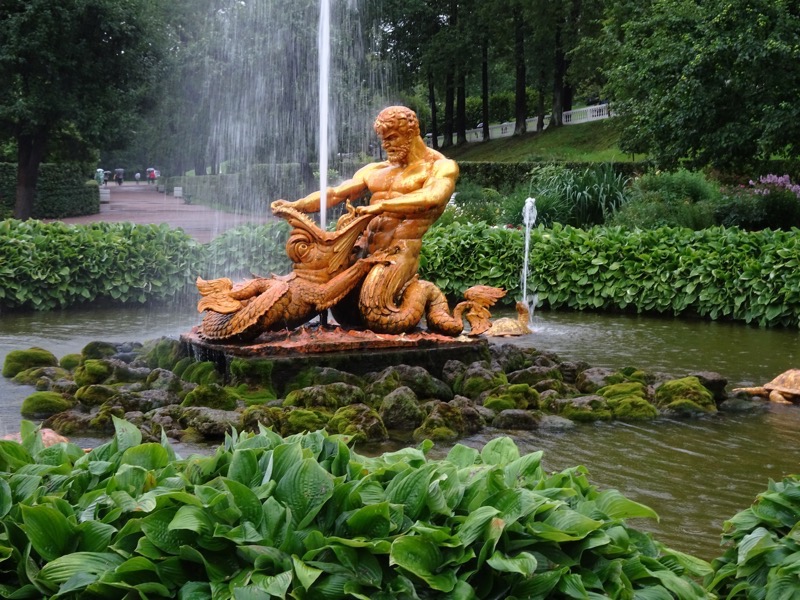
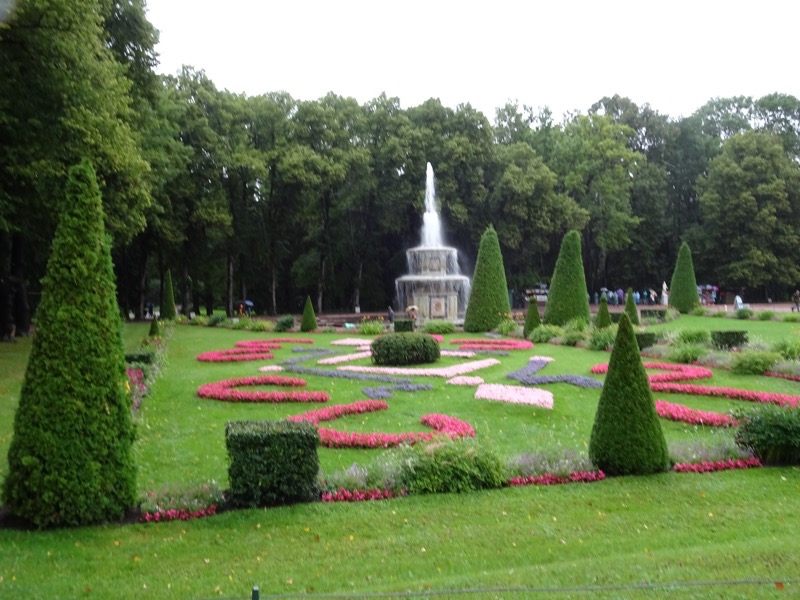
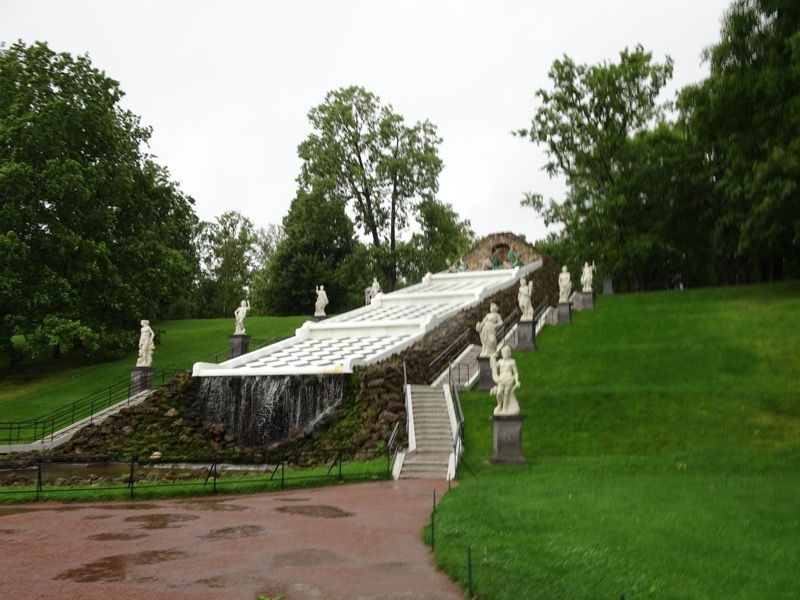
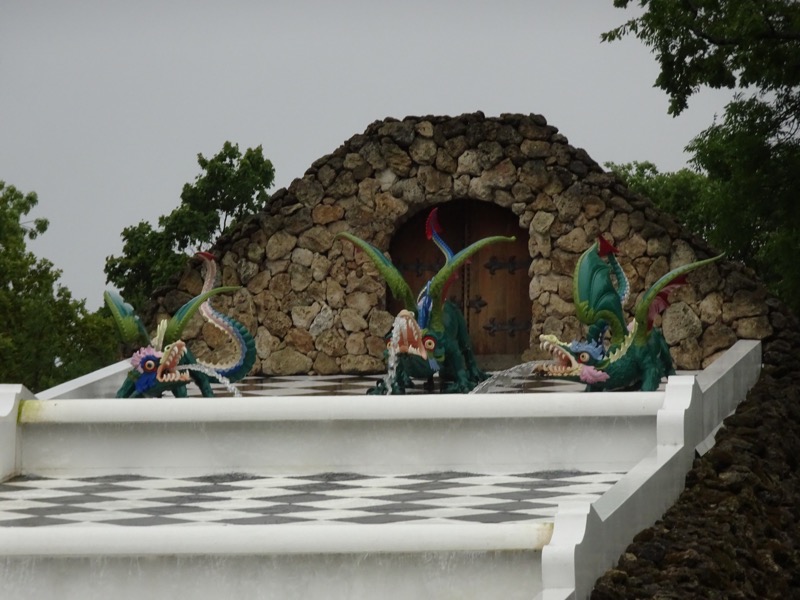
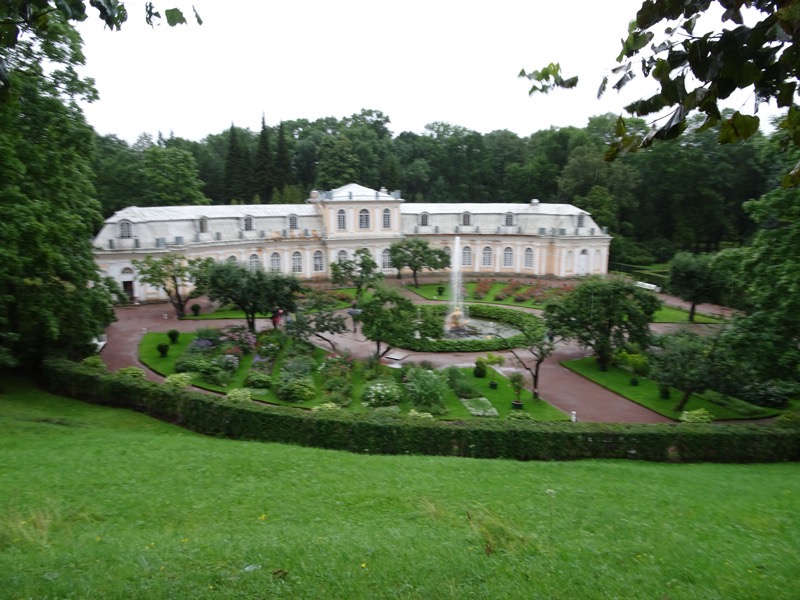
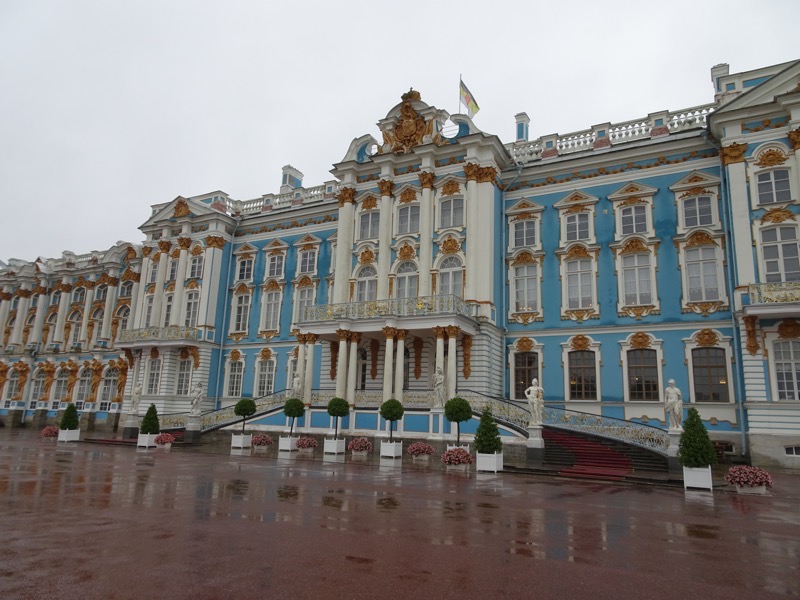
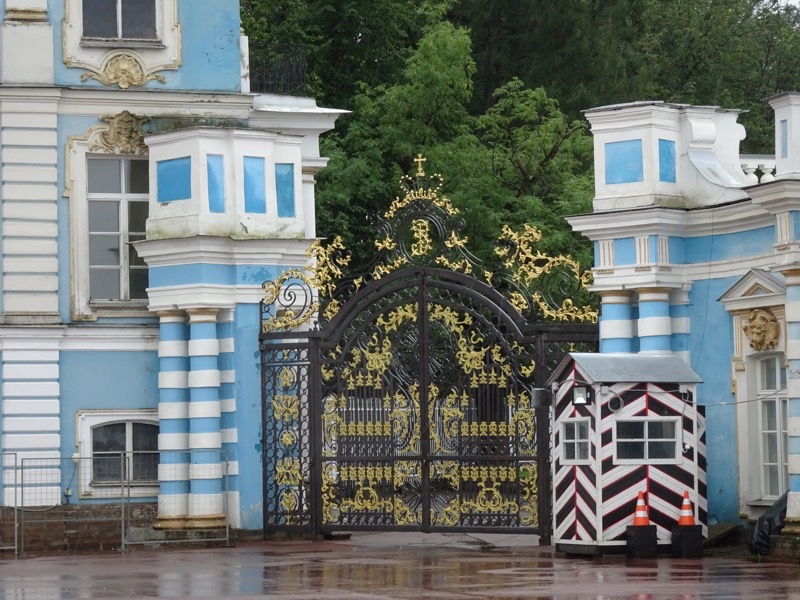
 Our guide Maria, doing her best to keep everyone’s spirits up as we waiting in the rain to gain entrance to Catherine Palace… she had lots of jokes about St Petersburg weather that no doubt have been used to good effect over the years that she has been showing visitors her city.
Our guide Maria, doing her best to keep everyone’s spirits up as we waiting in the rain to gain entrance to Catherine Palace… she had lots of jokes about St Petersburg weather that no doubt have been used to good effect over the years that she has been showing visitors her city.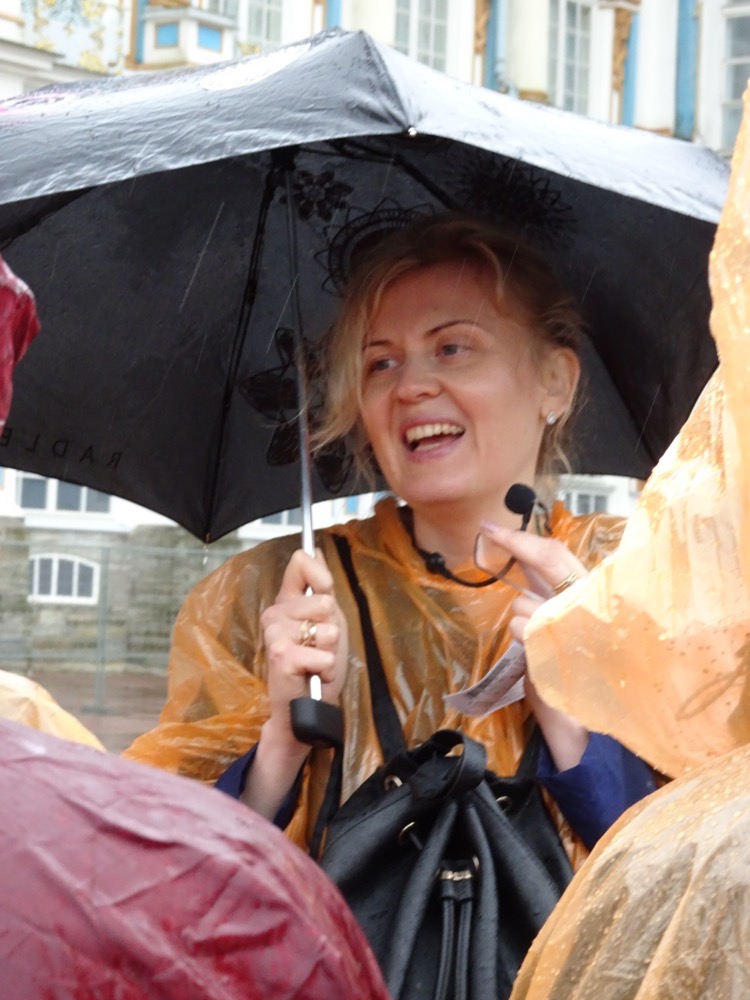
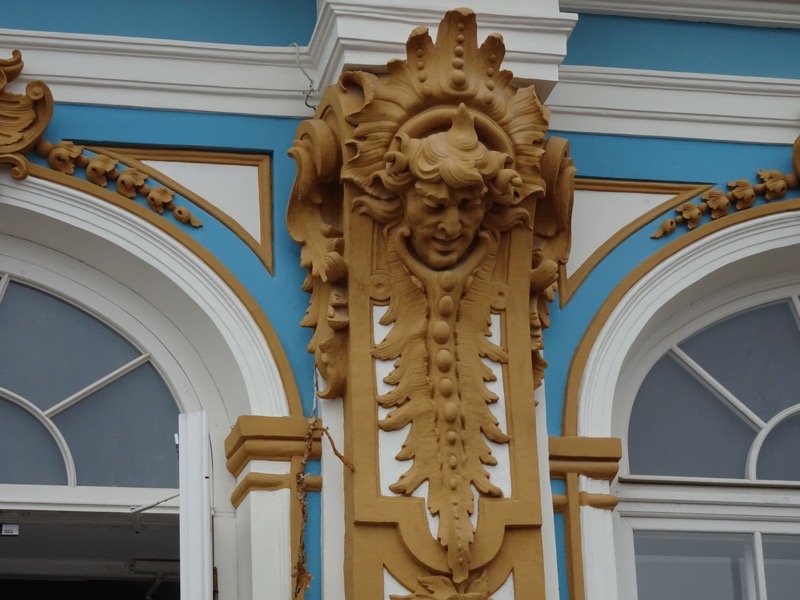 We were given lovely booties to cover our shoes – jeans all rolled up to stop the hems from getting soaked… it was cold, wet, gray and gloomy, but we were in St Petersburg! So all good. 🙂
We were given lovely booties to cover our shoes – jeans all rolled up to stop the hems from getting soaked… it was cold, wet, gray and gloomy, but we were in St Petersburg! So all good. 🙂 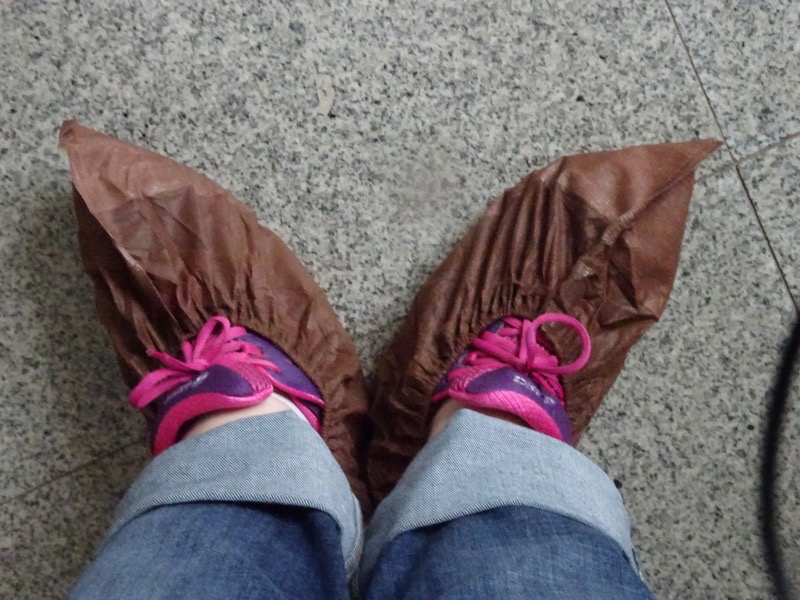
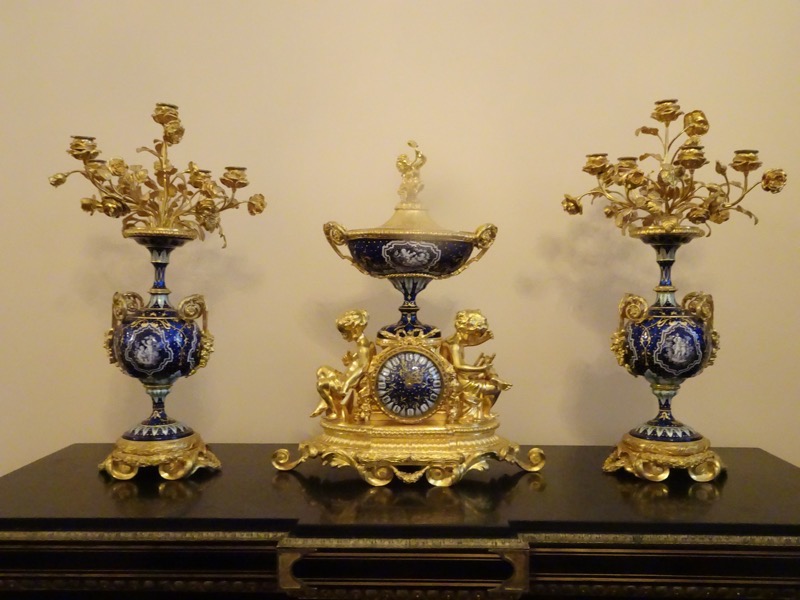 A blue ‘dressing room’. The Empress Elizabeth was reported to have had over 15,000 dresses and would change 7-9 times a day in the performing of her normal court duties of receptions and parties.
A blue ‘dressing room’. The Empress Elizabeth was reported to have had over 15,000 dresses and would change 7-9 times a day in the performing of her normal court duties of receptions and parties.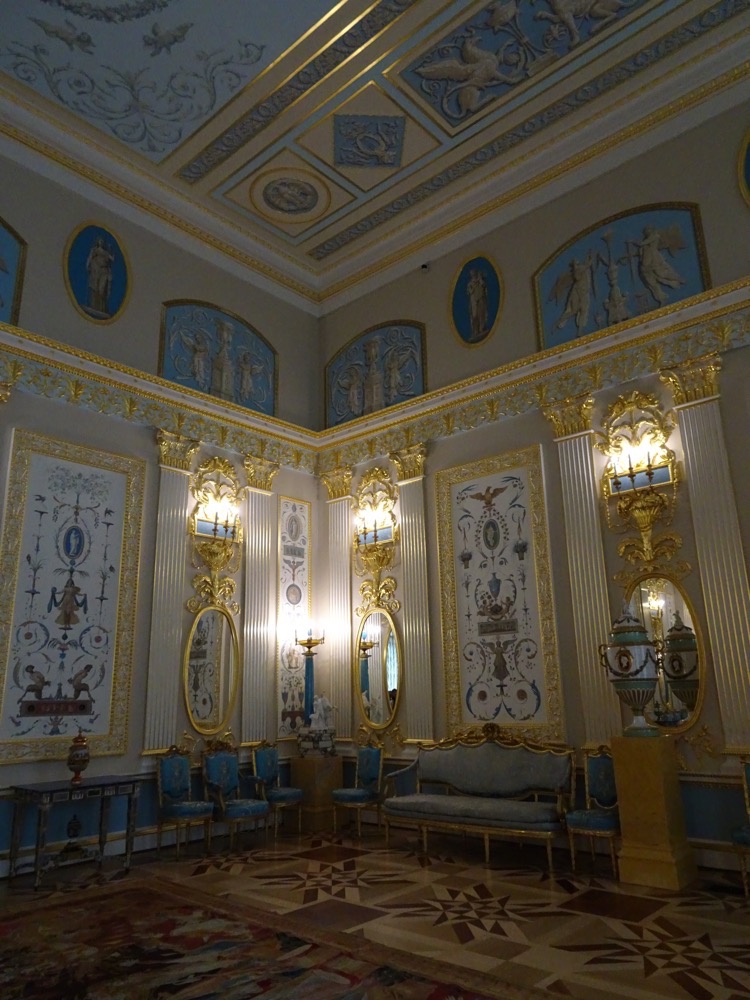 I love the ceilings – we just don’t take this sort of care in our building these days. 😉
I love the ceilings – we just don’t take this sort of care in our building these days. 😉 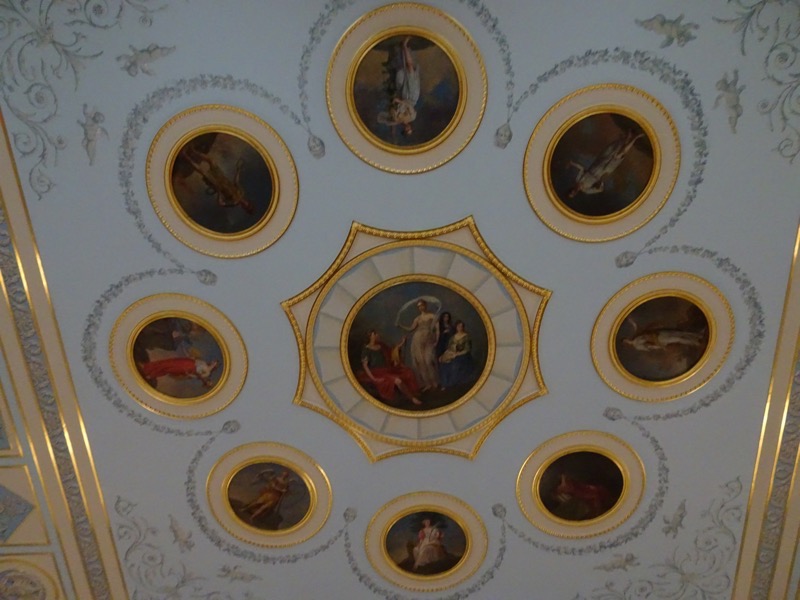 The grand hall… gilded carved timber as far as the eye could see. The room has large windows on both sides, along with long mirrors inserted into every panel between the windows giving the impression of more light and even more space in what must be a 20m x 10m room. The amount of light, mirrors, and gold here definitely give Versaille a run for its money.
The grand hall… gilded carved timber as far as the eye could see. The room has large windows on both sides, along with long mirrors inserted into every panel between the windows giving the impression of more light and even more space in what must be a 20m x 10m room. The amount of light, mirrors, and gold here definitely give Versaille a run for its money.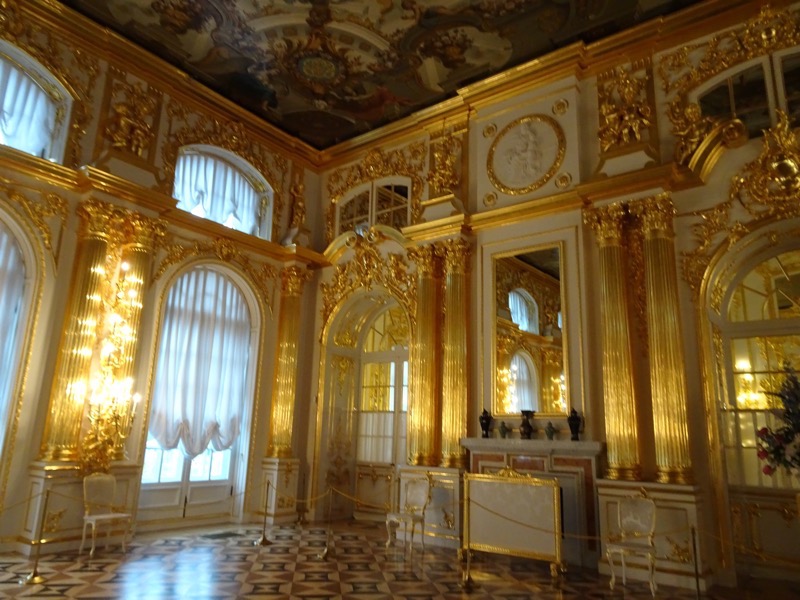
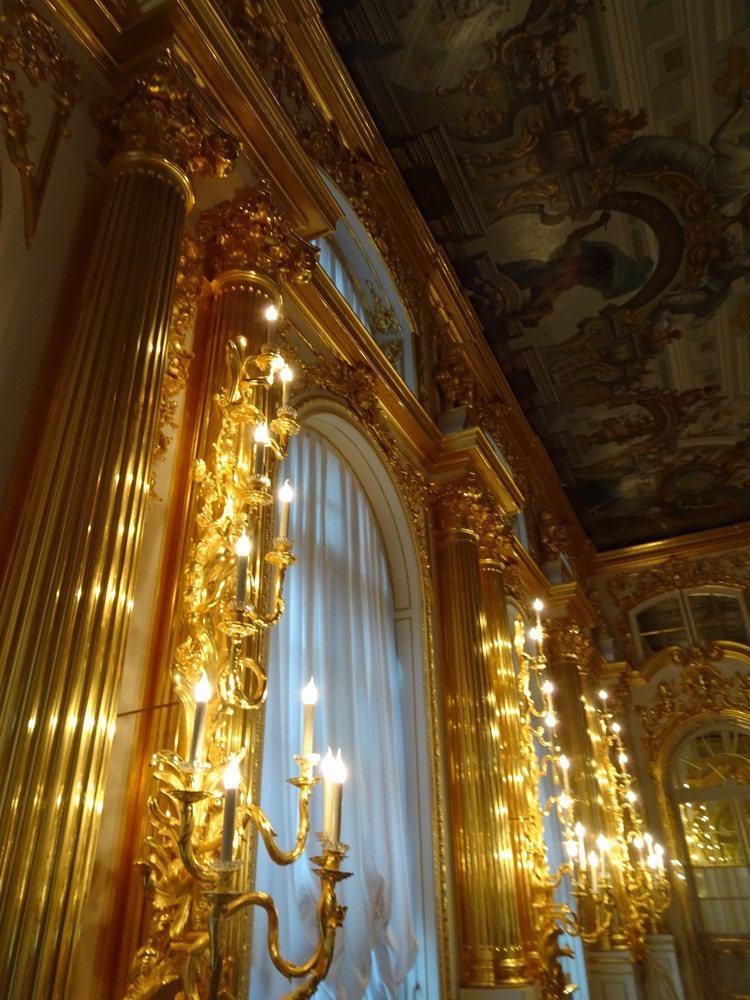
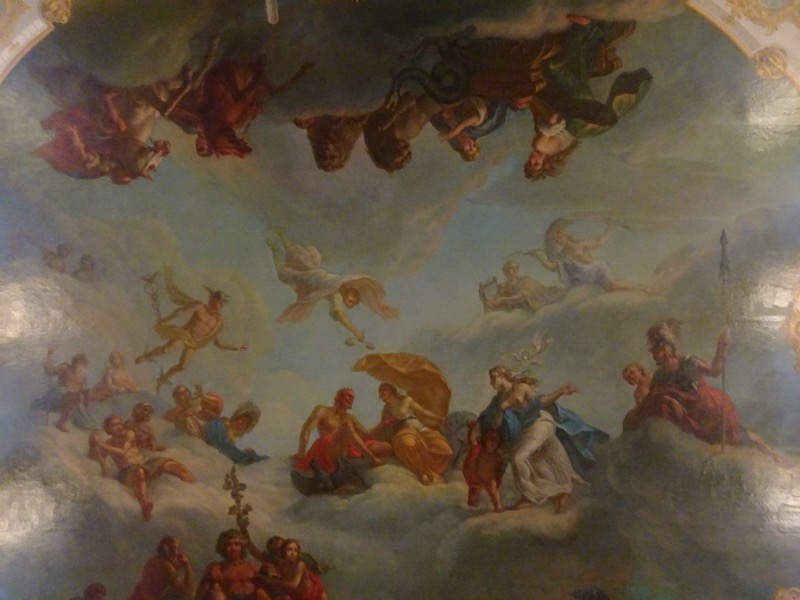
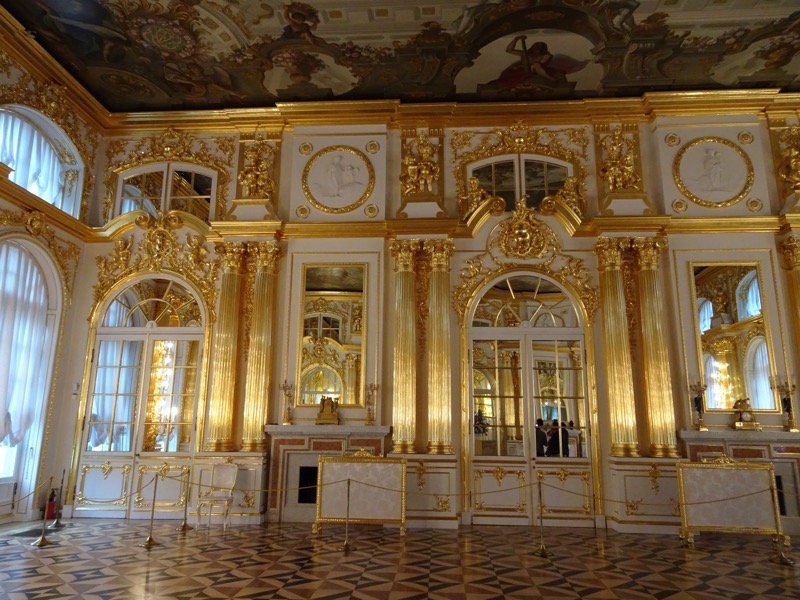
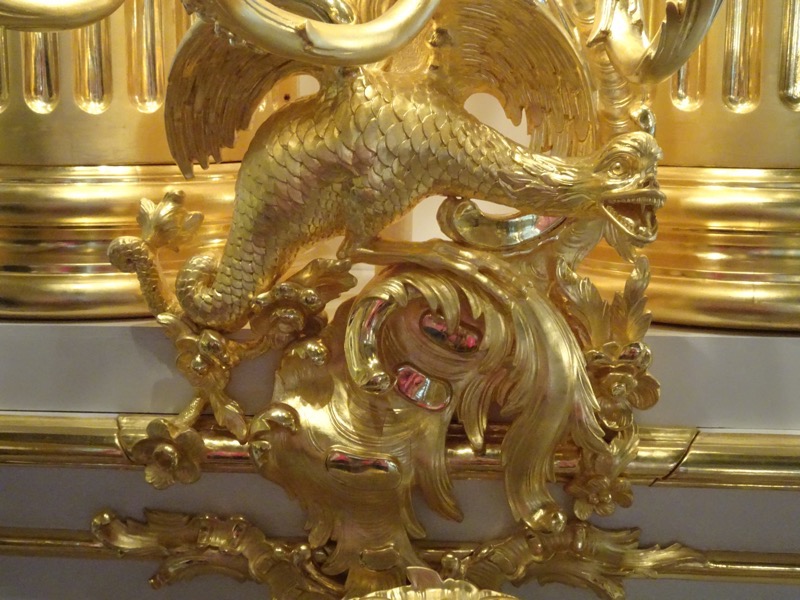
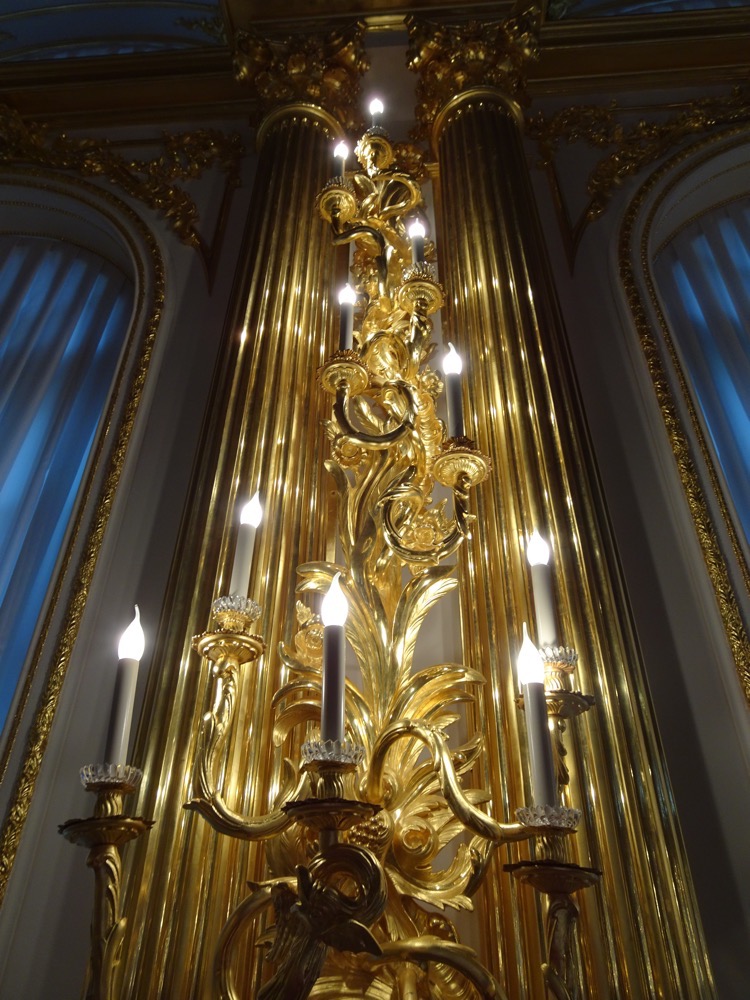 The dining room – for family parties and receptions. Mostly only family and their private guests were hosted here.
The dining room – for family parties and receptions. Mostly only family and their private guests were hosted here.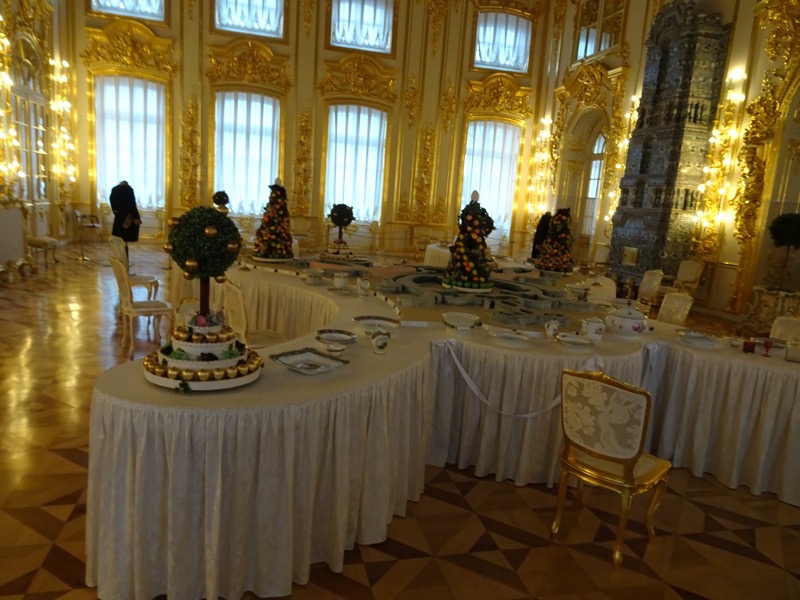 Fabulous ceramic heaters.
Fabulous ceramic heaters.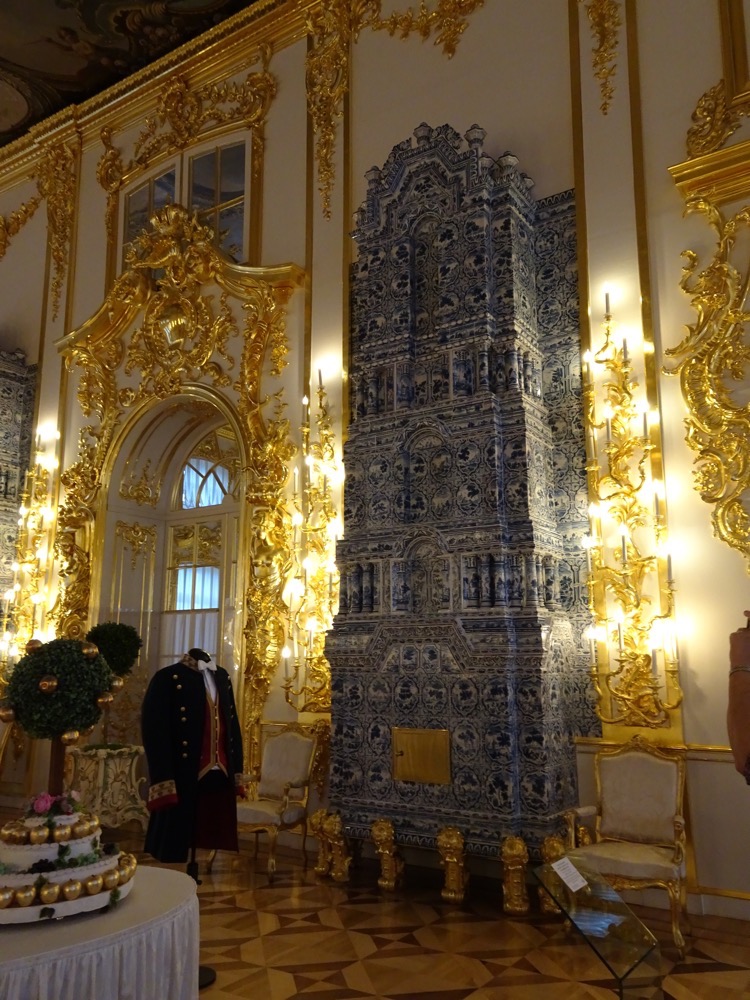
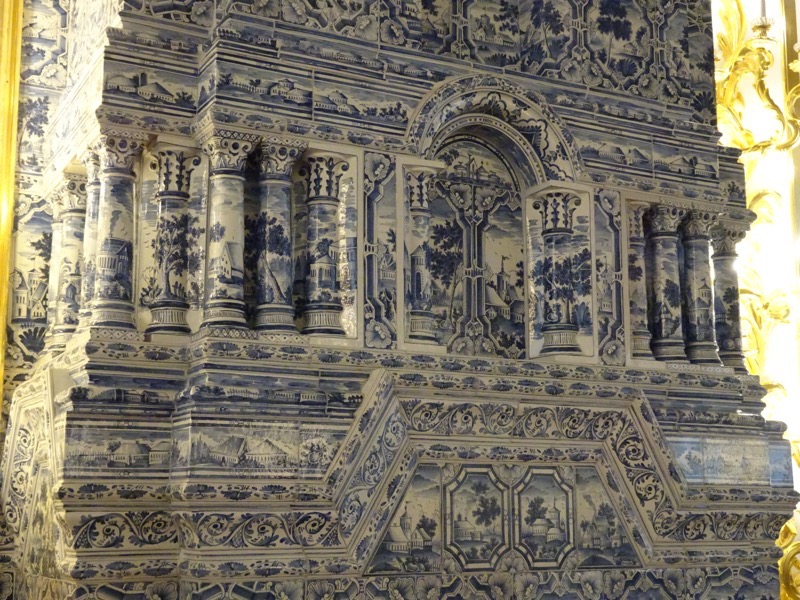
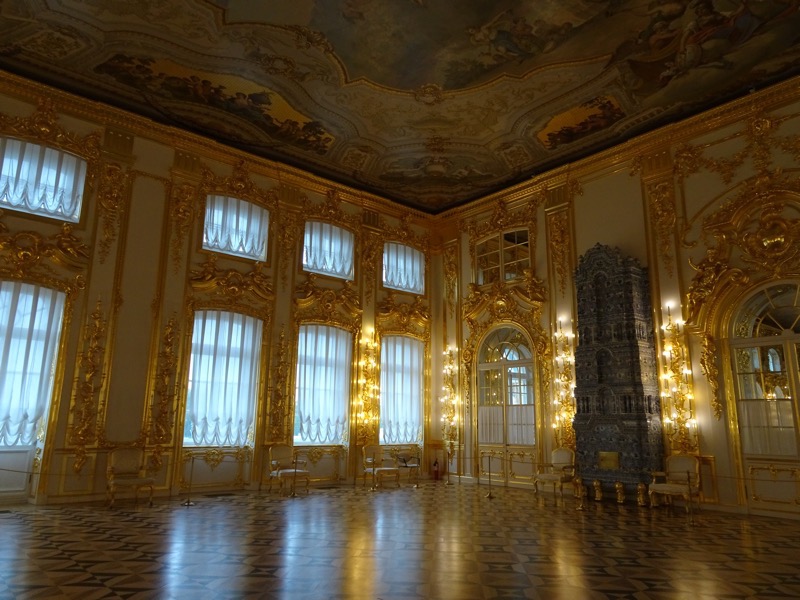
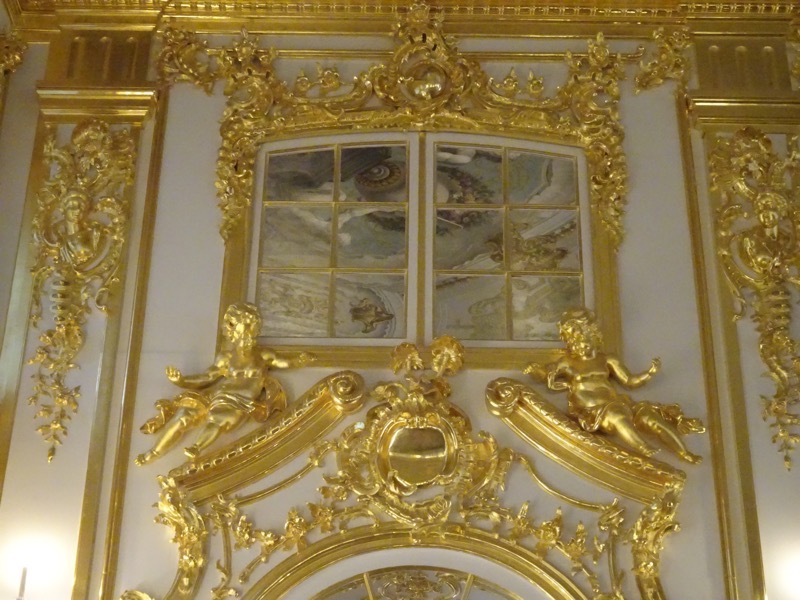 The grand ballroom – which looked as elaborate and lavish as the grand hall, but was about four times as large. Just enormous… and so much goldwork!
The grand ballroom – which looked as elaborate and lavish as the grand hall, but was about four times as large. Just enormous… and so much goldwork!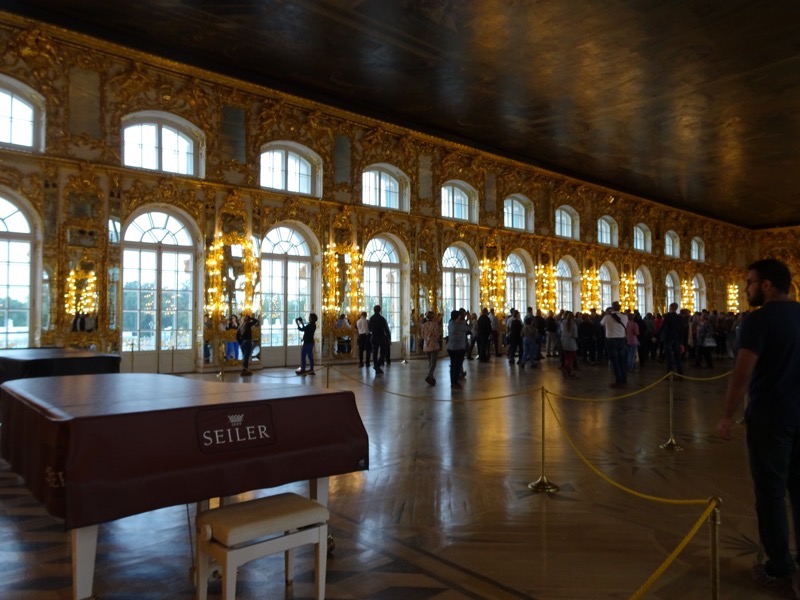
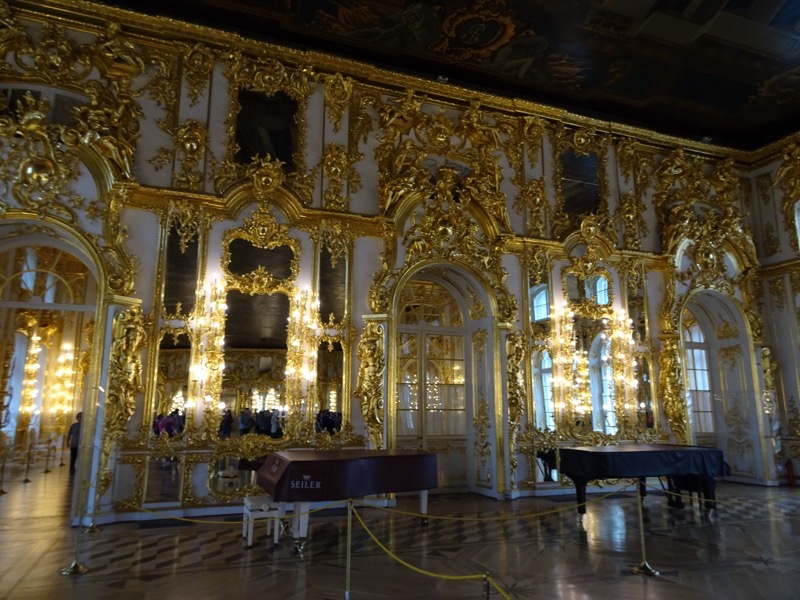 View out to the gardens.
View out to the gardens.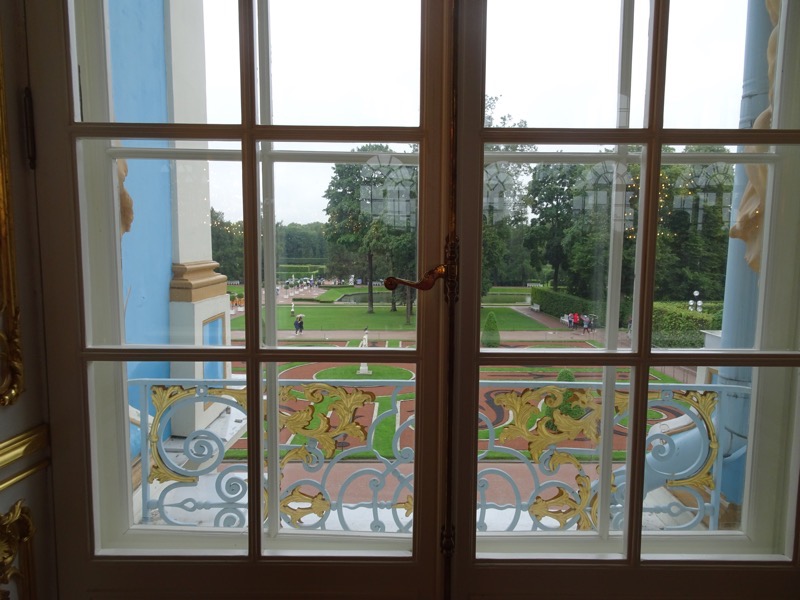
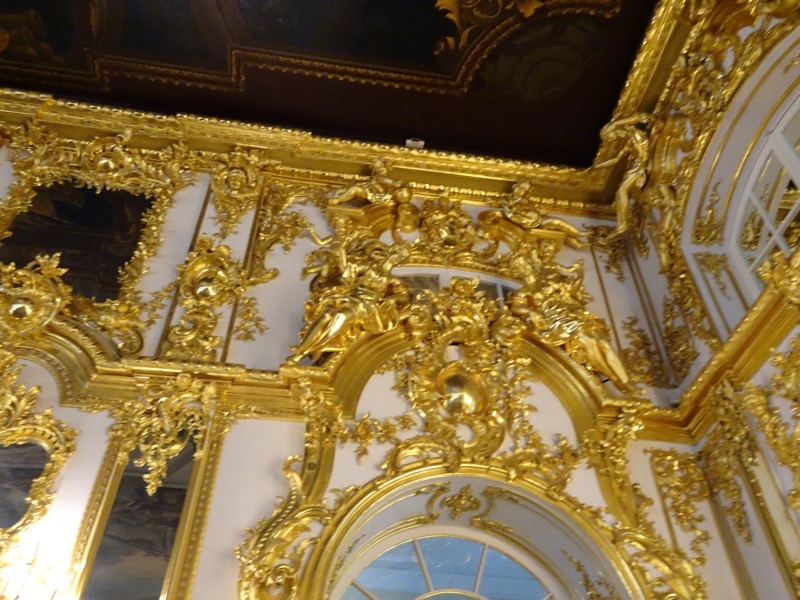
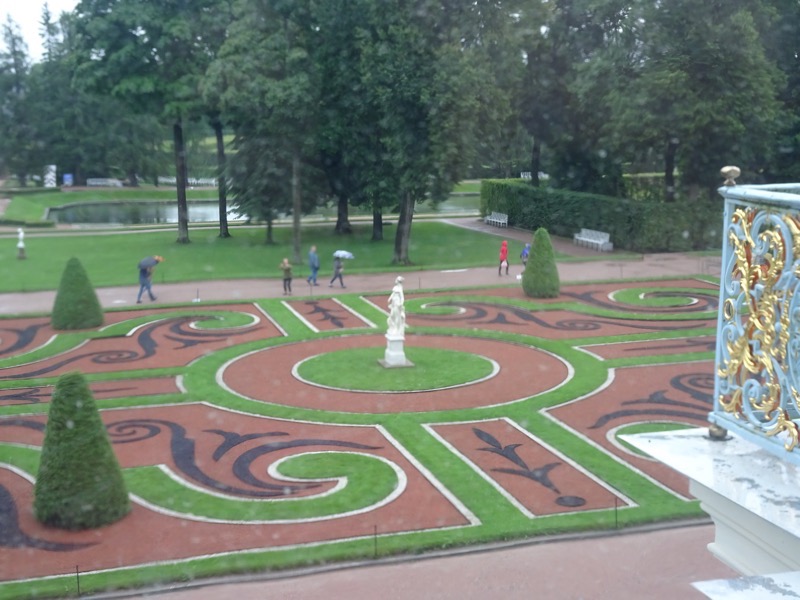 A re-creation of one of Empress Elizabeth’s dresses… of which she is reputed to have had over 15,000.
A re-creation of one of Empress Elizabeth’s dresses… of which she is reputed to have had over 15,000. 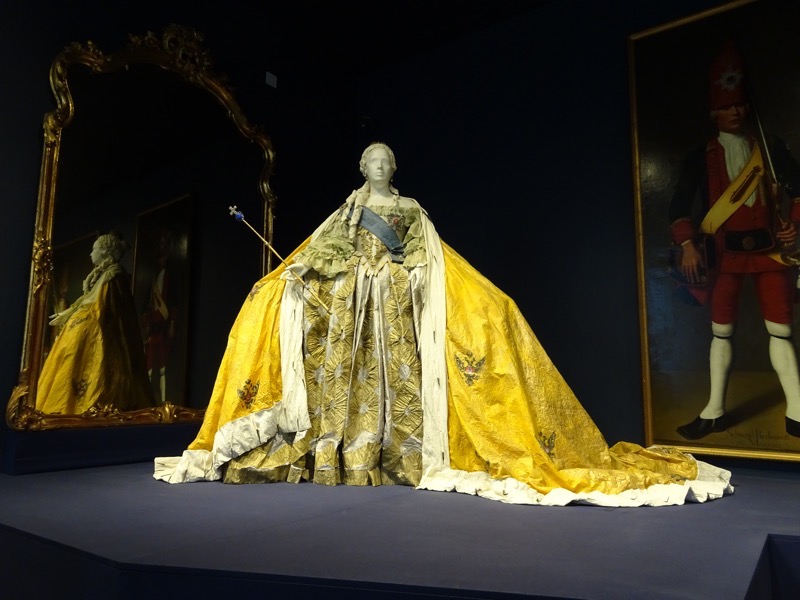
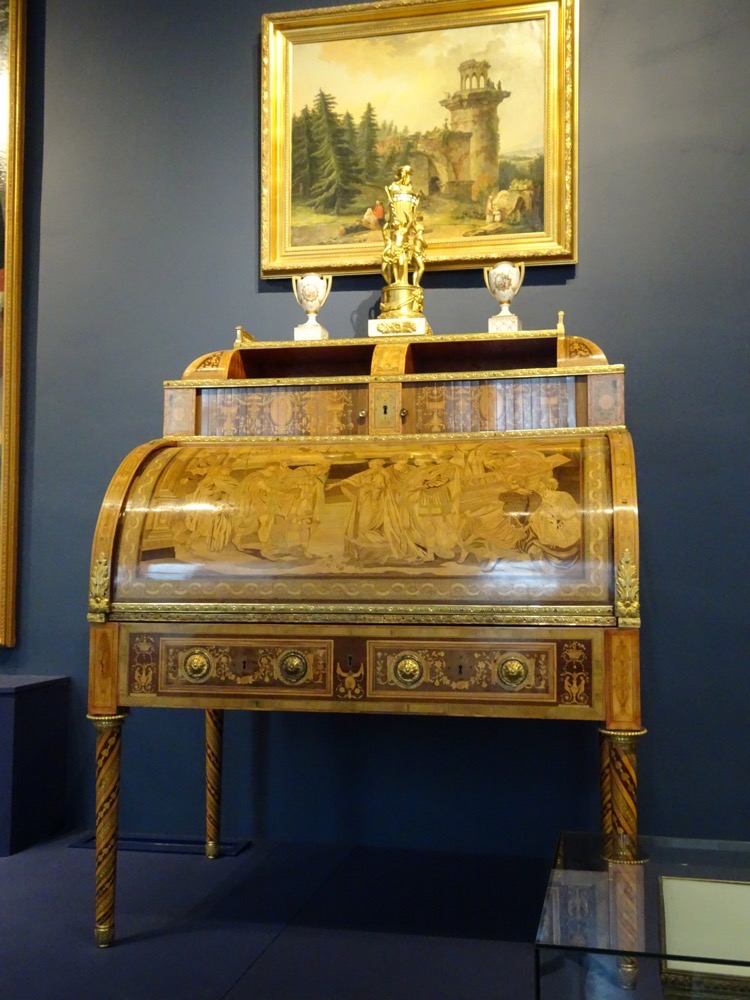
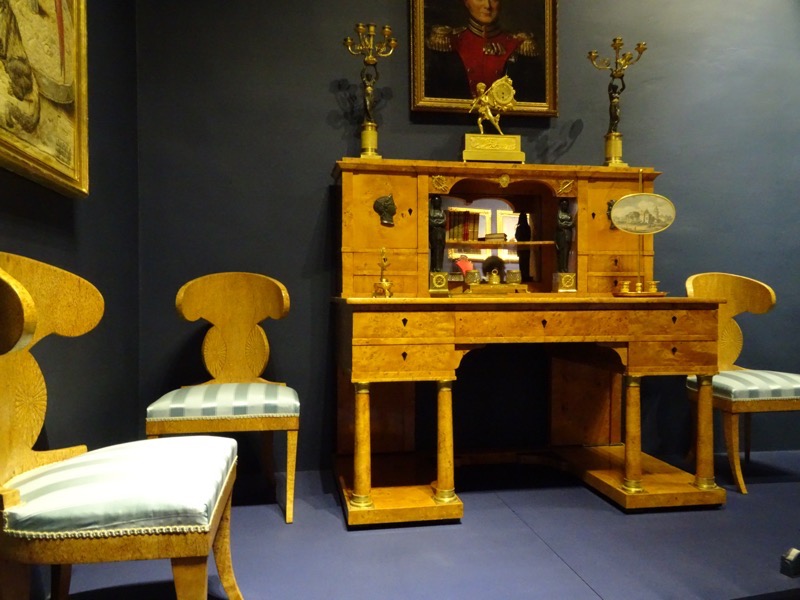
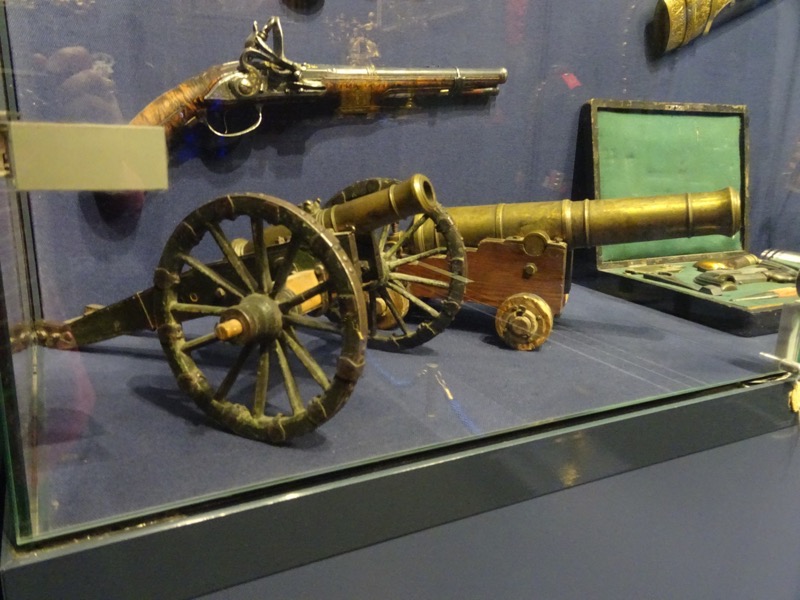 The Amber Room… has an extraordinary history – the TLDR is: this Amber Room is a recreation only, the original Amber Room was pillaged by the Germans in WWII and the location of the famous amber panels is still unknown (shortest version of that story you’ll ever see!).
The Amber Room… has an extraordinary history – the TLDR is: this Amber Room is a recreation only, the original Amber Room was pillaged by the Germans in WWII and the location of the famous amber panels is still unknown (shortest version of that story you’ll ever see!).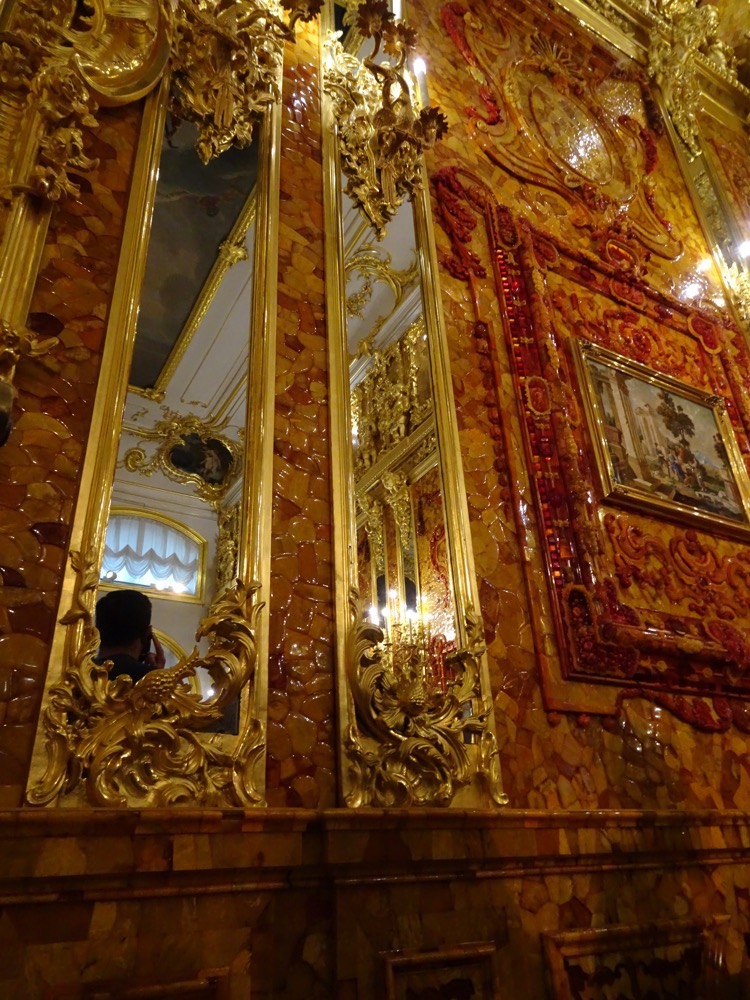
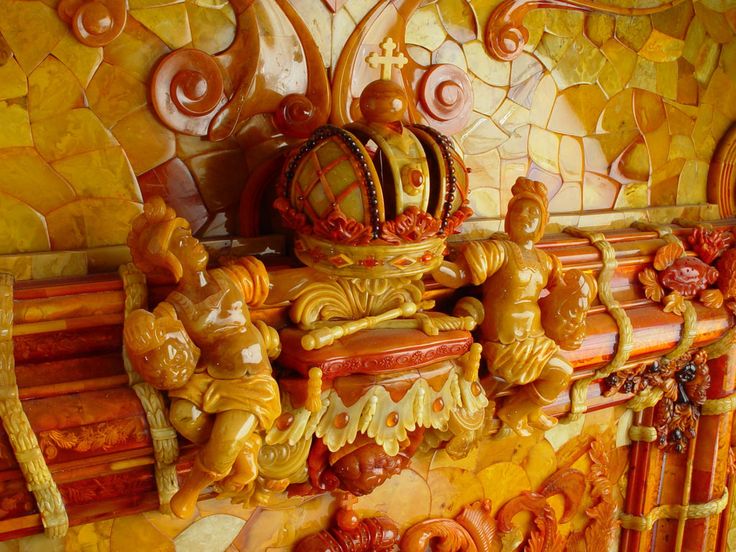

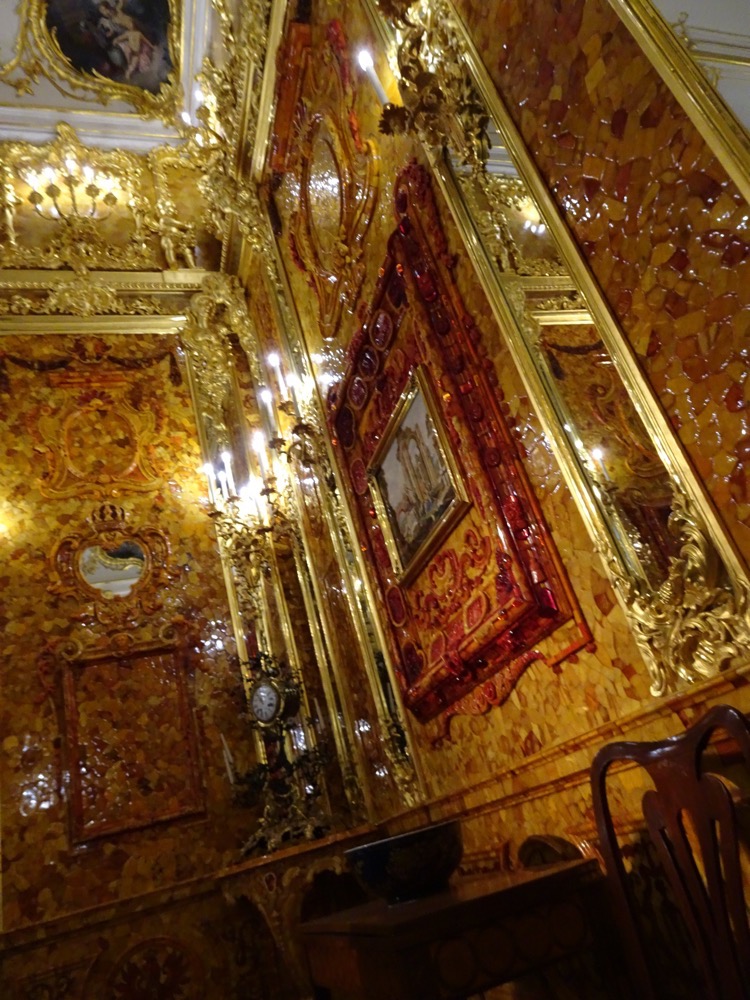 After the Amber Room, there was another grand reception hall.
After the Amber Room, there was another grand reception hall.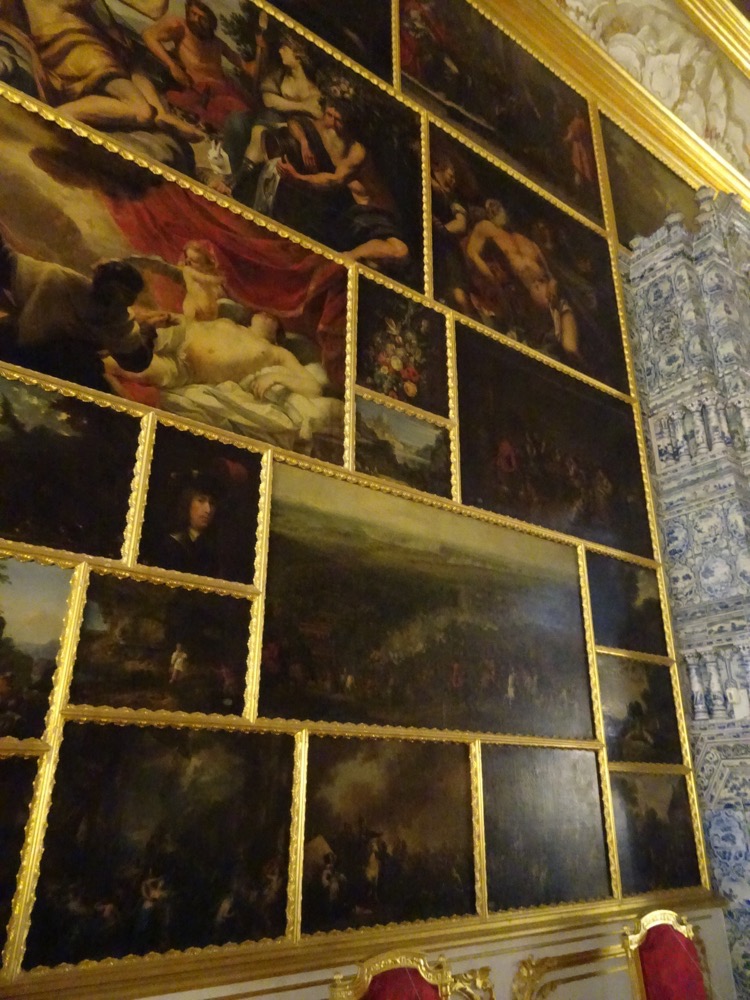
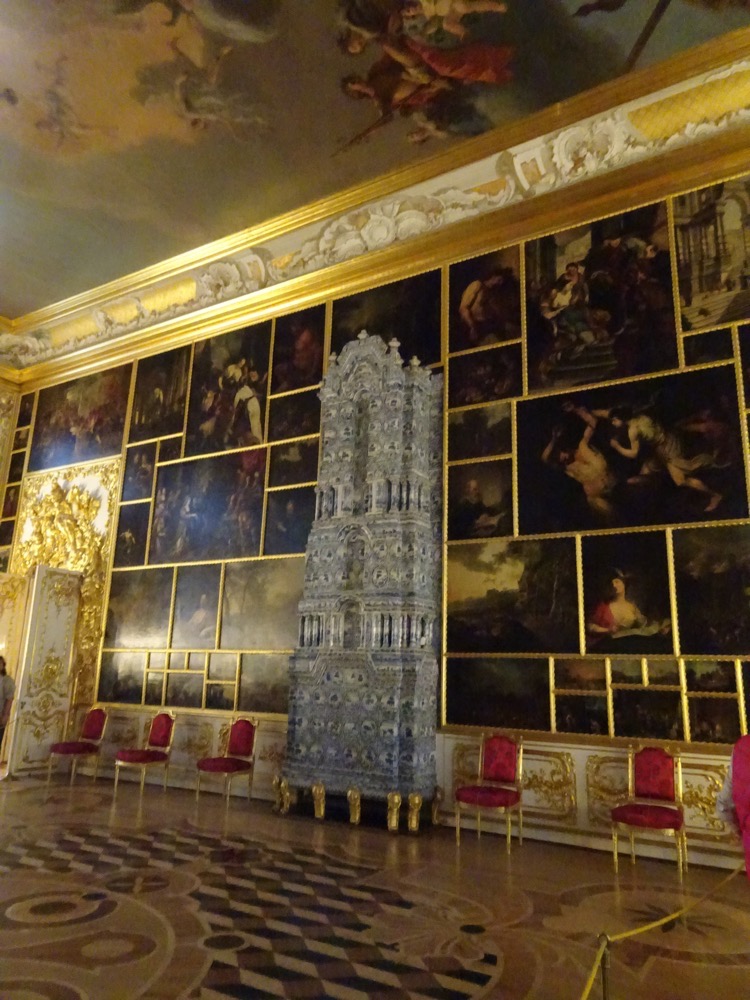
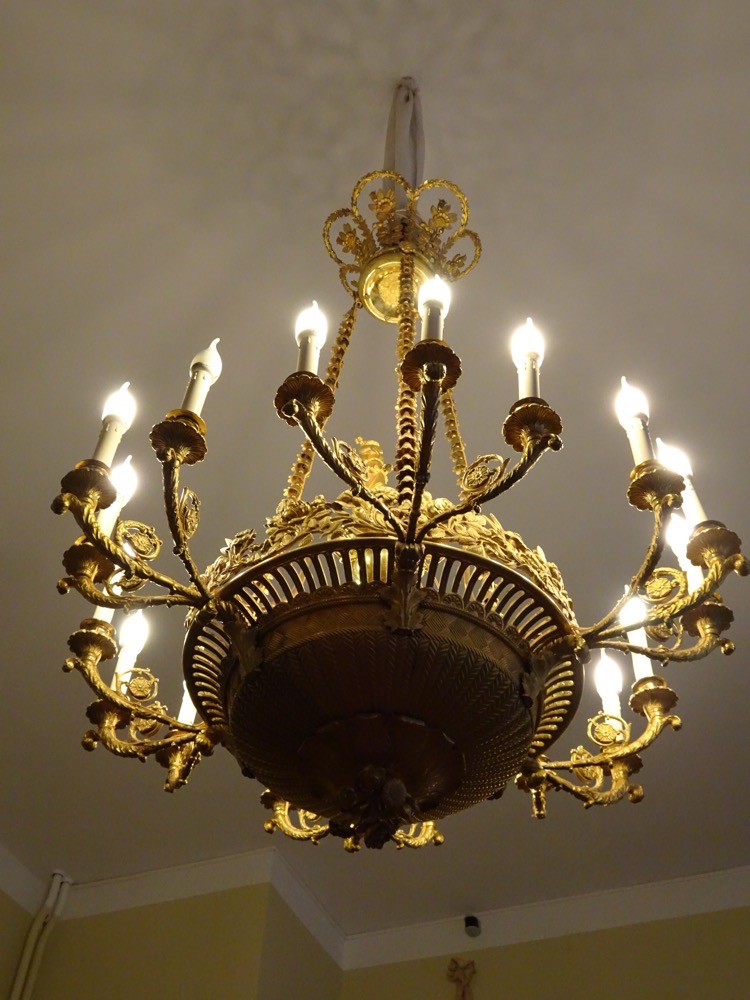 And this was Catherine II’s favourite room… she had a penchant for pastel green and light rose decor in a Wedgewood sort of style. You can see this colour scheme evident in many spaces that were dedicated to her use. Personally, I find it rather insipid…
And this was Catherine II’s favourite room… she had a penchant for pastel green and light rose decor in a Wedgewood sort of style. You can see this colour scheme evident in many spaces that were dedicated to her use. Personally, I find it rather insipid…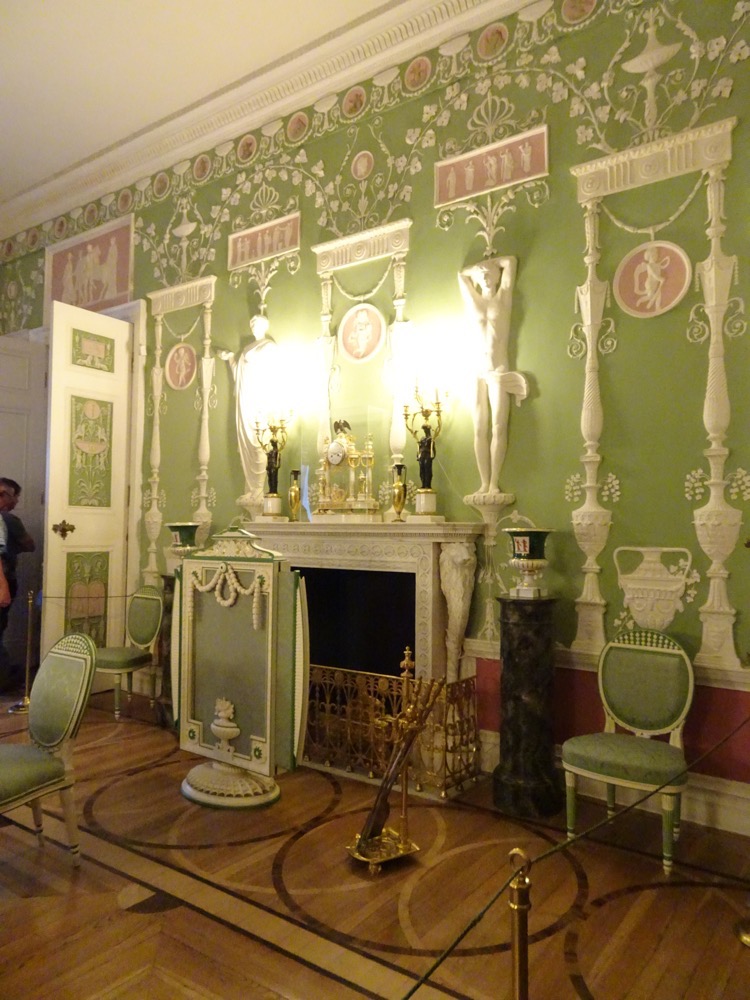
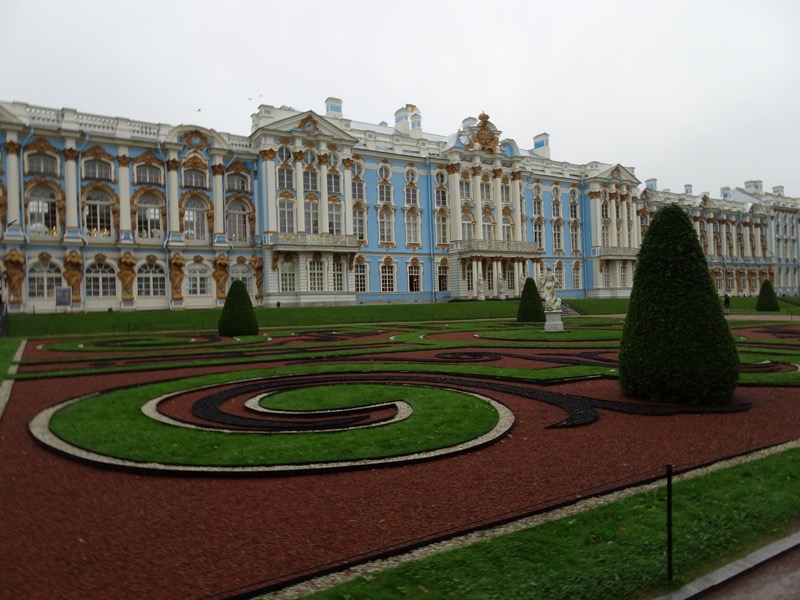
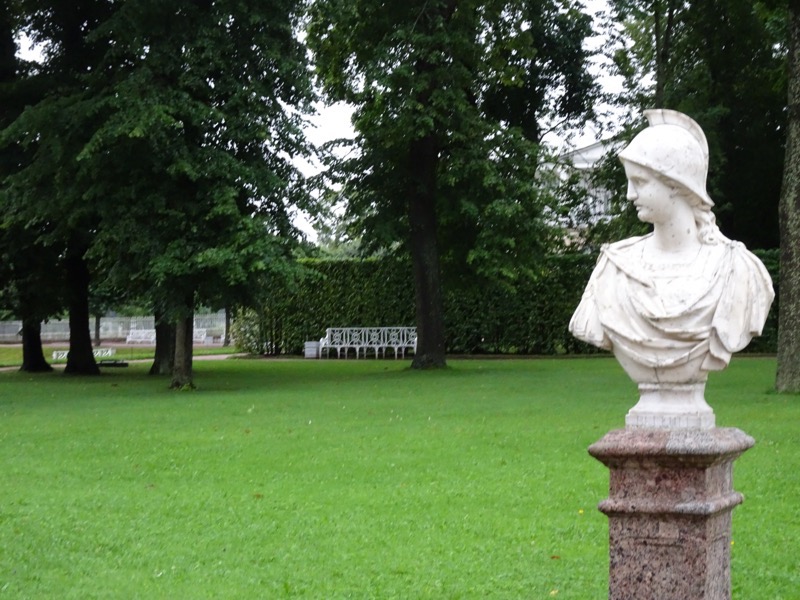
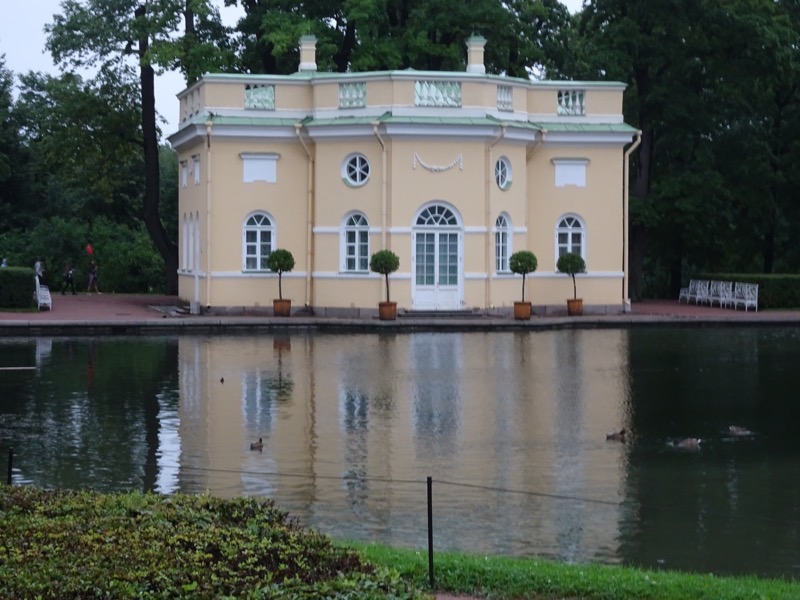
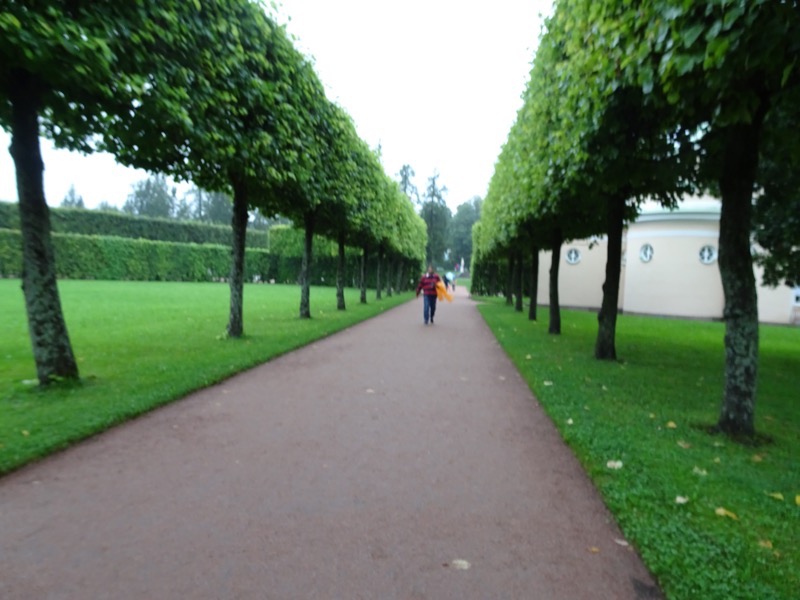
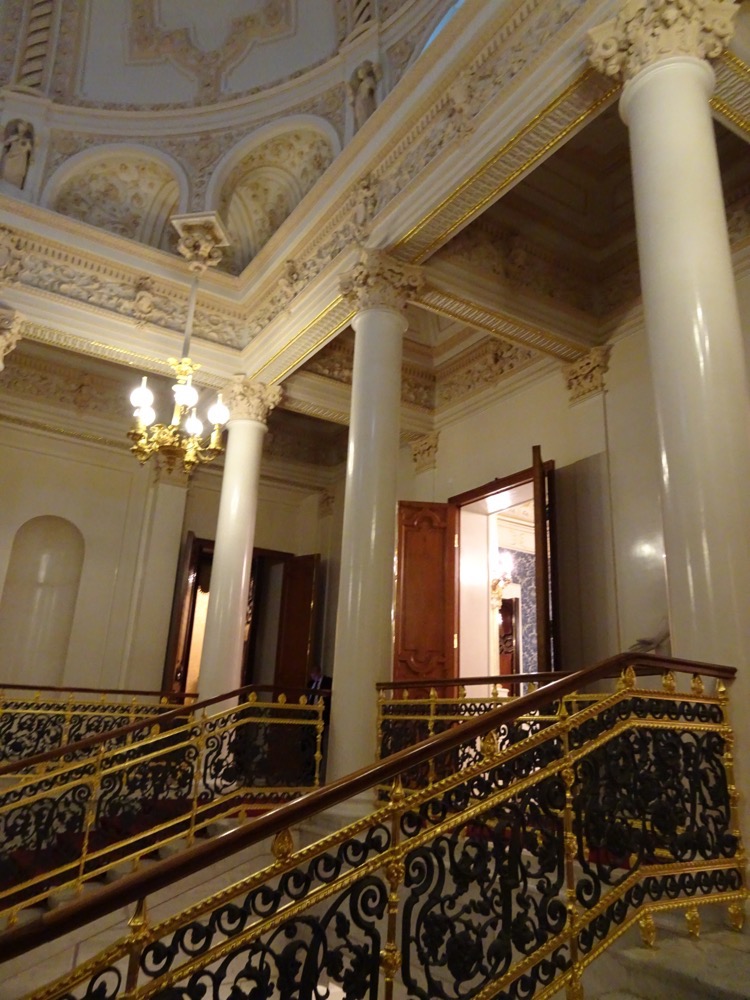 The Faberge Museum is a privately owened museum that was establised by Viktor Vekselberg’s Link of Times foundation, which attempst to repatriate lost cultural treasures to Russia. The musuem has been located in the middle of St Petersburg in a refurbished palce, called the Shuvalov Palace – I love that the city has so many run down or empty palaces that they can just appropriate an amazing building like this and turn it into a museum! The Shuvalov Palace is on the embankment of the Fontanka River and has only been renovated in the last five years or so – it now contains a fabulous collection of more than 4,000 decorative arts objects, including gold and silver items, porcelain, paintings, bronze ware and so many many beautiful things. The centrepiece of the collection is the Imperial Easter Eggs created by Faberge for the last two Russian Tsars.
The Faberge Museum is a privately owened museum that was establised by Viktor Vekselberg’s Link of Times foundation, which attempst to repatriate lost cultural treasures to Russia. The musuem has been located in the middle of St Petersburg in a refurbished palce, called the Shuvalov Palace – I love that the city has so many run down or empty palaces that they can just appropriate an amazing building like this and turn it into a museum! The Shuvalov Palace is on the embankment of the Fontanka River and has only been renovated in the last five years or so – it now contains a fabulous collection of more than 4,000 decorative arts objects, including gold and silver items, porcelain, paintings, bronze ware and so many many beautiful things. The centrepiece of the collection is the Imperial Easter Eggs created by Faberge for the last two Russian Tsars.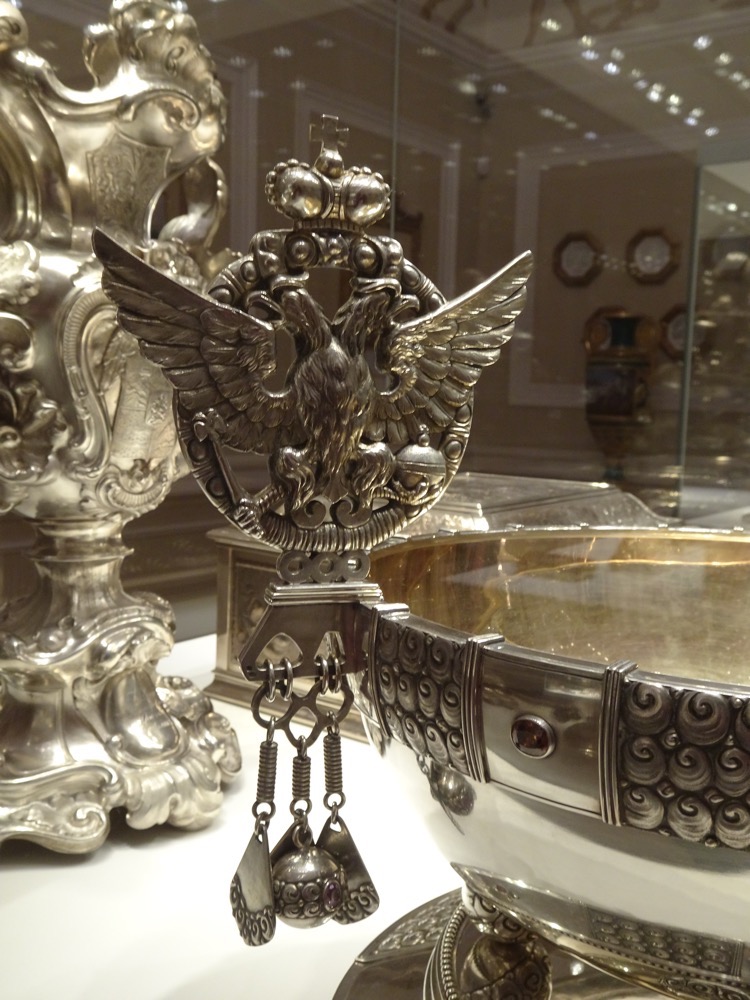
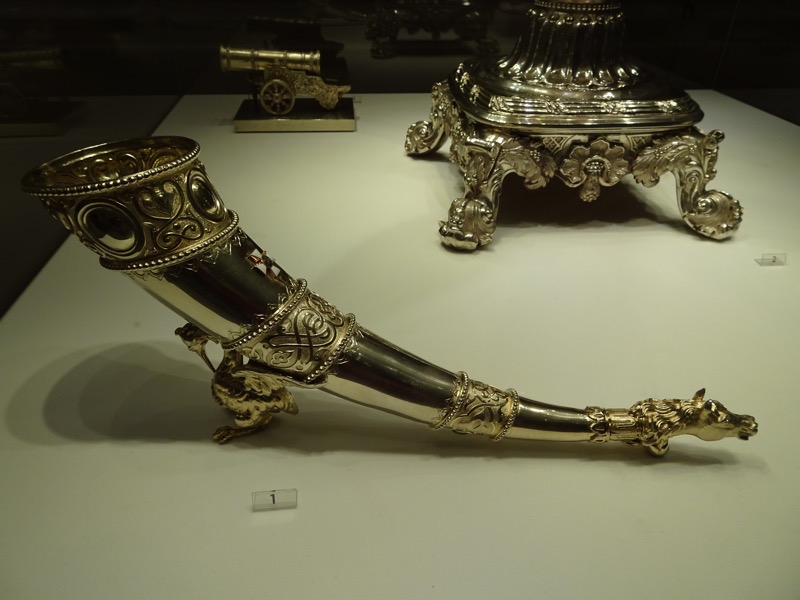
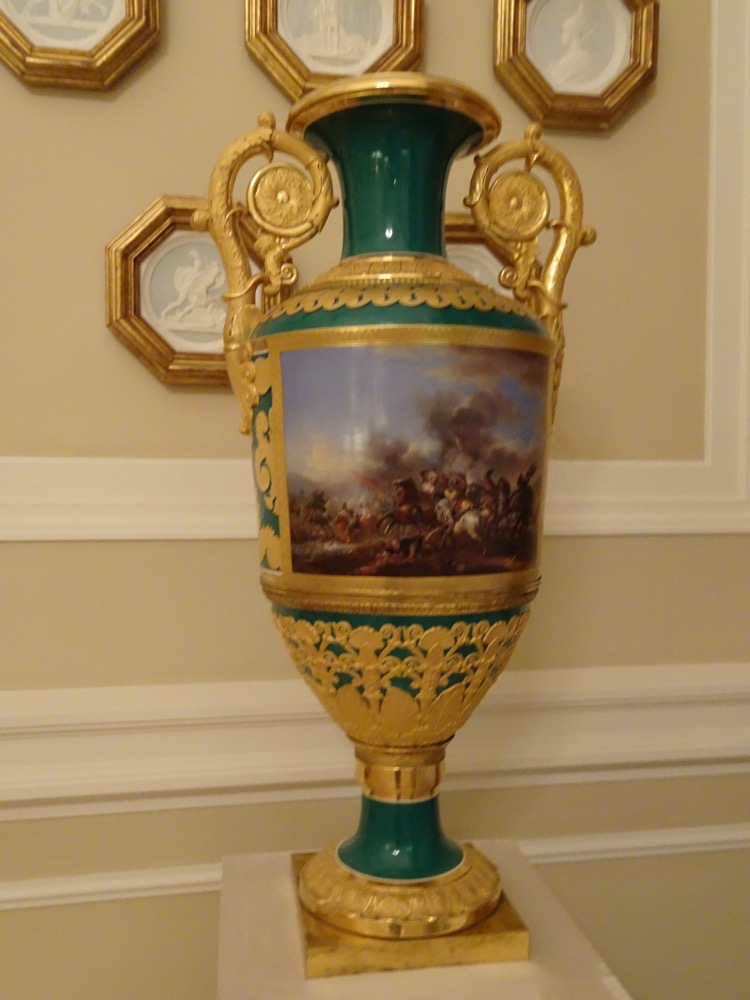 19th century model of the Tsar’s Canon that we saw in Moscow at the Kremlin.
19th century model of the Tsar’s Canon that we saw in Moscow at the Kremlin.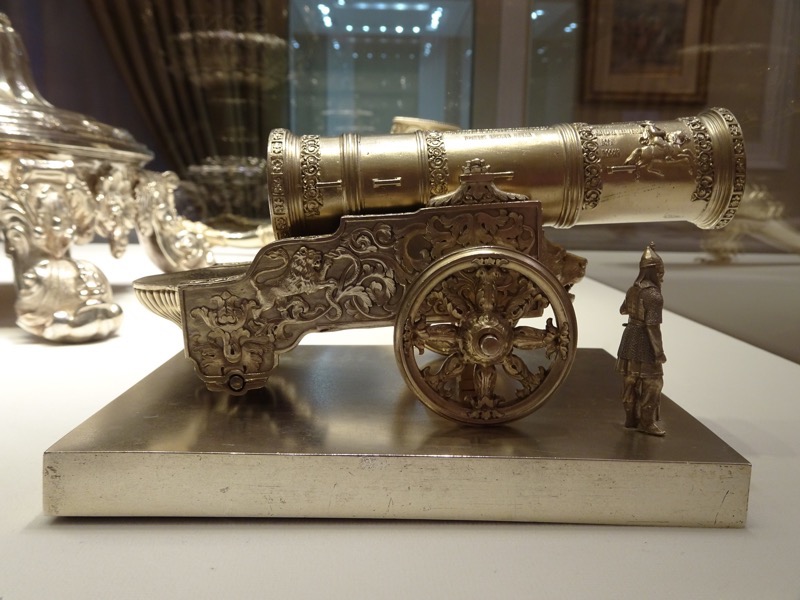
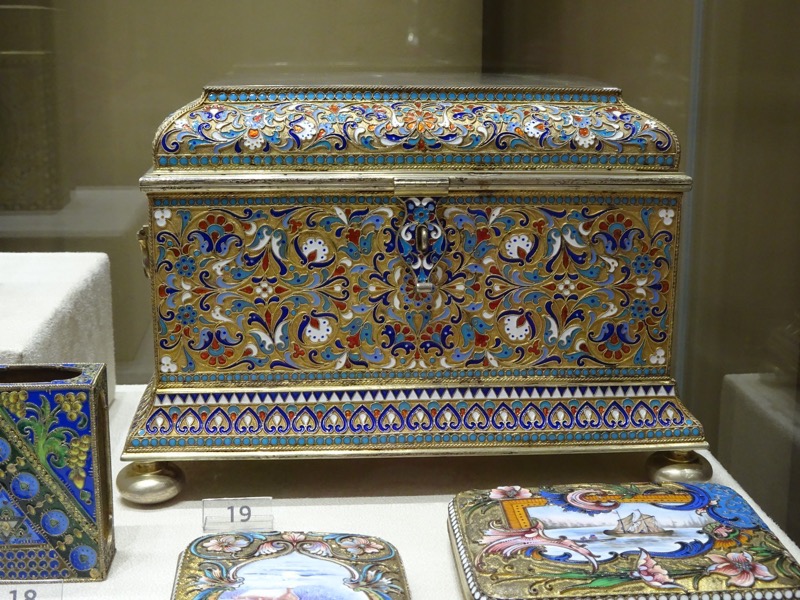 Beautiful 18th – 19th century enamel pieces filled cabinet after cabinet.
Beautiful 18th – 19th century enamel pieces filled cabinet after cabinet.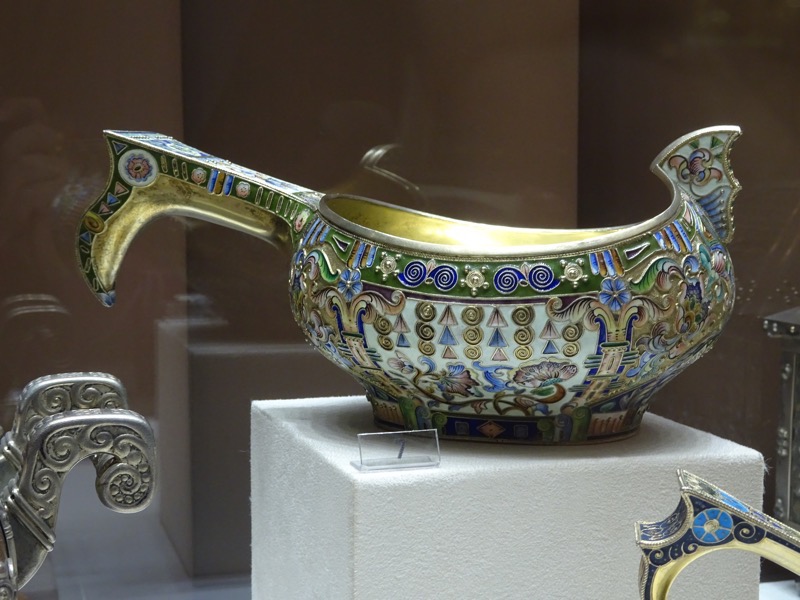
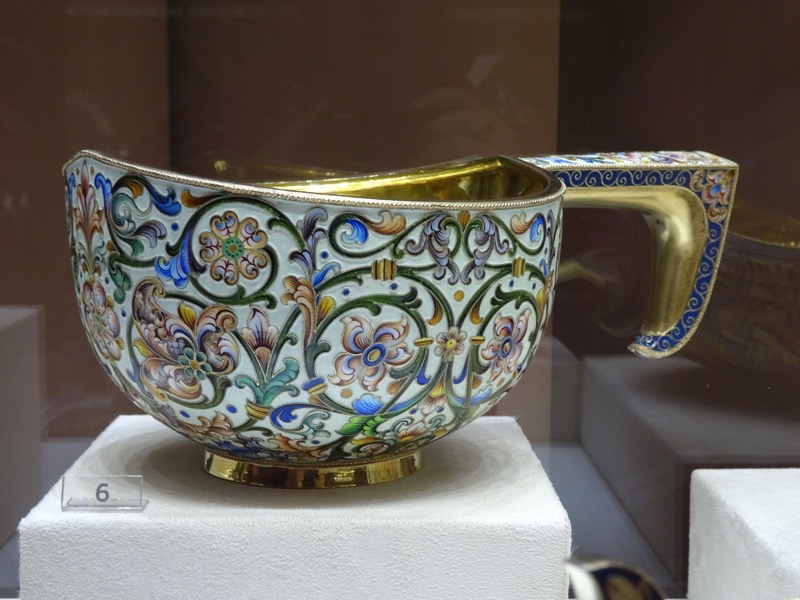
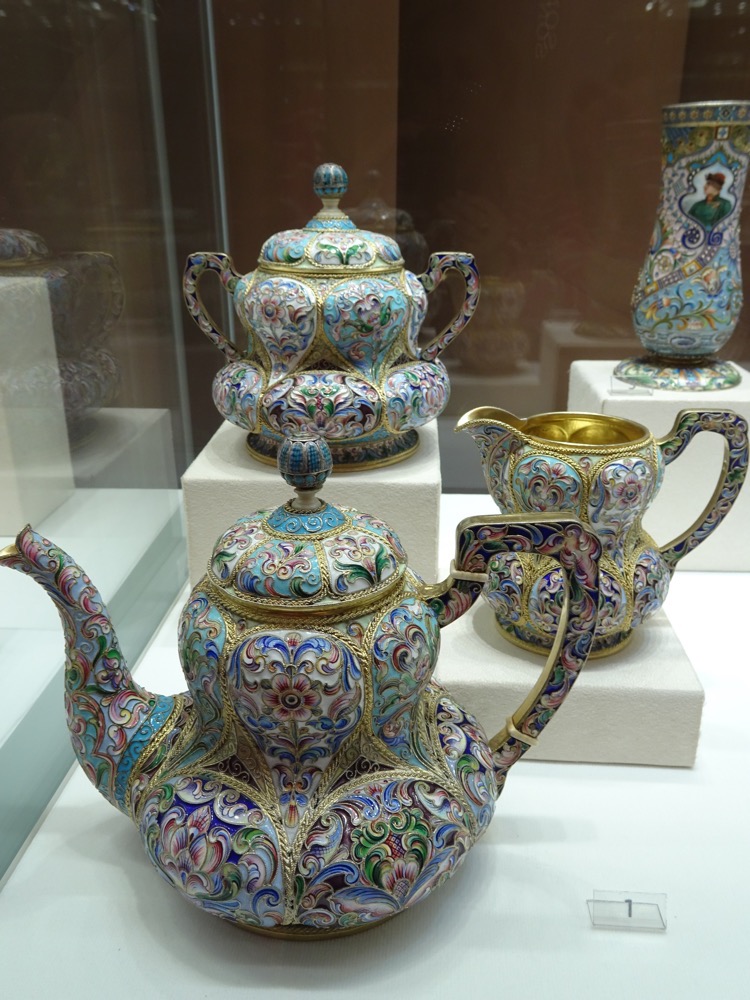 A card holder designed to hold visiting cards, displaying the imperial arms.
A card holder designed to hold visiting cards, displaying the imperial arms.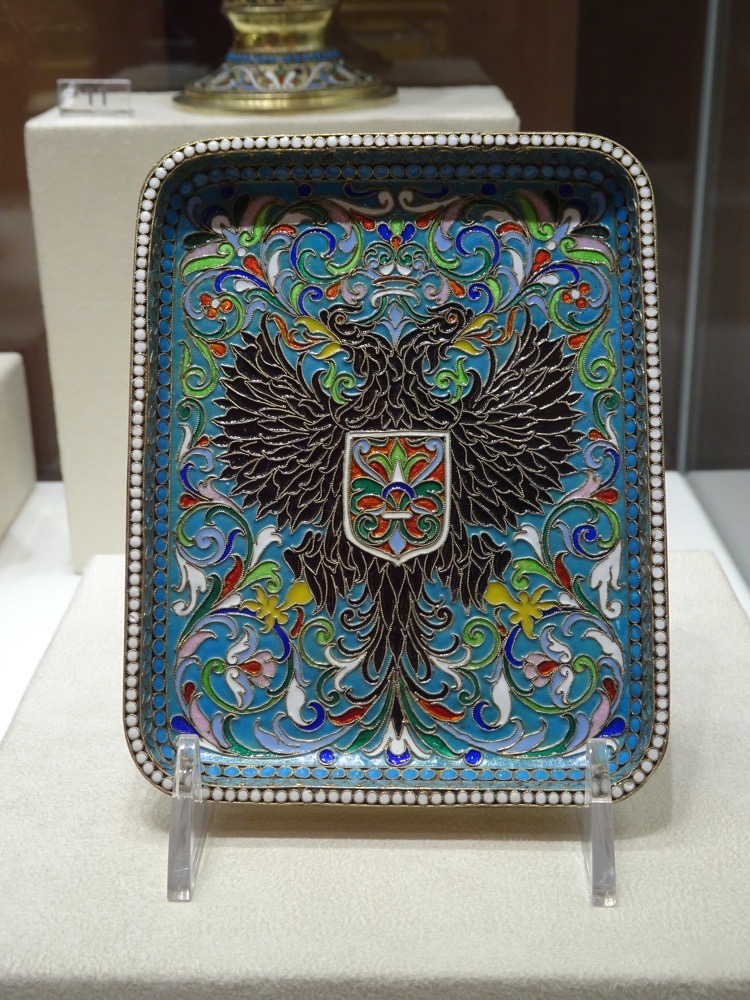
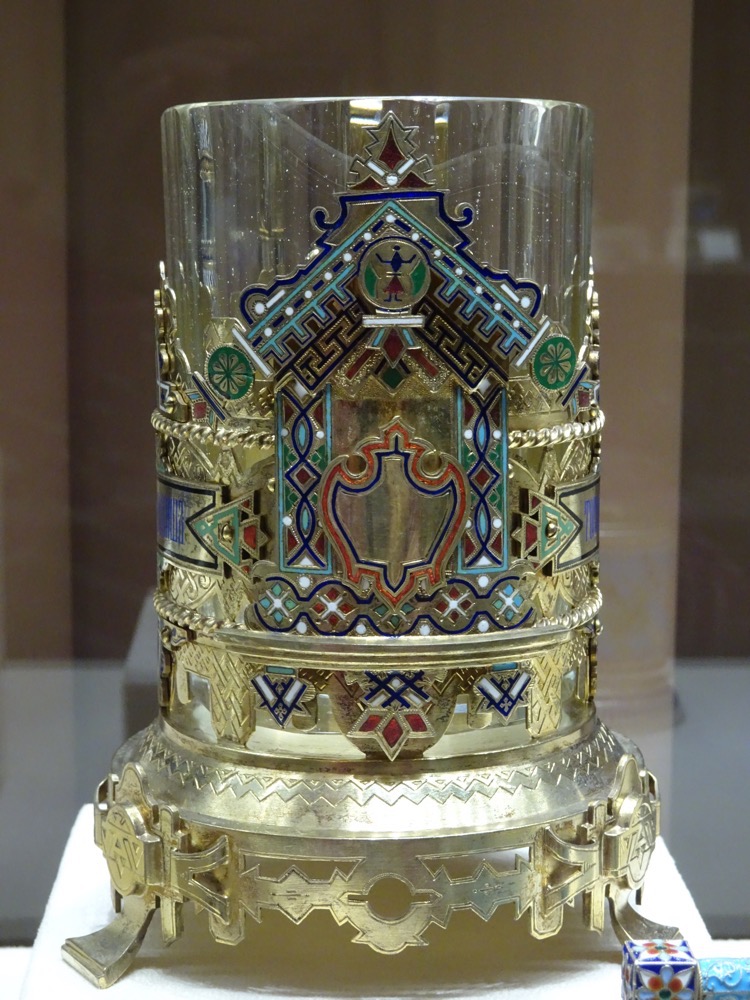
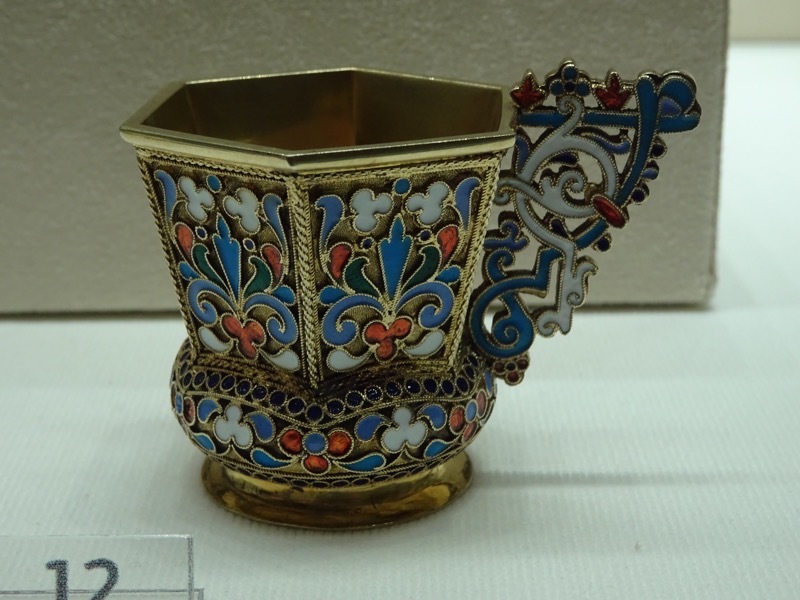 Tea/coffee set.
Tea/coffee set.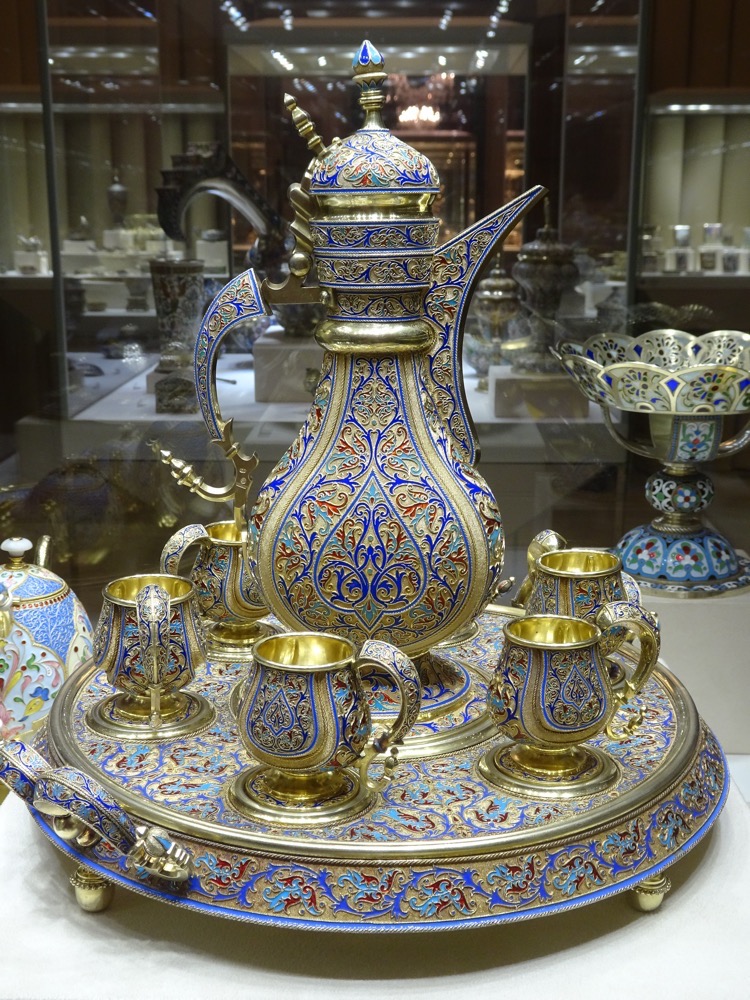
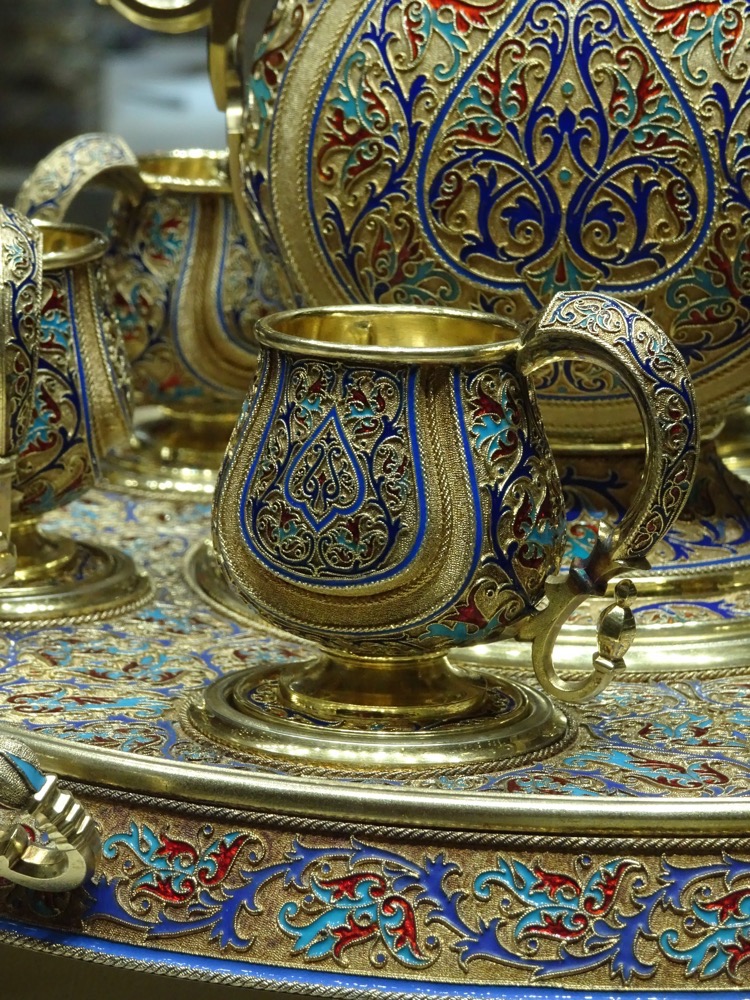
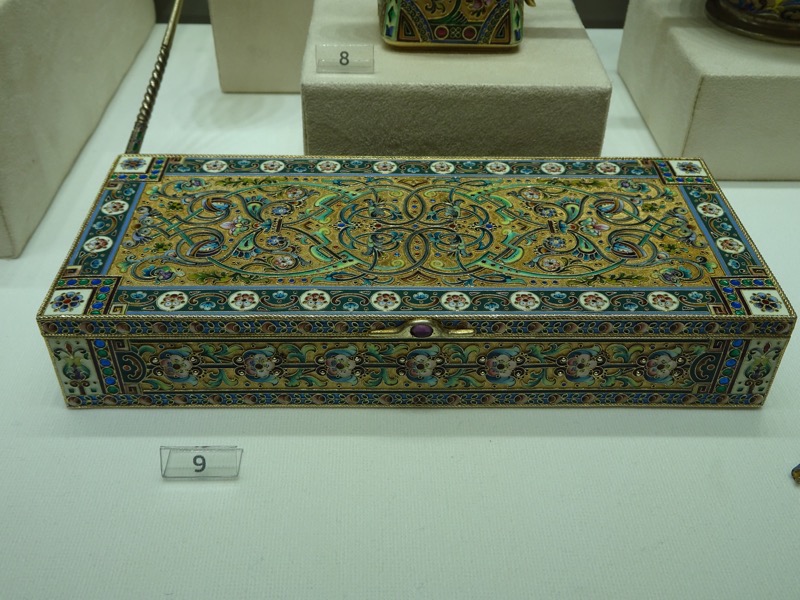
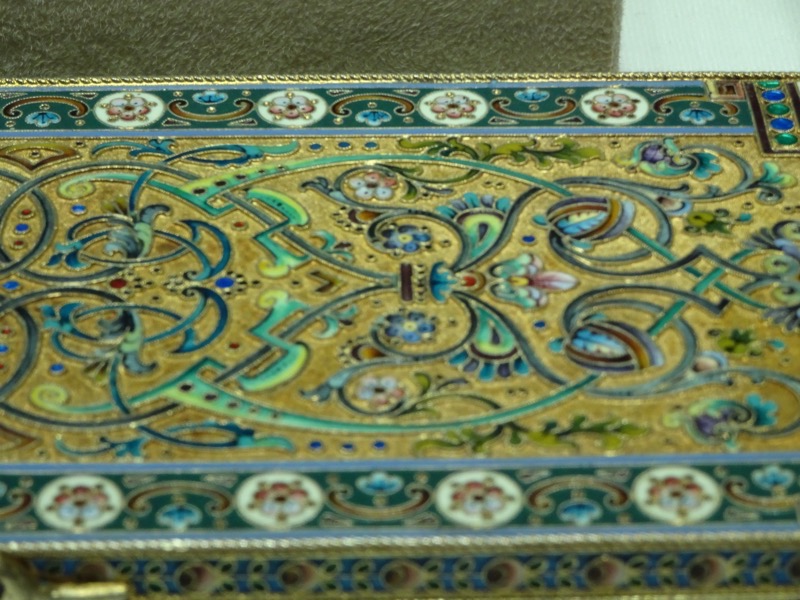 This item appealed to me a great deal – anyone interested in decorative arts would recognise this design as appearing on marble/stone work in places like Athens, Pompeii and Ephesus, though to art nouveau pieces, to the edging on the carpet in my dining room! It is a truly classical design motif that has been continuously replicated through the ages.
This item appealed to me a great deal – anyone interested in decorative arts would recognise this design as appearing on marble/stone work in places like Athens, Pompeii and Ephesus, though to art nouveau pieces, to the edging on the carpet in my dining room! It is a truly classical design motif that has been continuously replicated through the ages.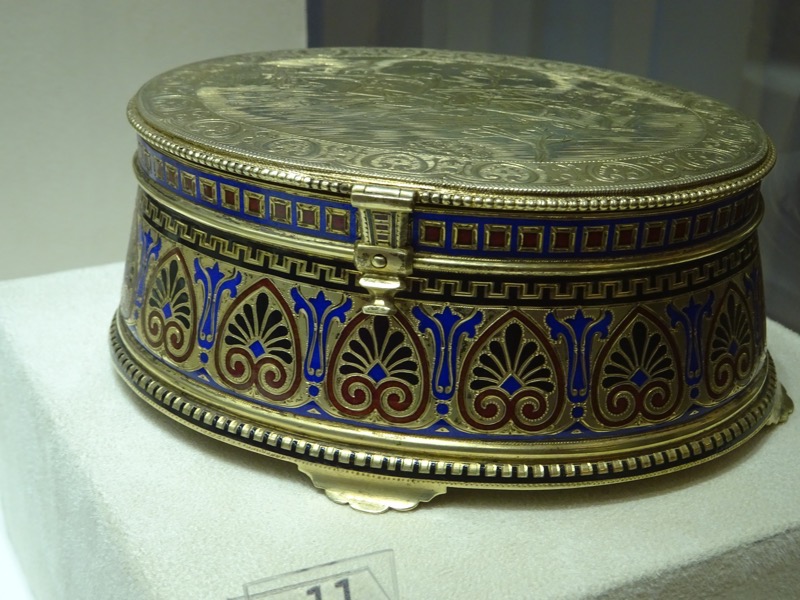 Imperial design on a tea spoon.
Imperial design on a tea spoon.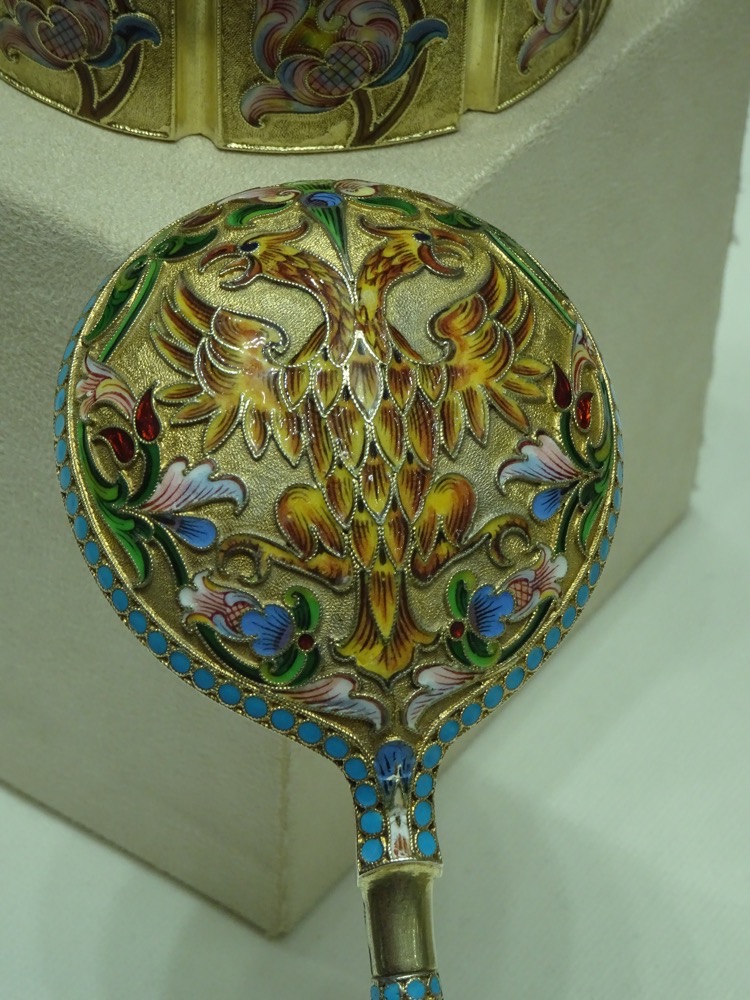
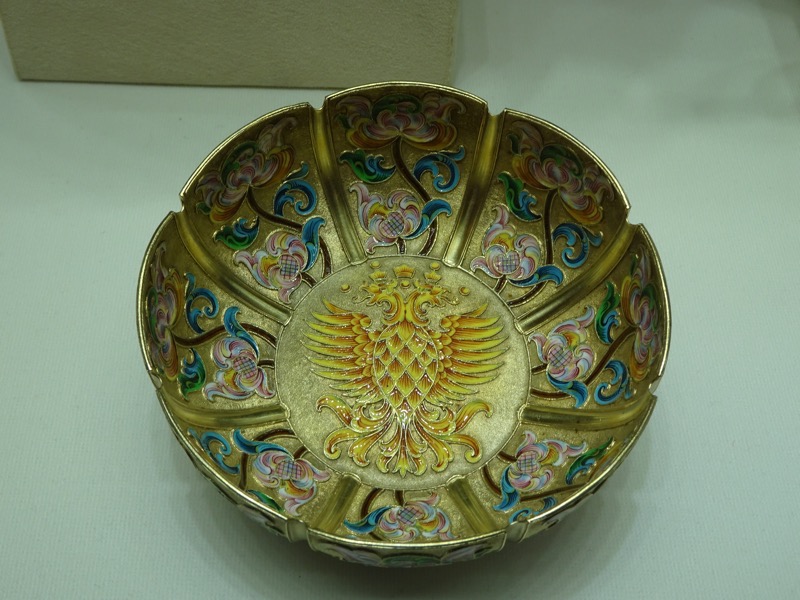 Punchbowl.
Punchbowl.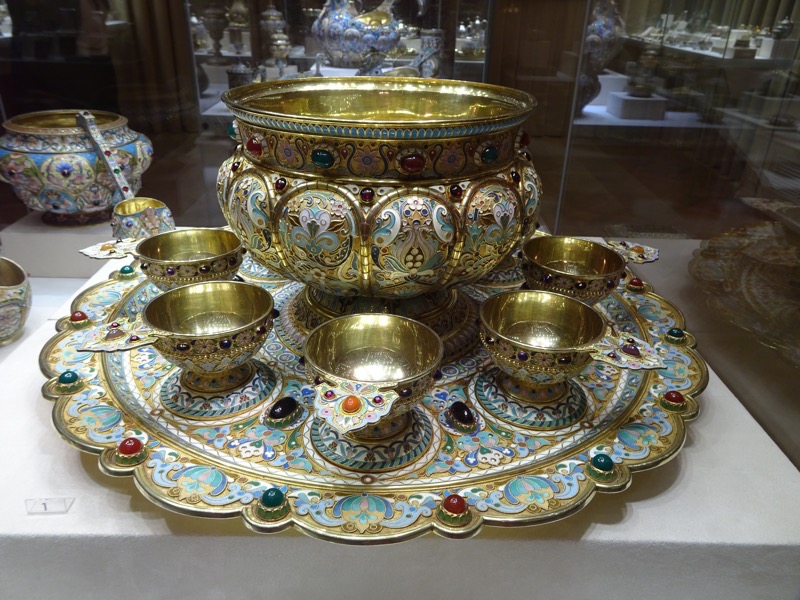
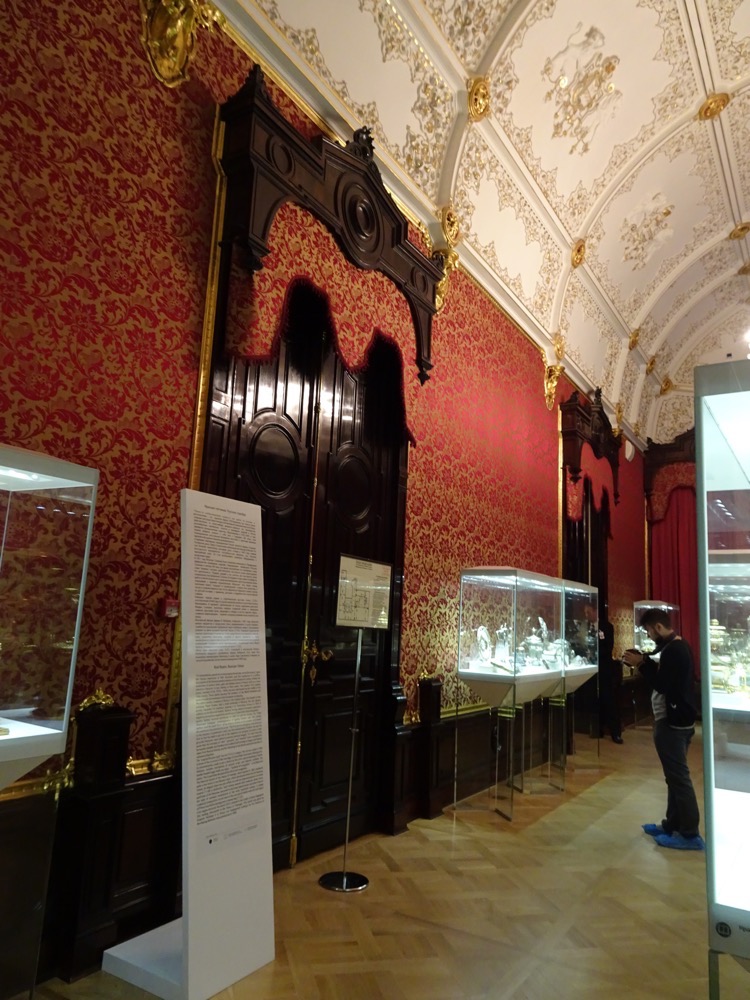 The Red Drawing Room in the palace, with it’s beautiful silk damask wallpaper!
The Red Drawing Room in the palace, with it’s beautiful silk damask wallpaper!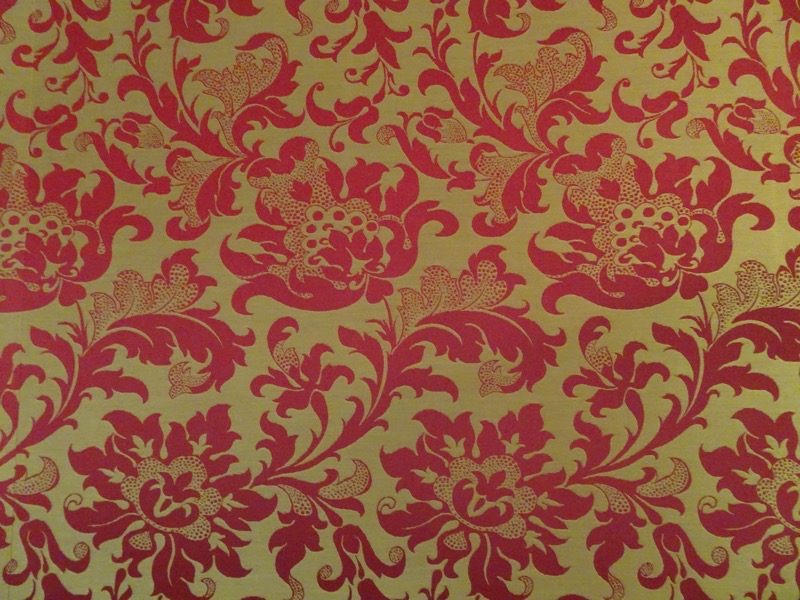
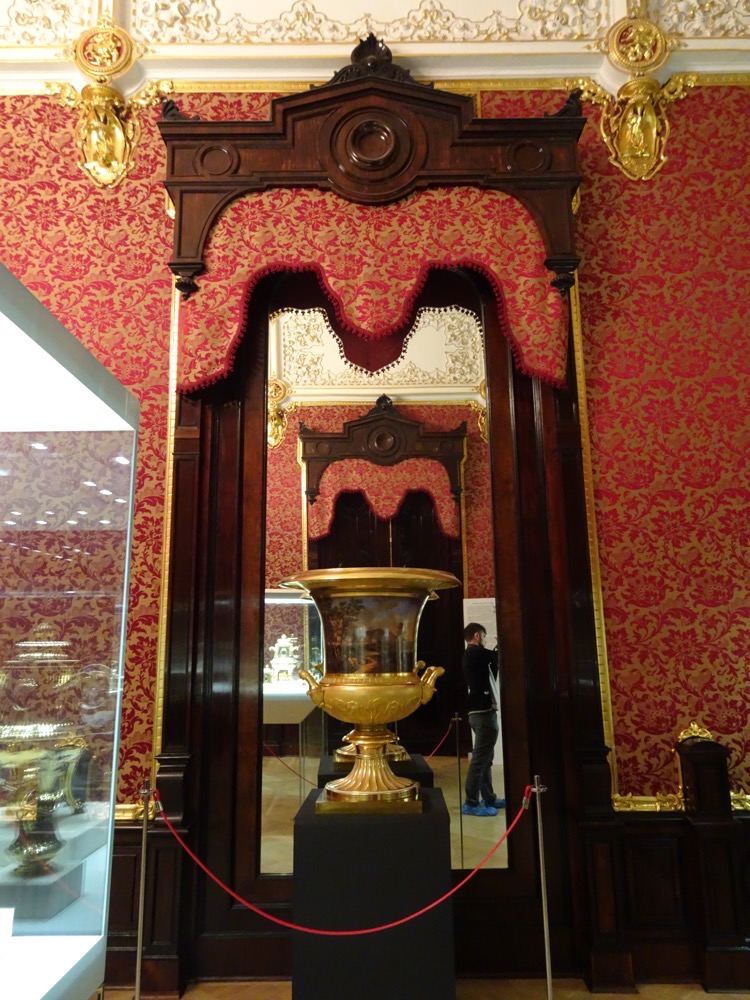
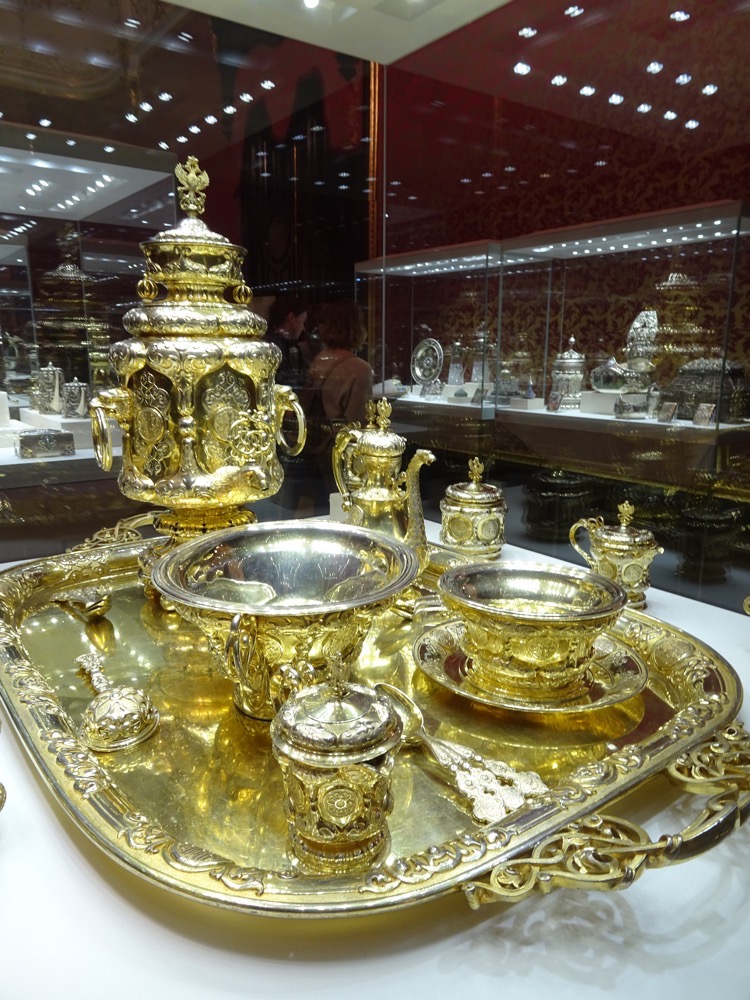 Malachite was a favoured material during the time of the Romanov Family.
Malachite was a favoured material during the time of the Romanov Family.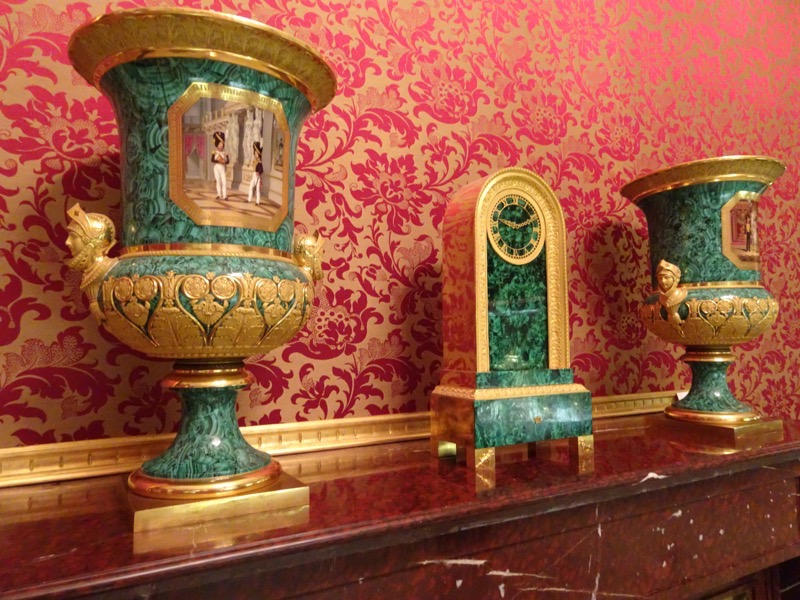
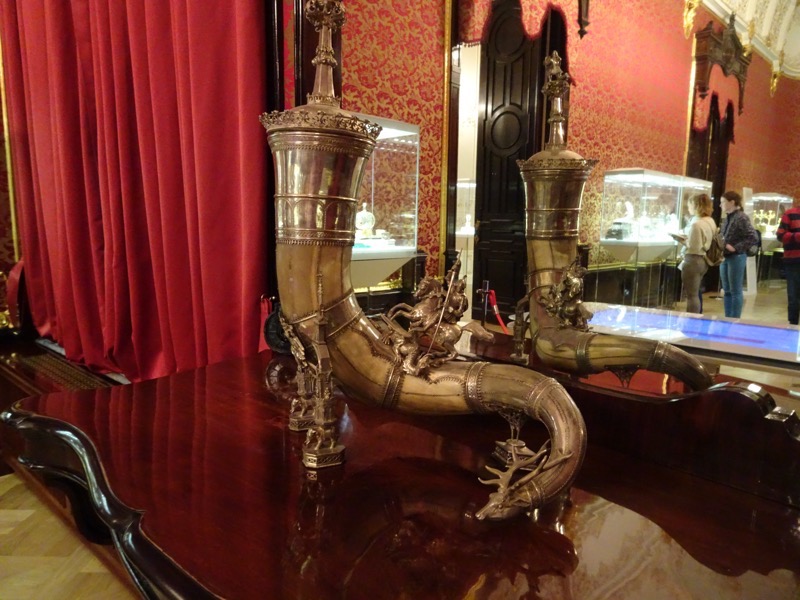 Crazy huge drinking horn adorned by St George slaying a dragon.
Crazy huge drinking horn adorned by St George slaying a dragon.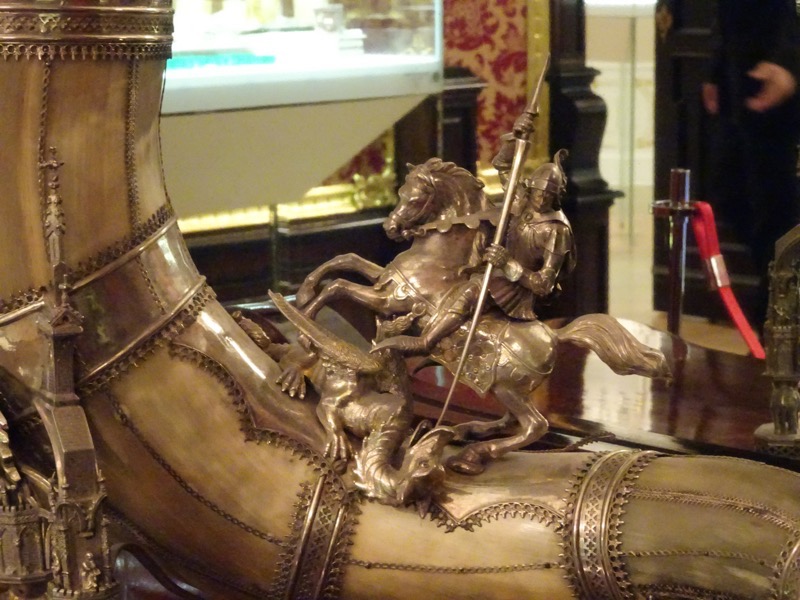
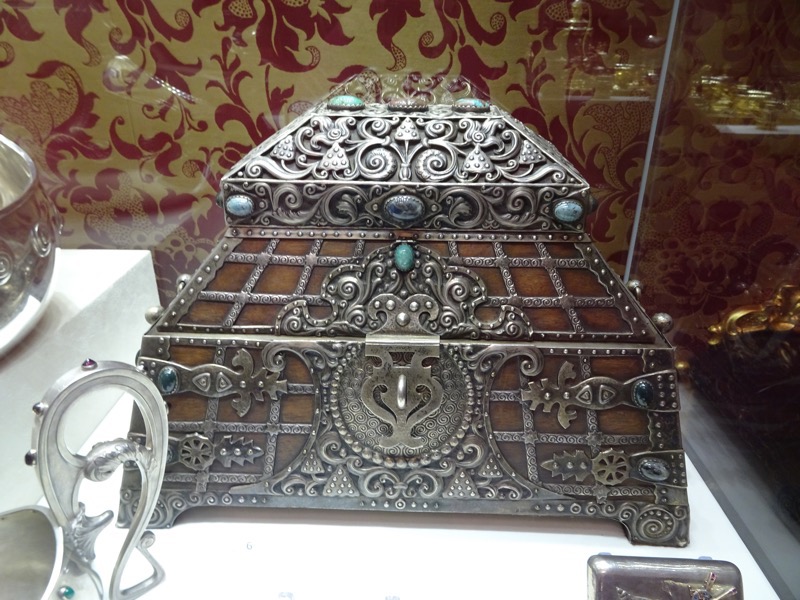 Detail in the restoration – gold filigree work added around the wallpaper.
Detail in the restoration – gold filigree work added around the wallpaper.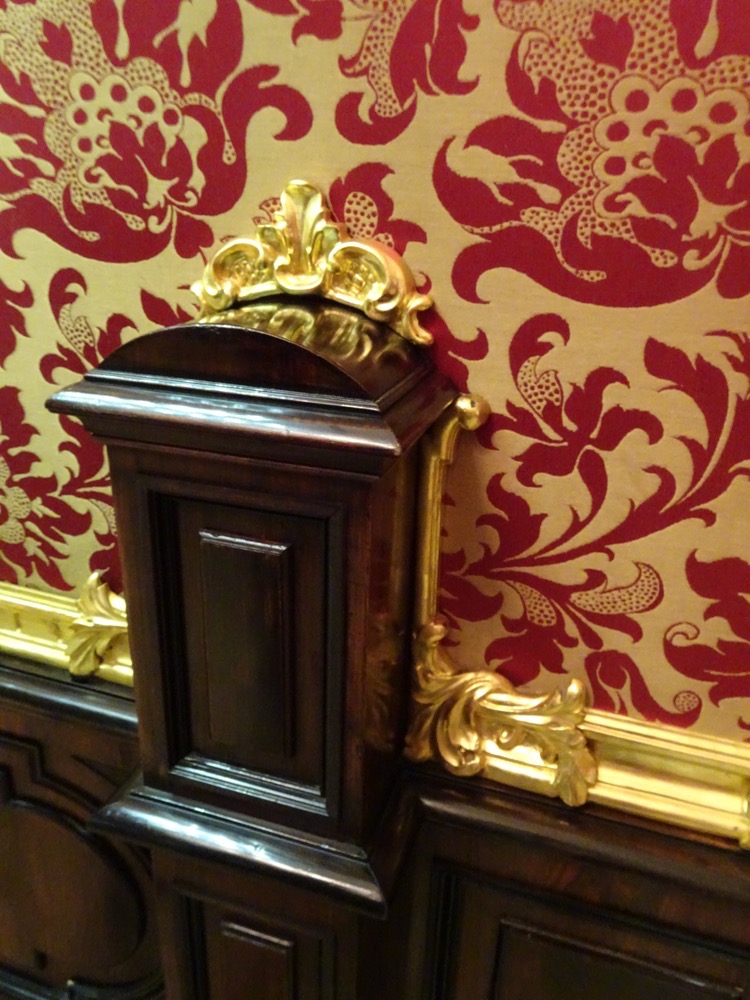 The Blue Drawing Room which houses most of the Imperial Faberge Egg collection.
The Blue Drawing Room which houses most of the Imperial Faberge Egg collection.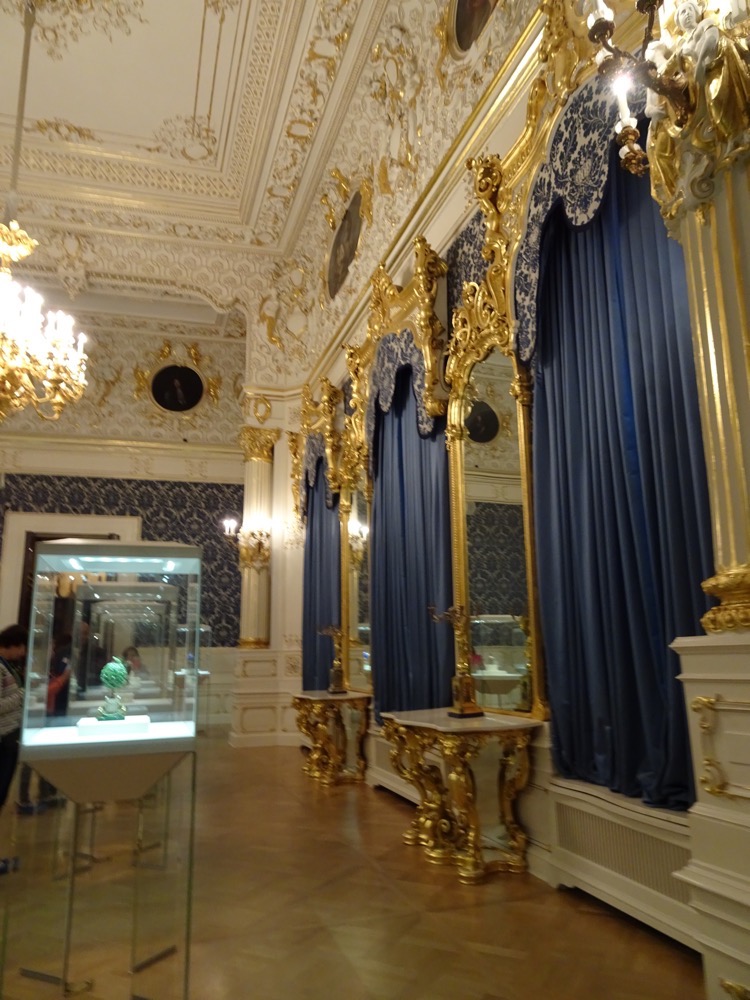 The Order of St George Egg.
The Order of St George Egg.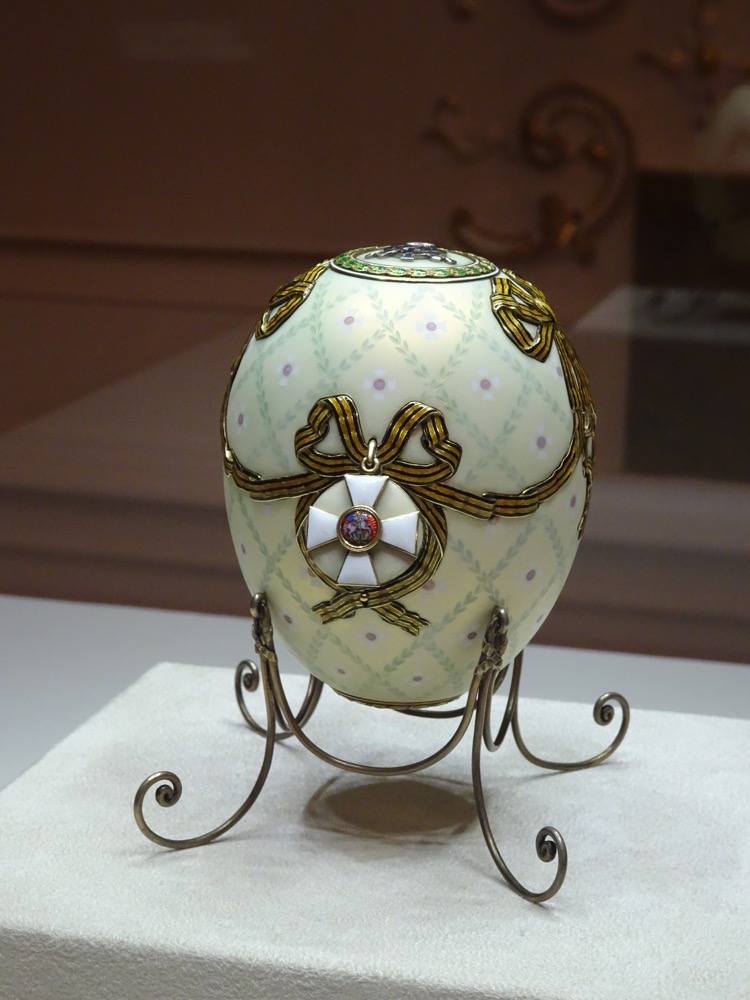 The lovely blue silk damask wallpaper design…
The lovely blue silk damask wallpaper design…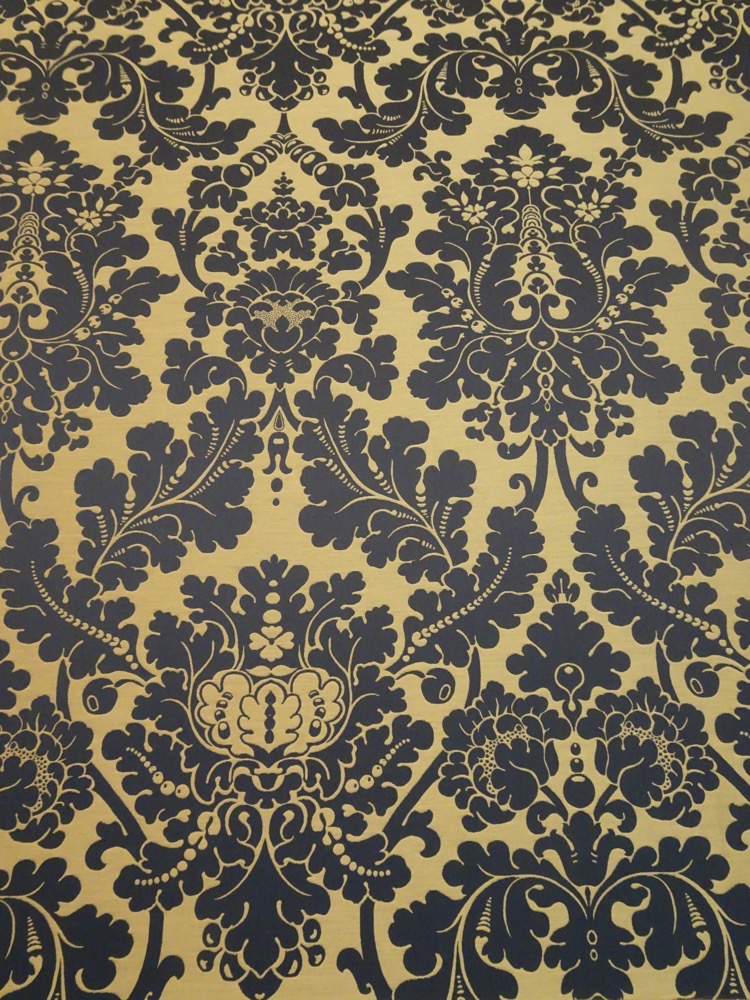 The ceiling in the Blue Drawing Room.
The ceiling in the Blue Drawing Room.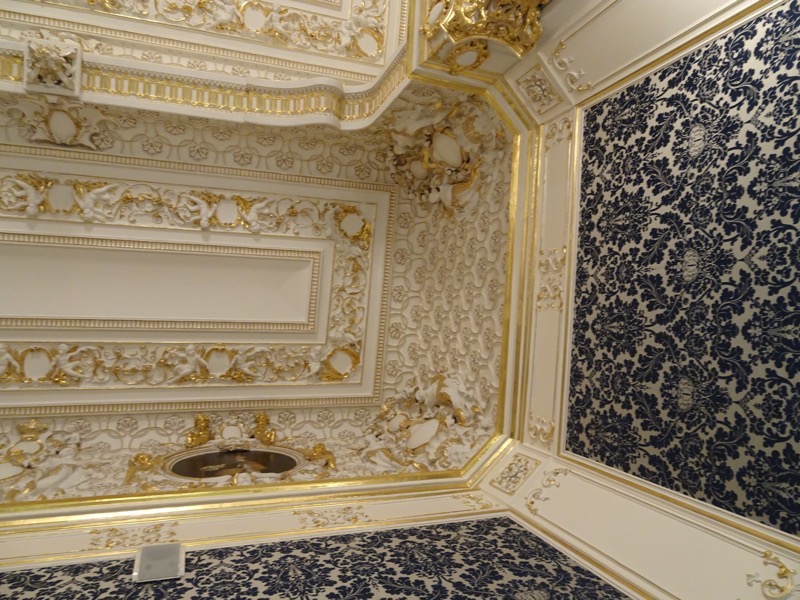 The Duchess of Marlborough Egg, which is also a clock.
The Duchess of Marlborough Egg, which is also a clock.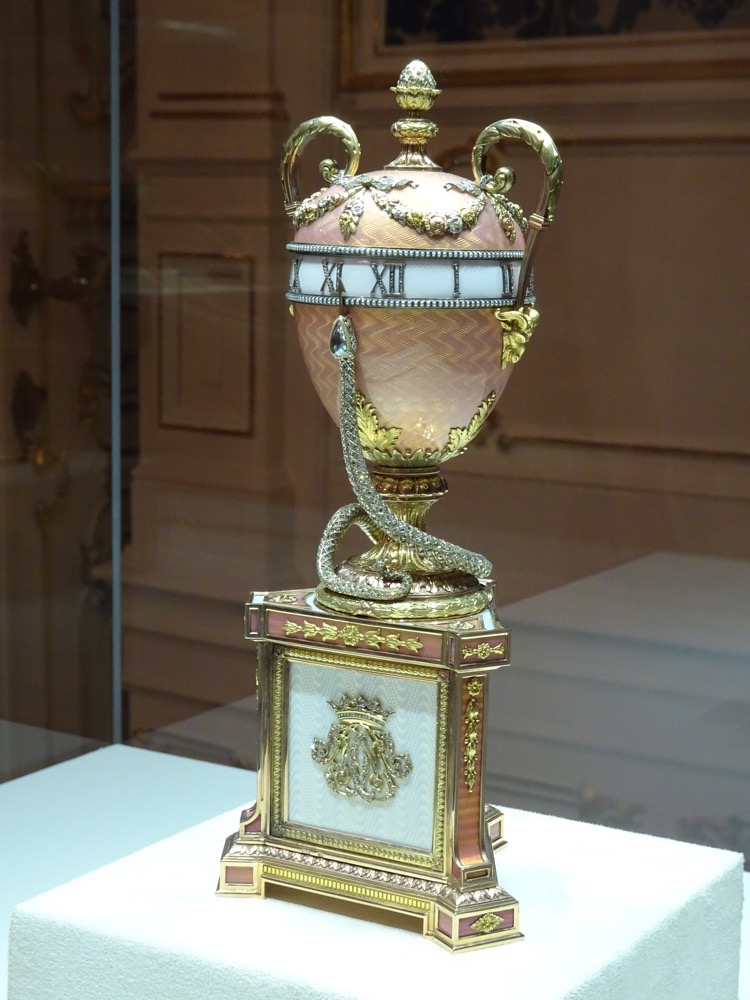
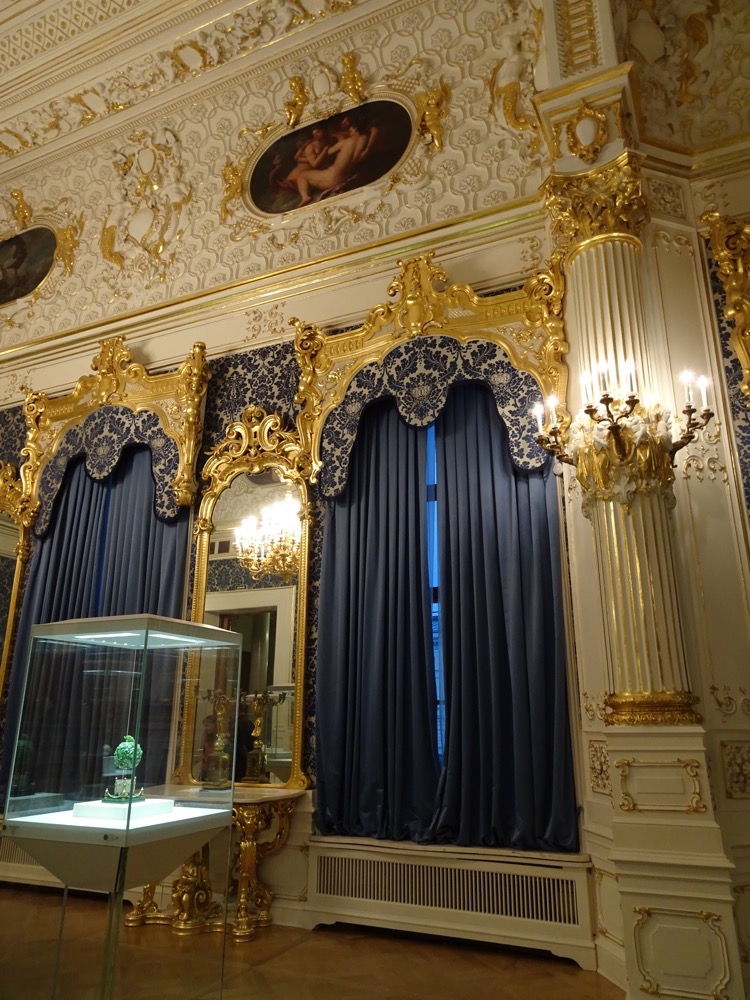 Bay Tree Egg.
Bay Tree Egg.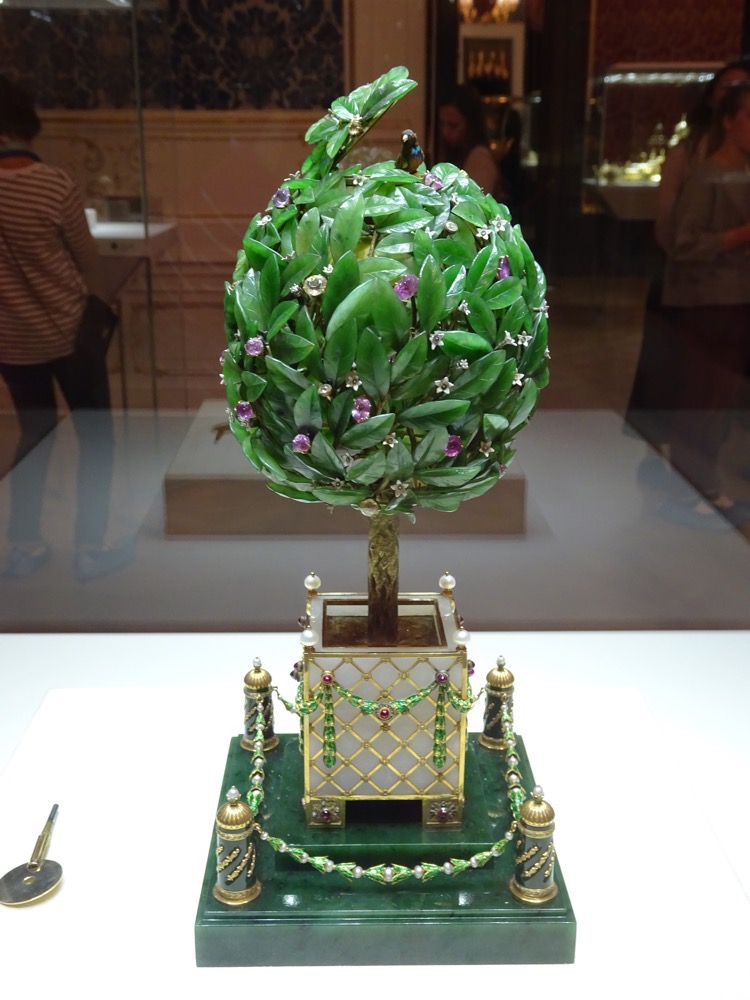
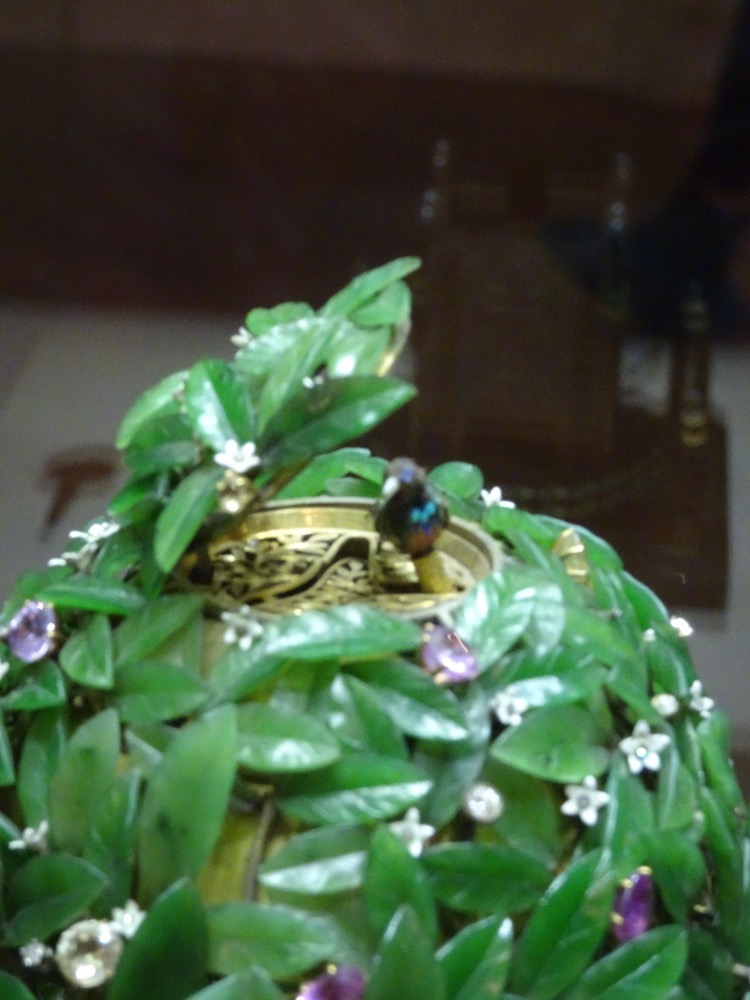 Fifteenth Anniversary Egg.
Fifteenth Anniversary Egg.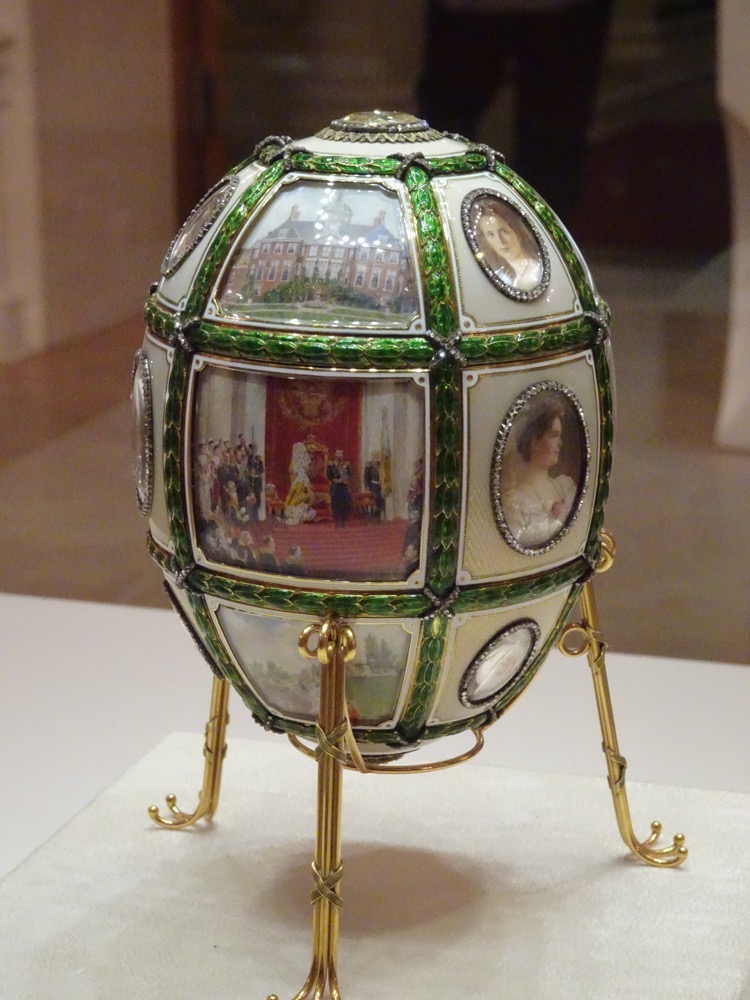
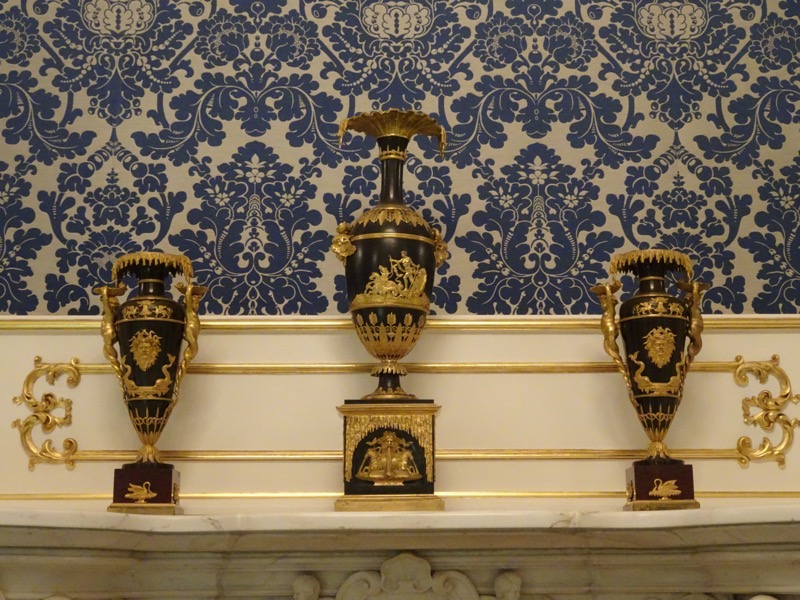 The Renaissance Egg
The Renaissance Egg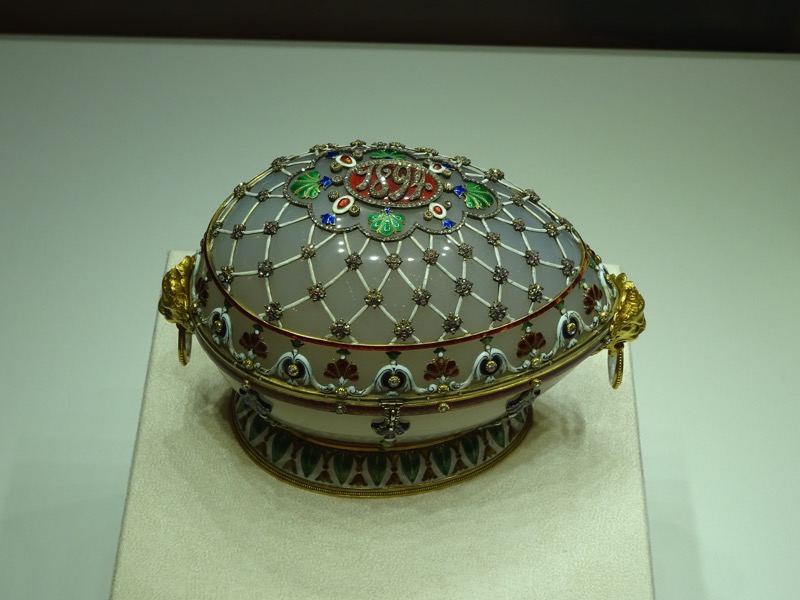
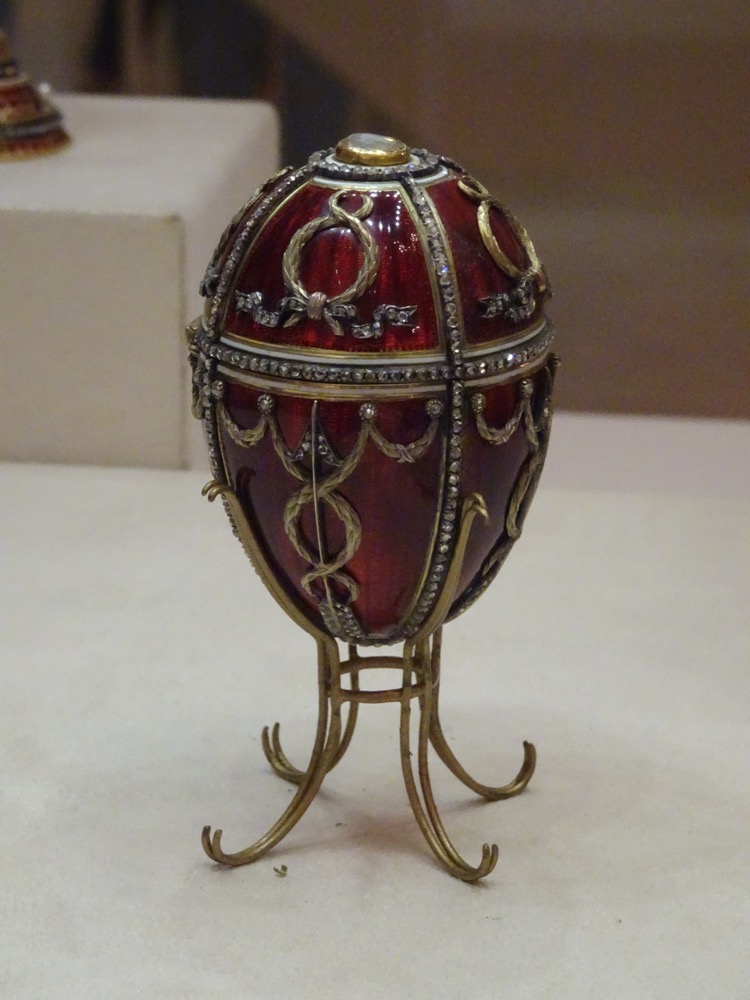 Keith Chanticleer Egg.
Keith Chanticleer Egg.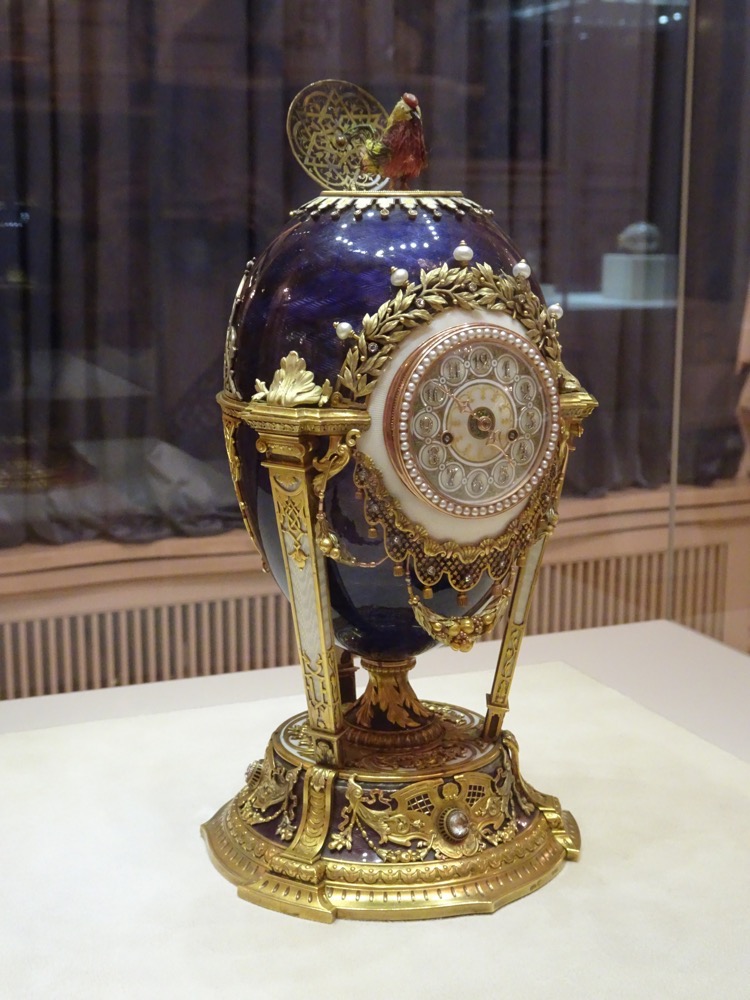
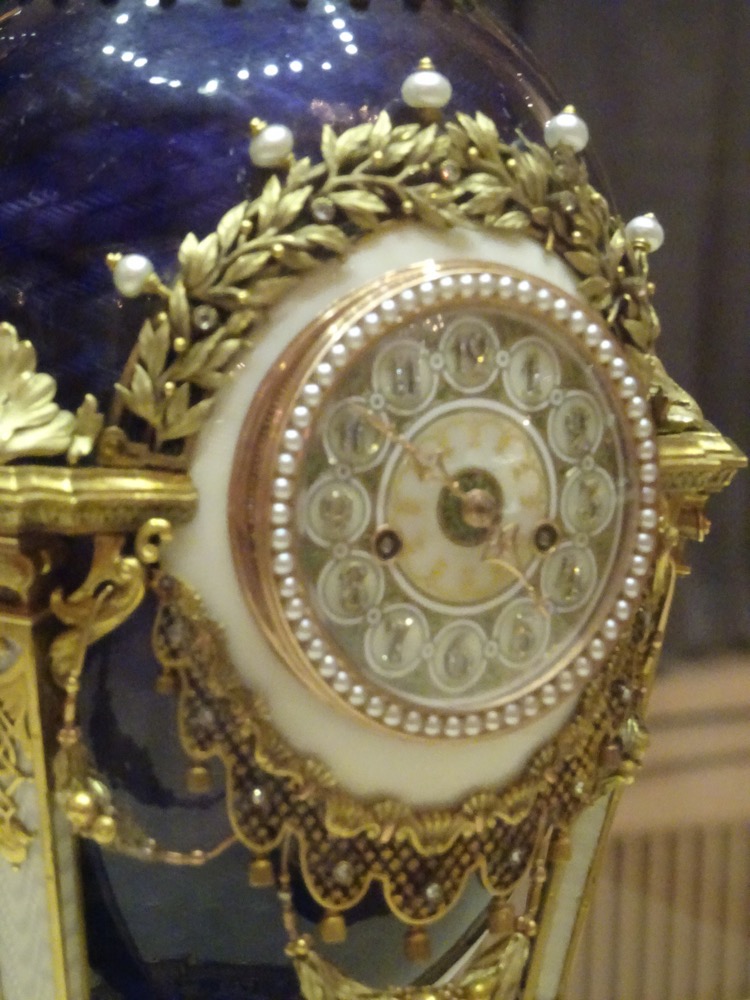 Lillies of the Valley Egg.
Lillies of the Valley Egg.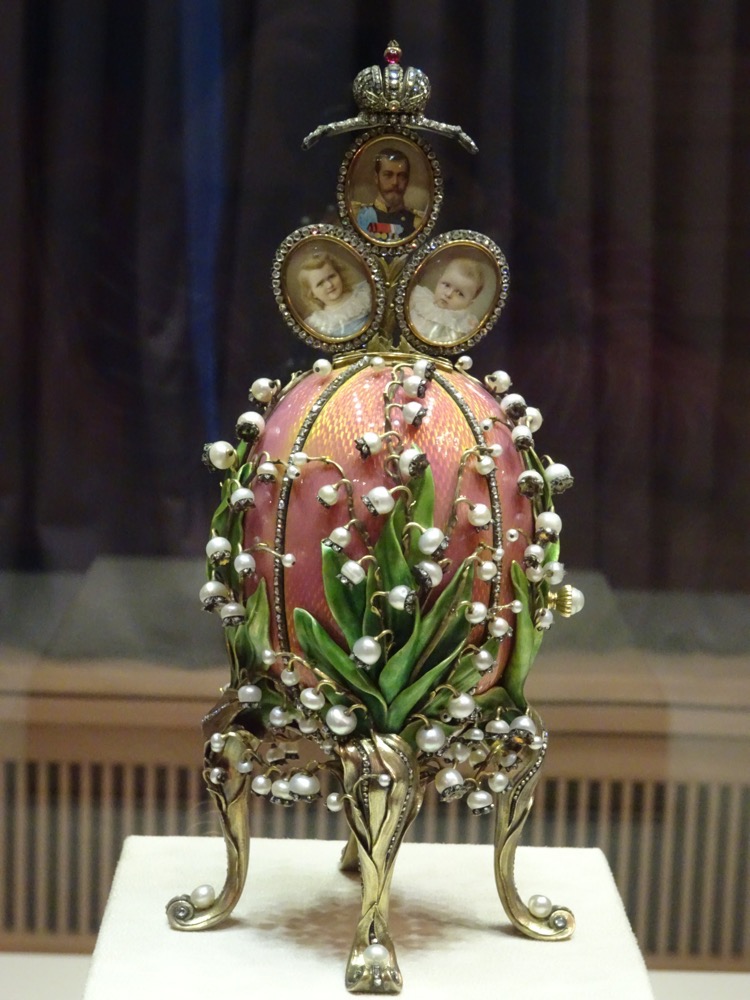 Carriage of the …
Carriage of the …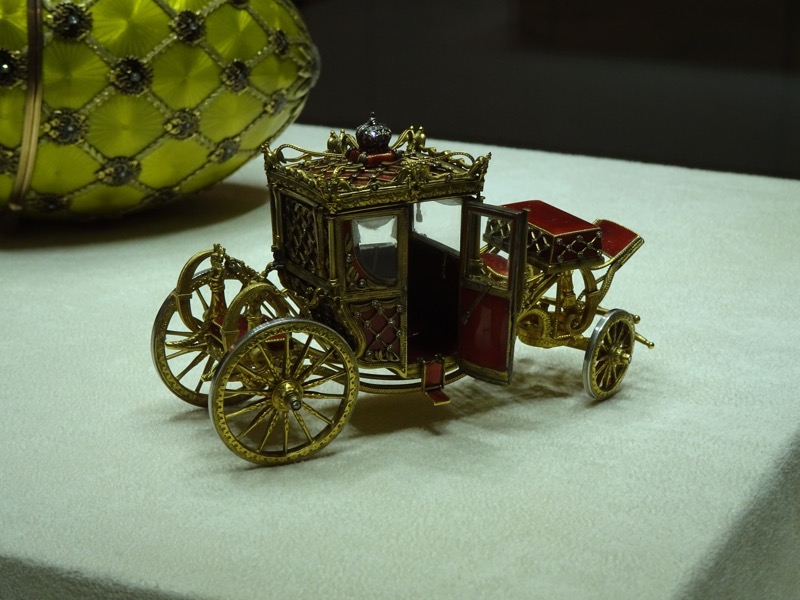 … Coronation Egg.
… Coronation Egg.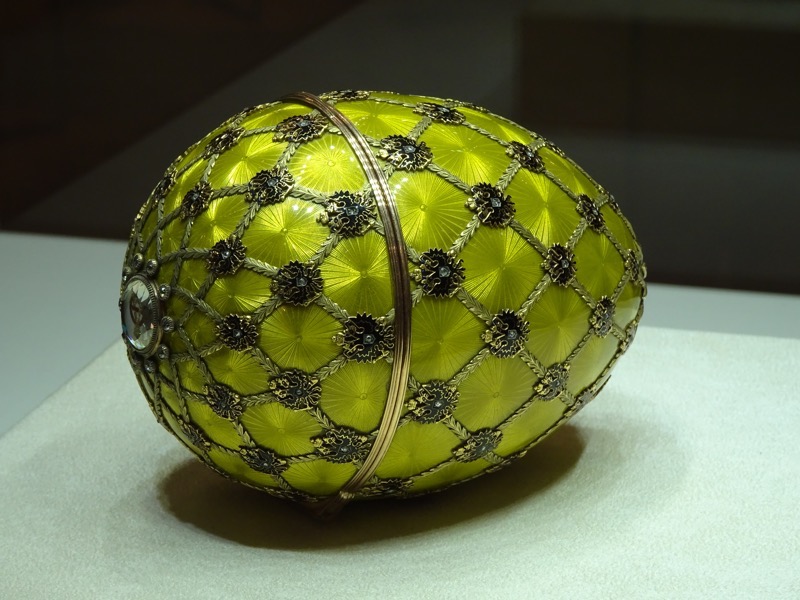 Cockerel Egg.
Cockerel Egg.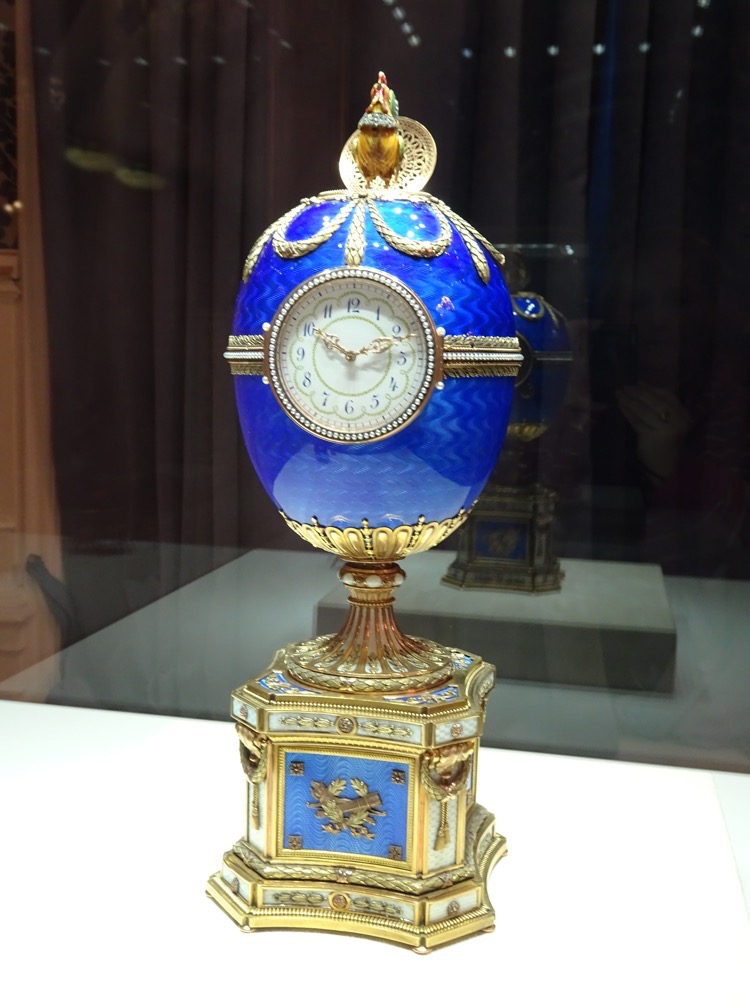
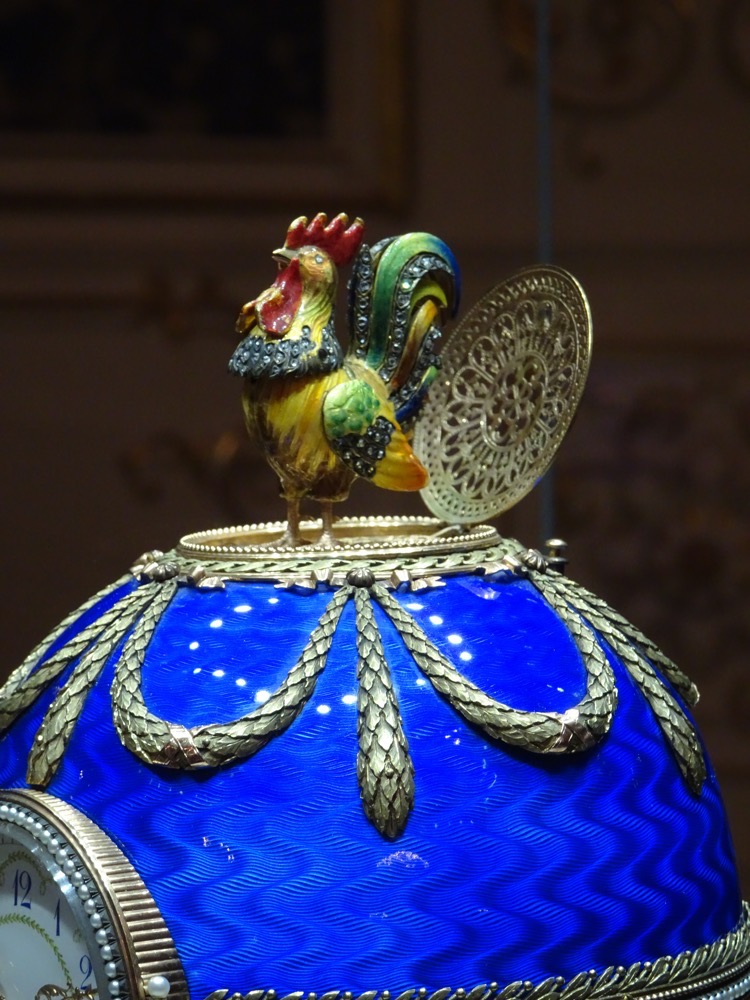
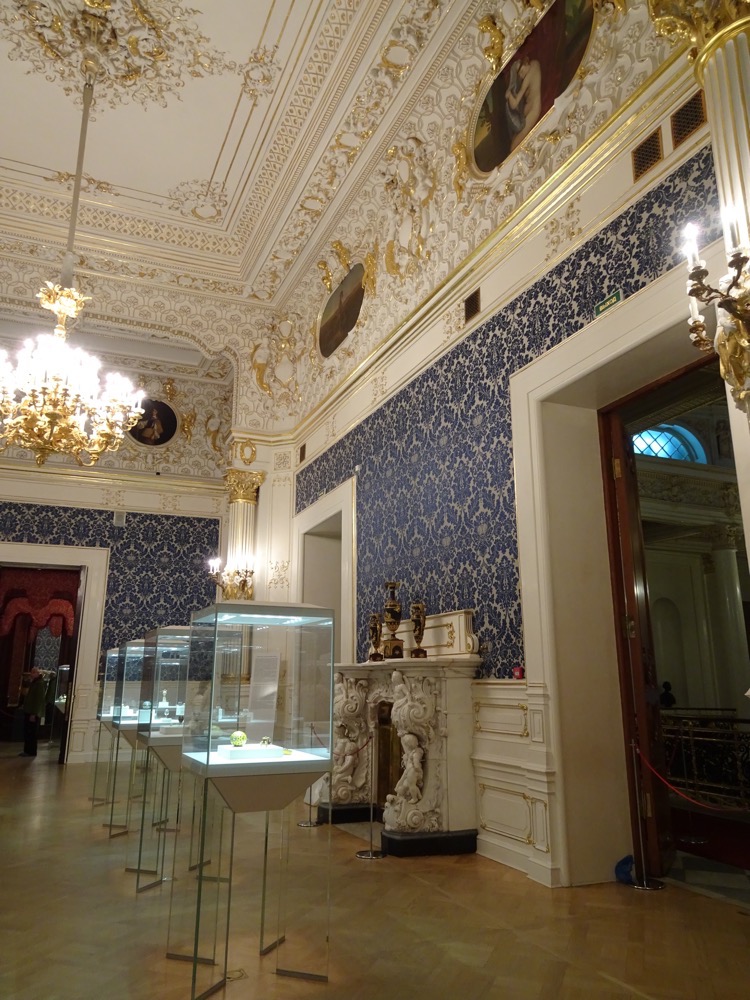 Gold Drawing Room
Gold Drawing Room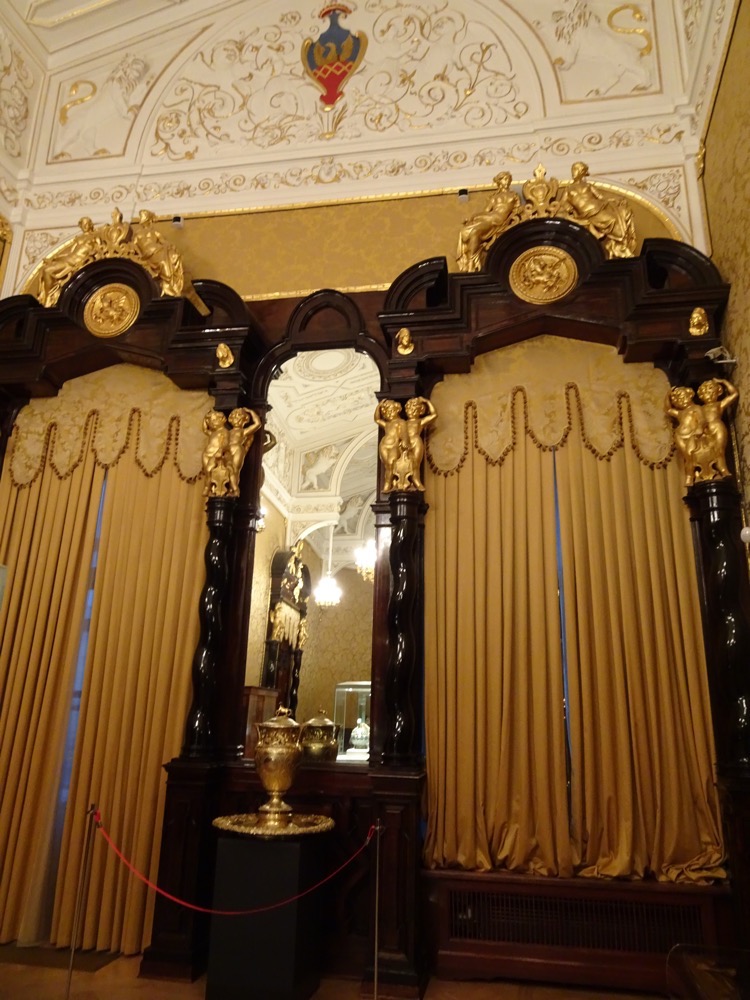
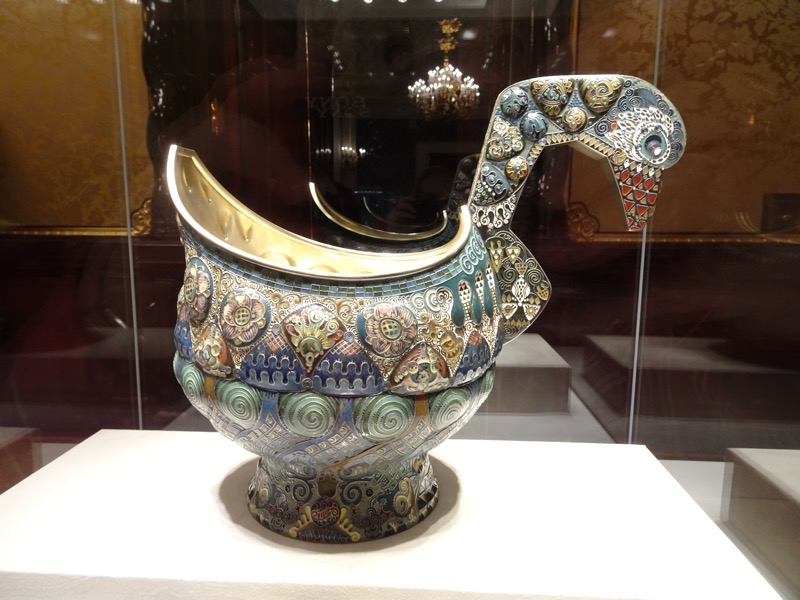
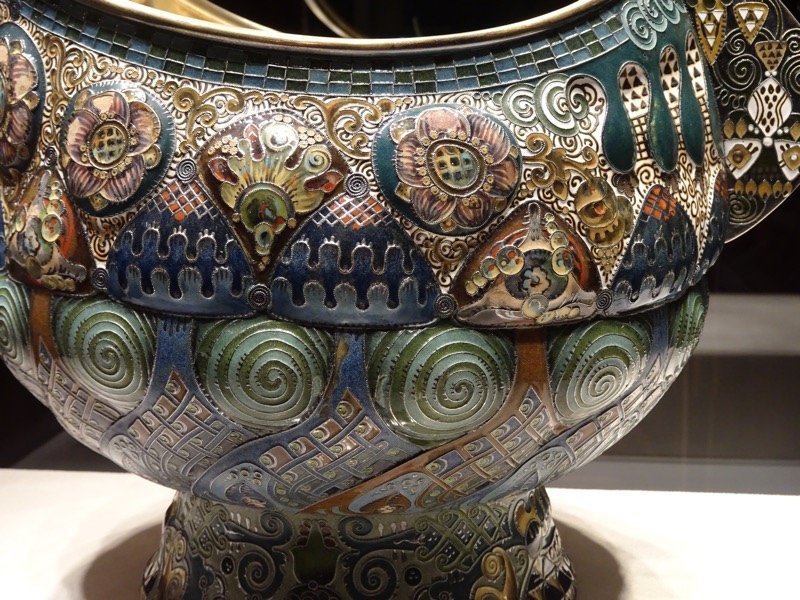
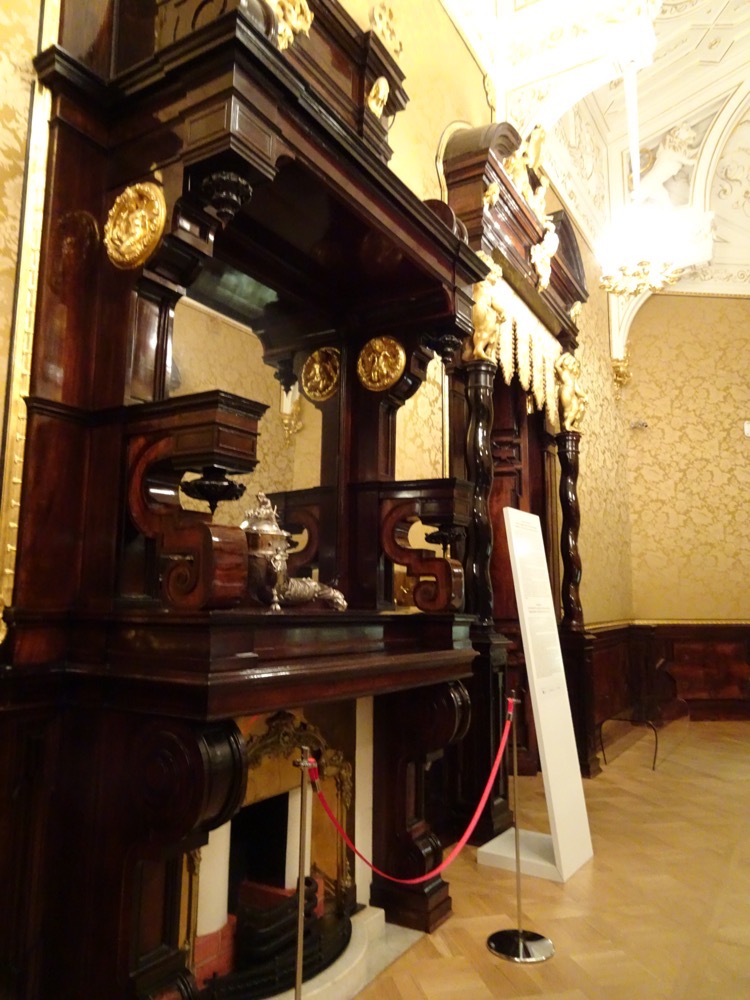
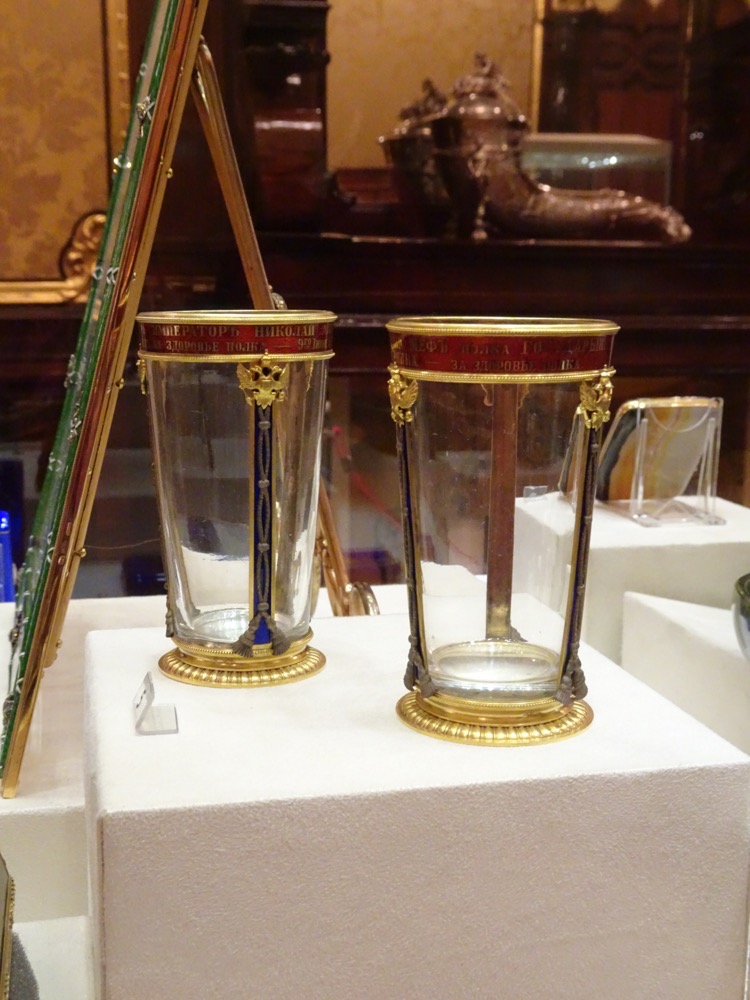
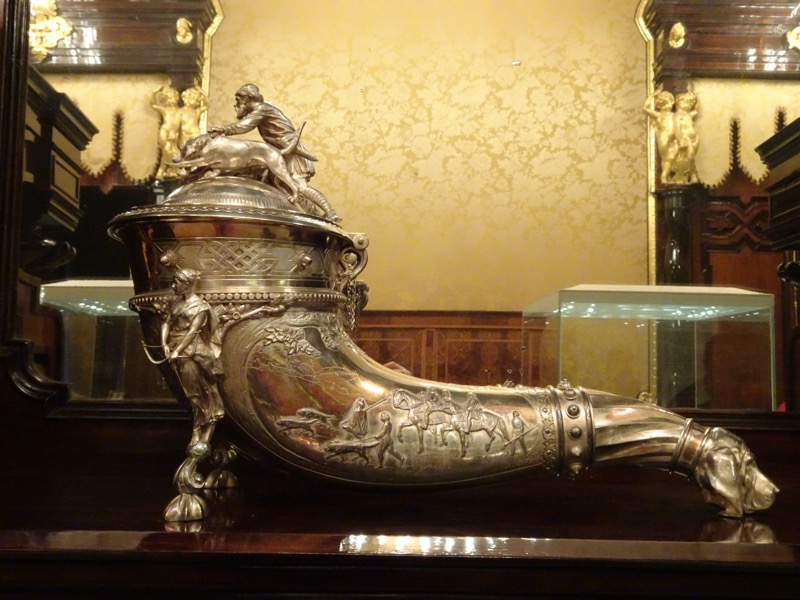 Malachite wax seal.
Malachite wax seal.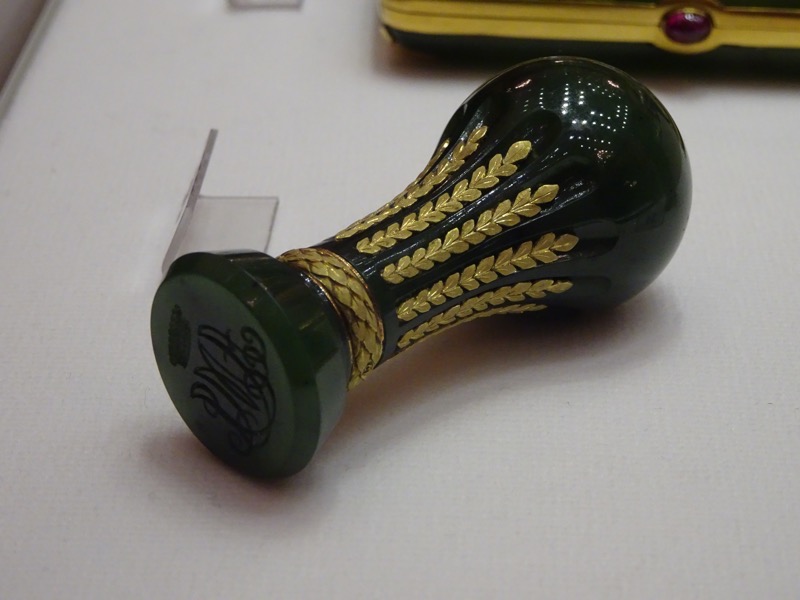
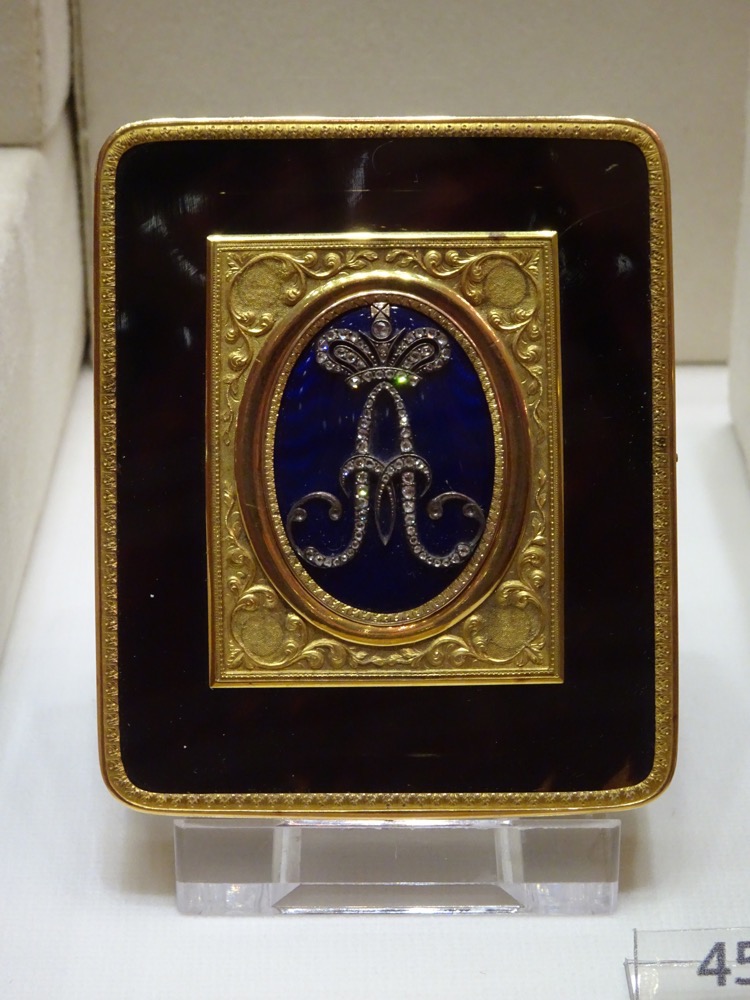 Cigarete boxes, card boxes, pill boxes etc.
Cigarete boxes, card boxes, pill boxes etc.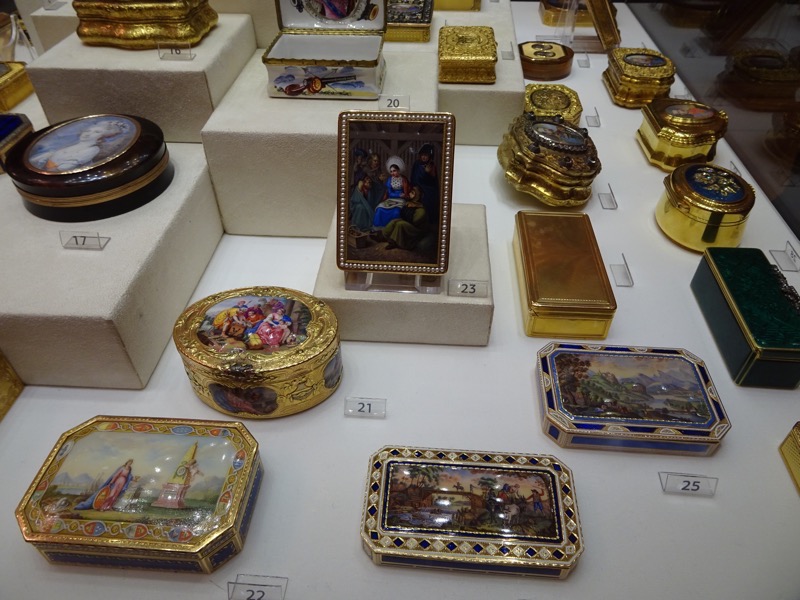
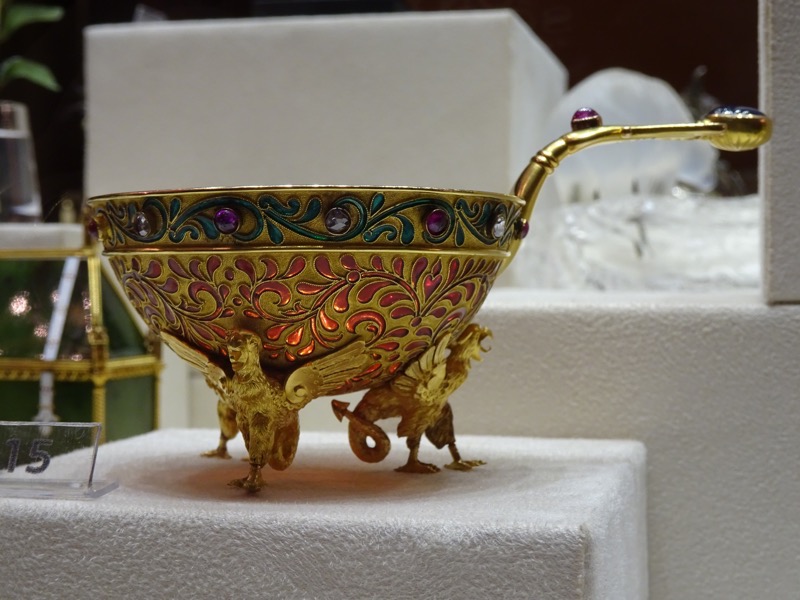
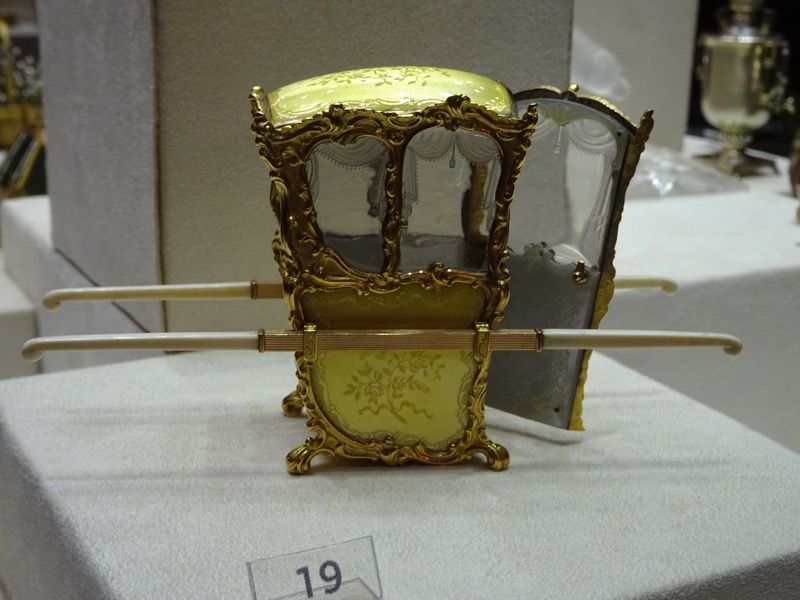 Salmon enamel work.
Salmon enamel work.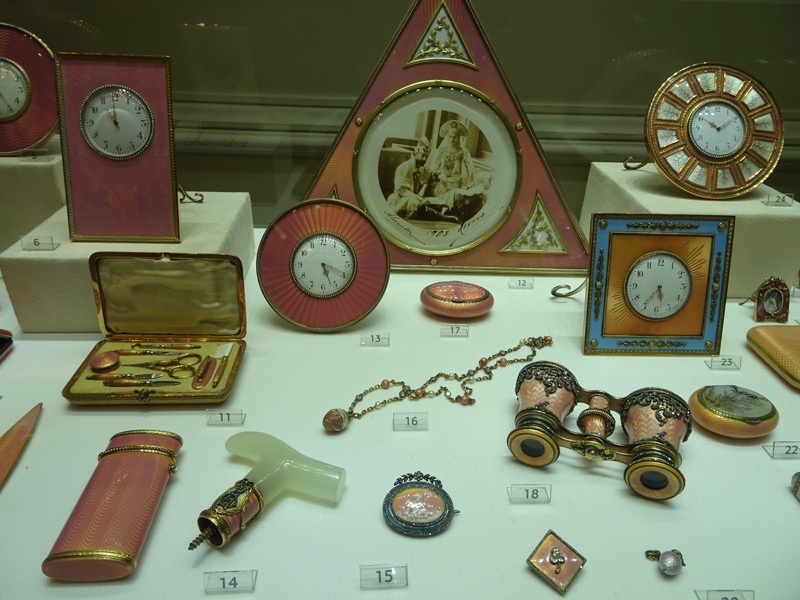
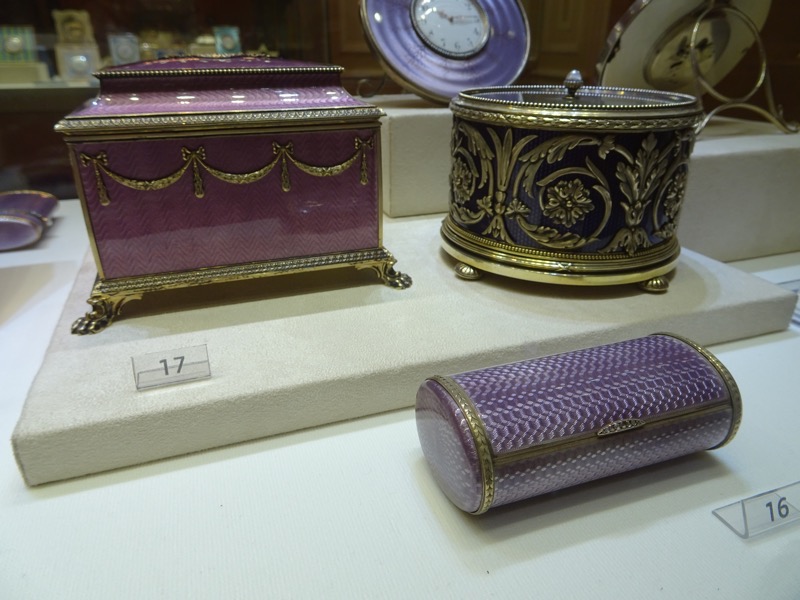
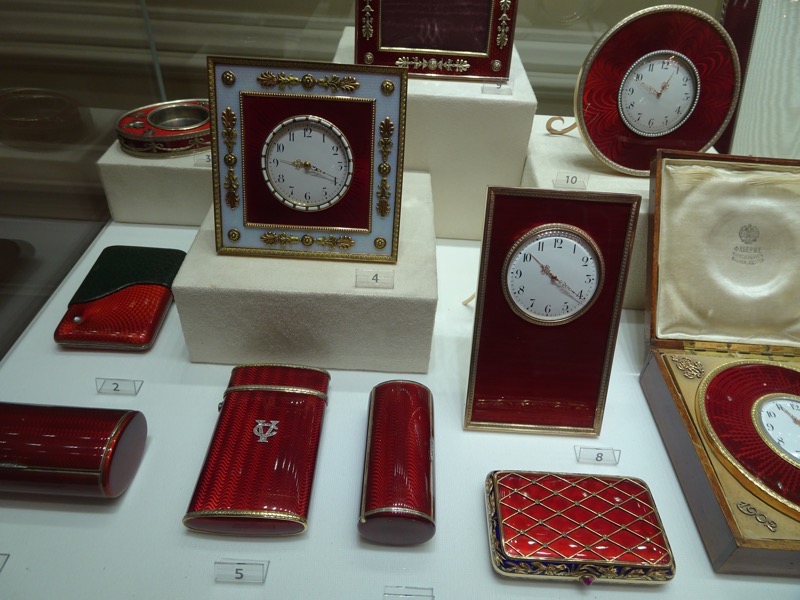
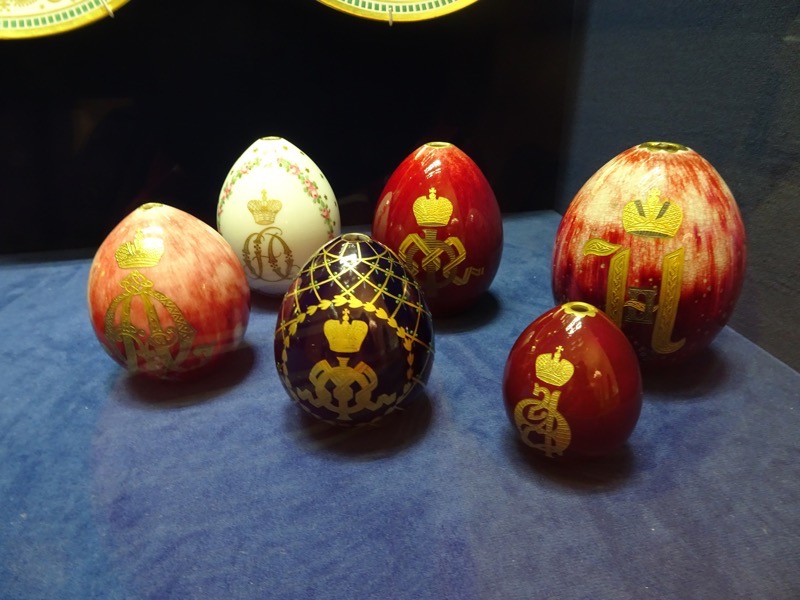
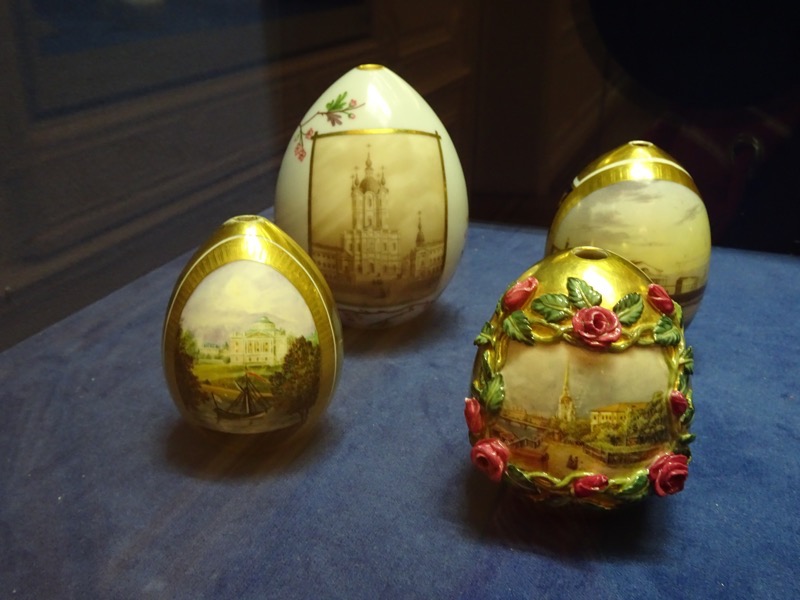
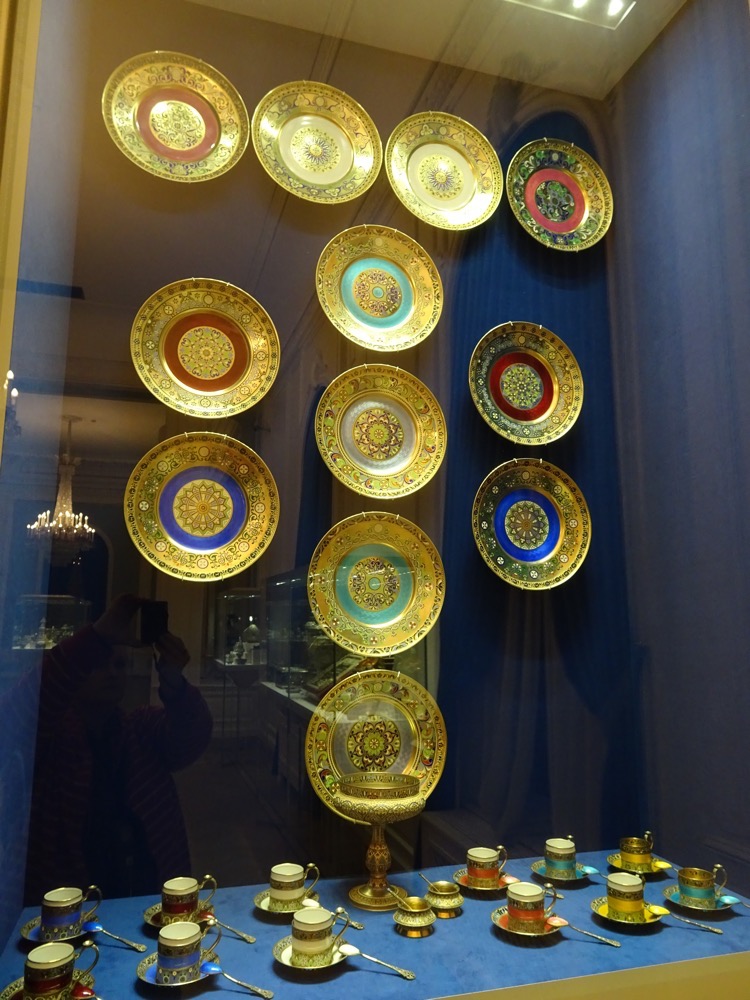
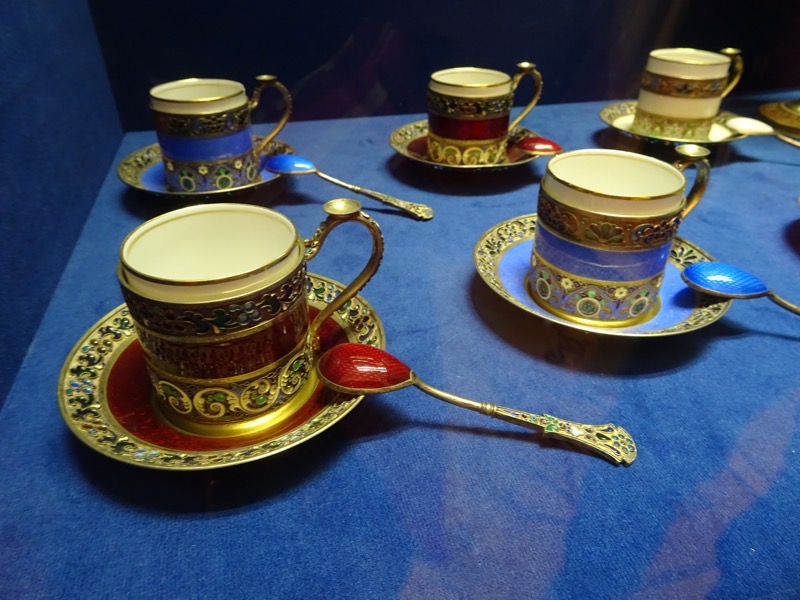
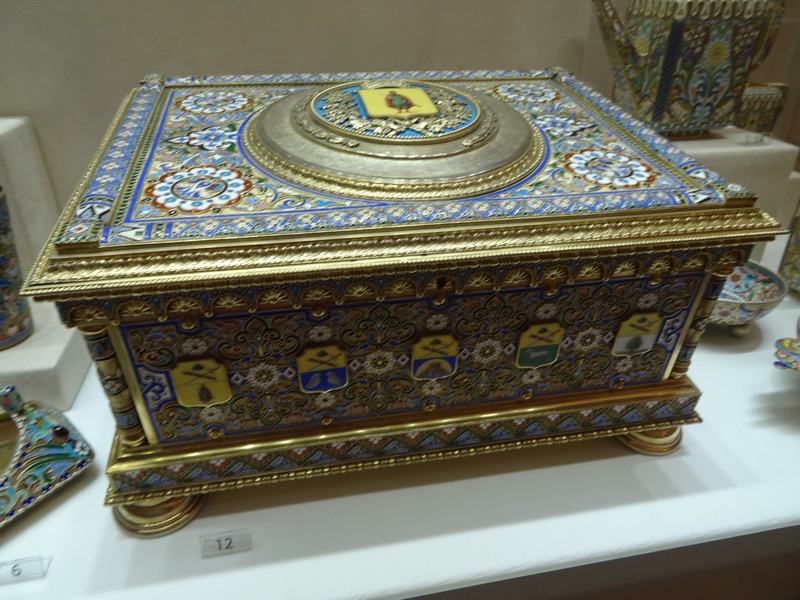
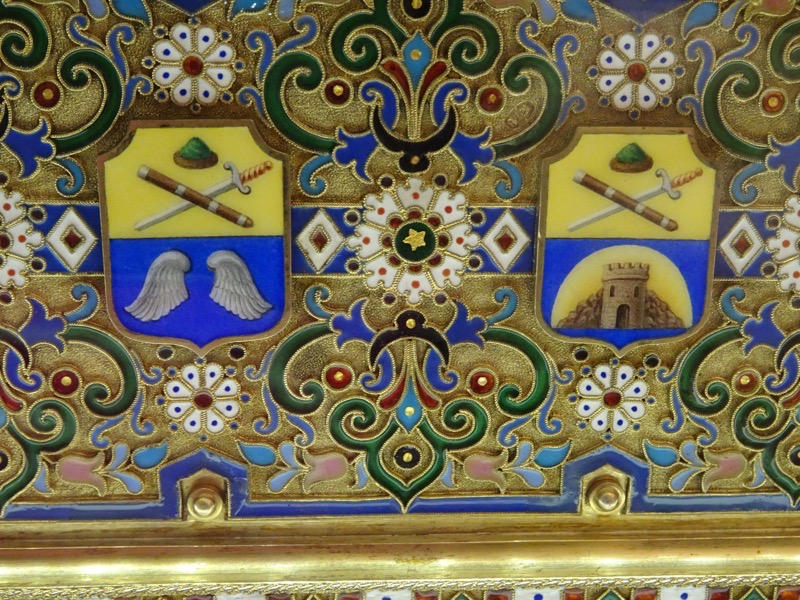
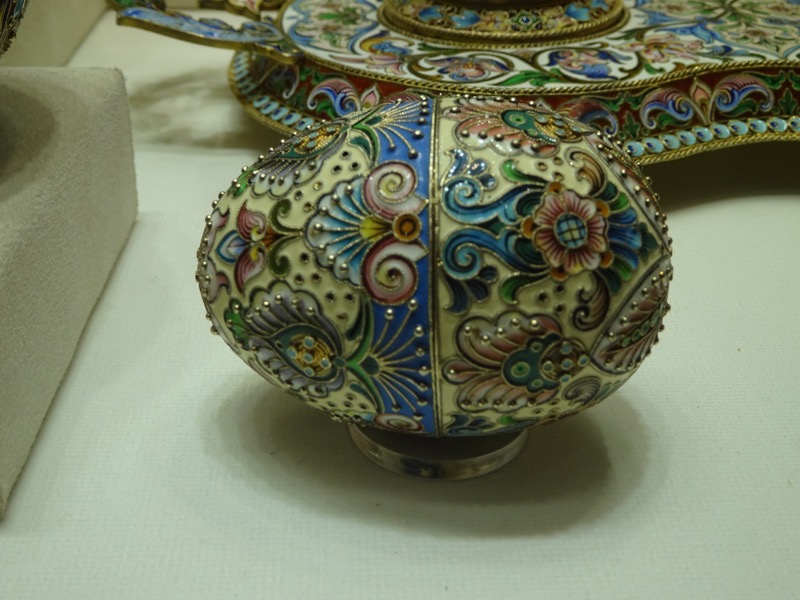
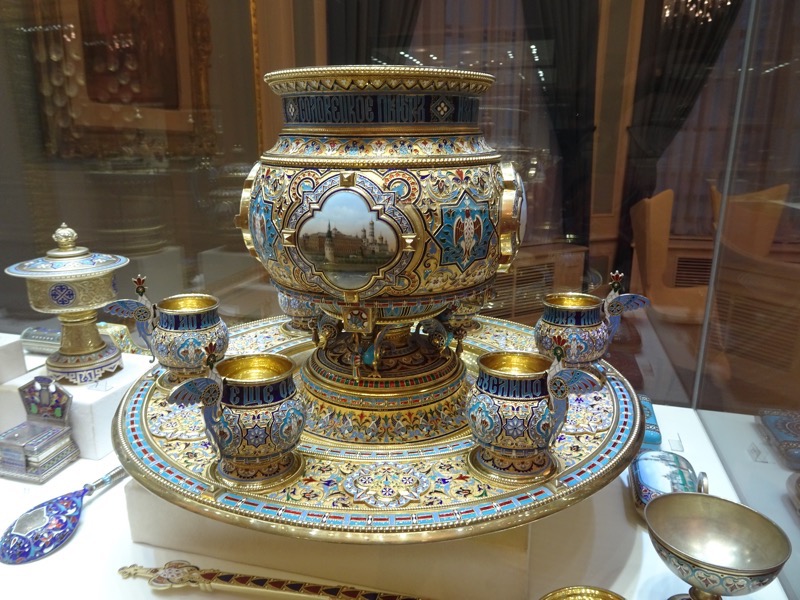
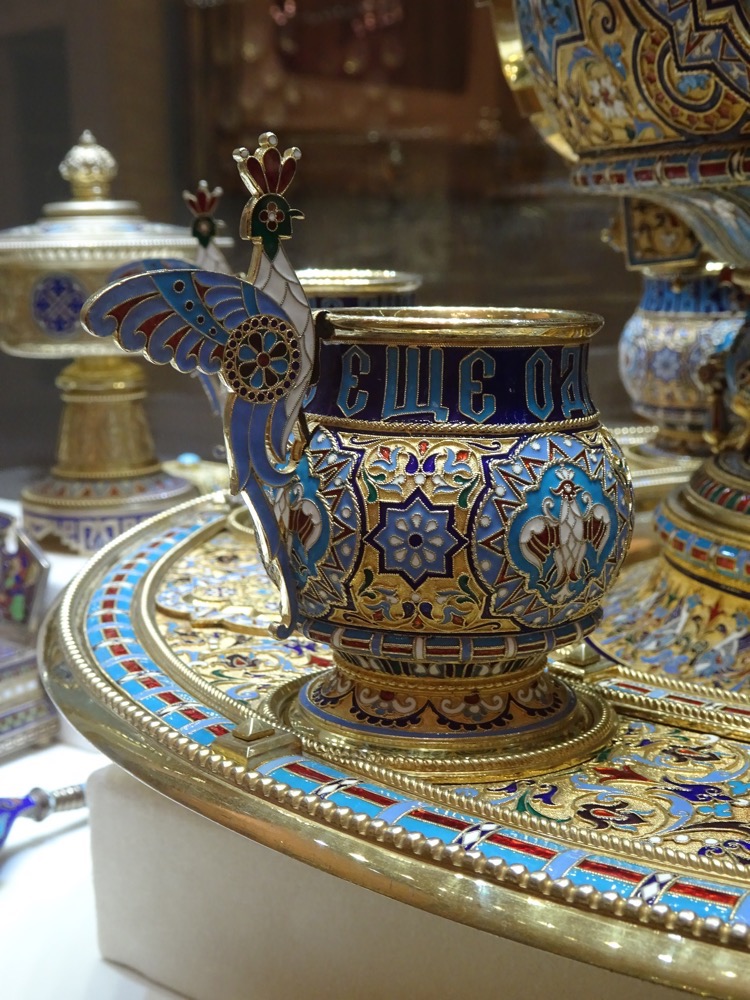
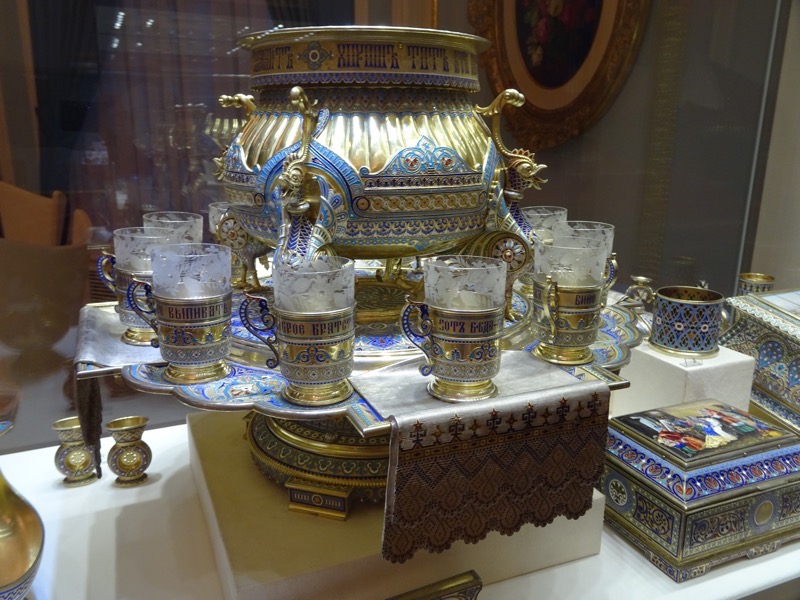
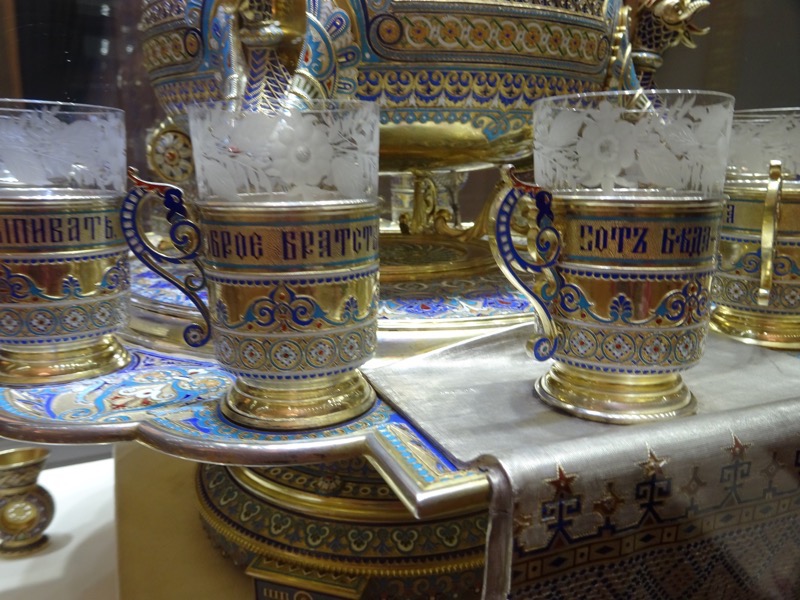
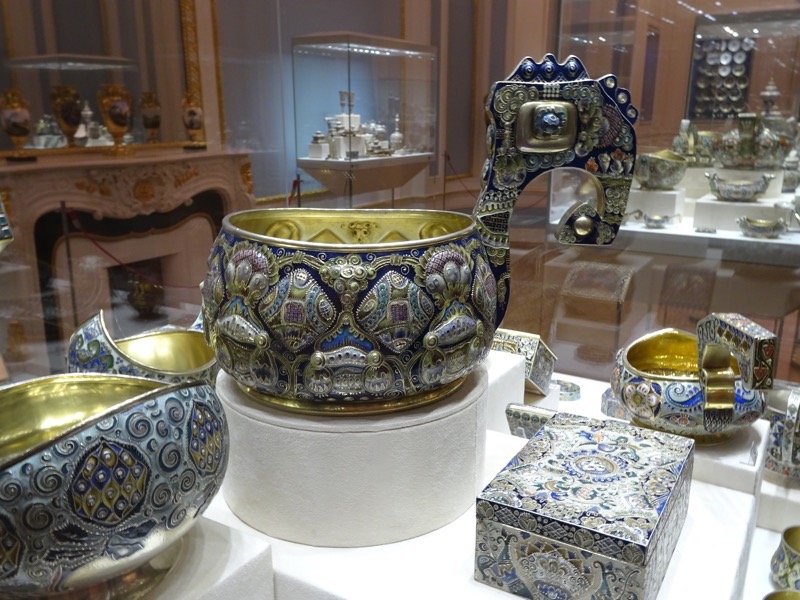
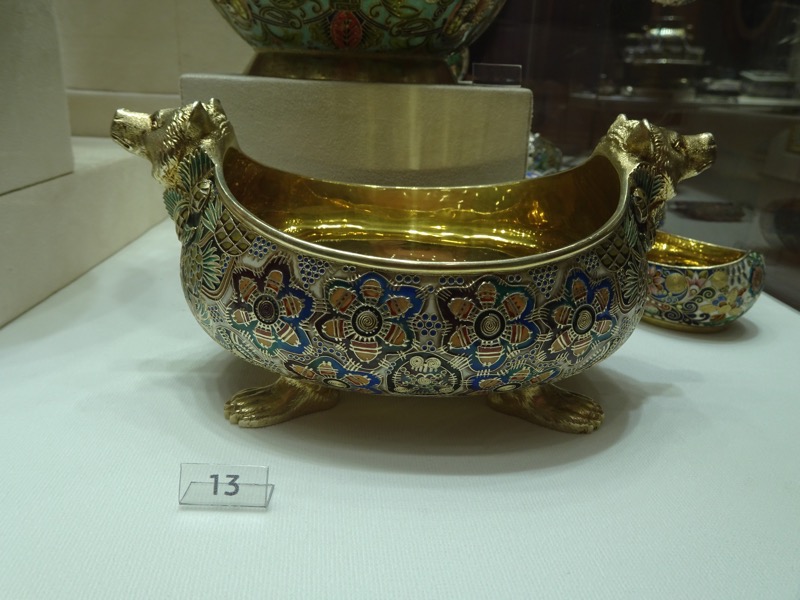
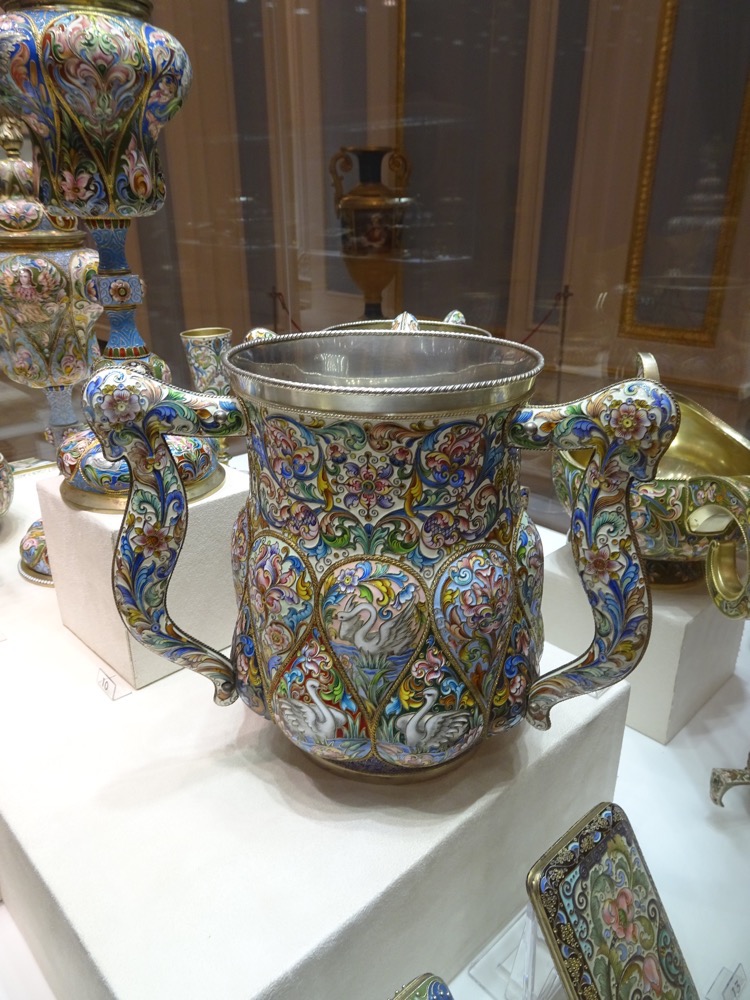
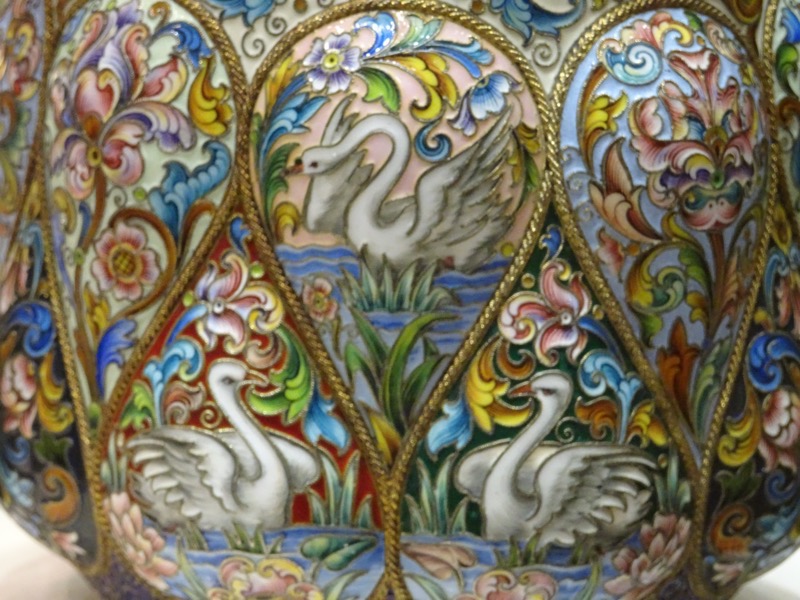
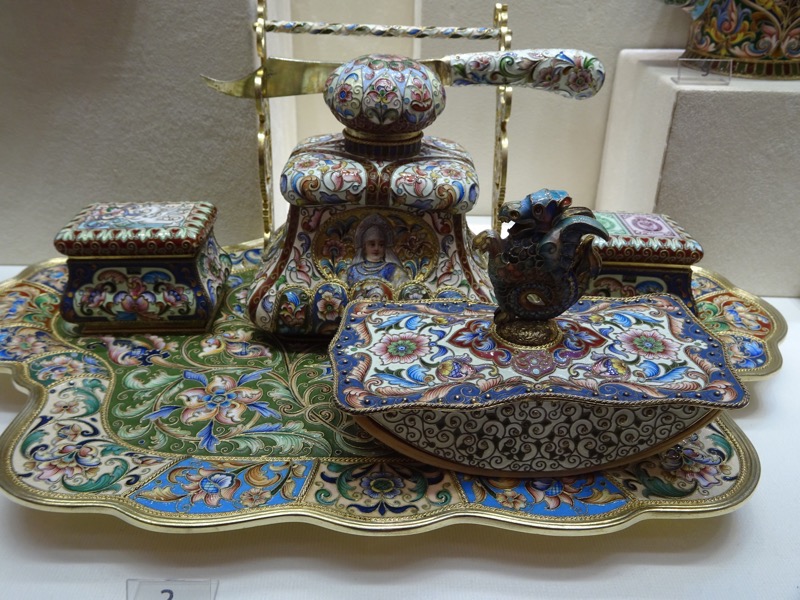
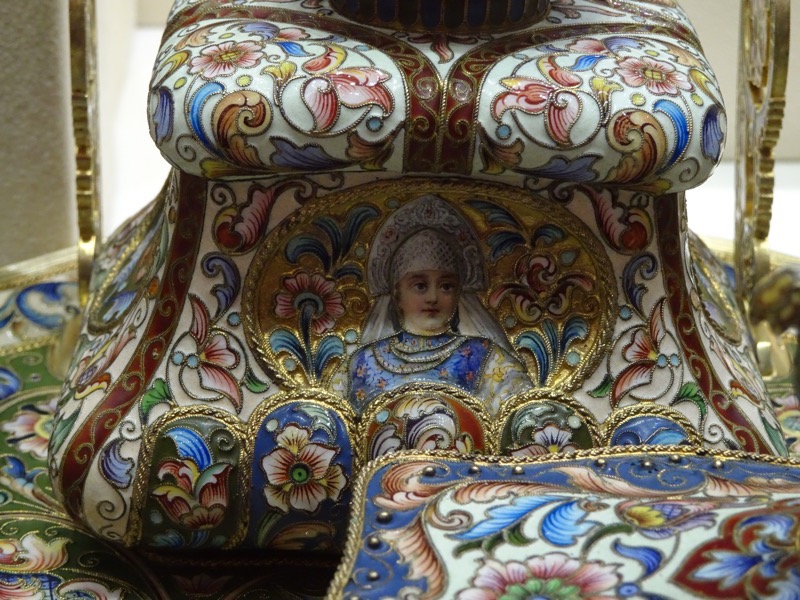 Imperial Fidget Spinner… just kidding, this was a bell. It used to have a metal dome that sat over central screw there, and was decorated with three enamel coins.
Imperial Fidget Spinner… just kidding, this was a bell. It used to have a metal dome that sat over central screw there, and was decorated with three enamel coins.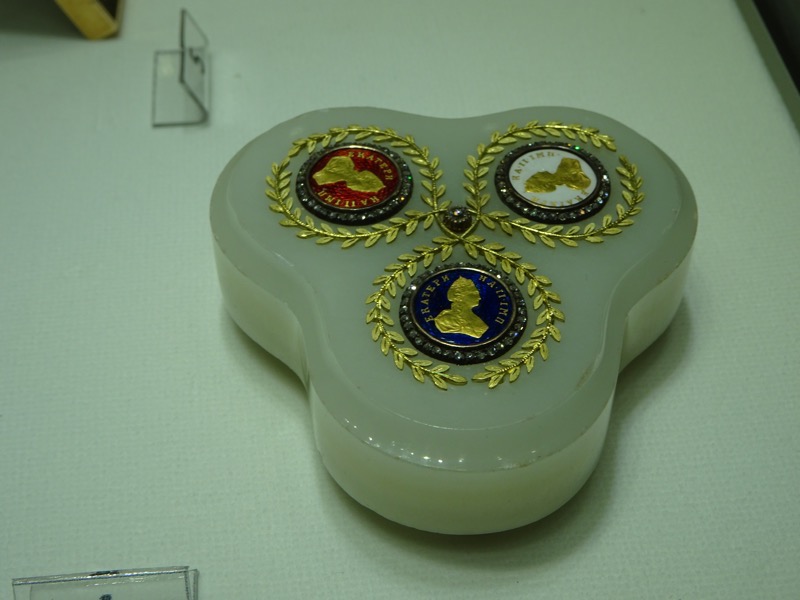
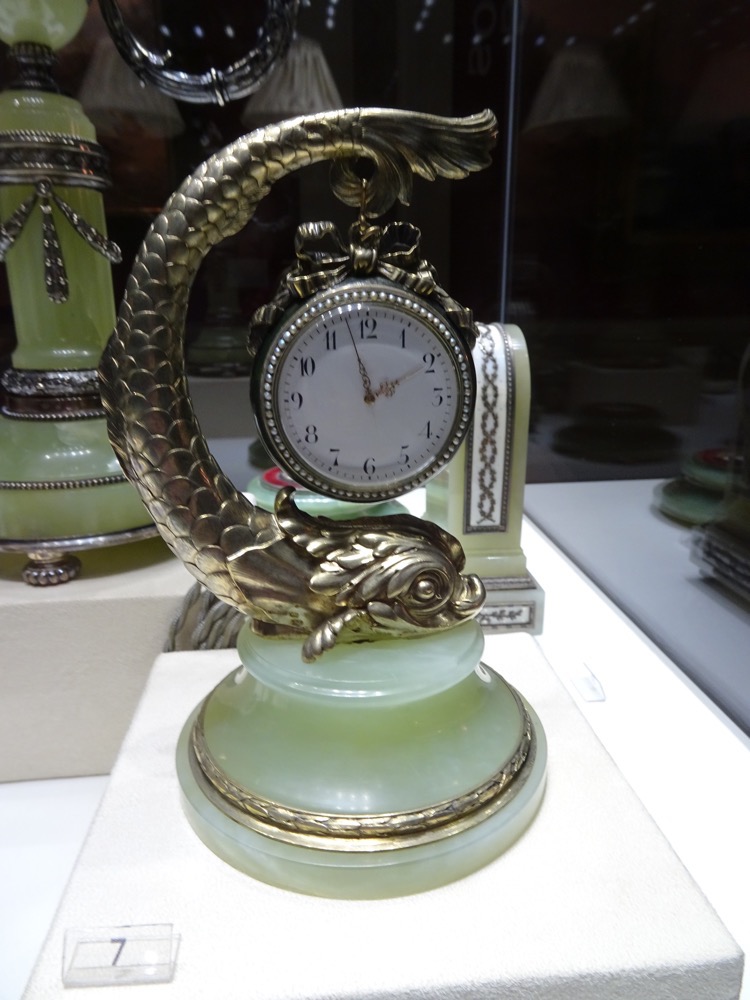 Gothic Room – most of these paintings were medeival in period, but were ‘added to’ with gold and silverwork and lavishly enameled.
Gothic Room – most of these paintings were medeival in period, but were ‘added to’ with gold and silverwork and lavishly enameled. 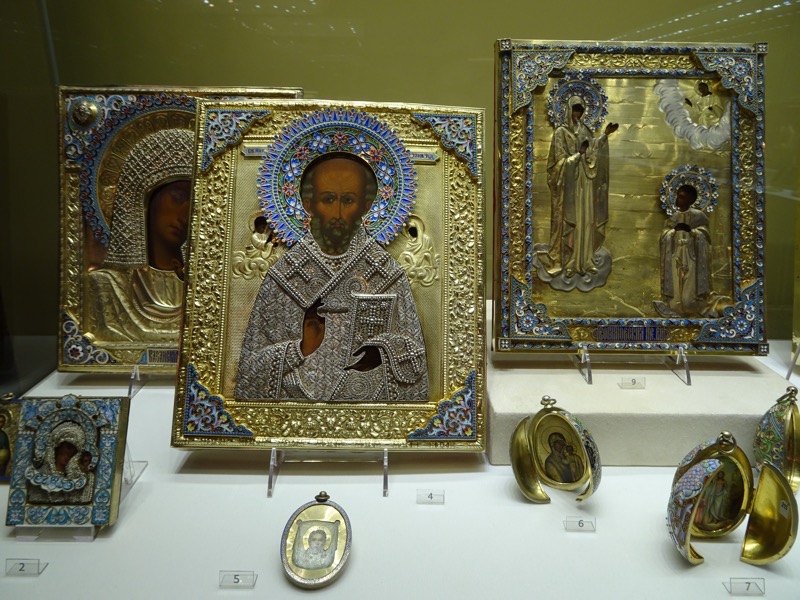
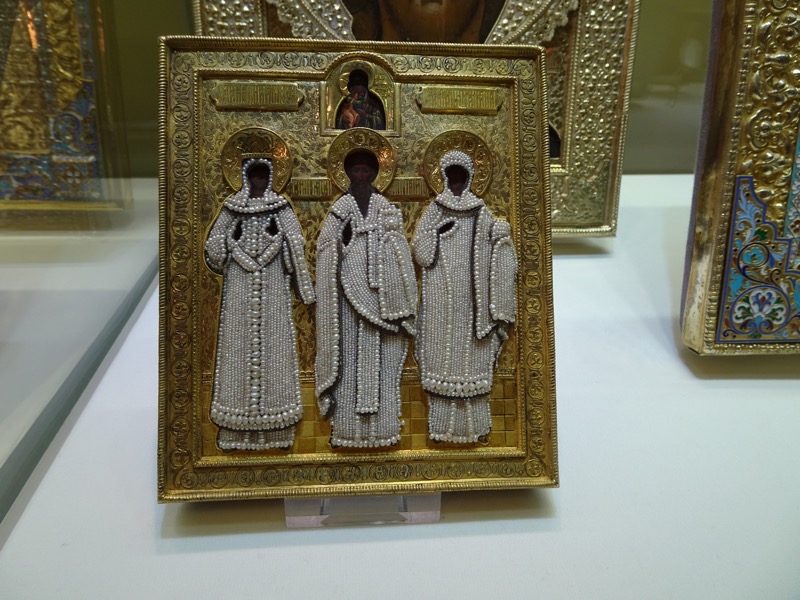
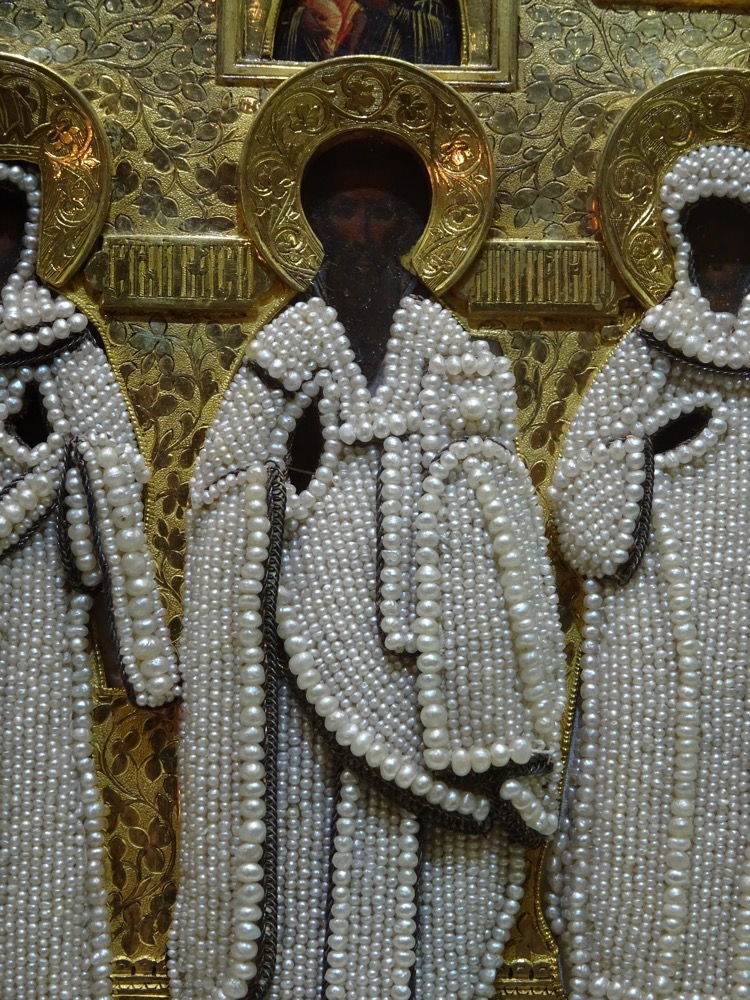
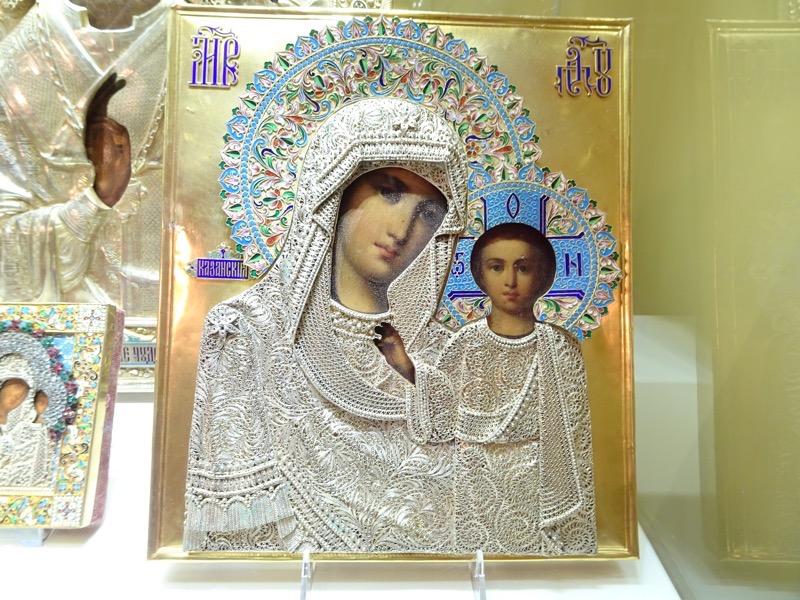
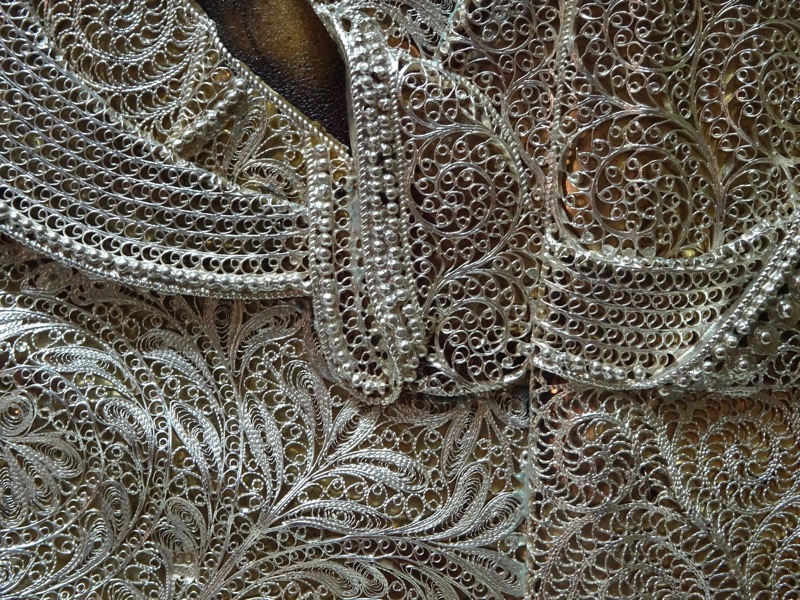
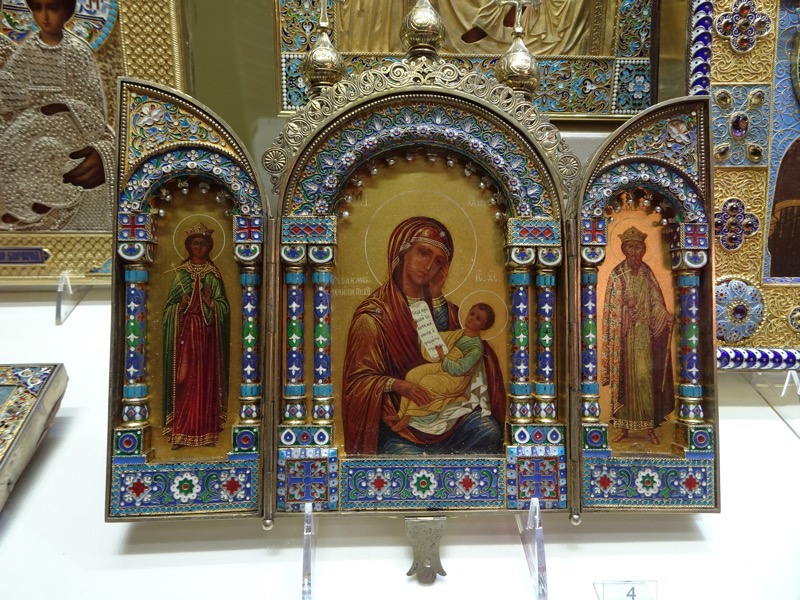
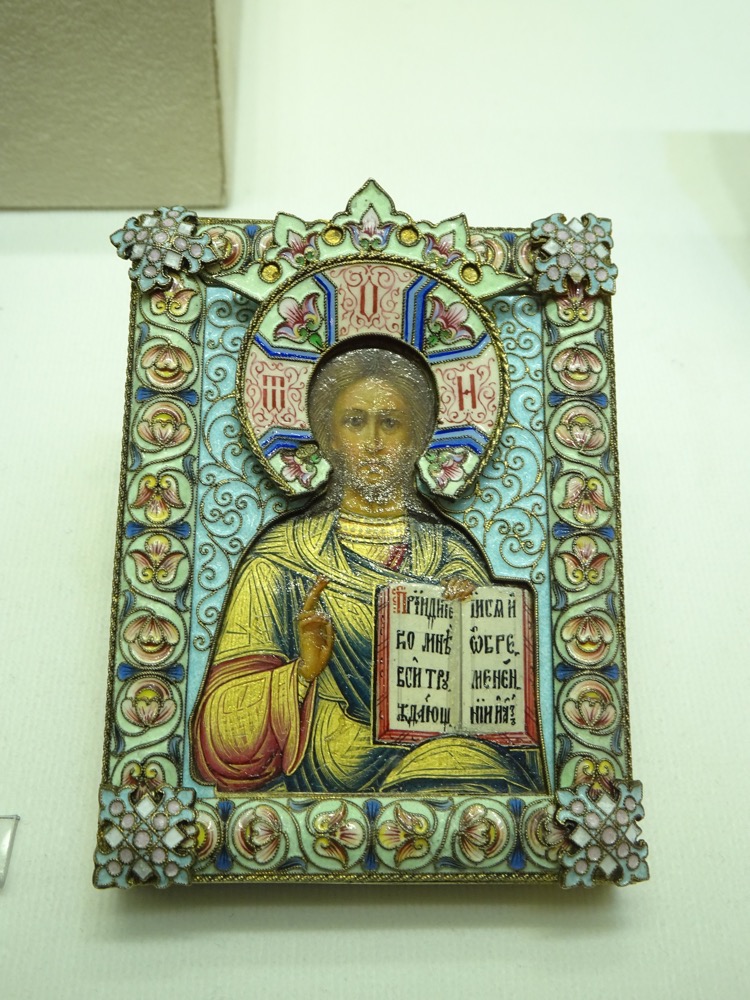
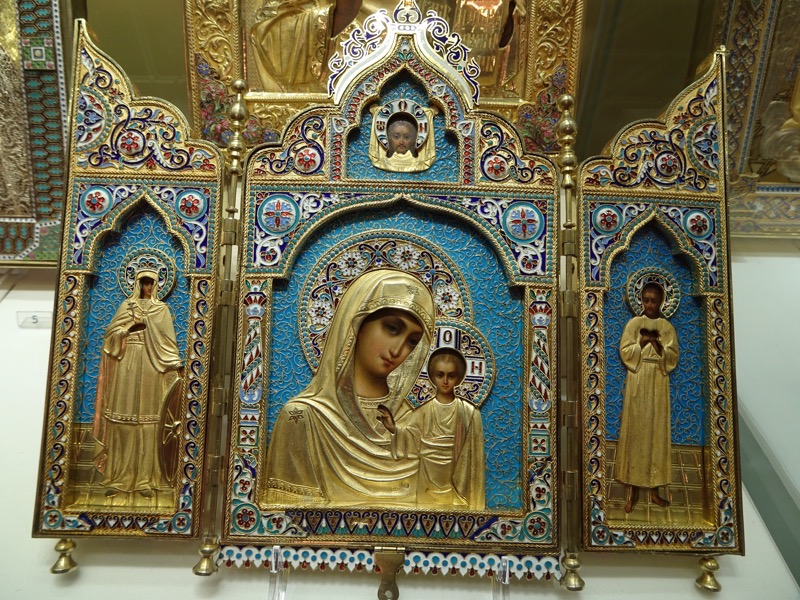
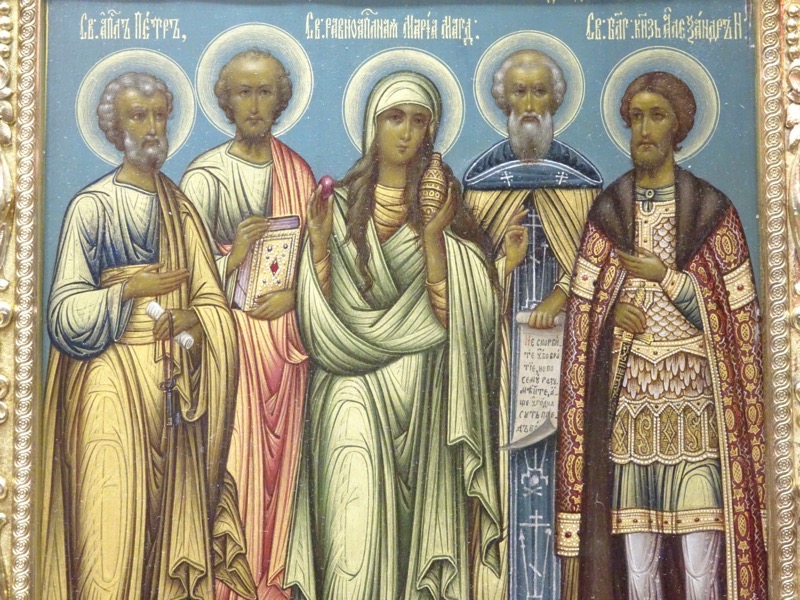 After the Faberge Museum, we drove back to the port. It was still raining and I attempted to take a photograph of a lighthouse that Mr K liked the look of… as you can see that was spectacualarly unsuccessful, but I kinda liked the image, it summed up out day – lots to see but it was pretty damn wet out!
After the Faberge Museum, we drove back to the port. It was still raining and I attempted to take a photograph of a lighthouse that Mr K liked the look of… as you can see that was spectacualarly unsuccessful, but I kinda liked the image, it summed up out day – lots to see but it was pretty damn wet out!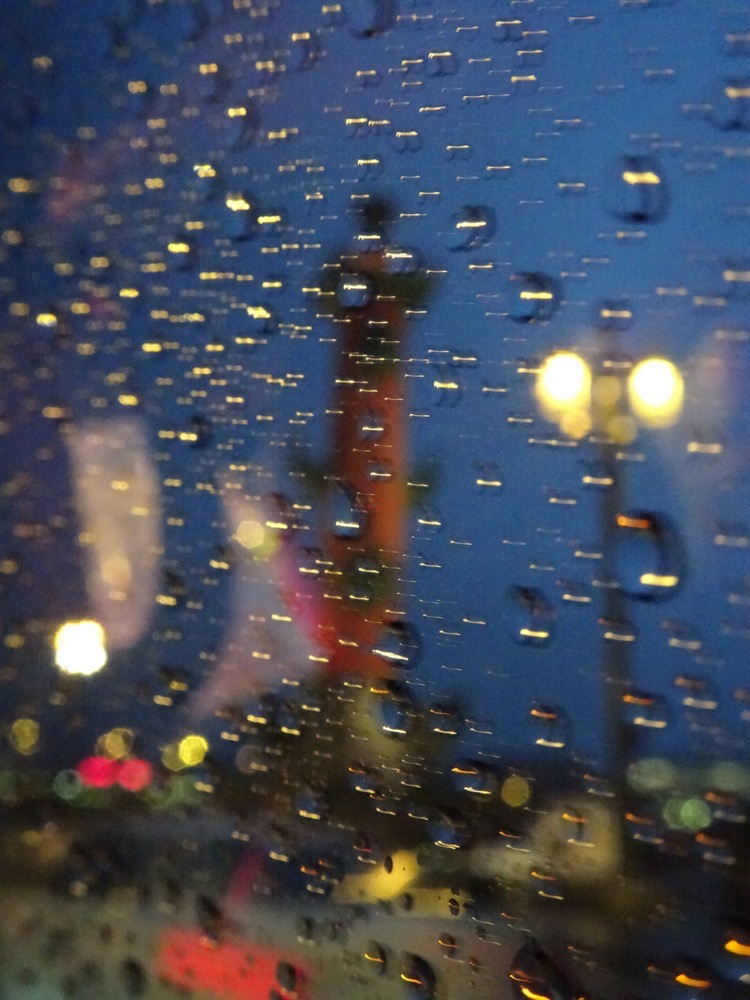 Tomorrow we have another big day – I have rushed this post so I don’t fall behind, but I am hoping to come back to it once we have our next sea day. 🙂
Tomorrow we have another big day – I have rushed this post so I don’t fall behind, but I am hoping to come back to it once we have our next sea day. 🙂